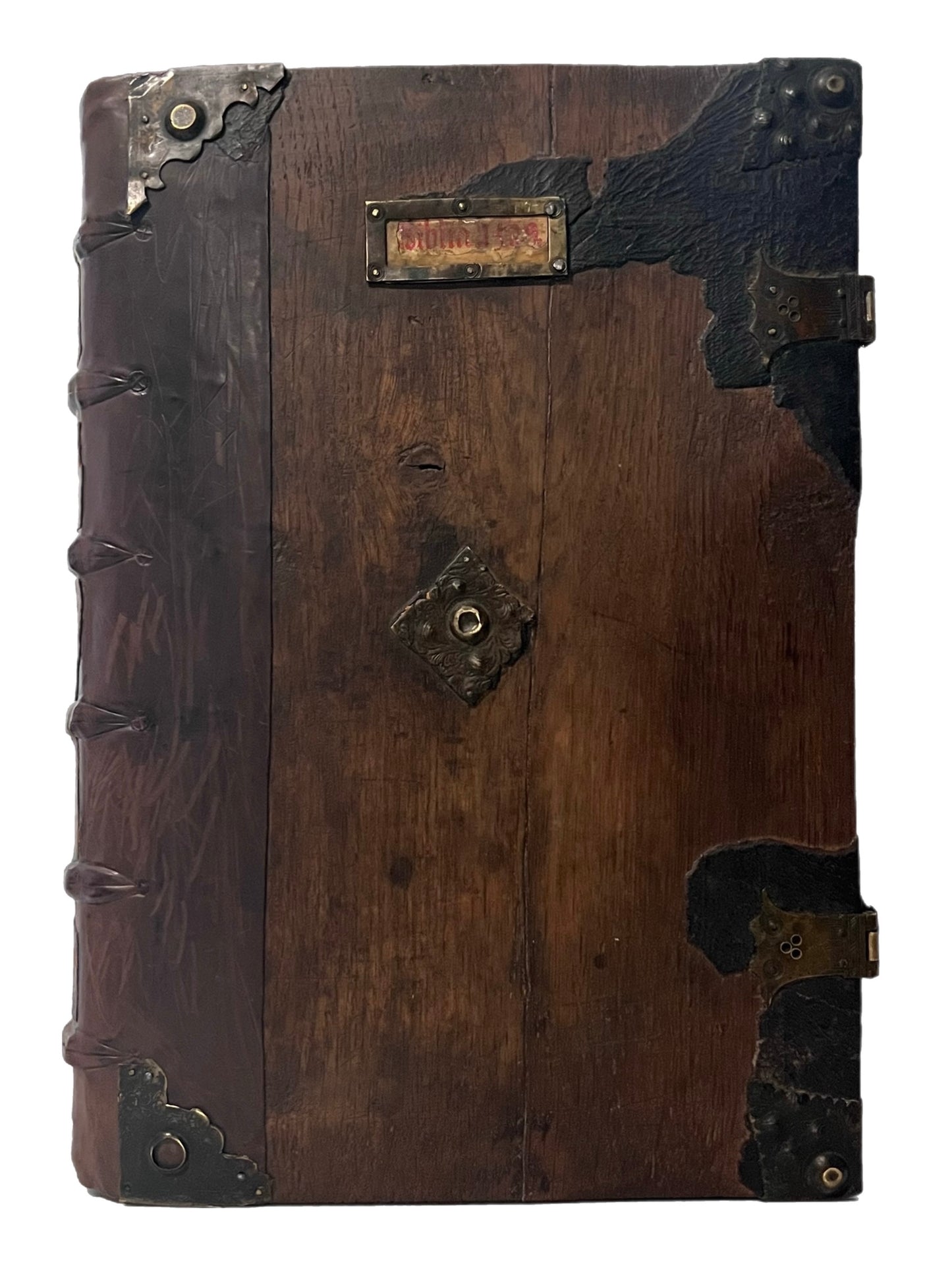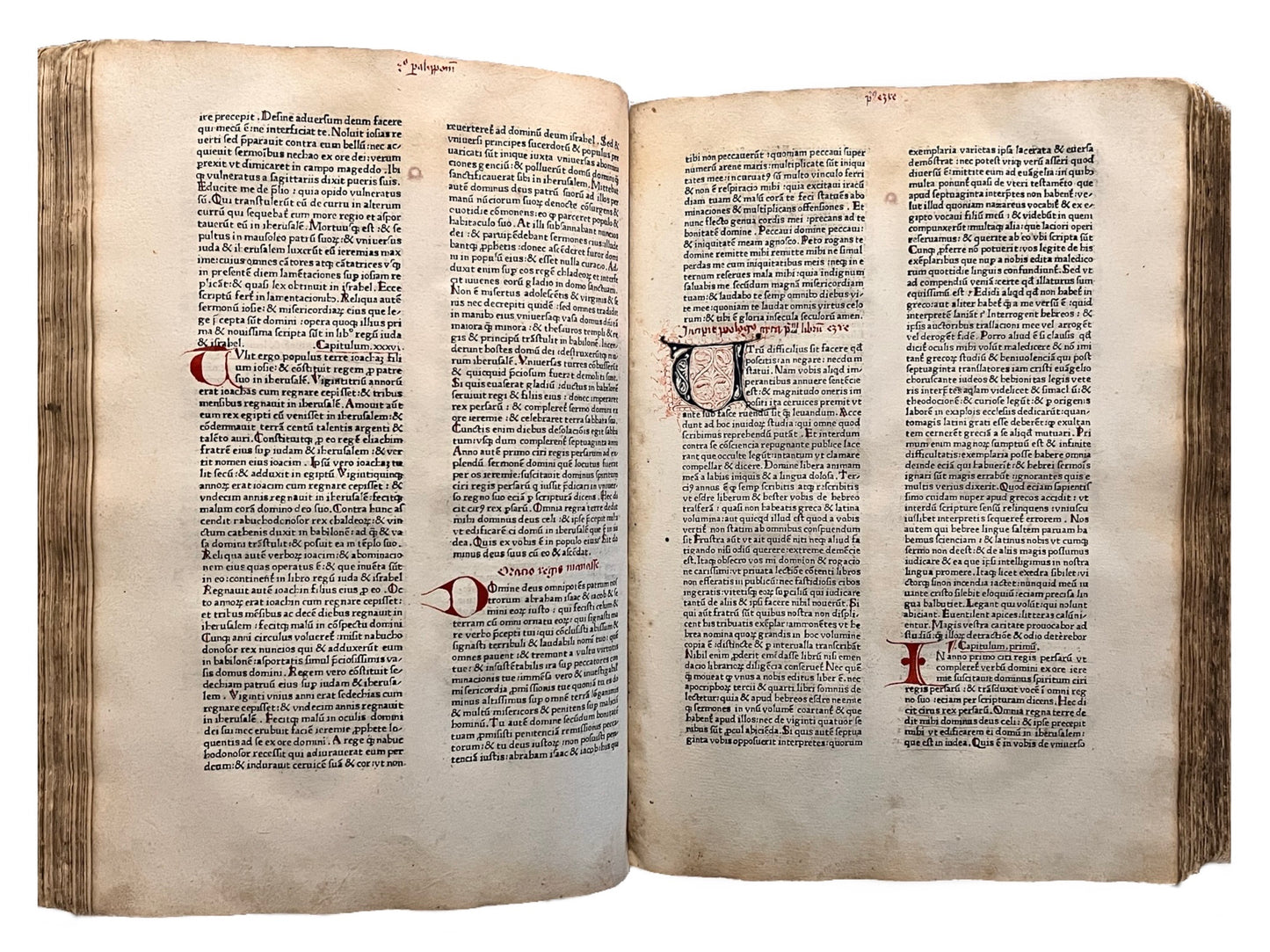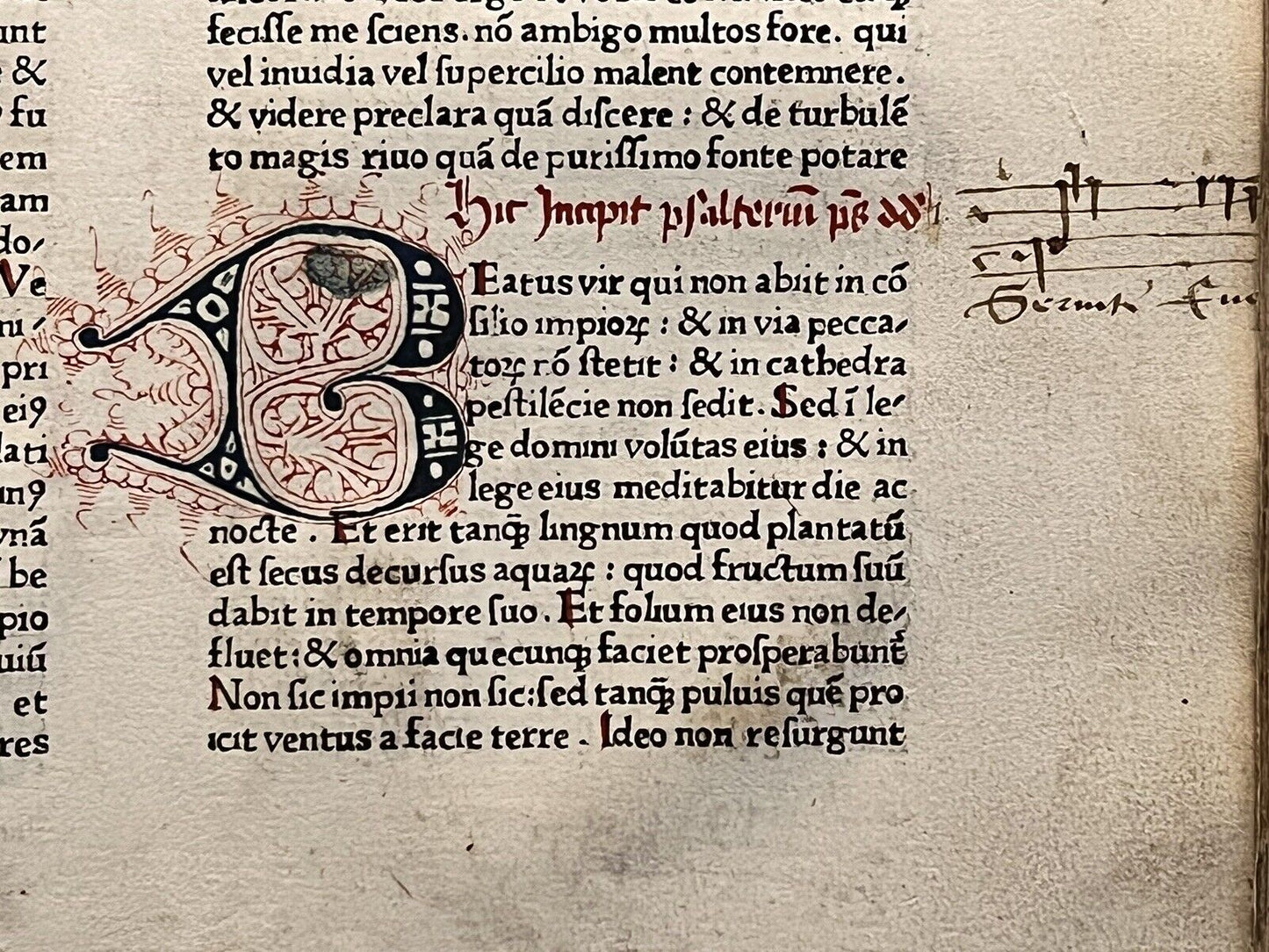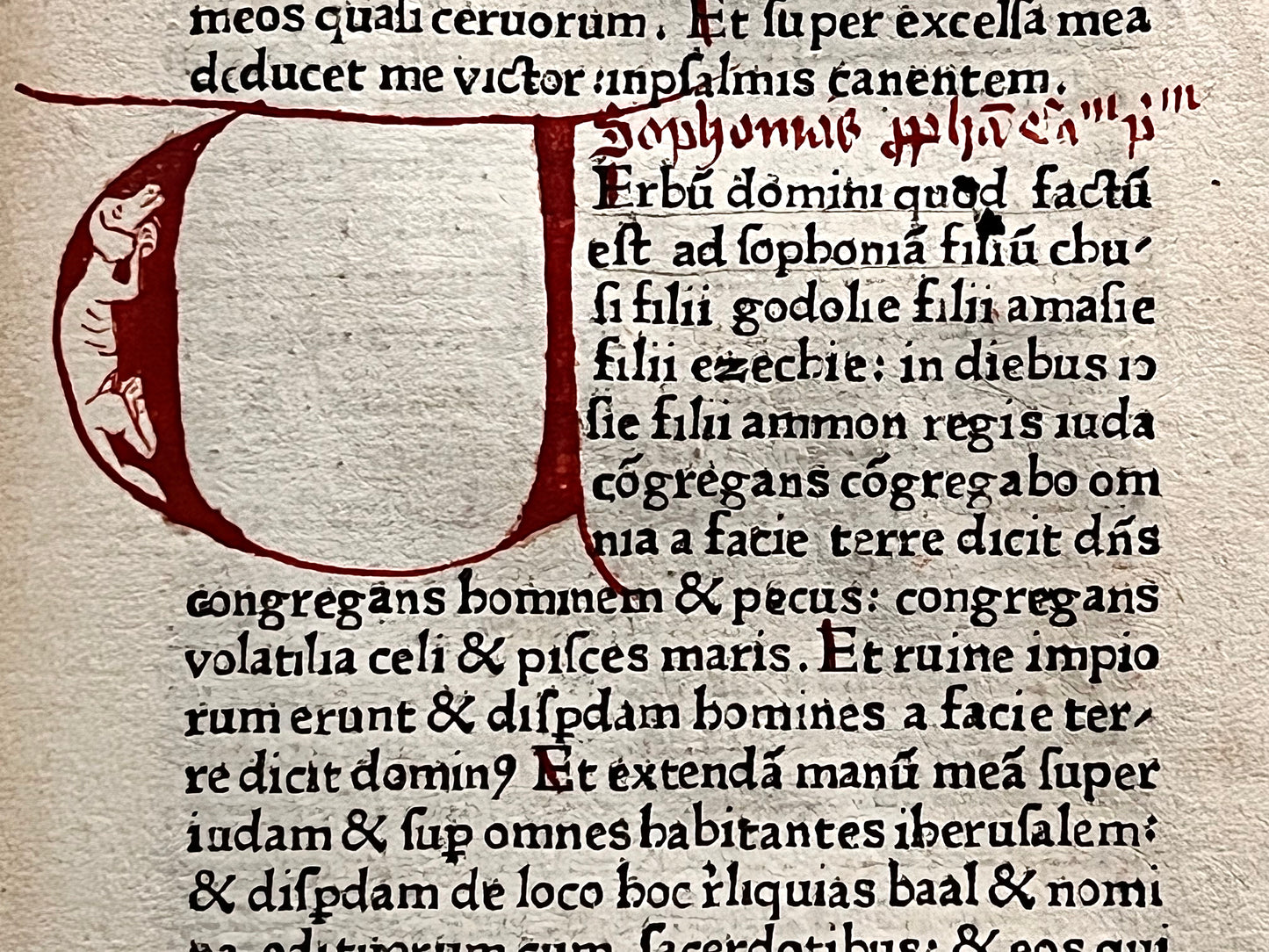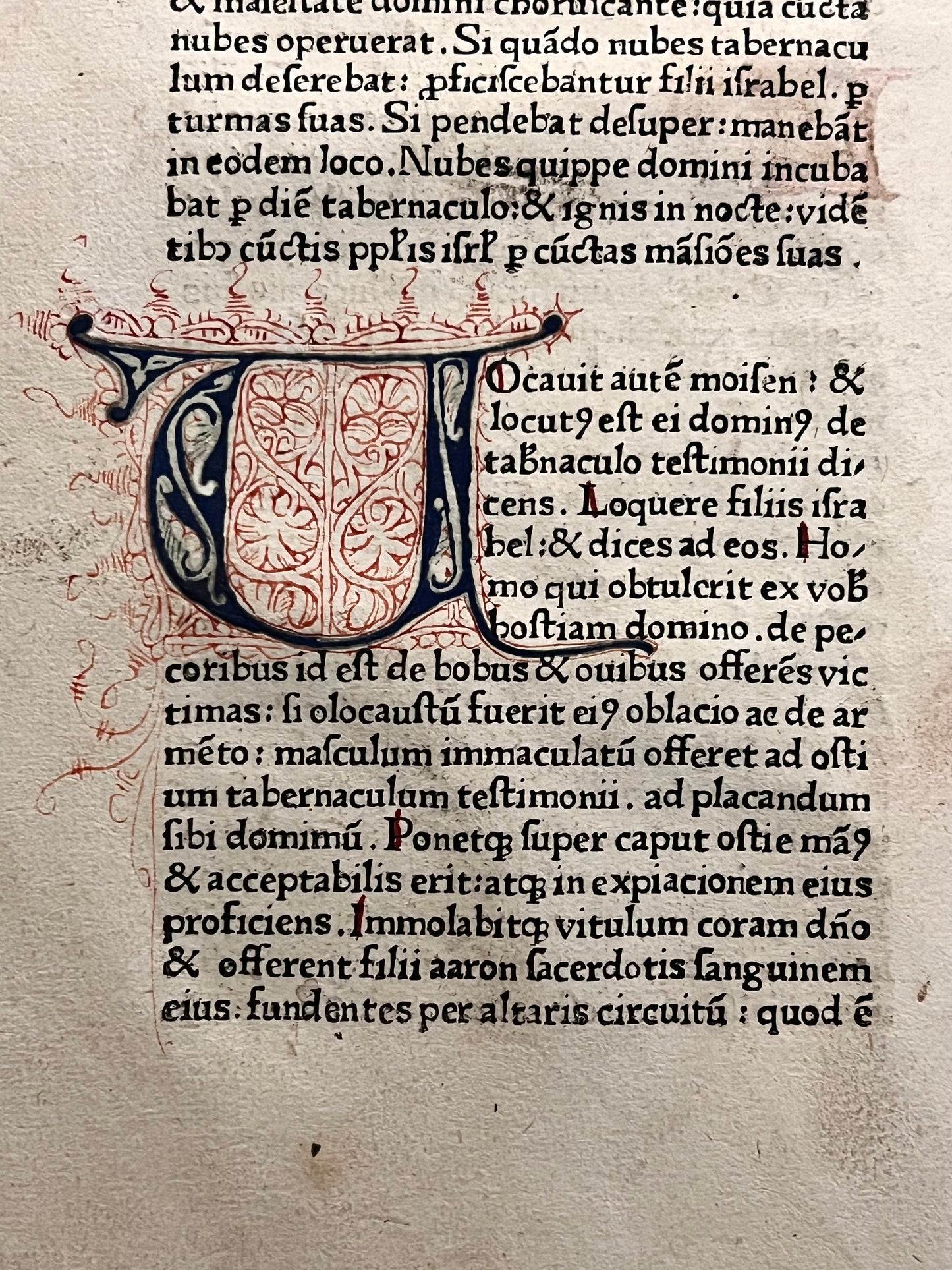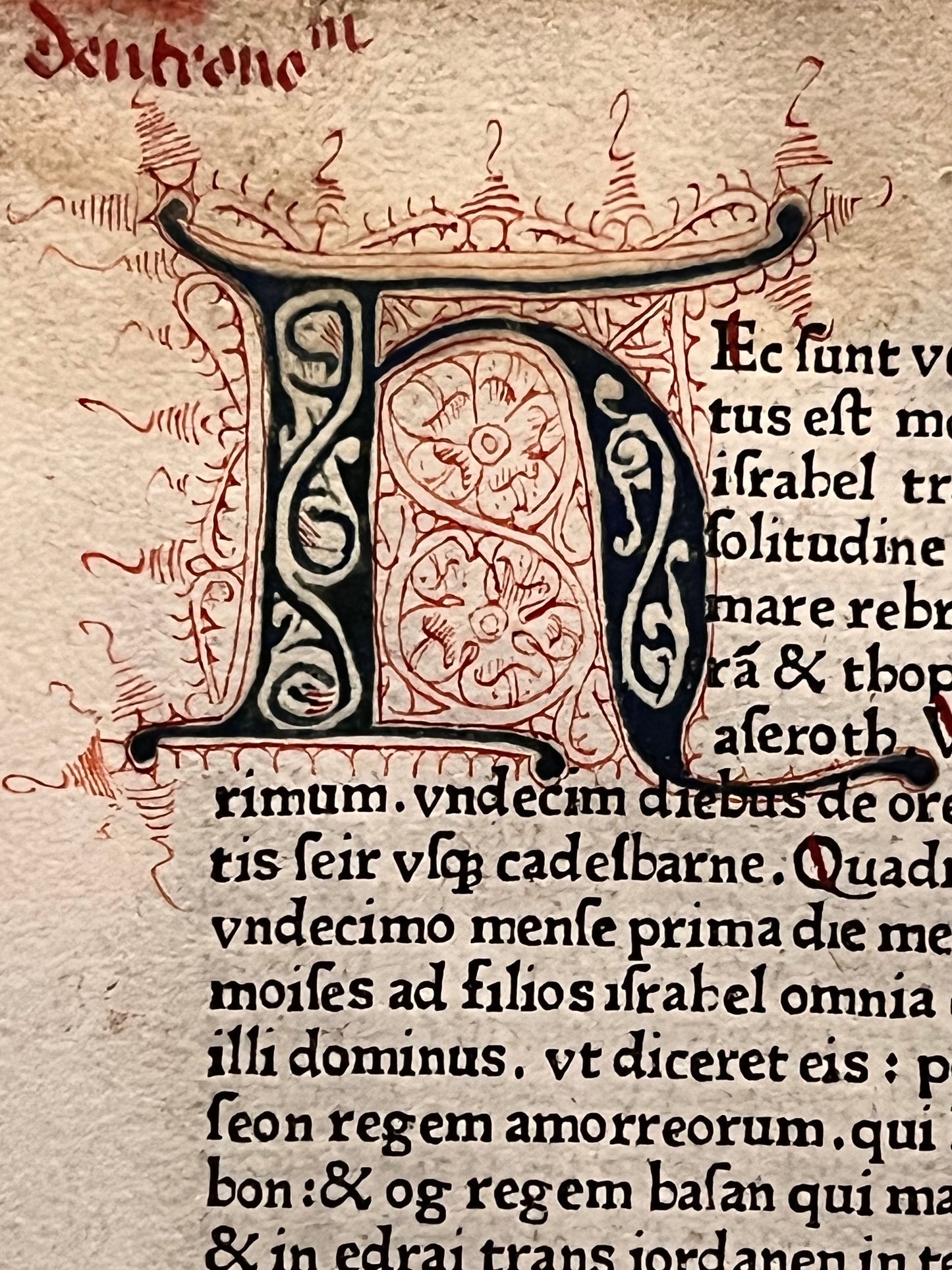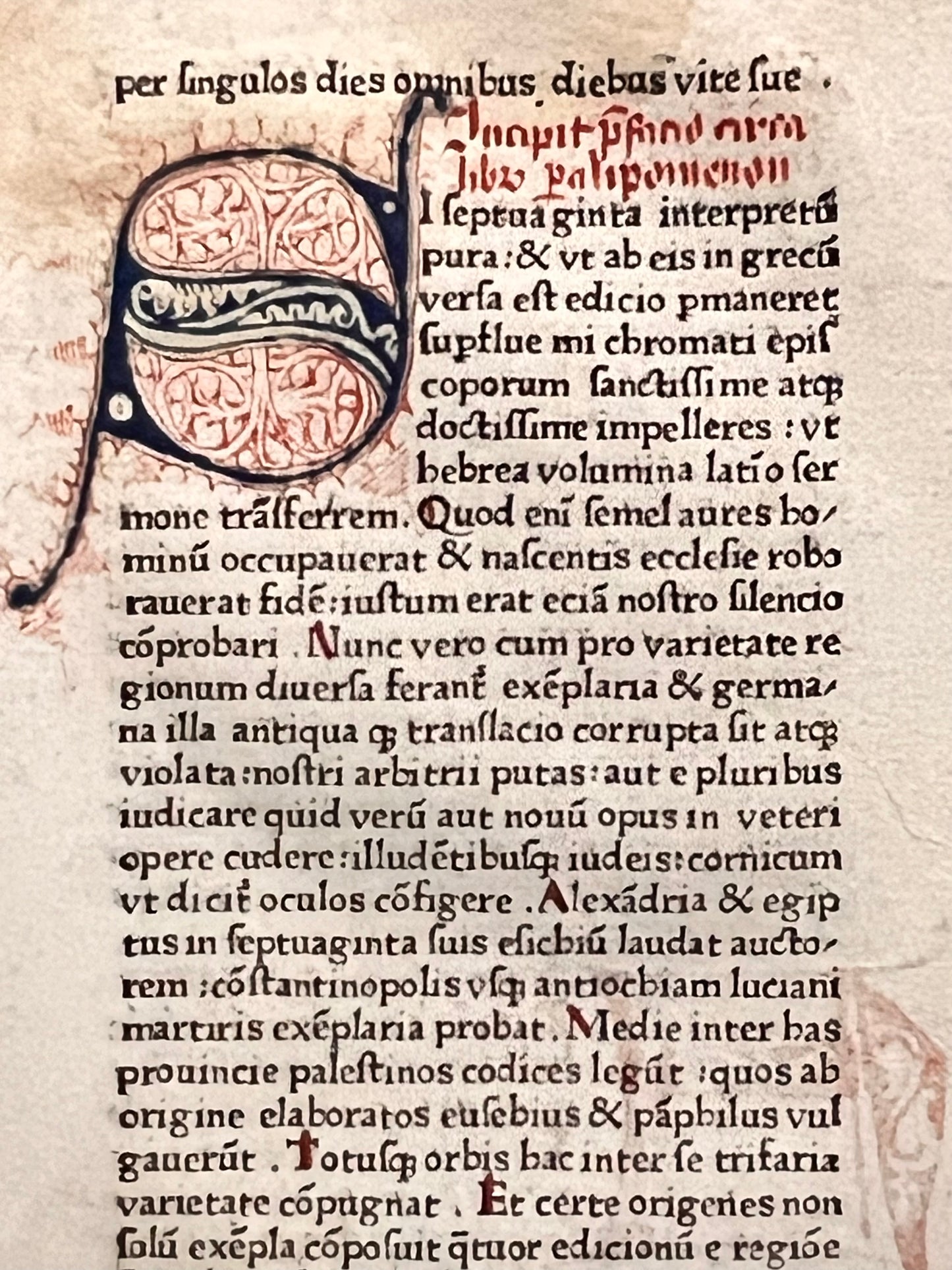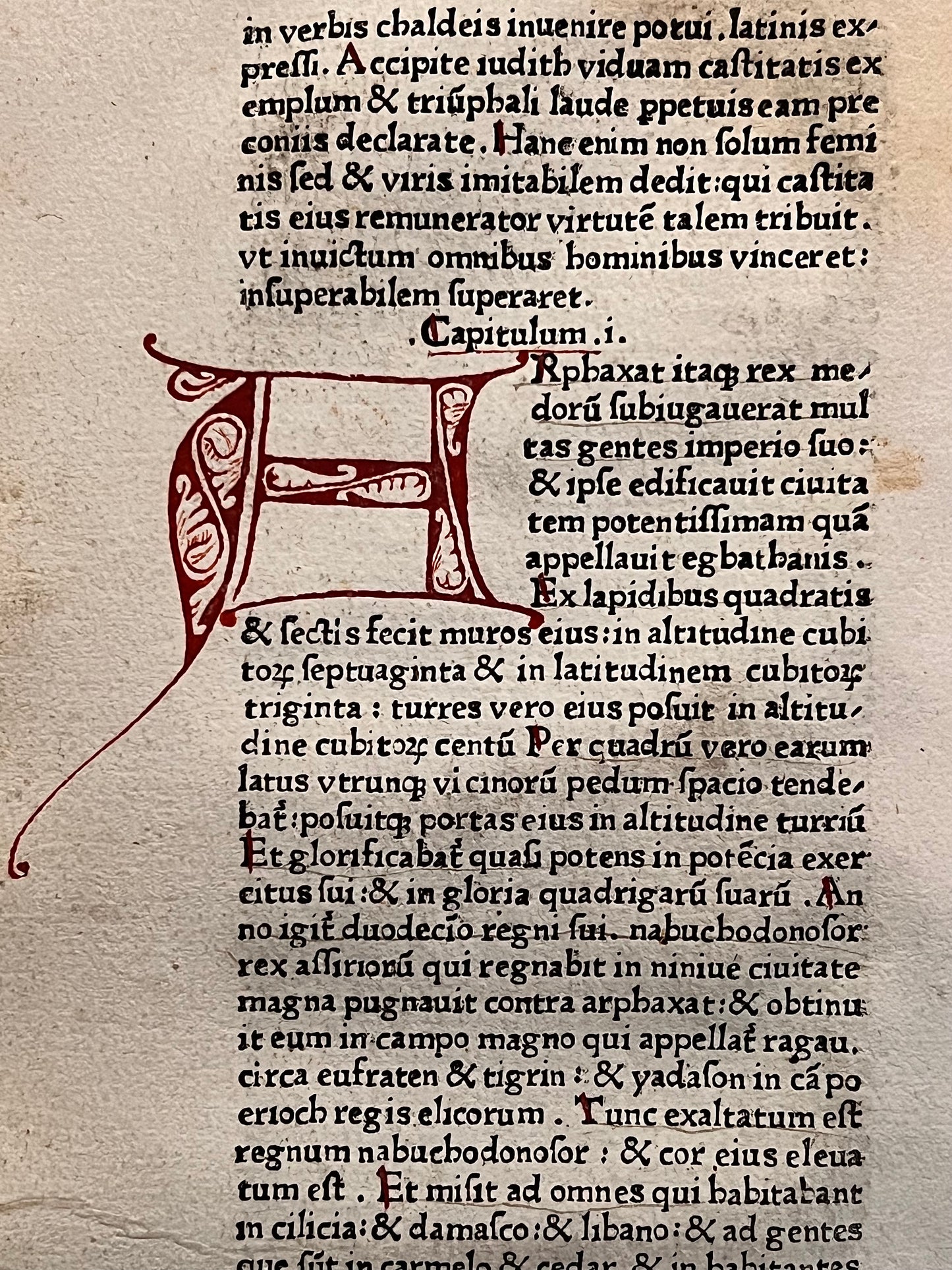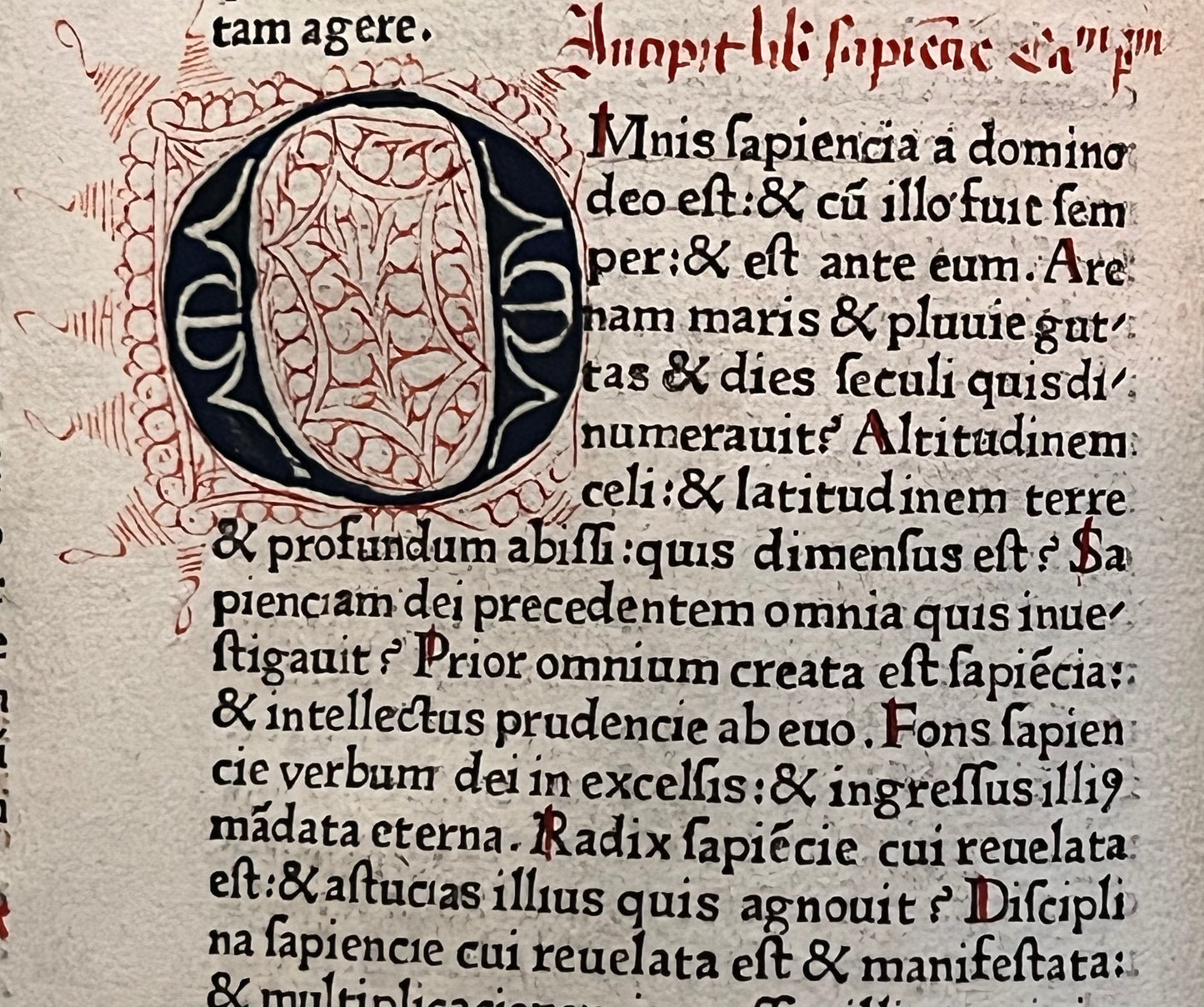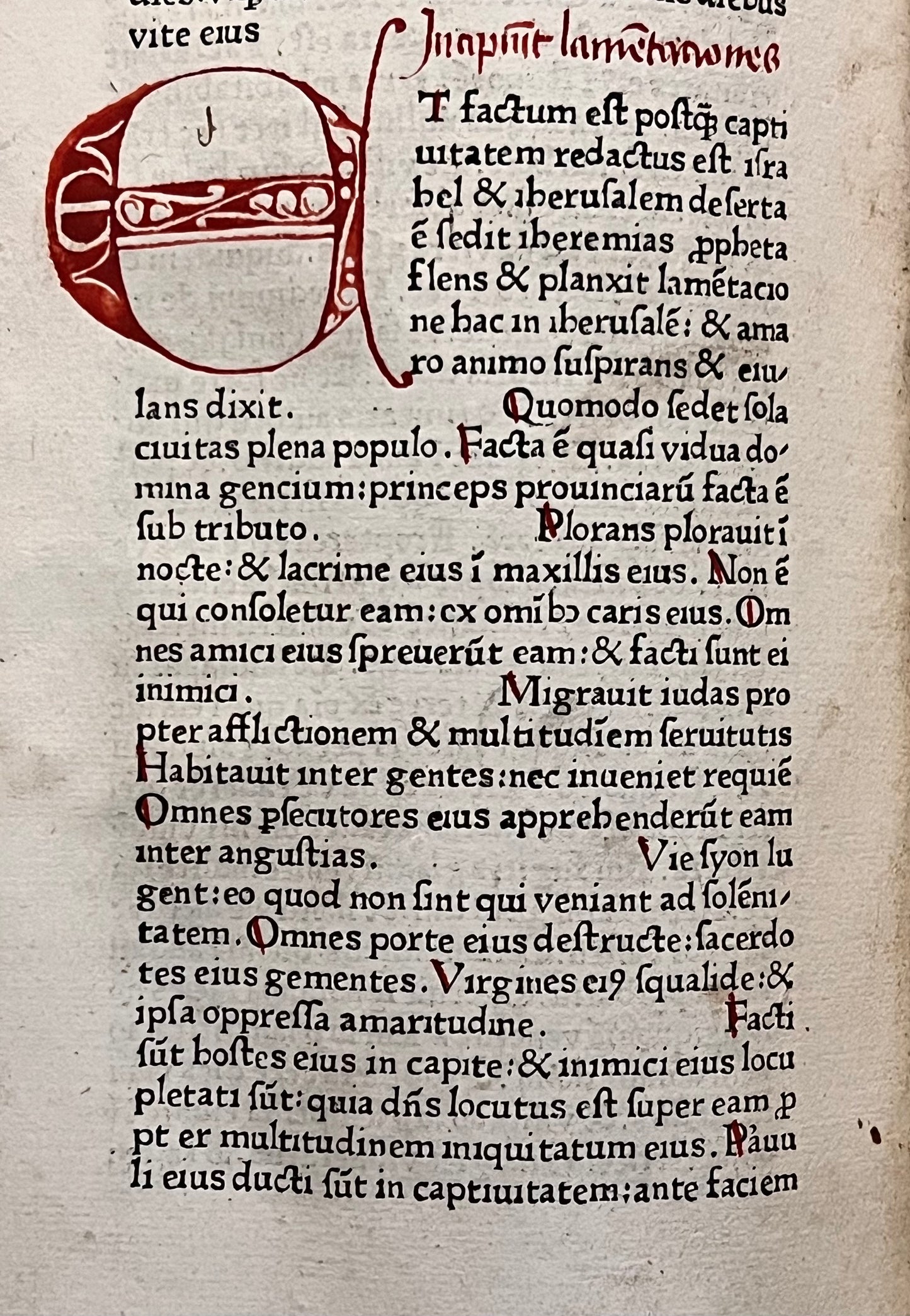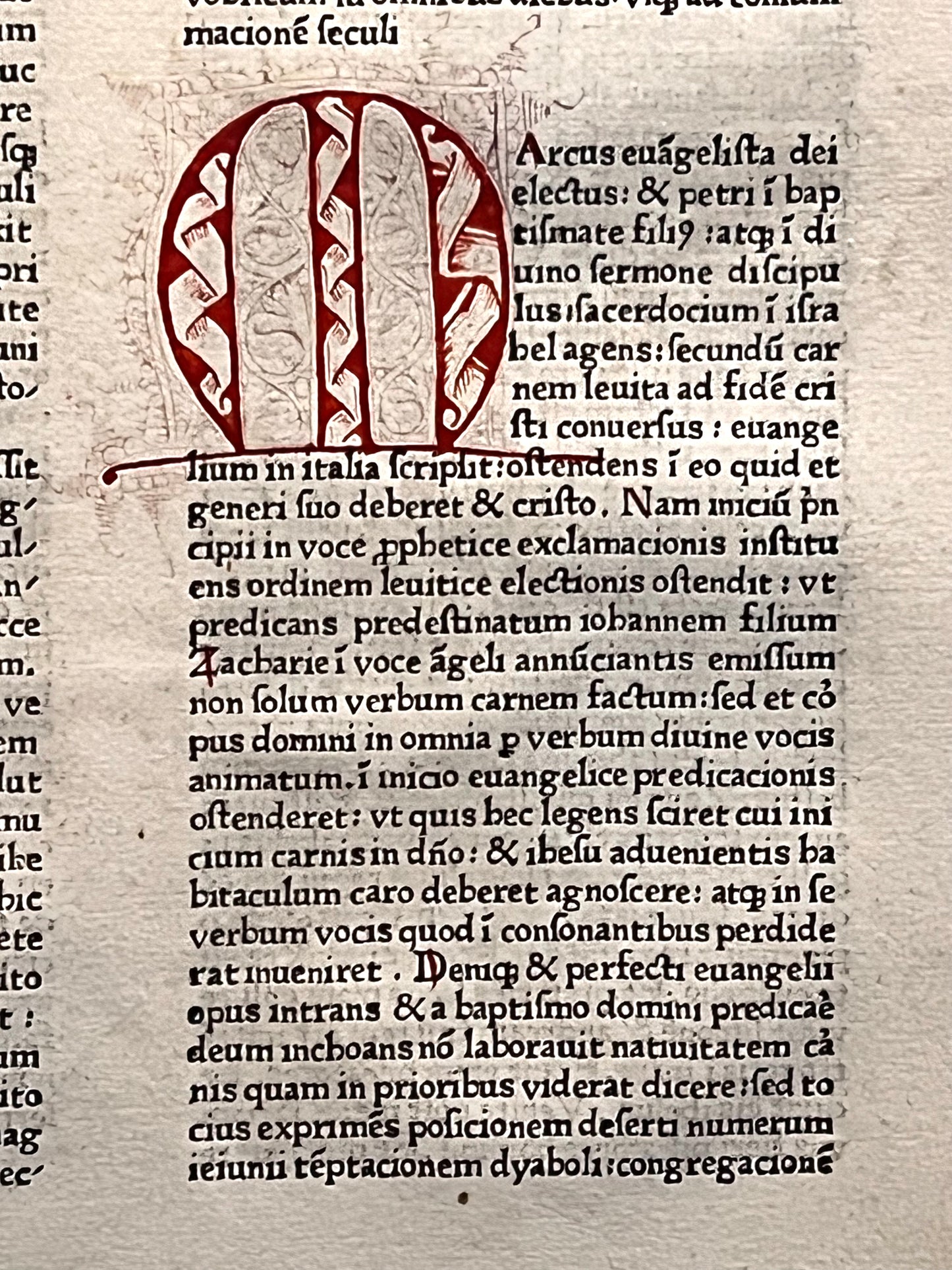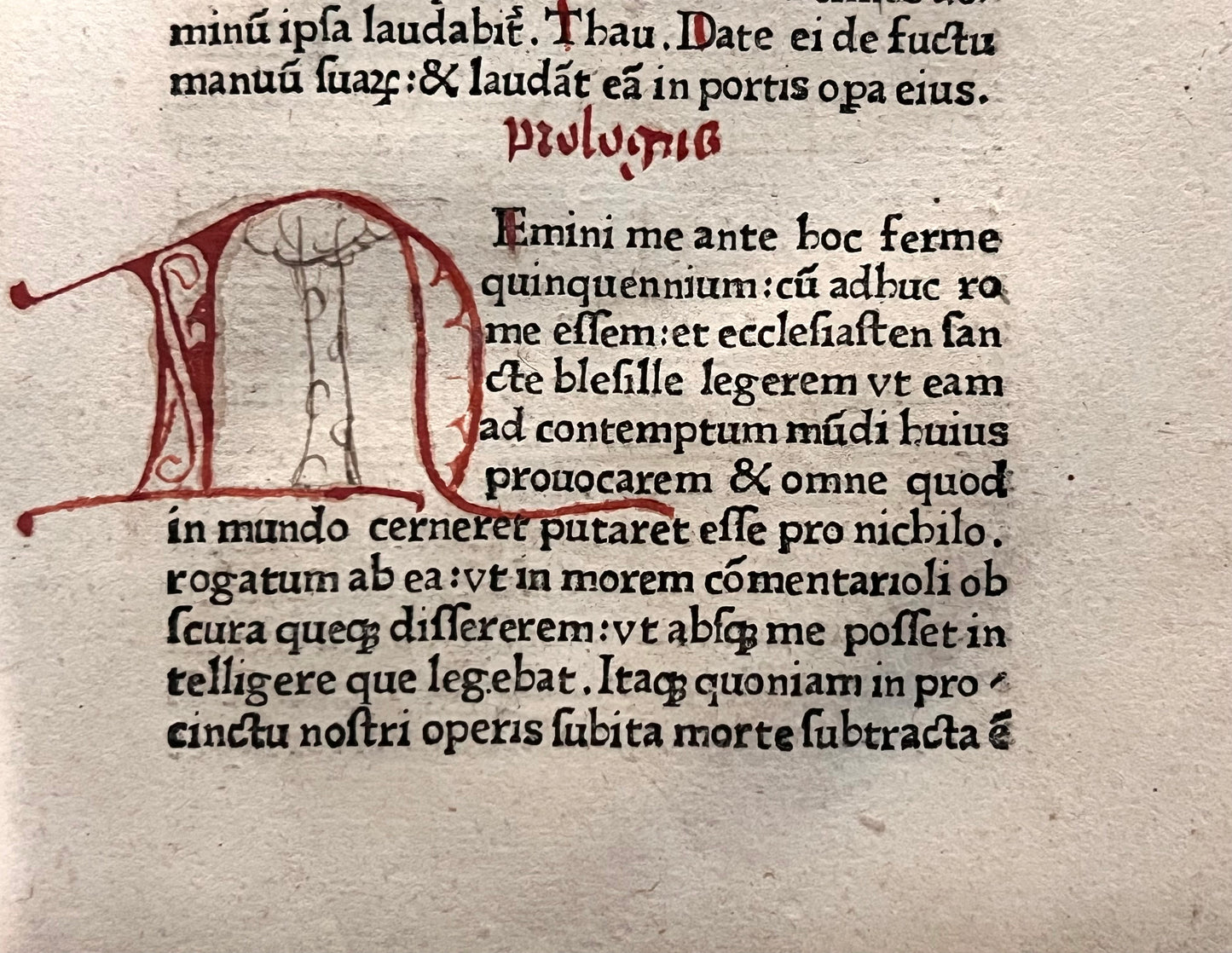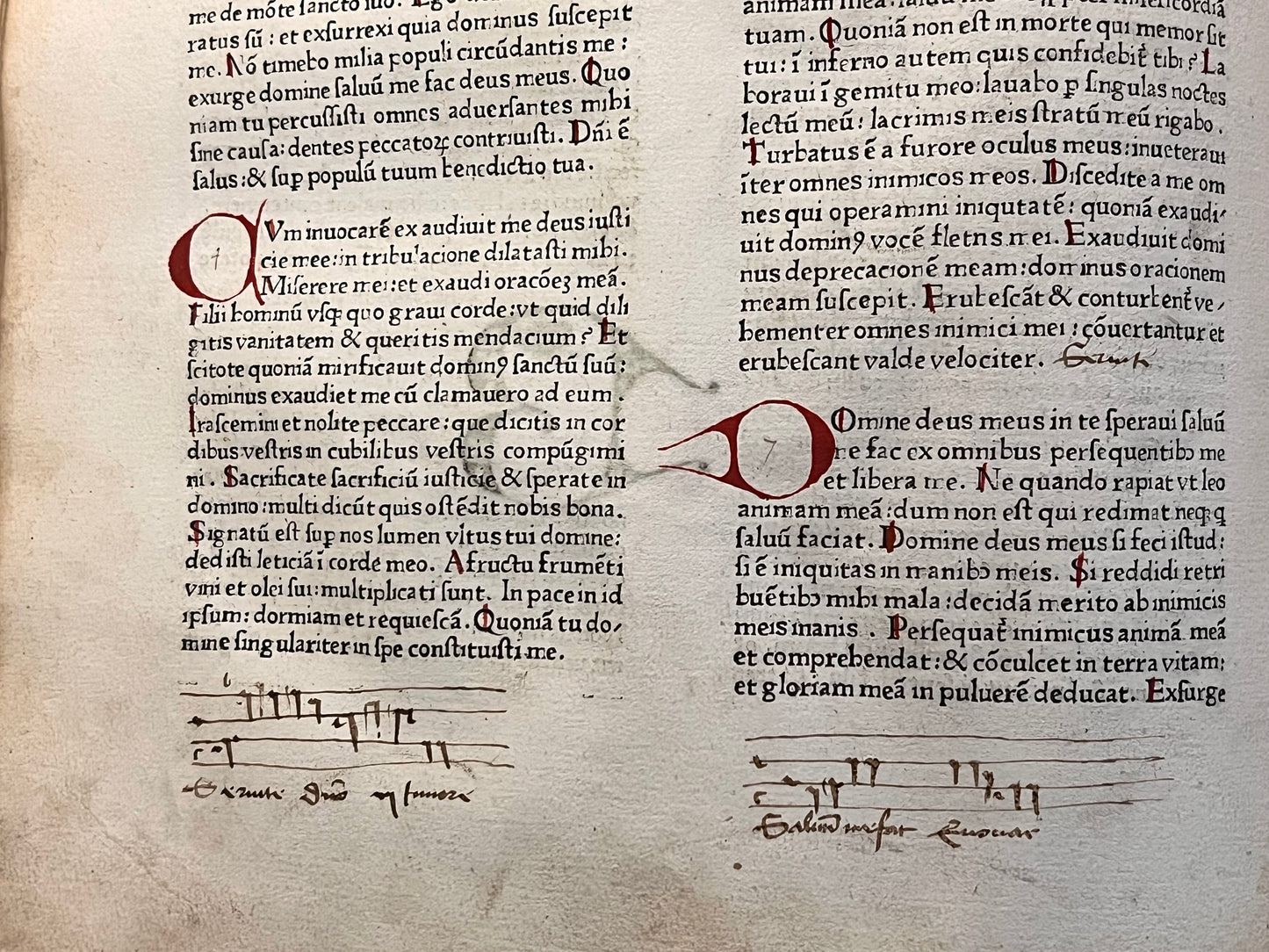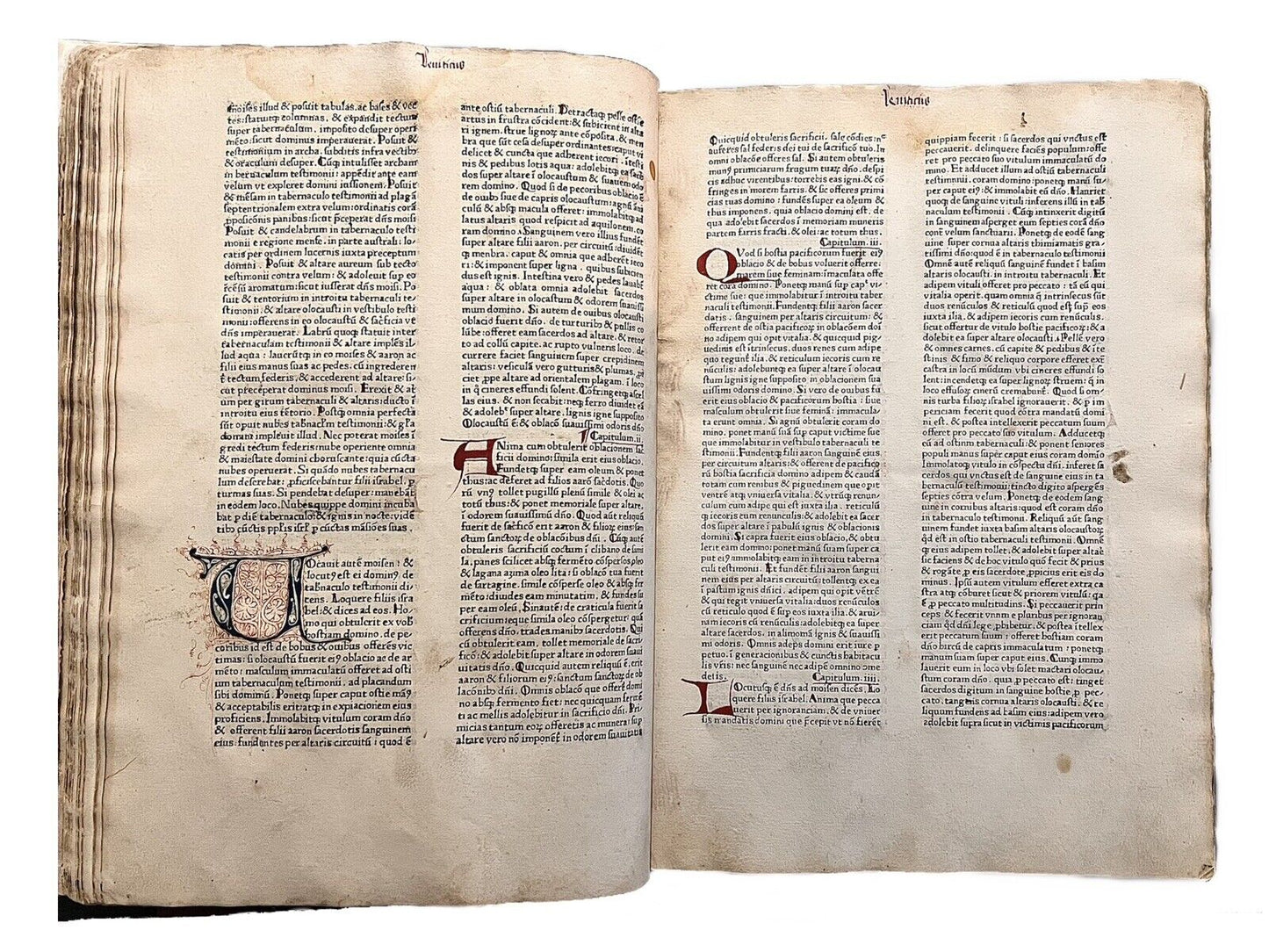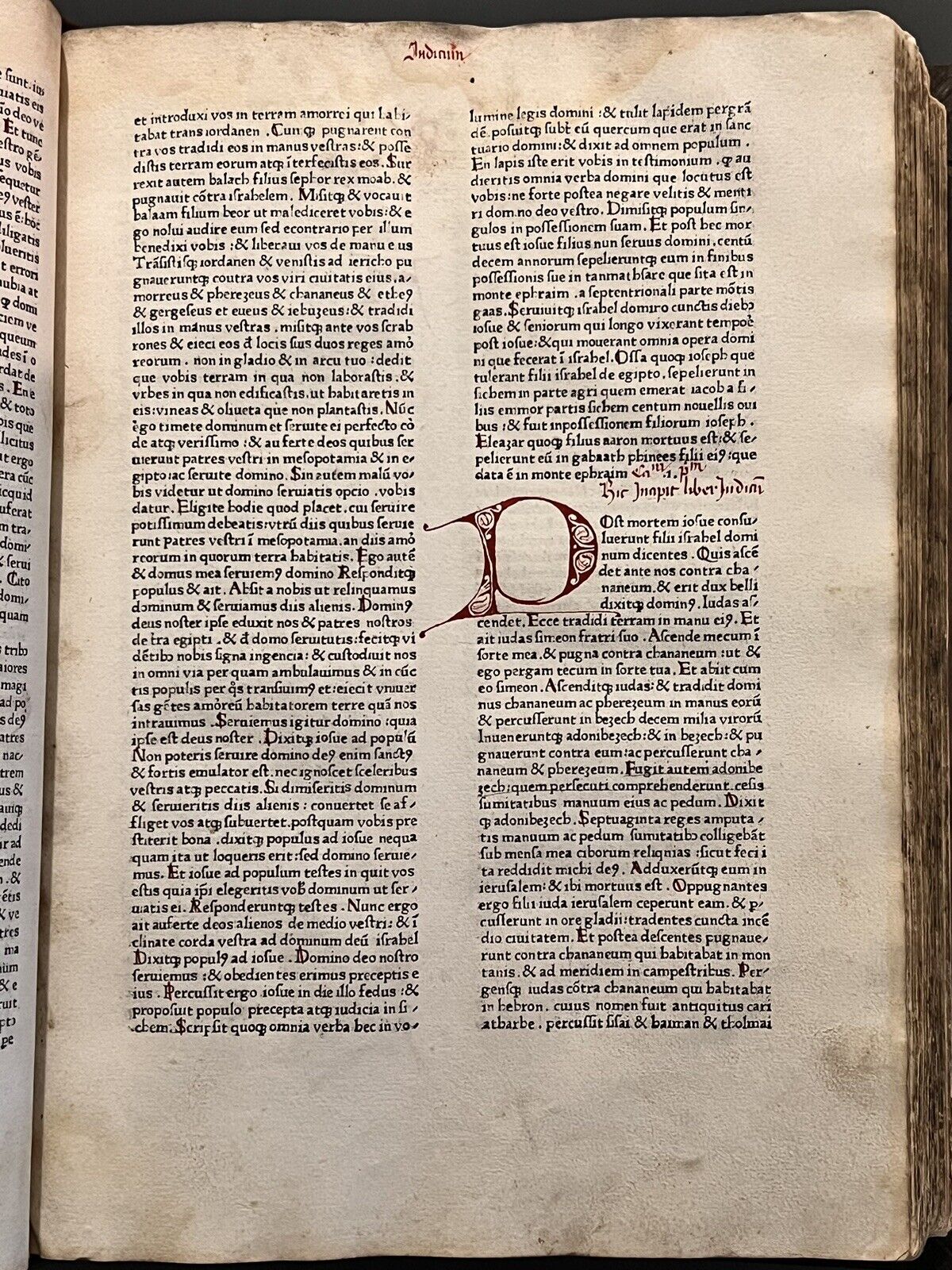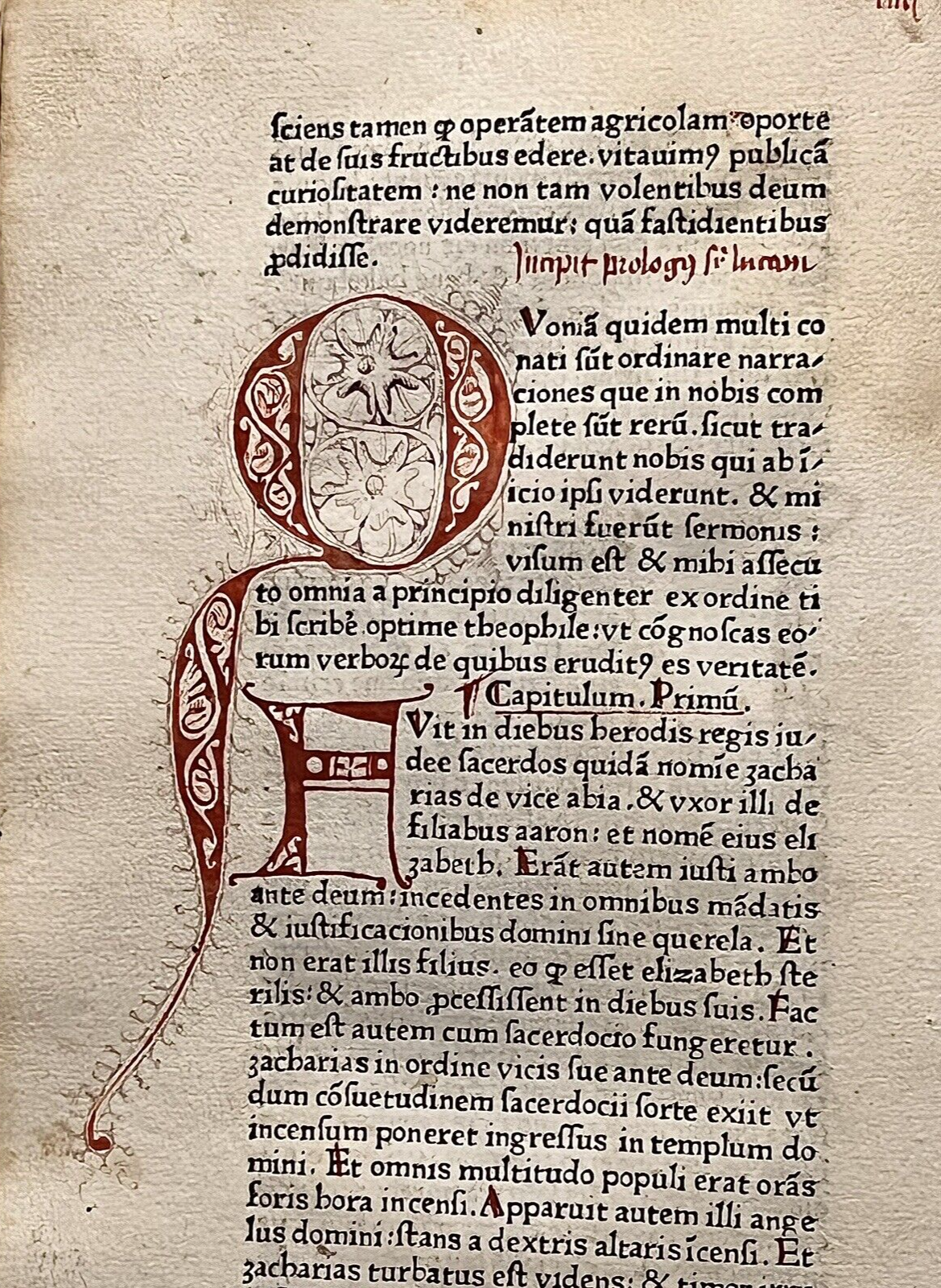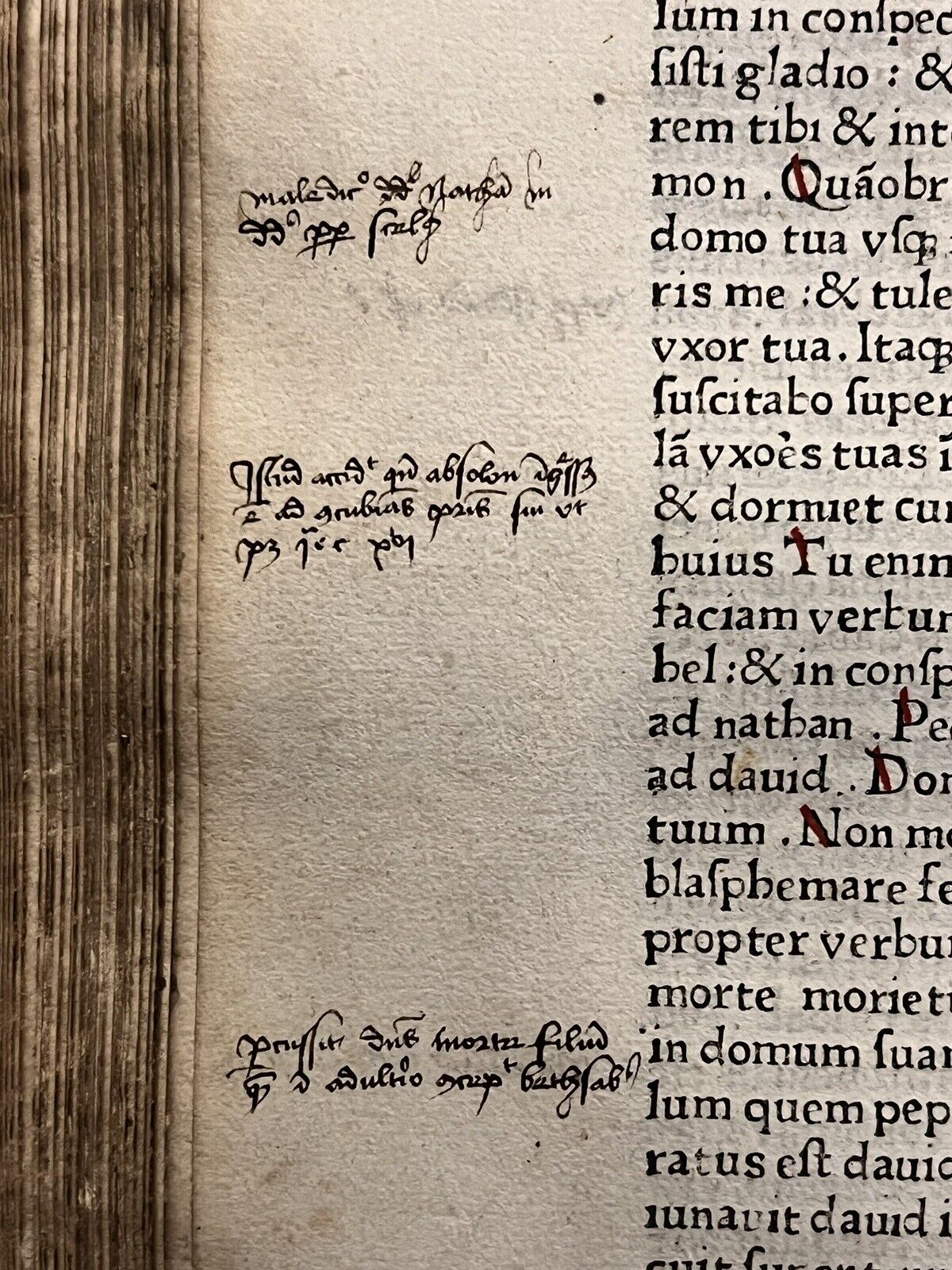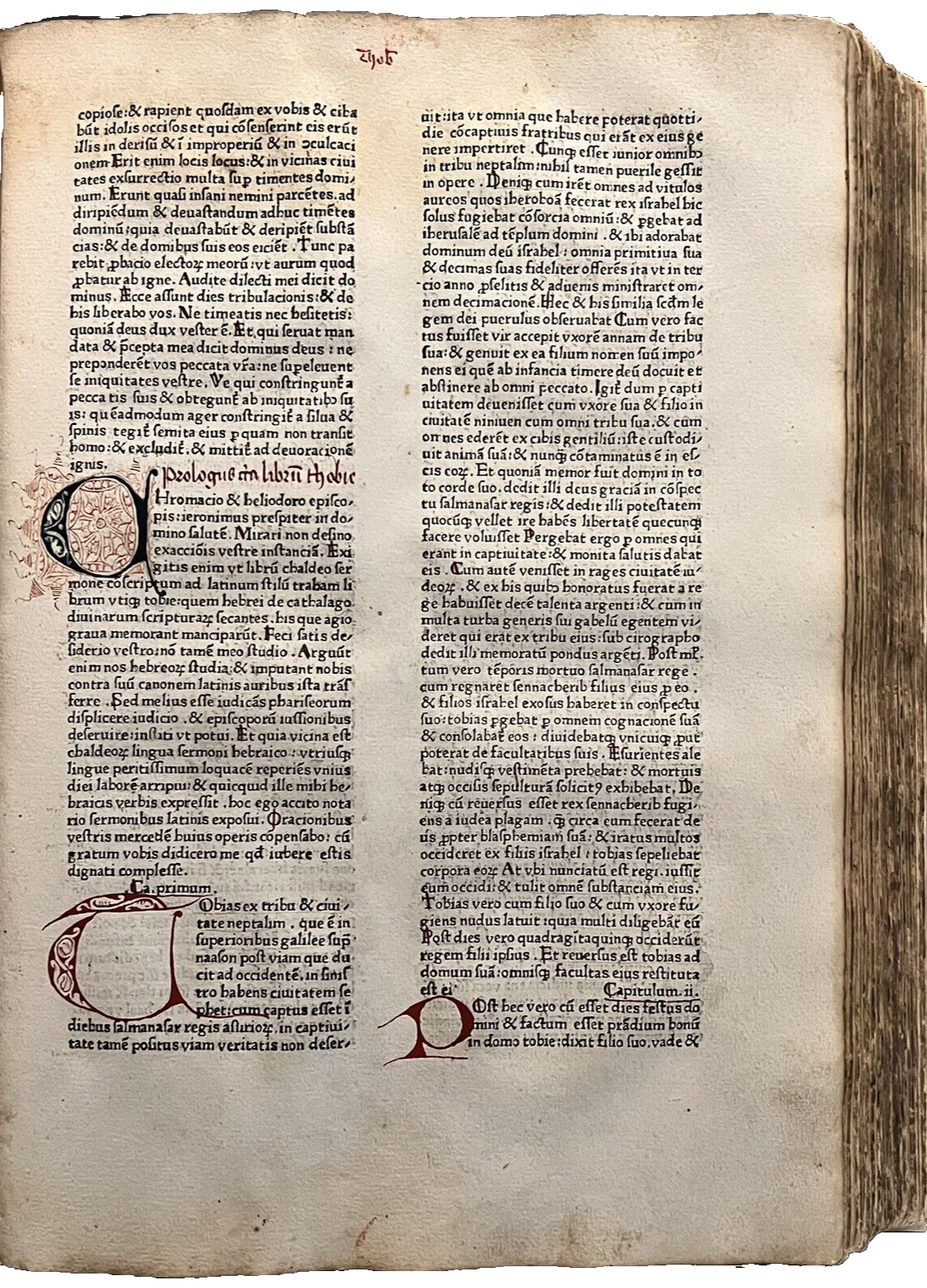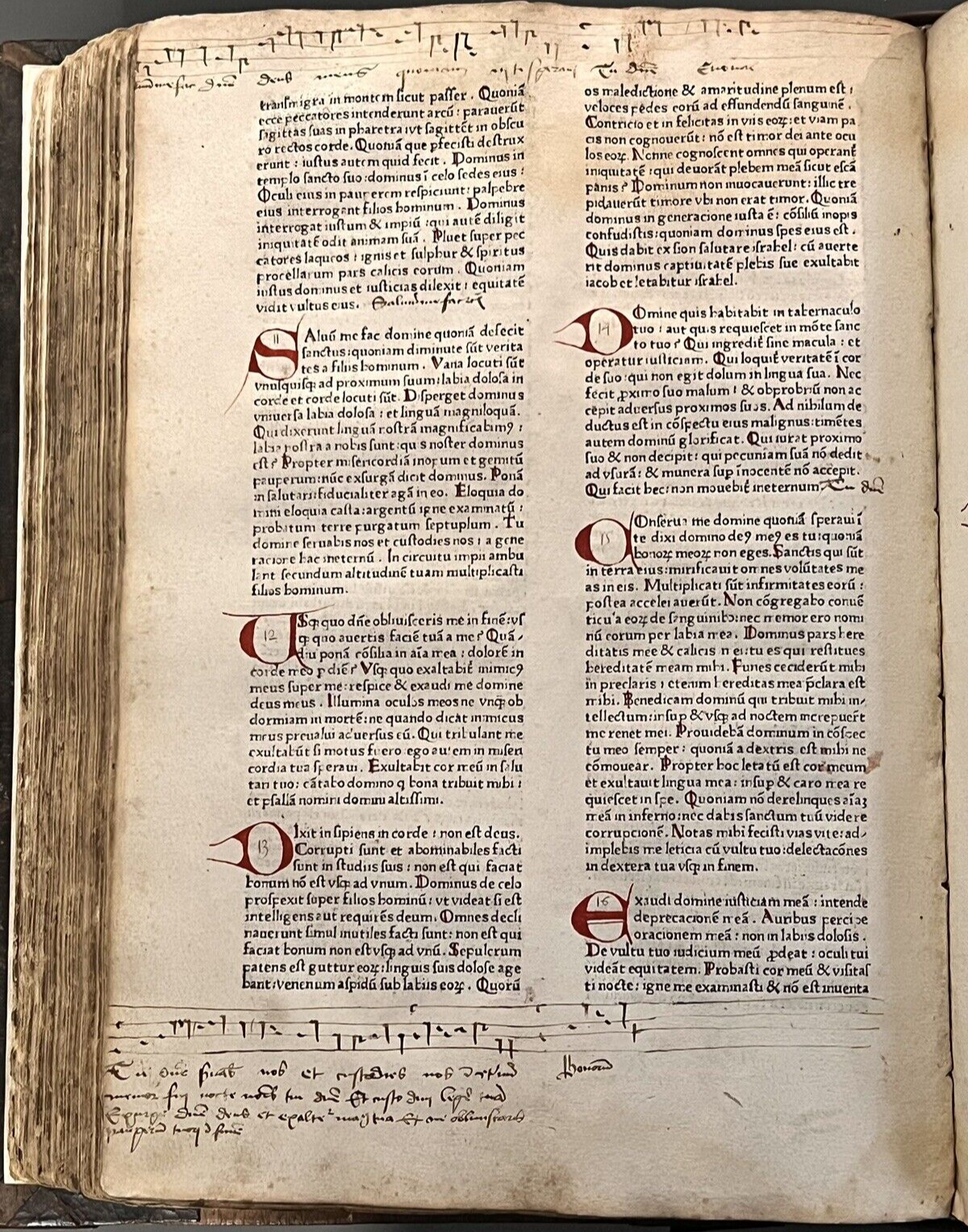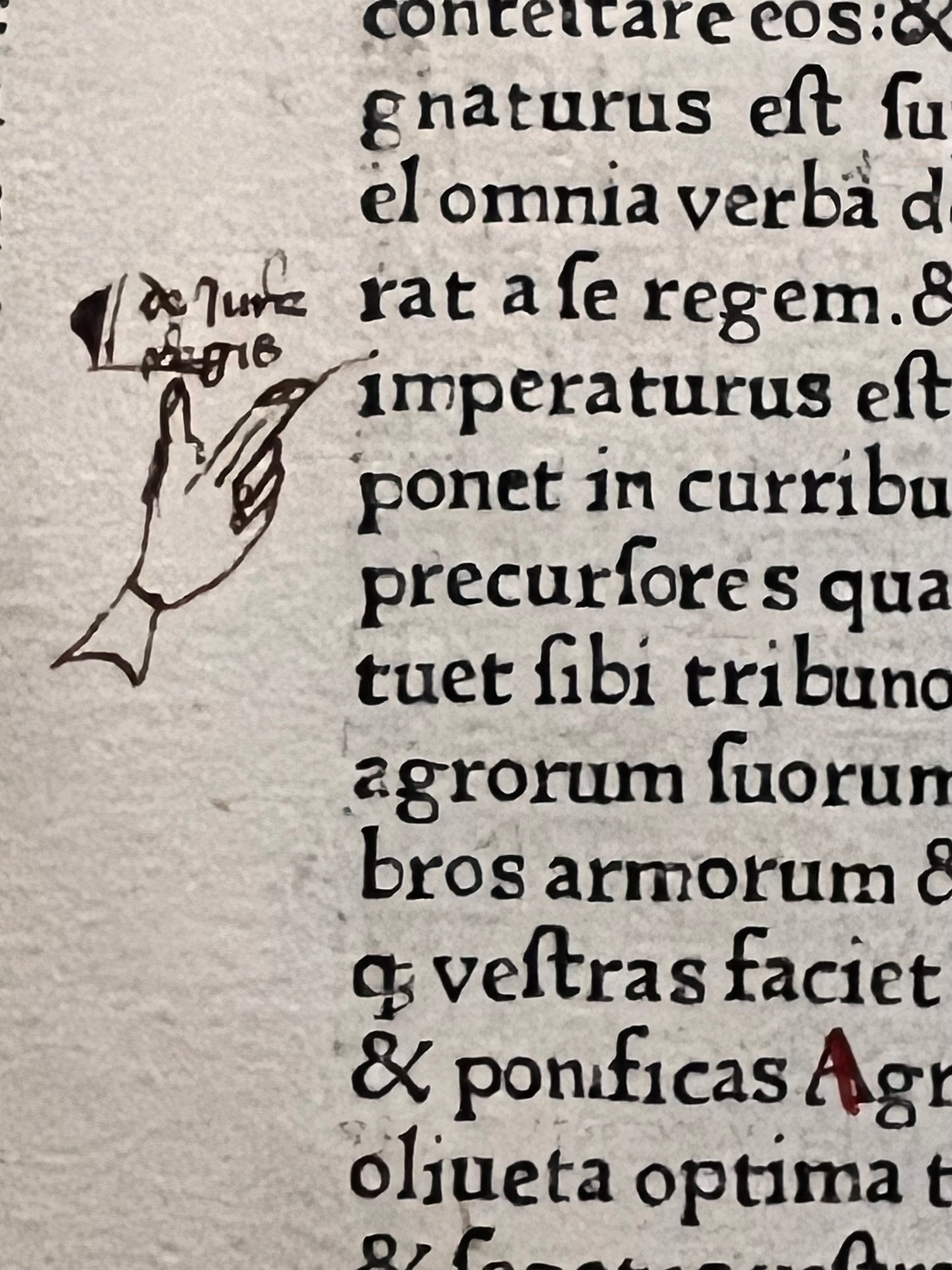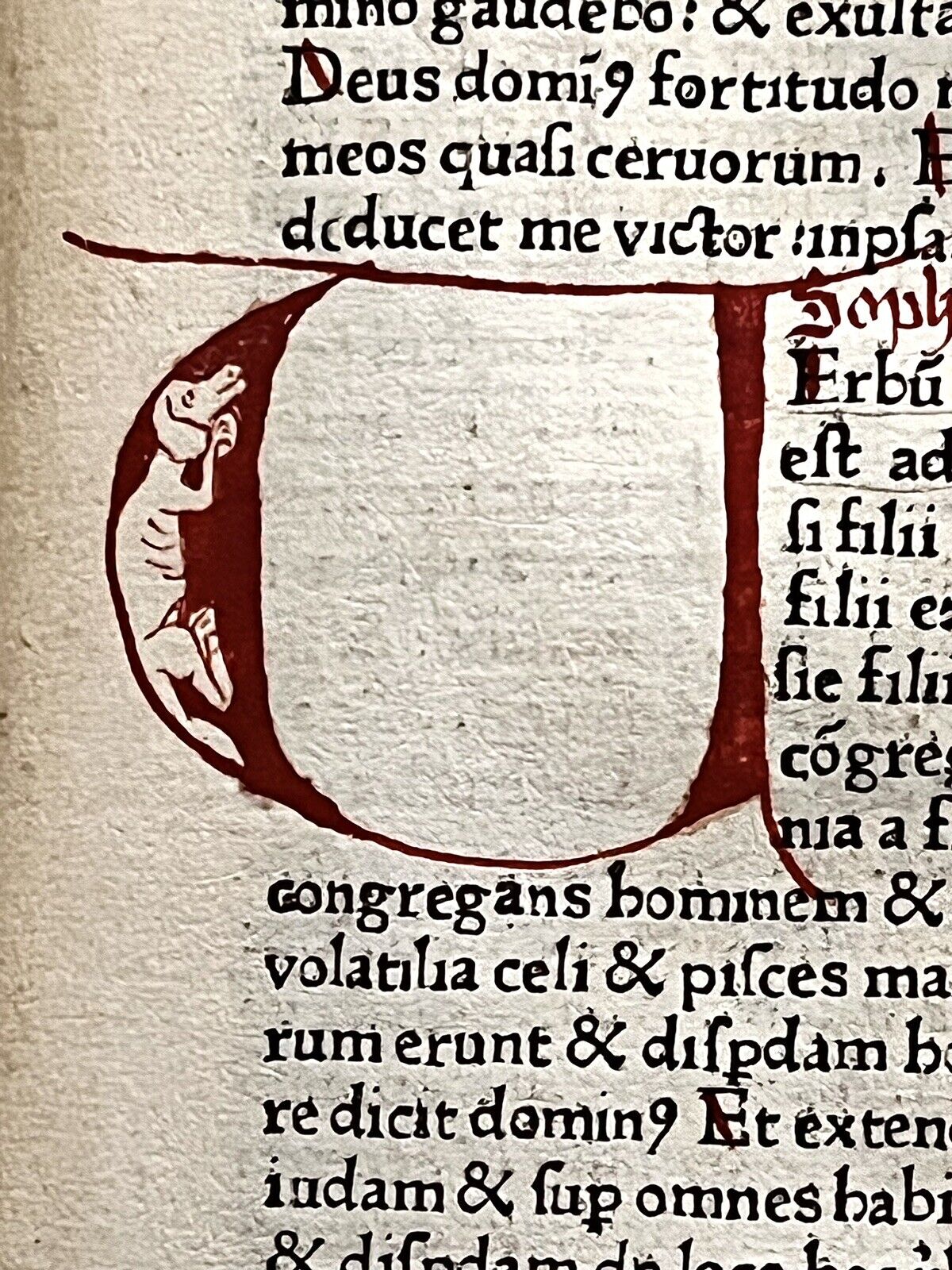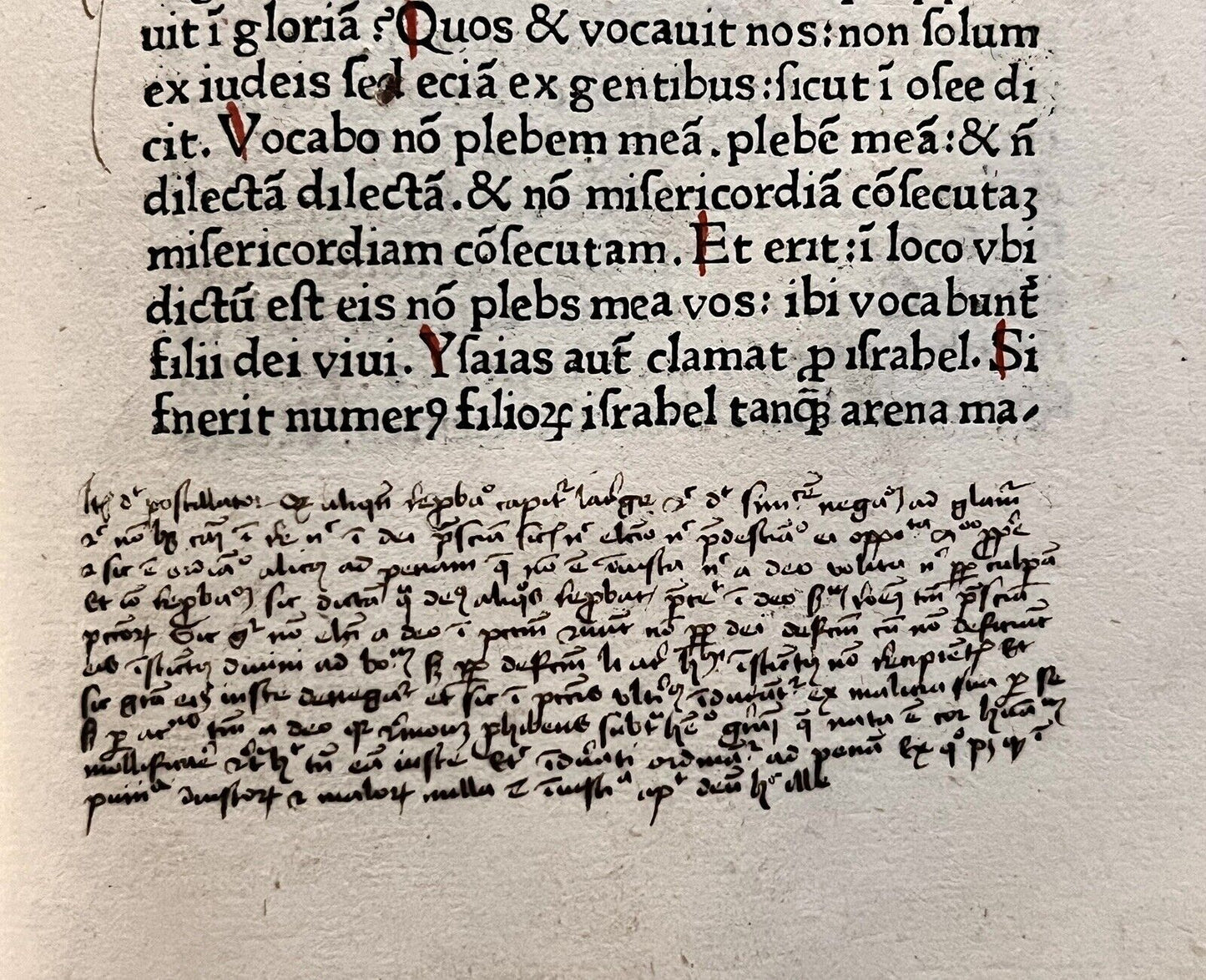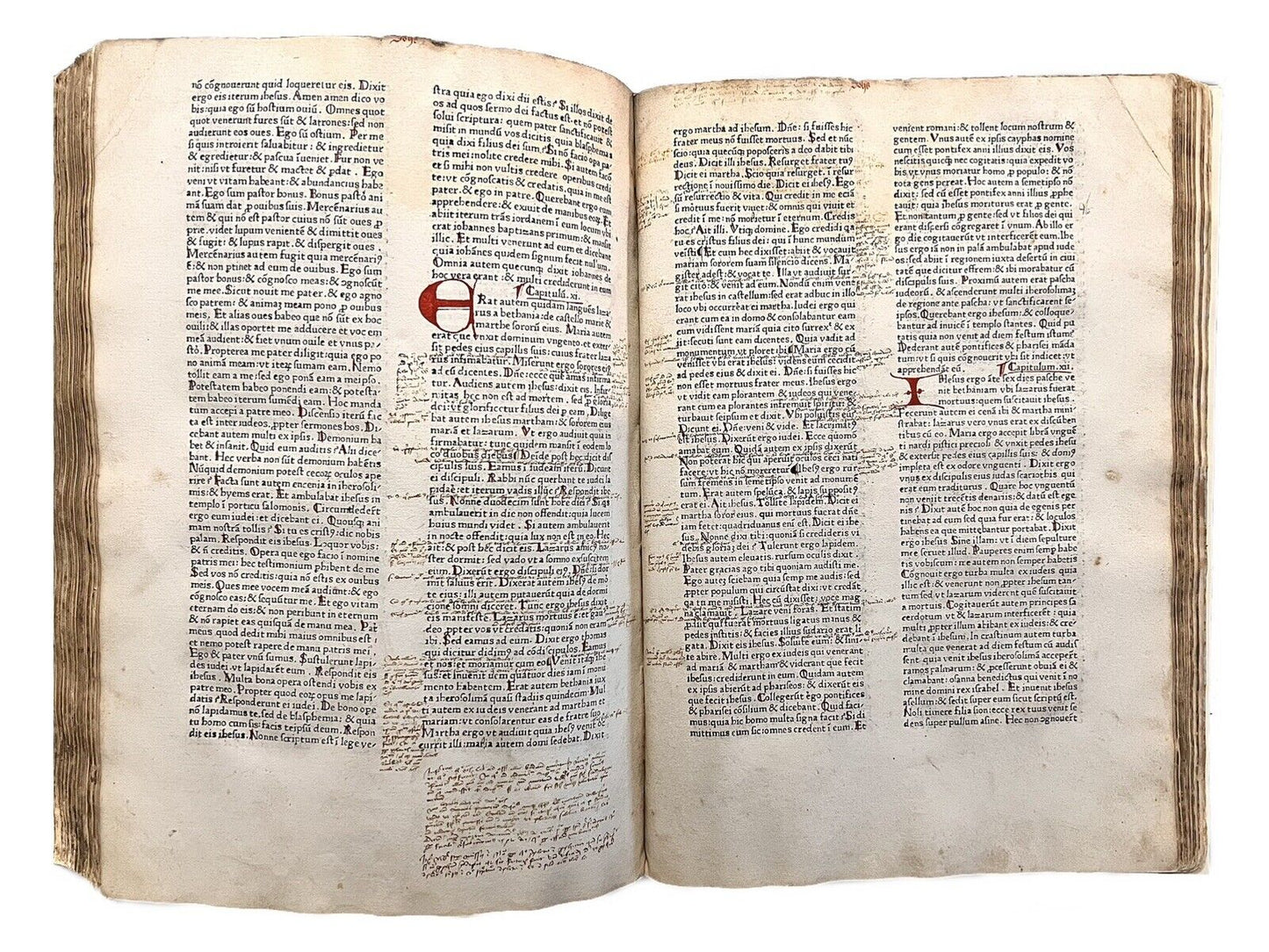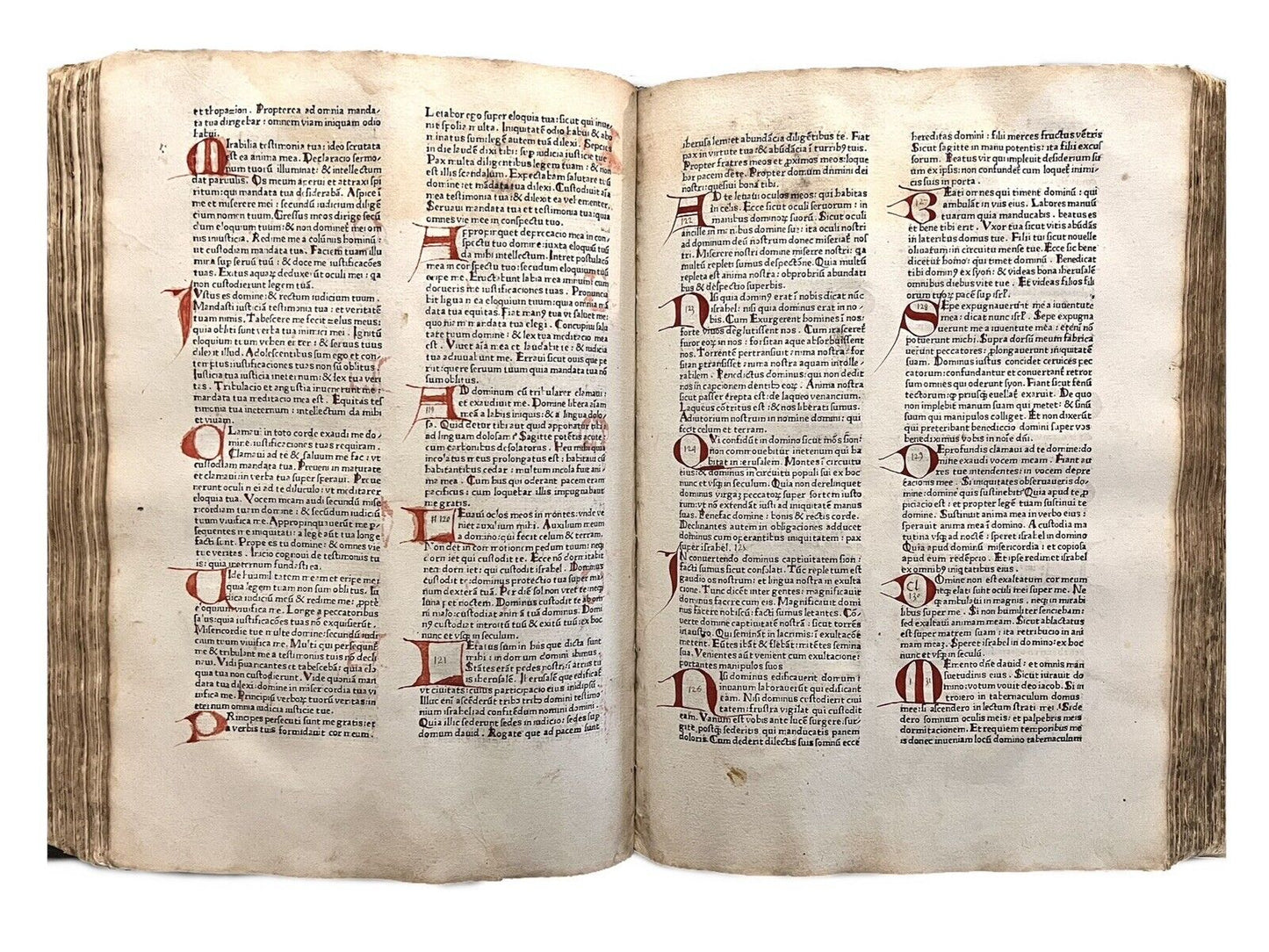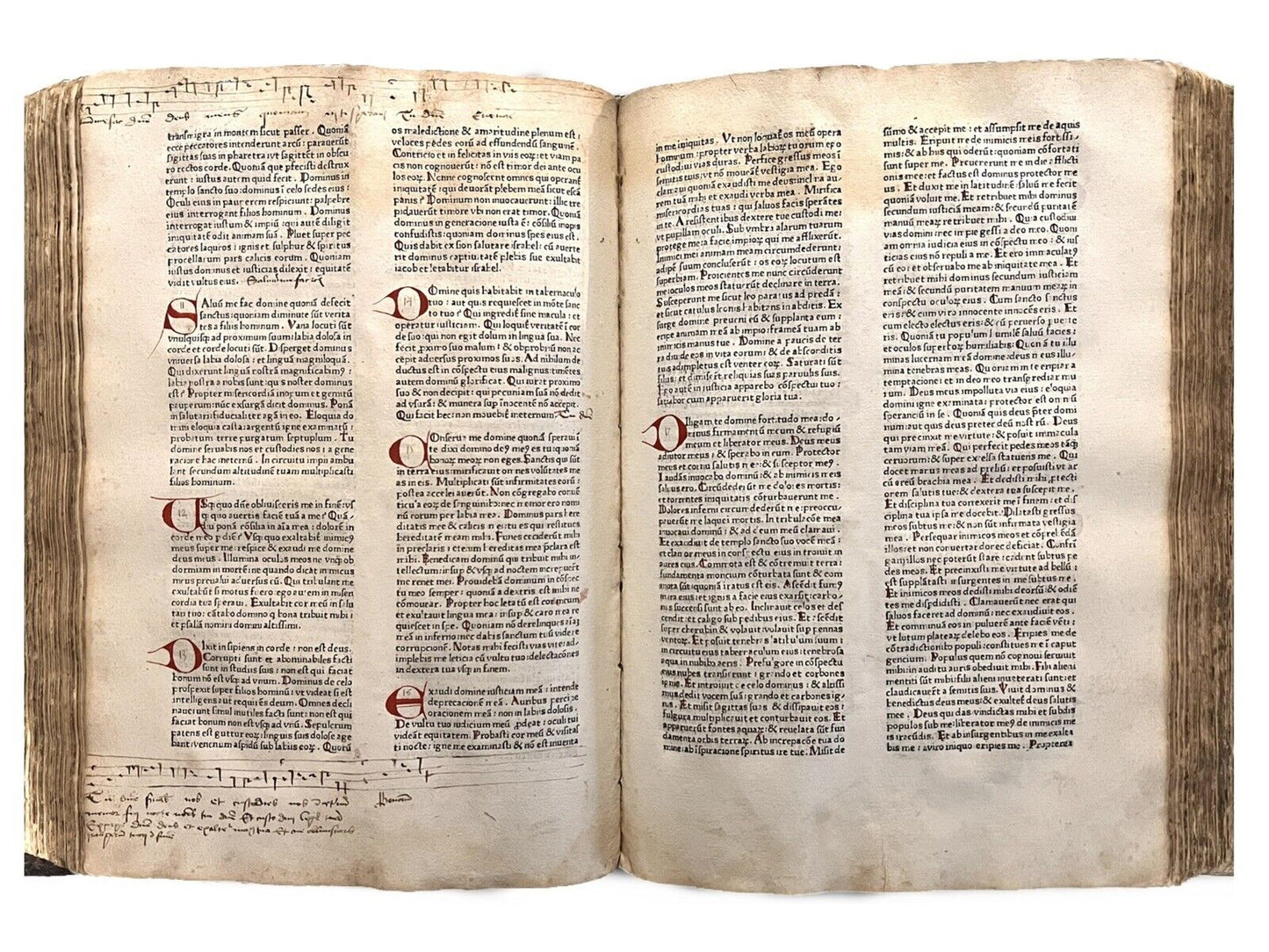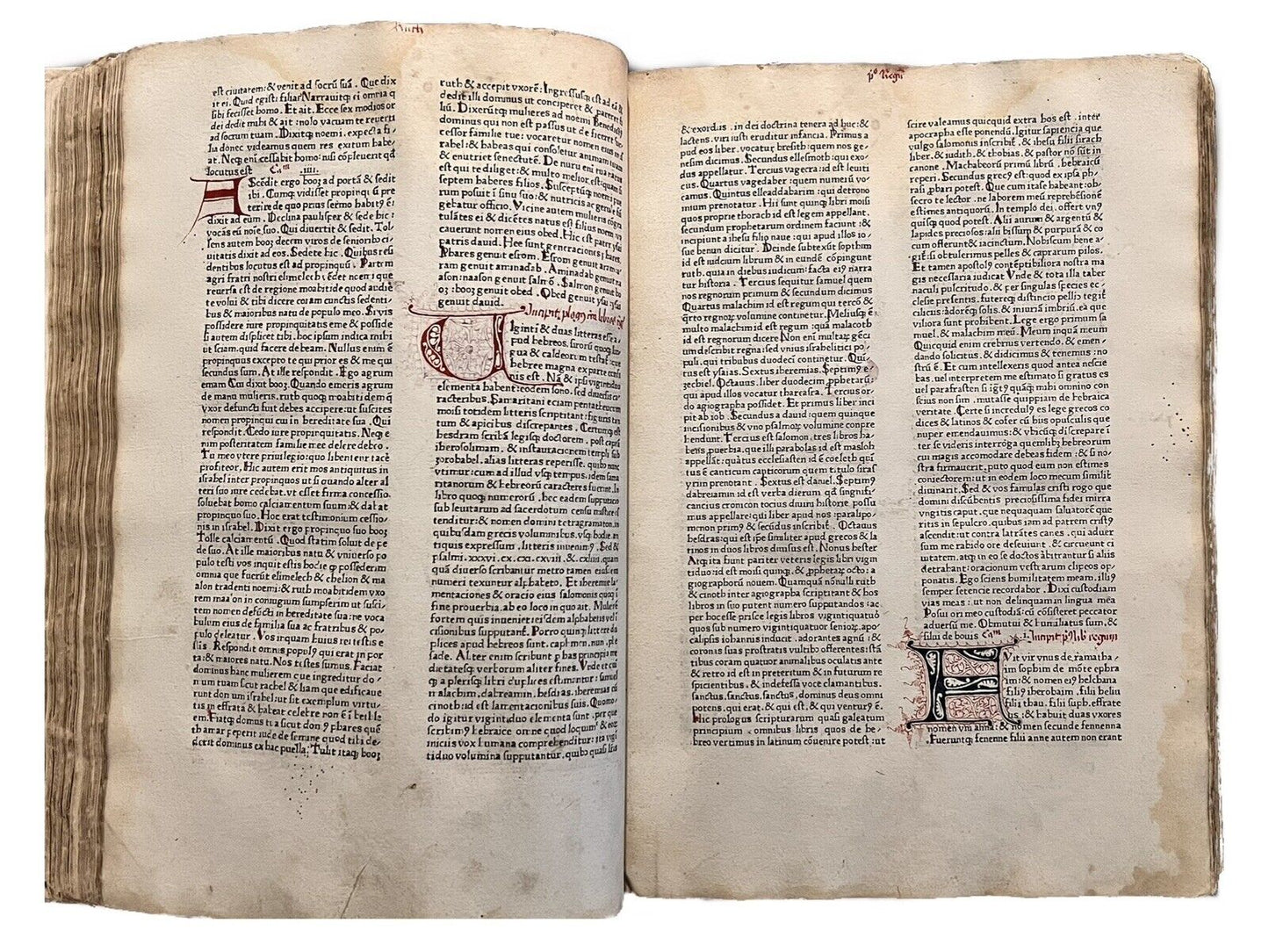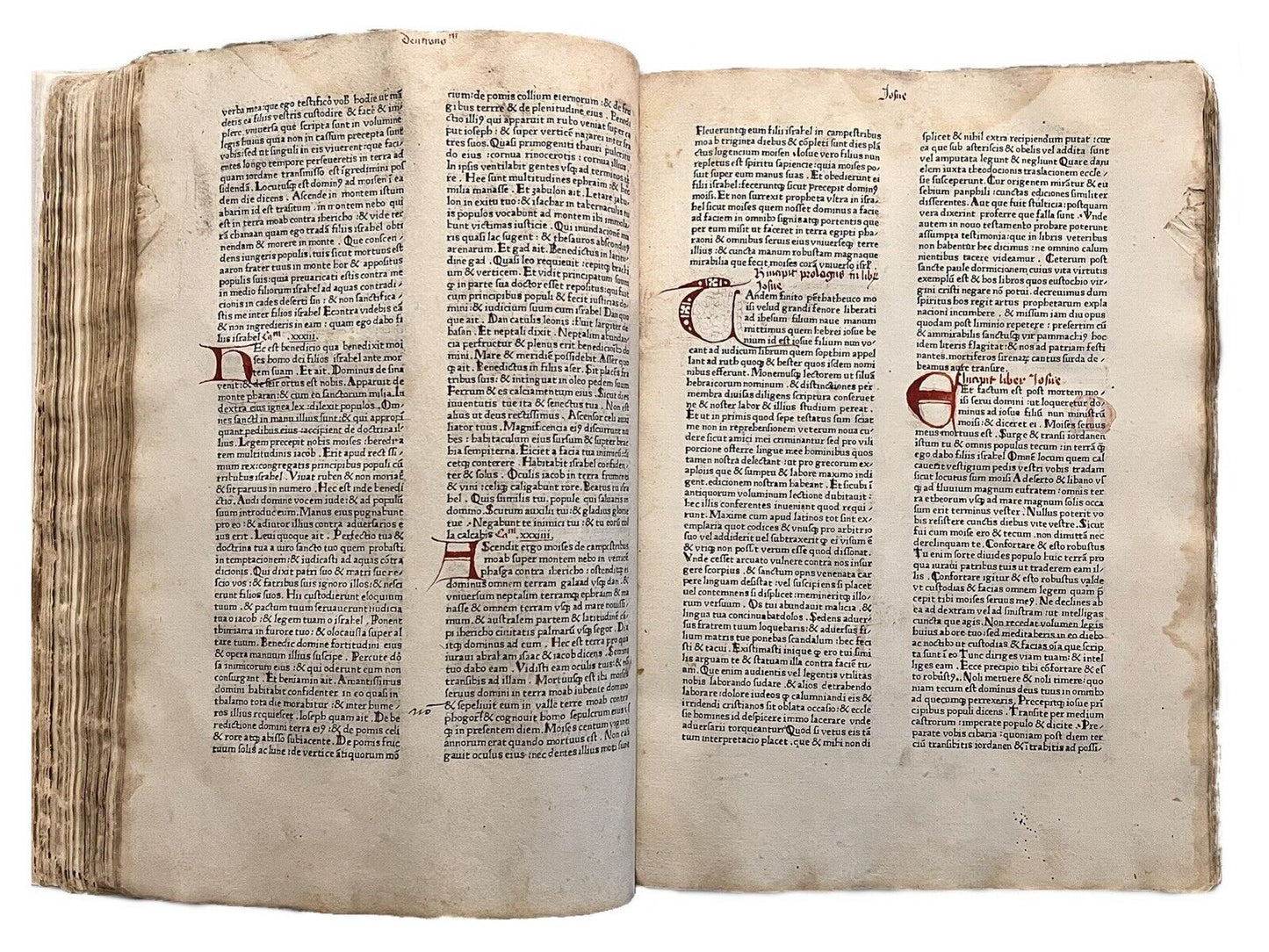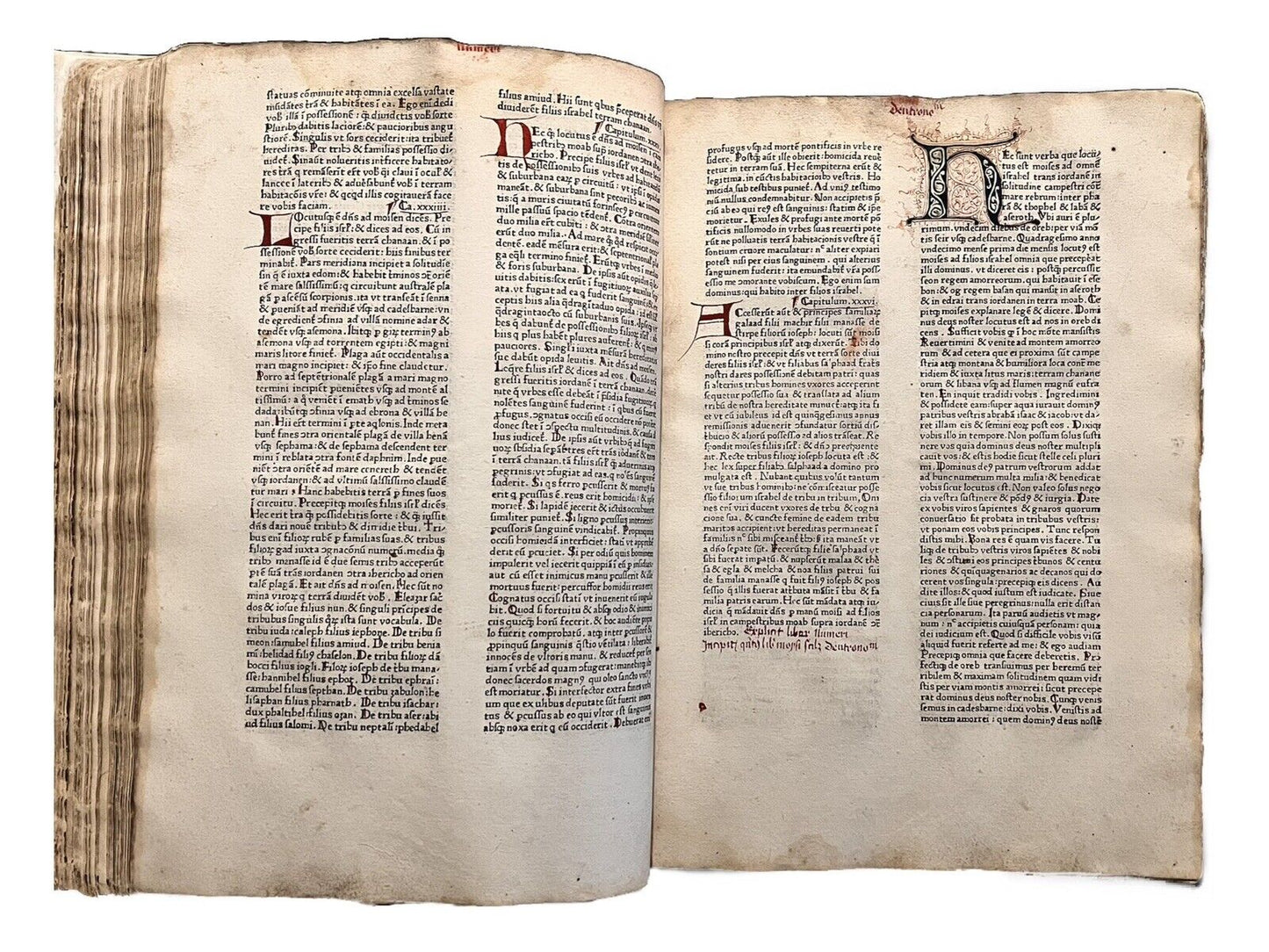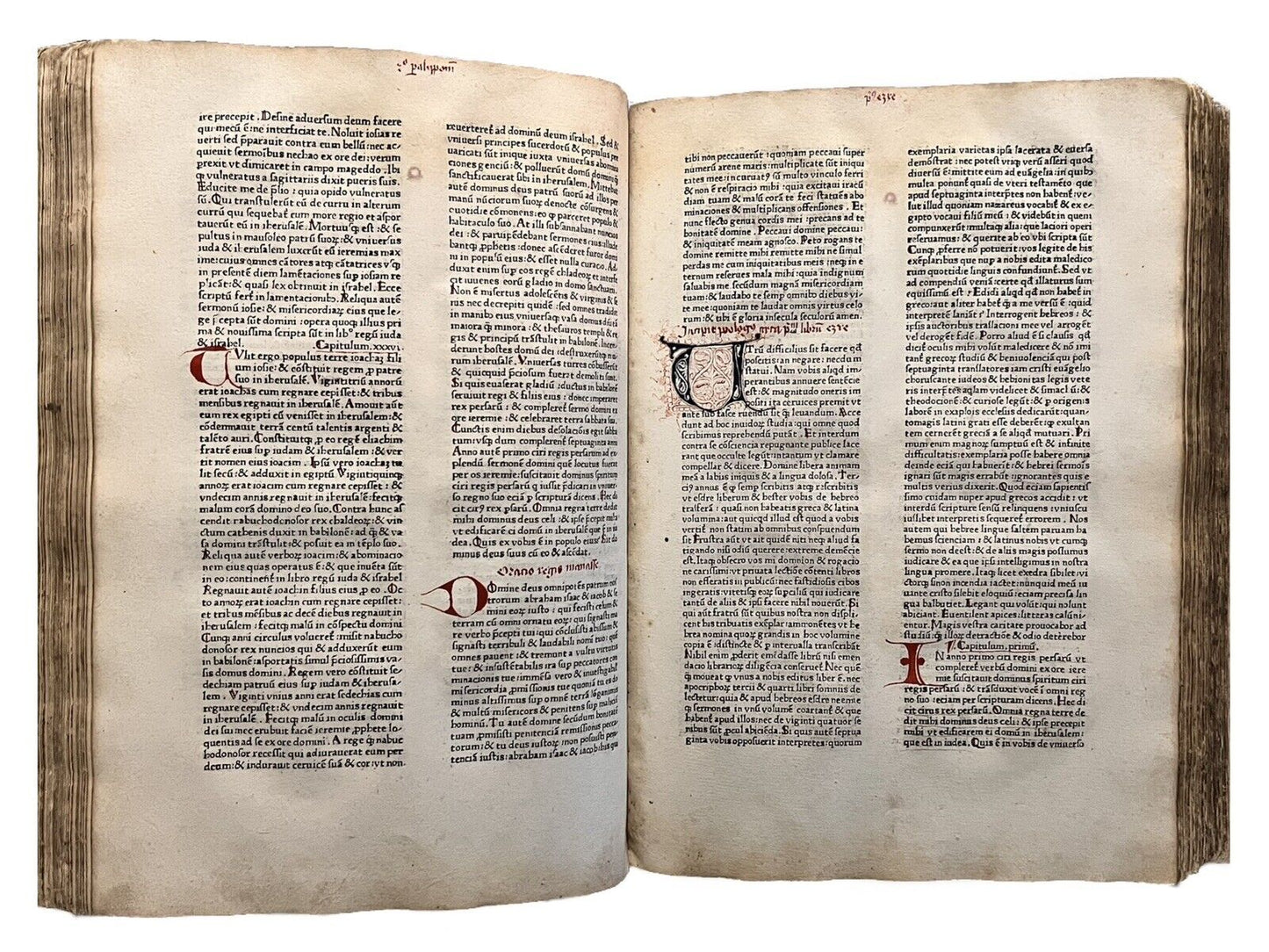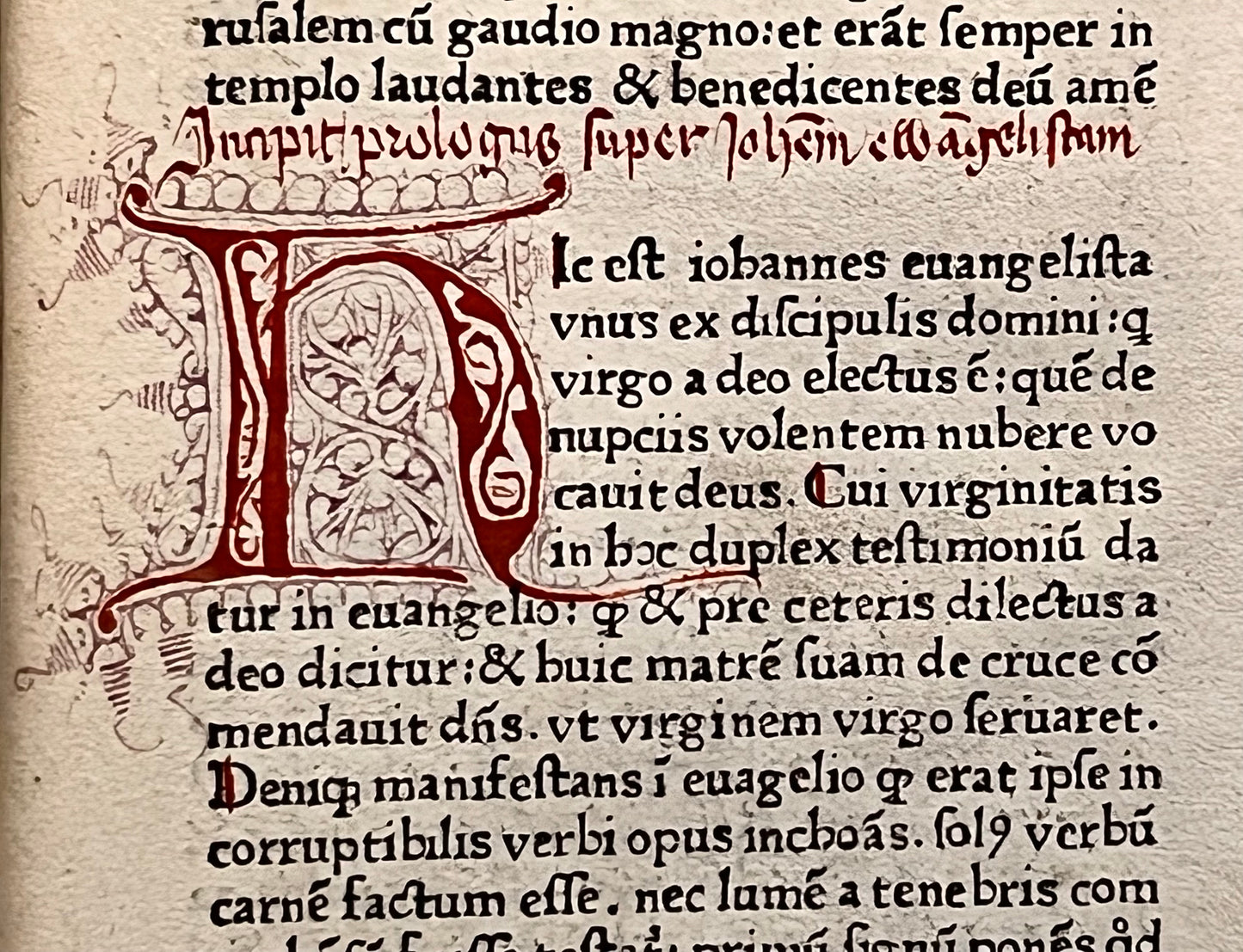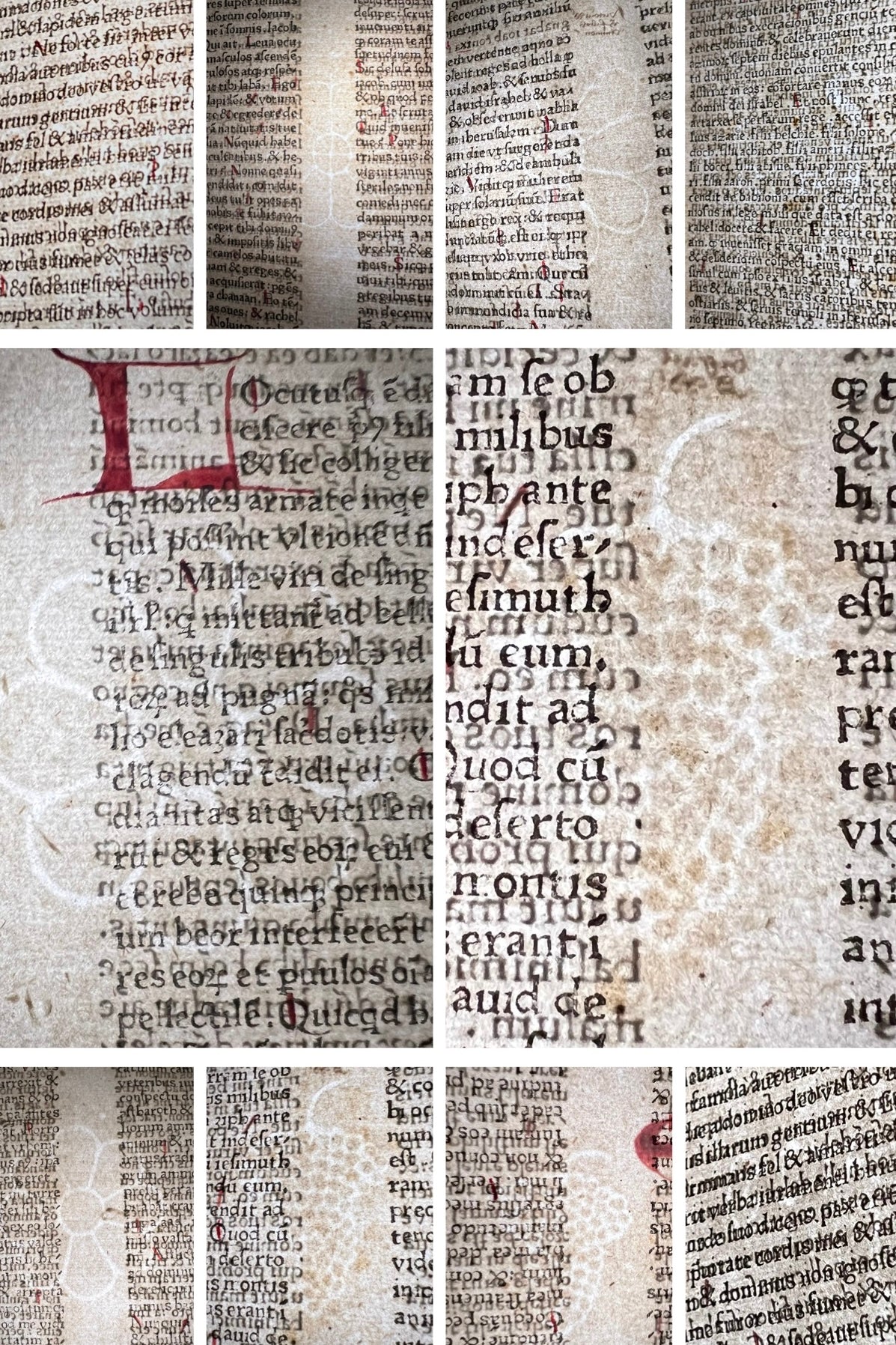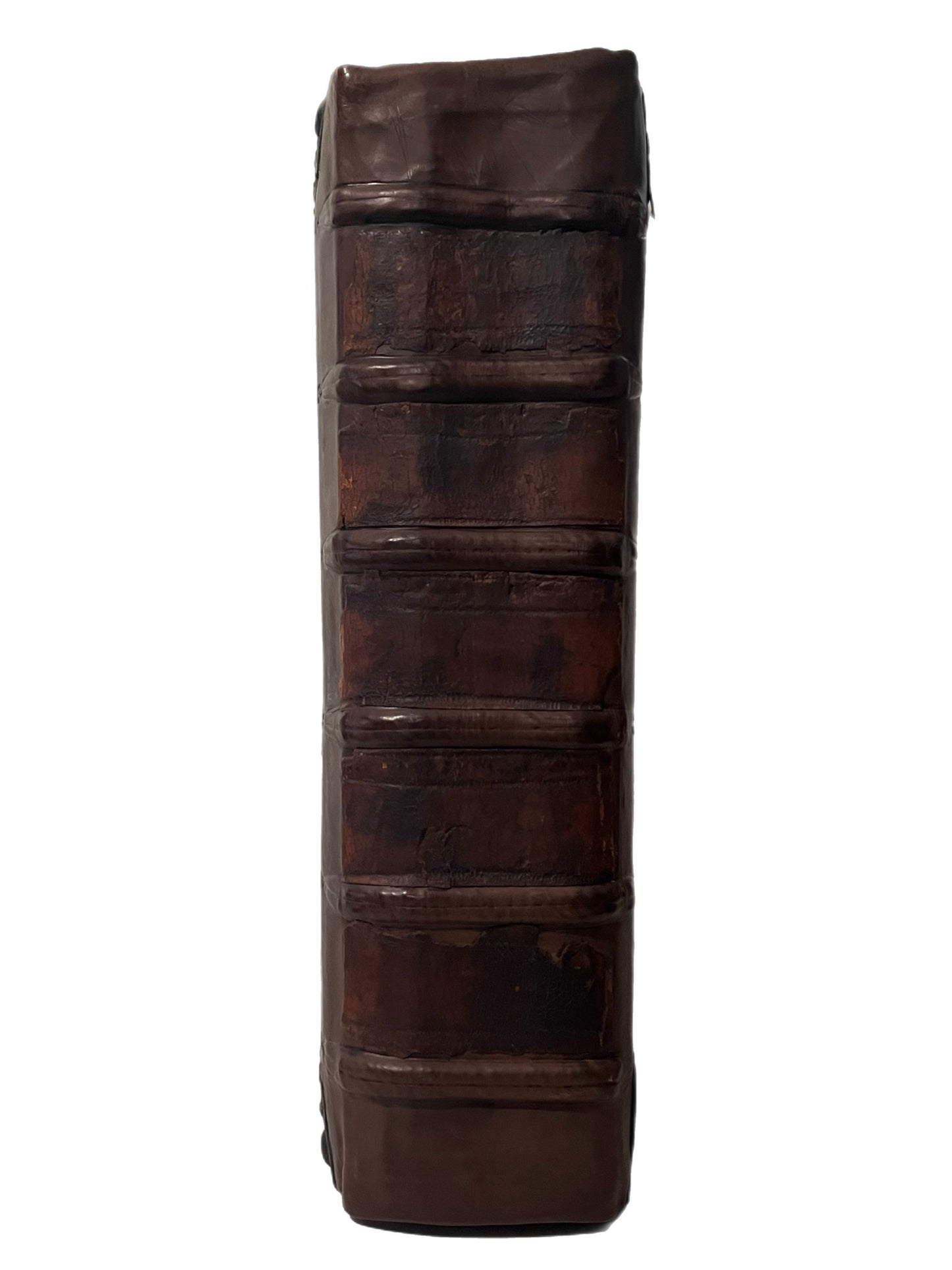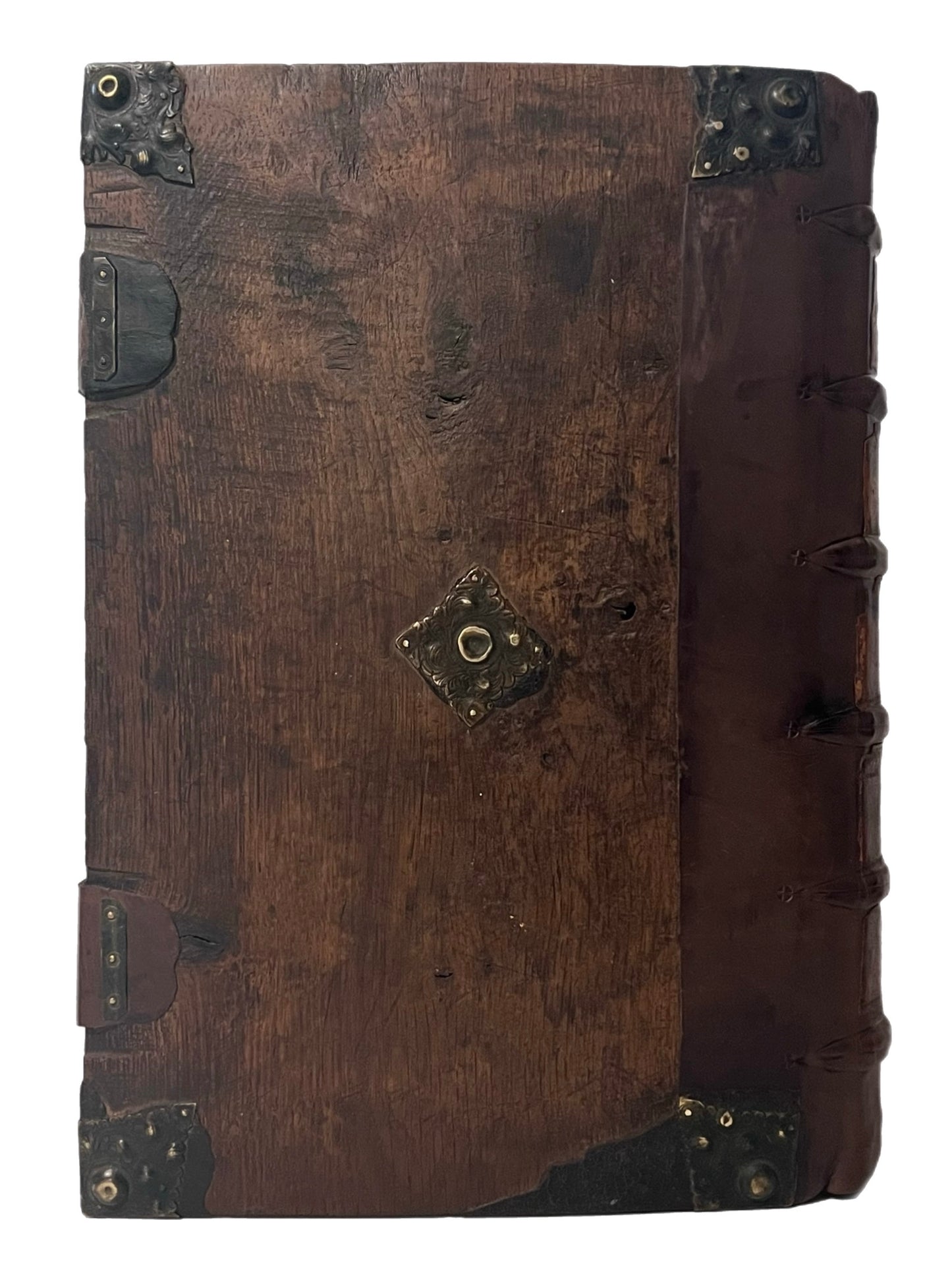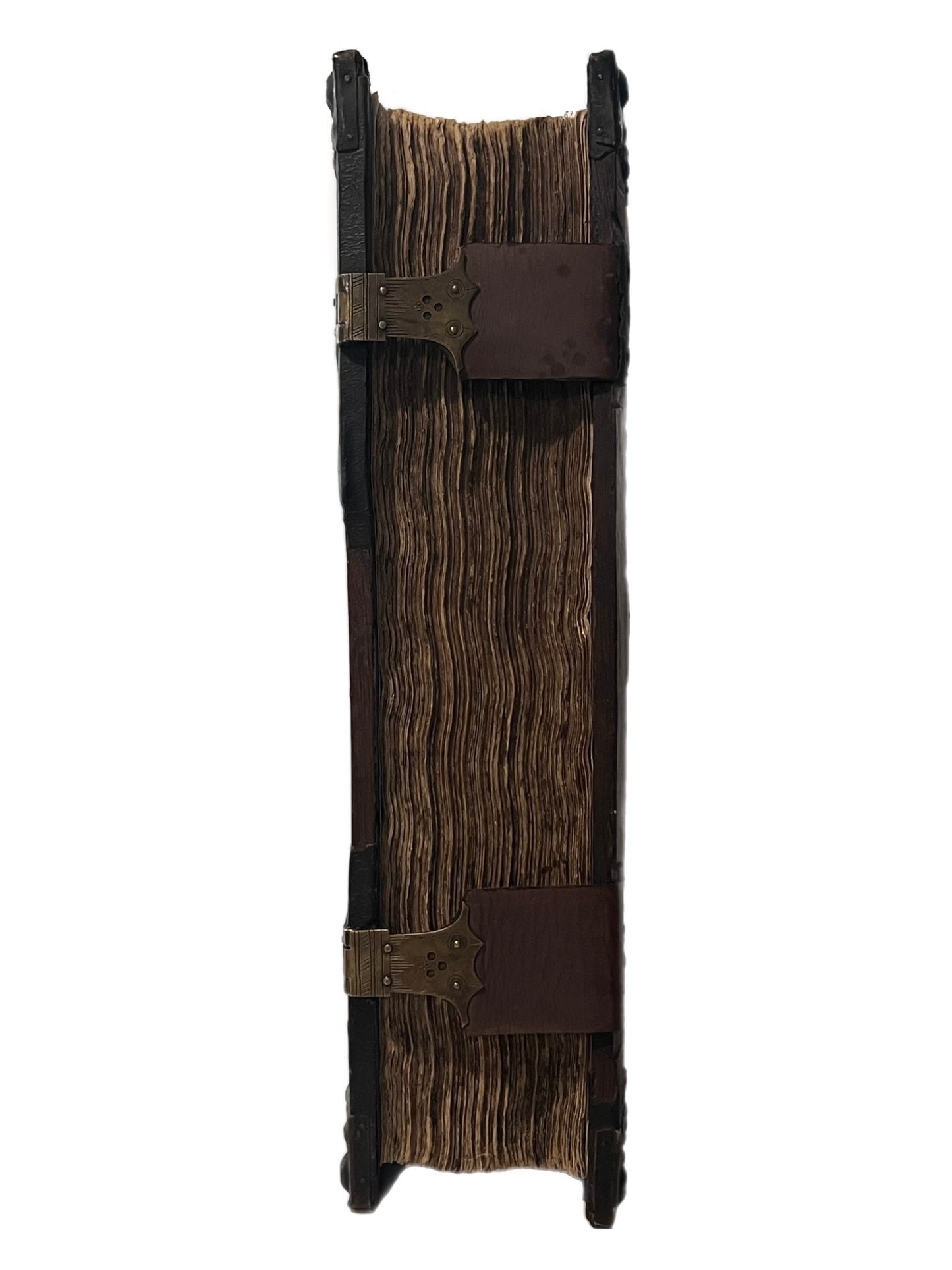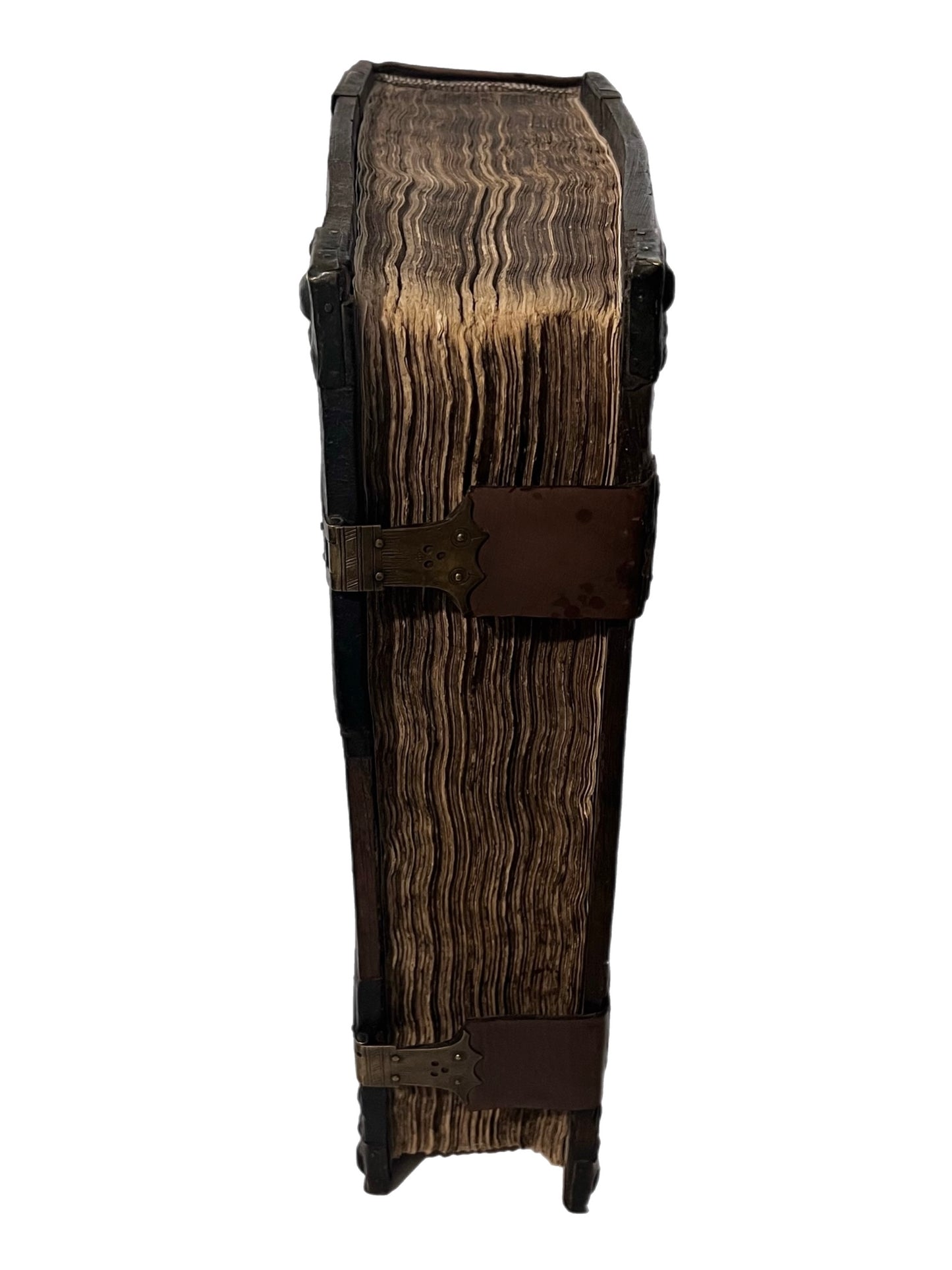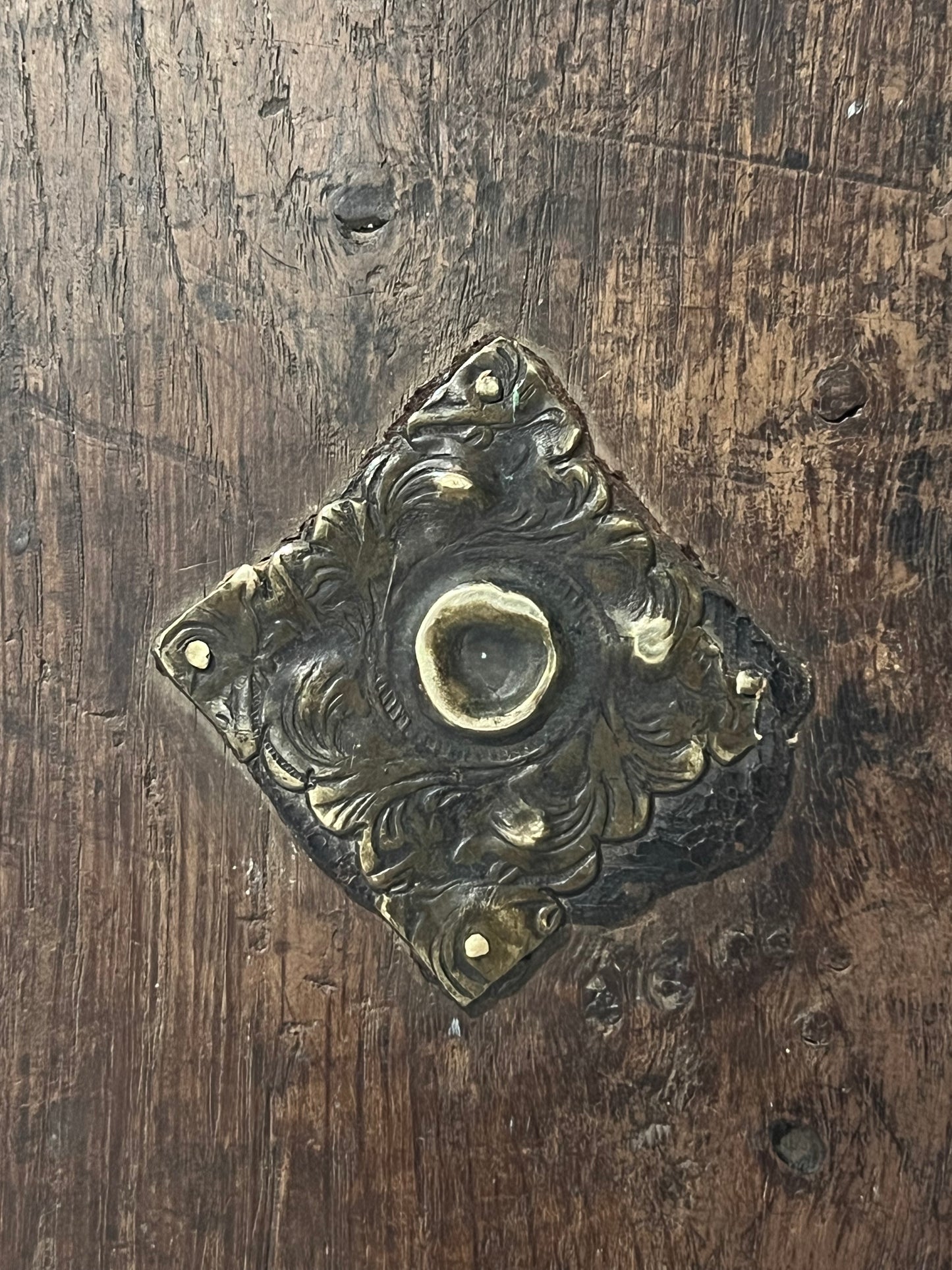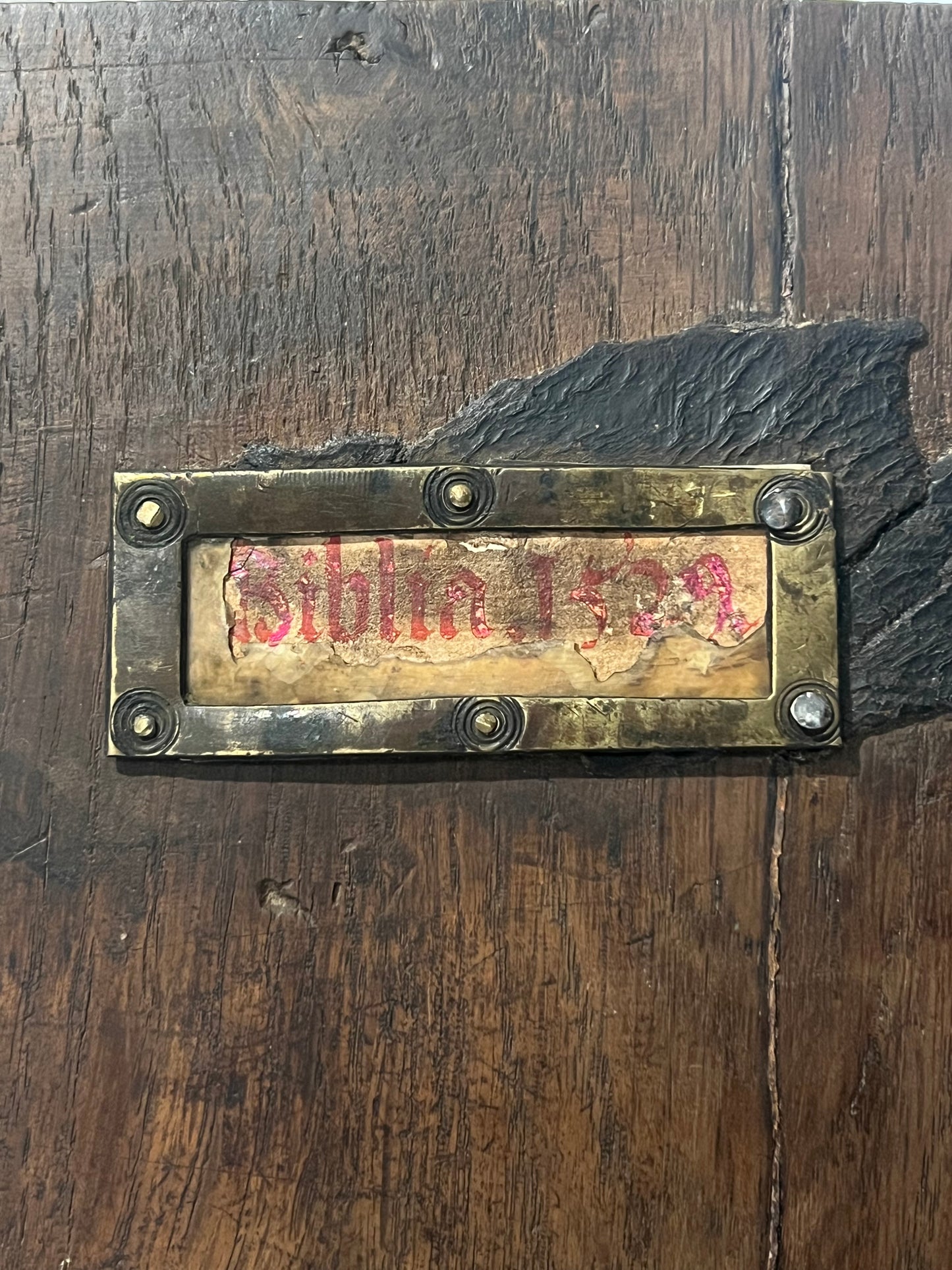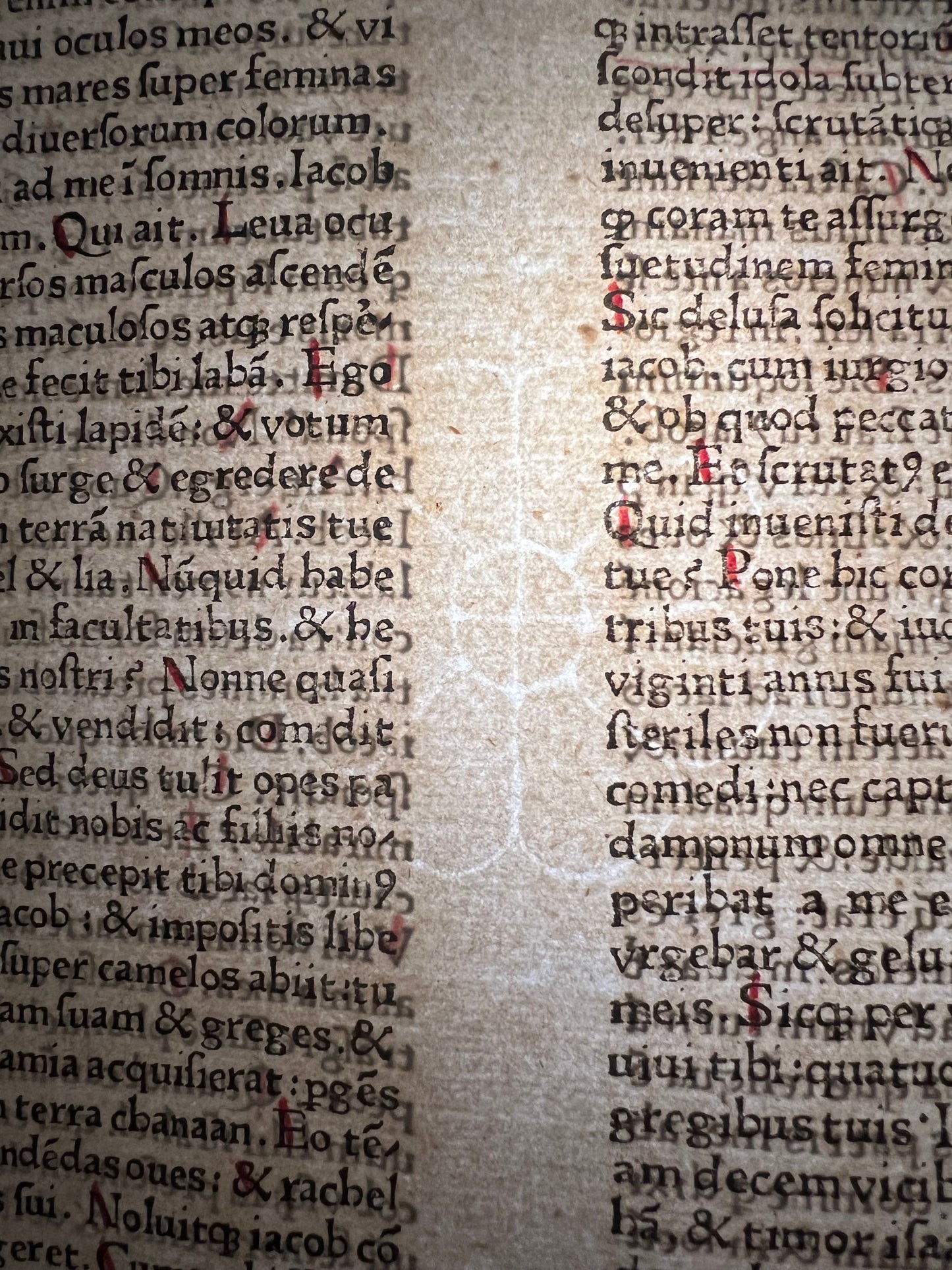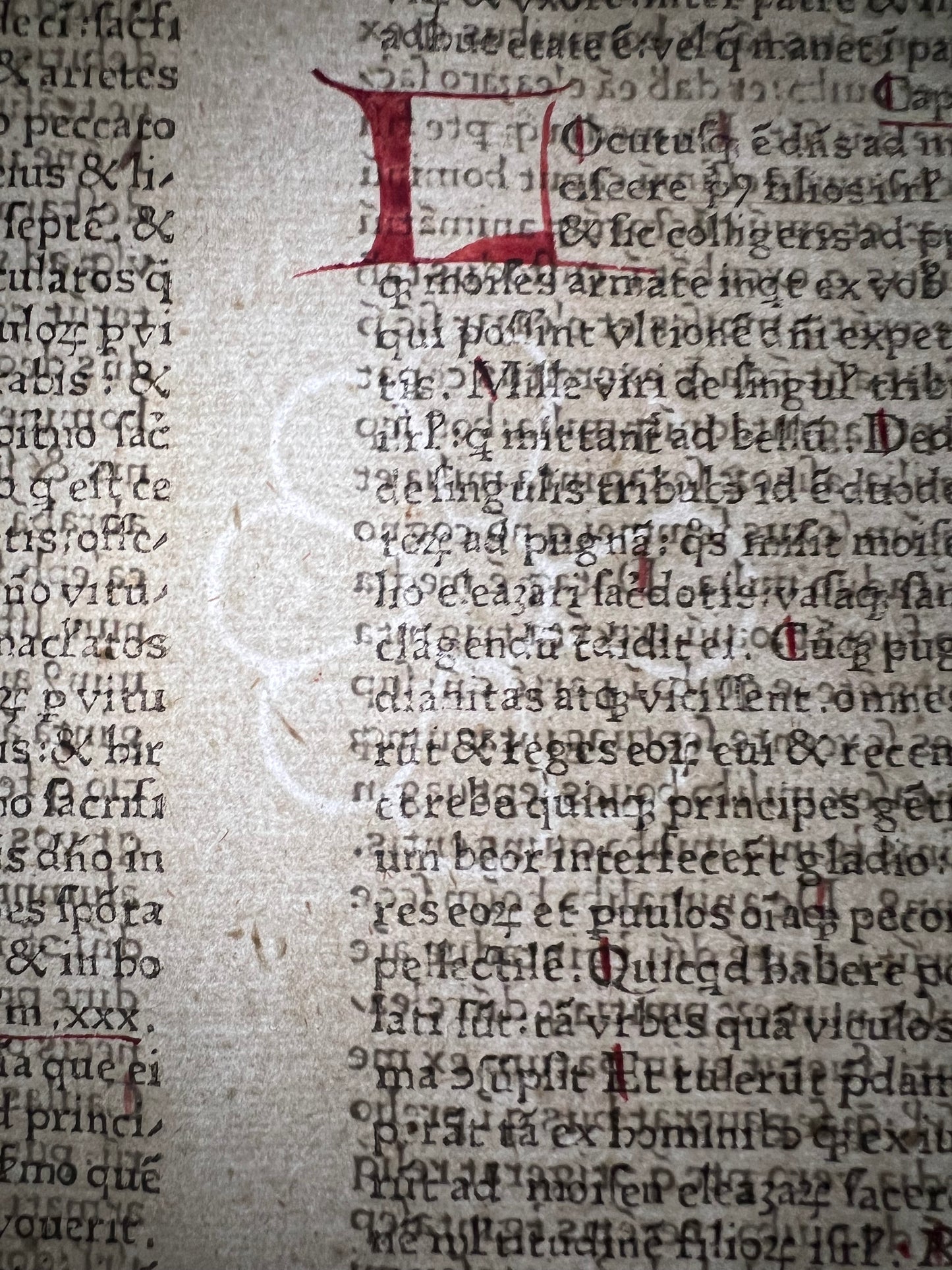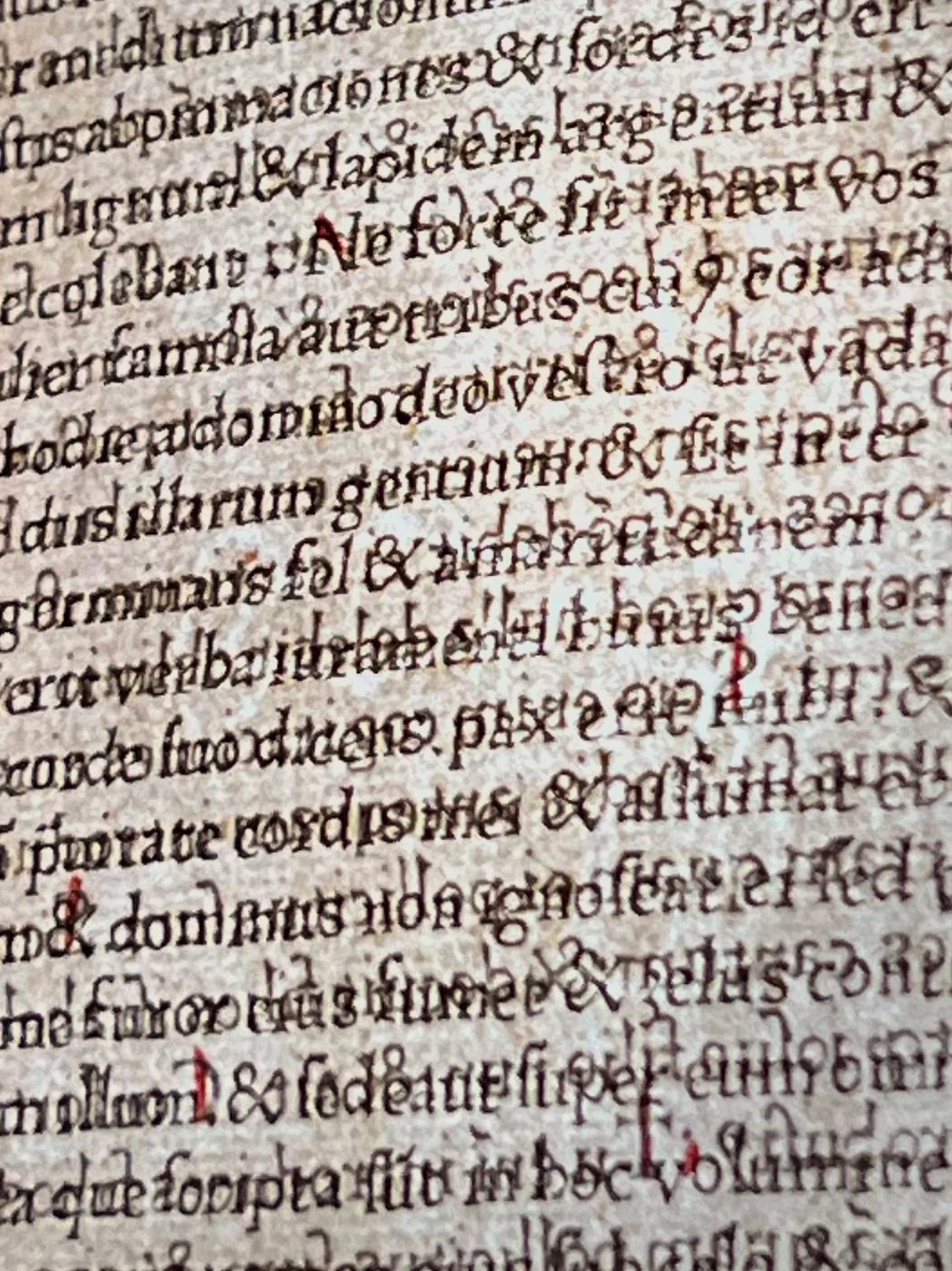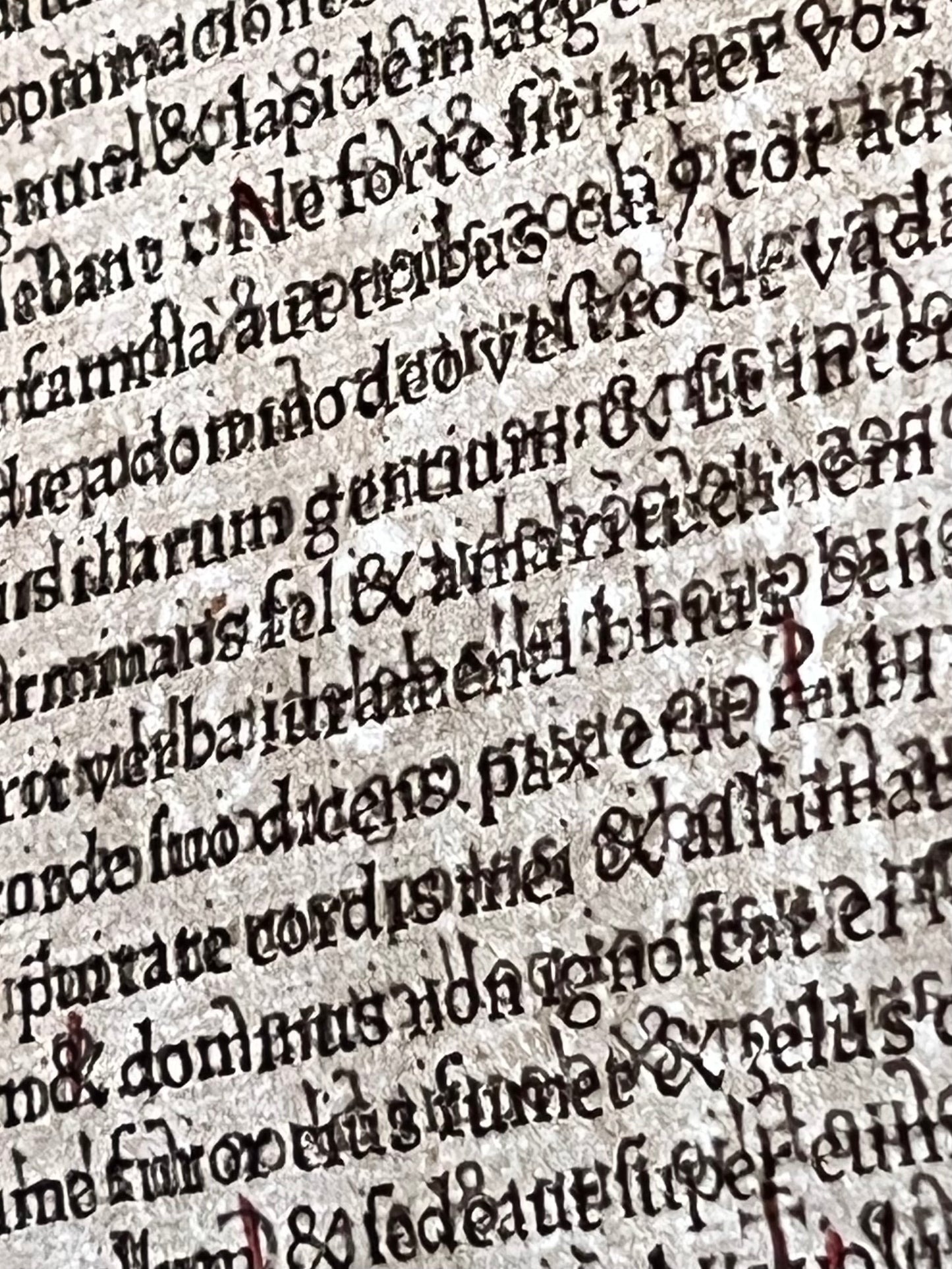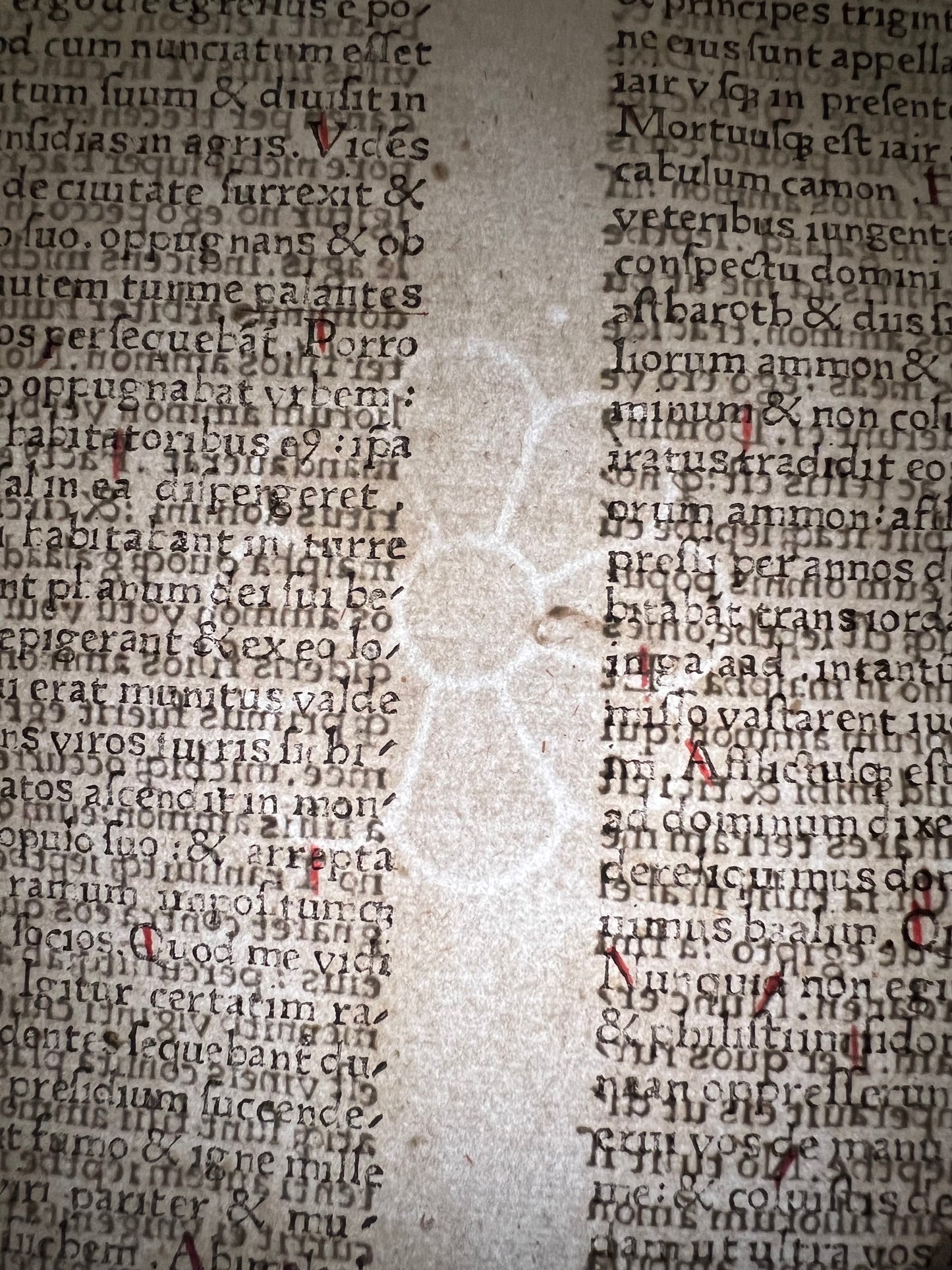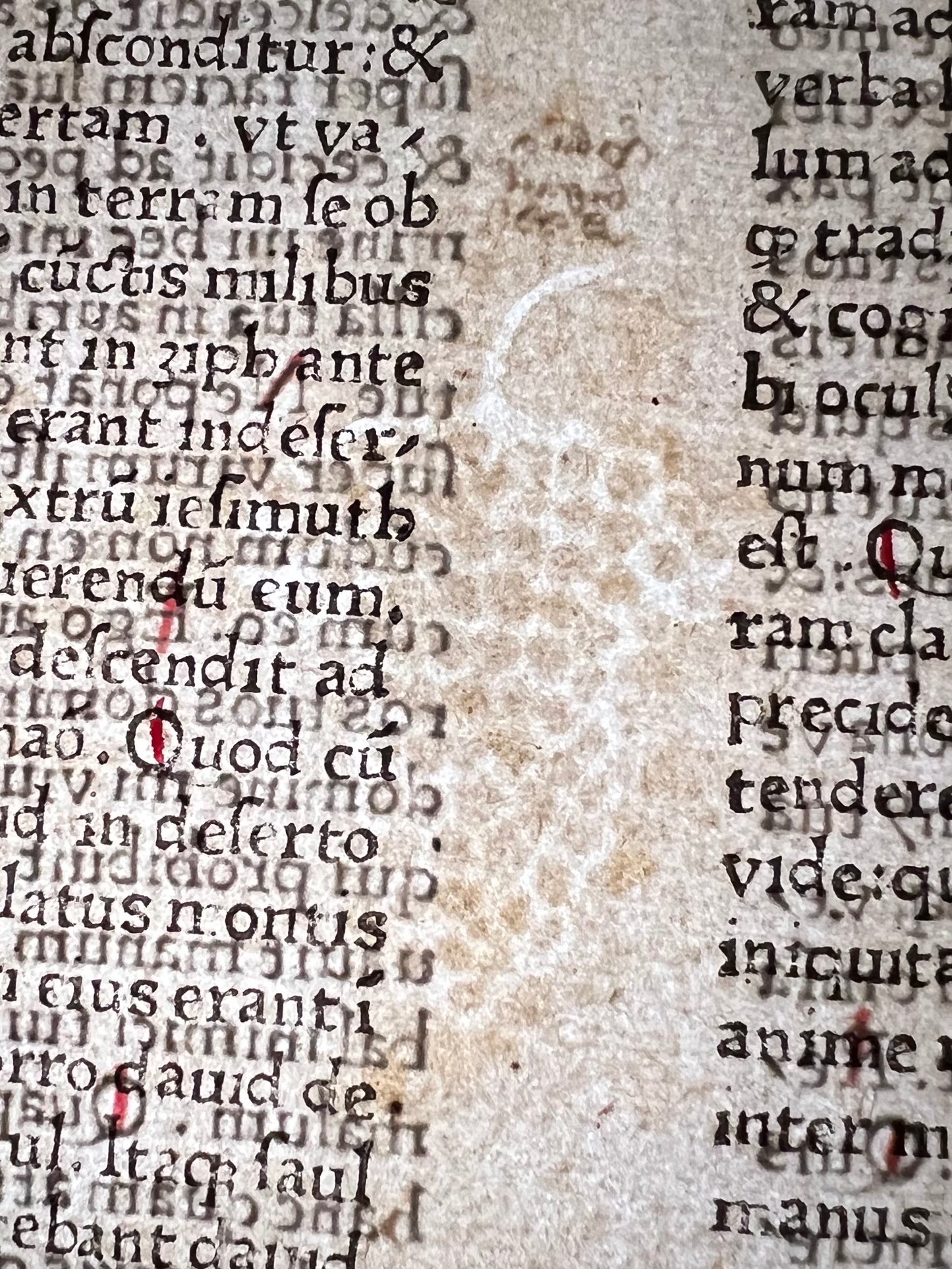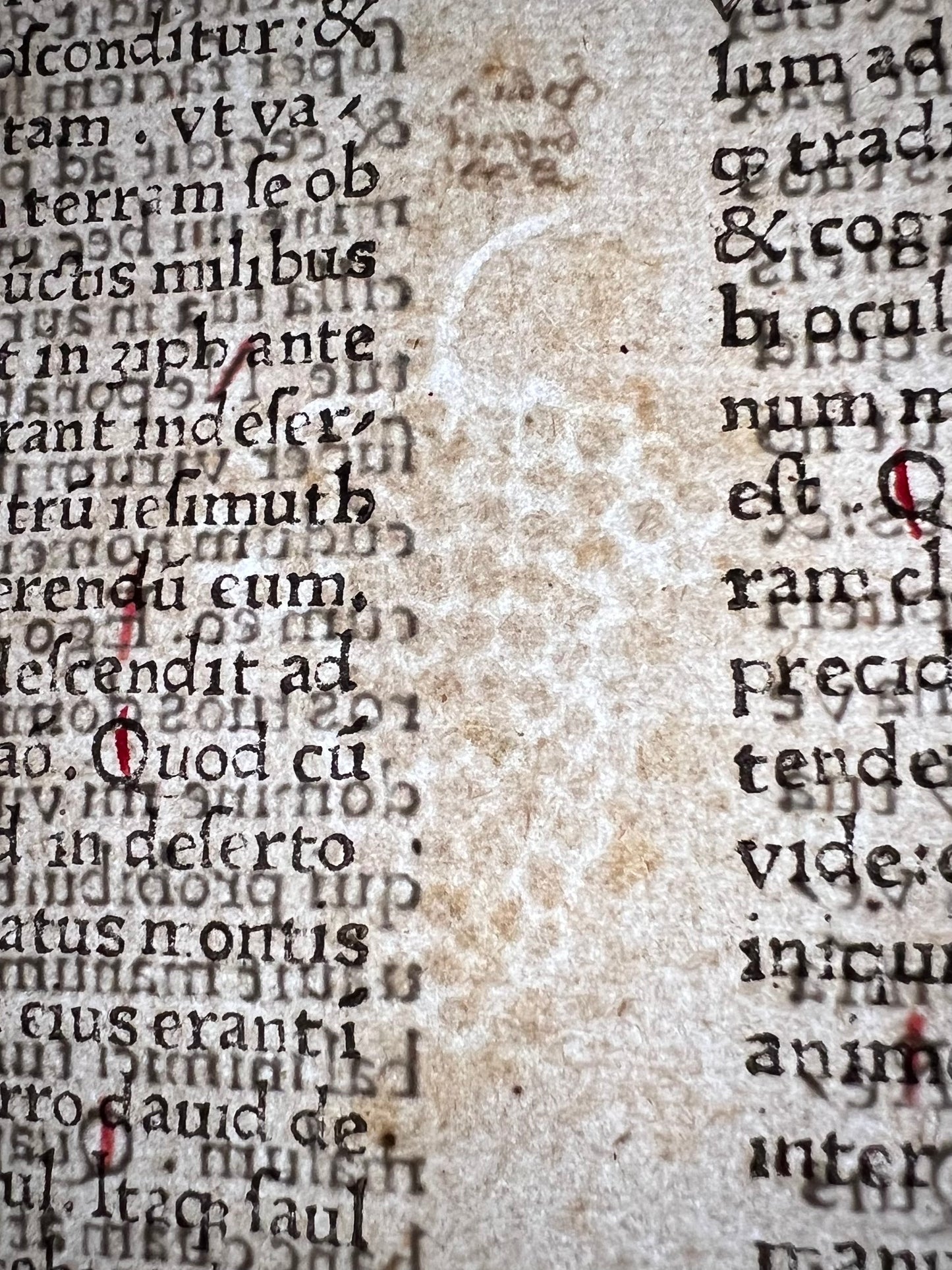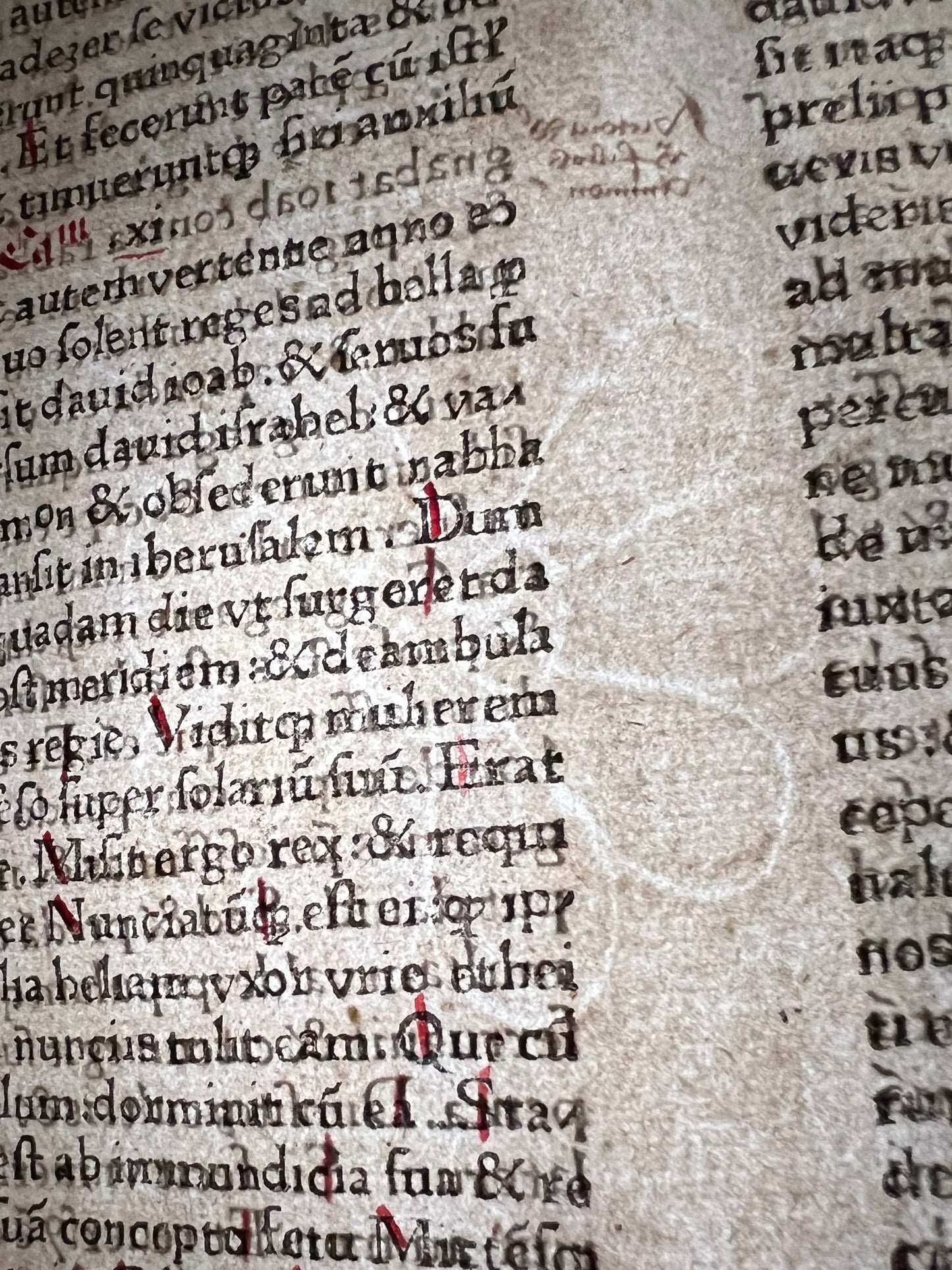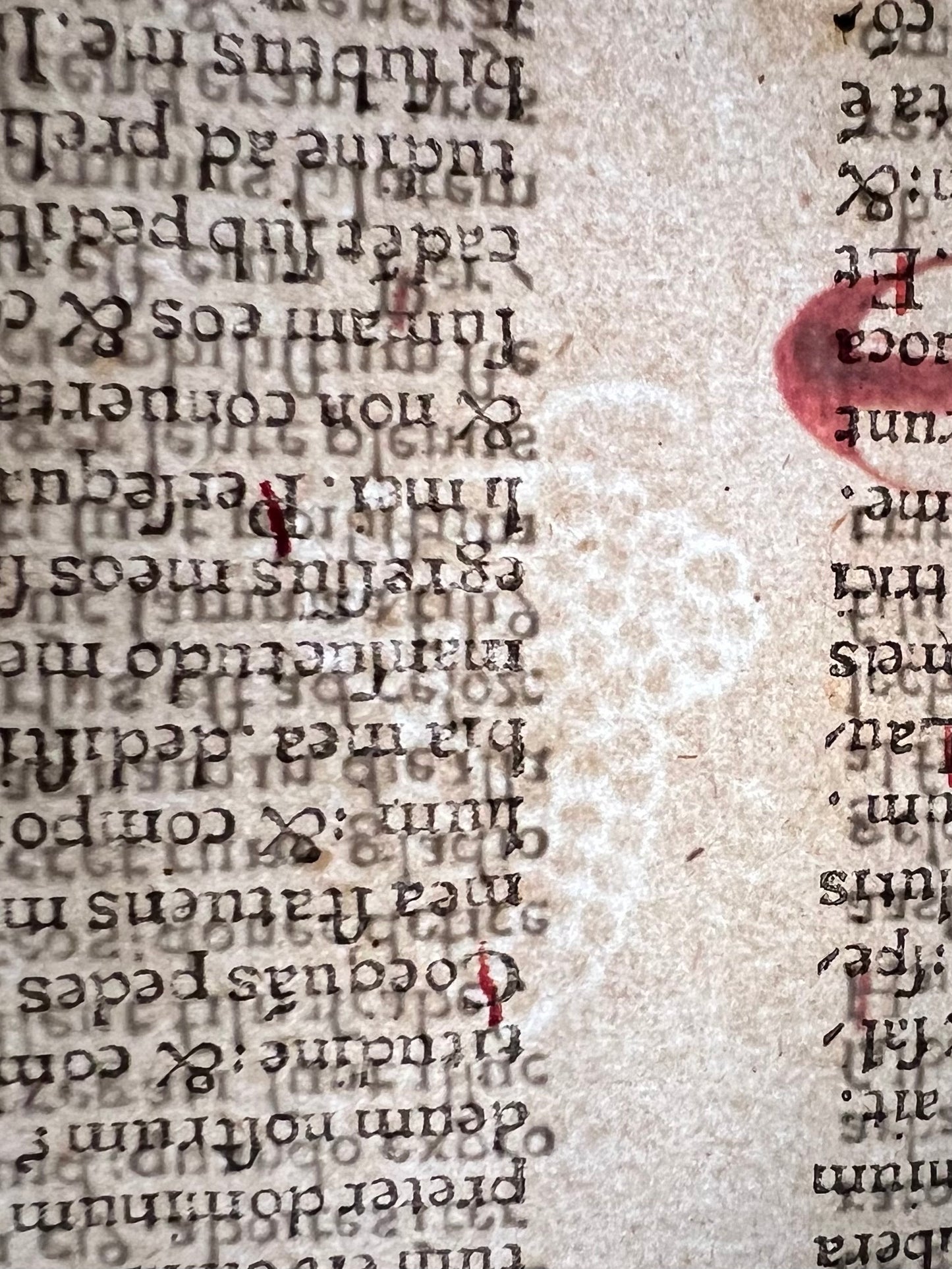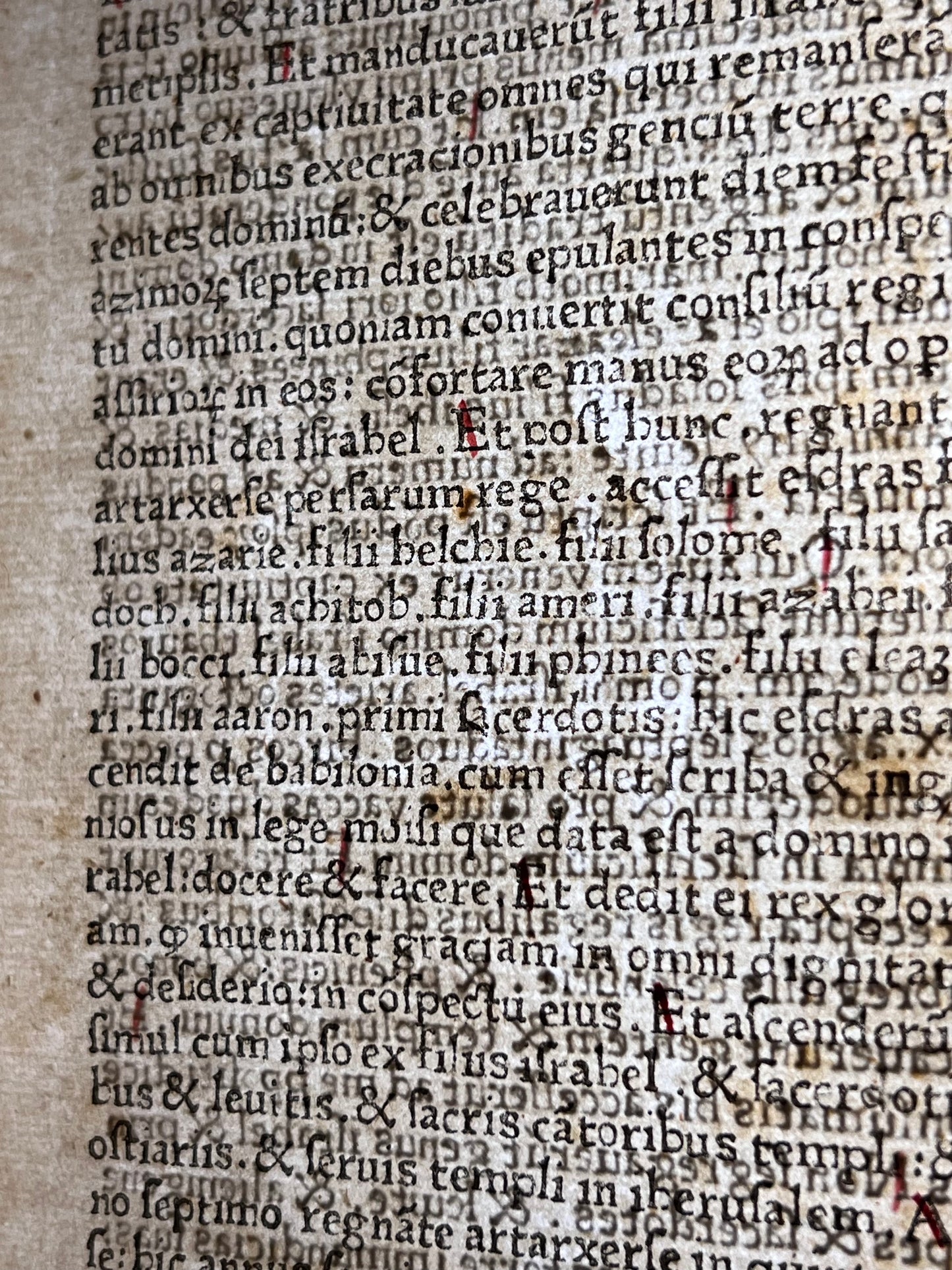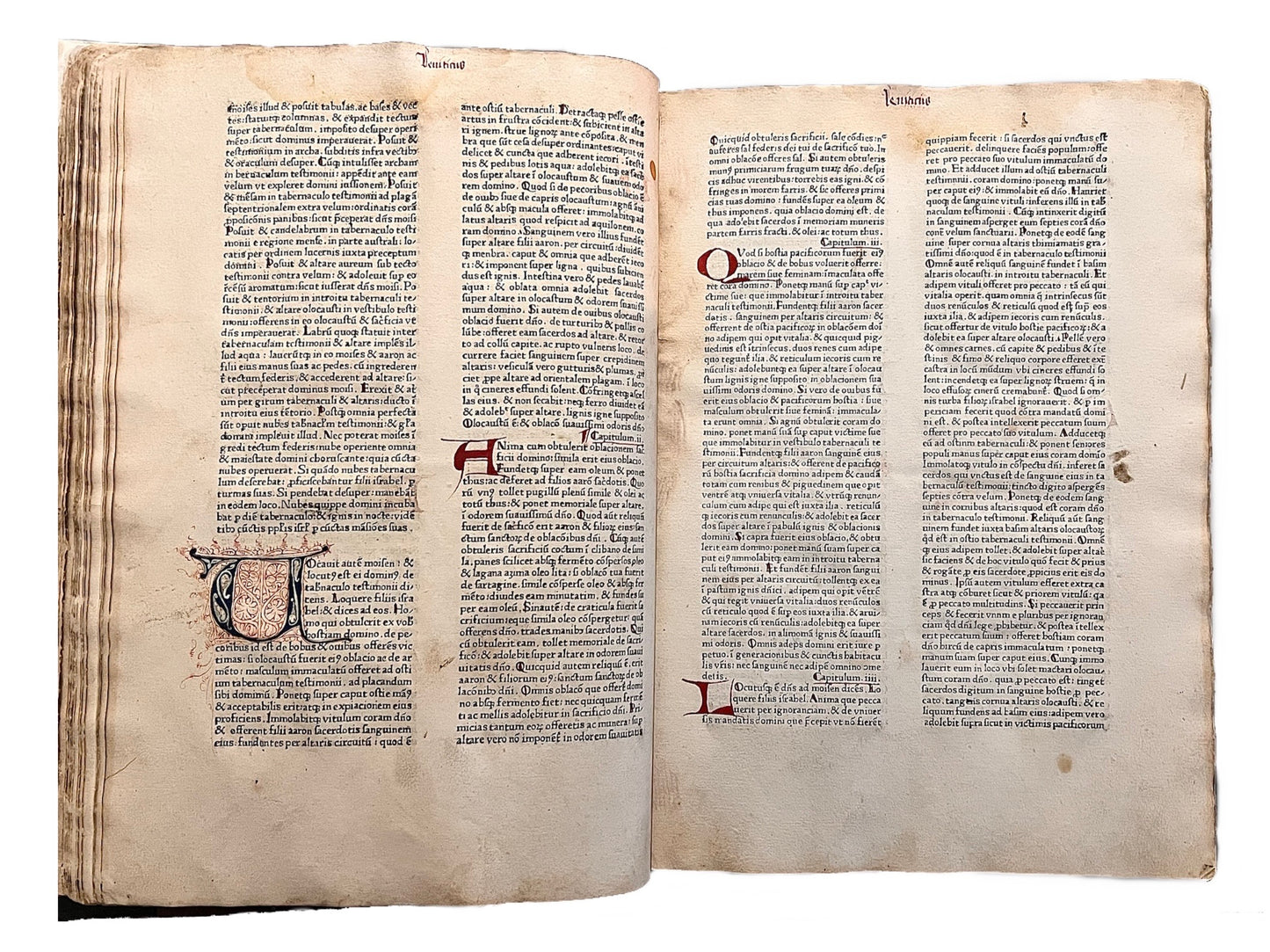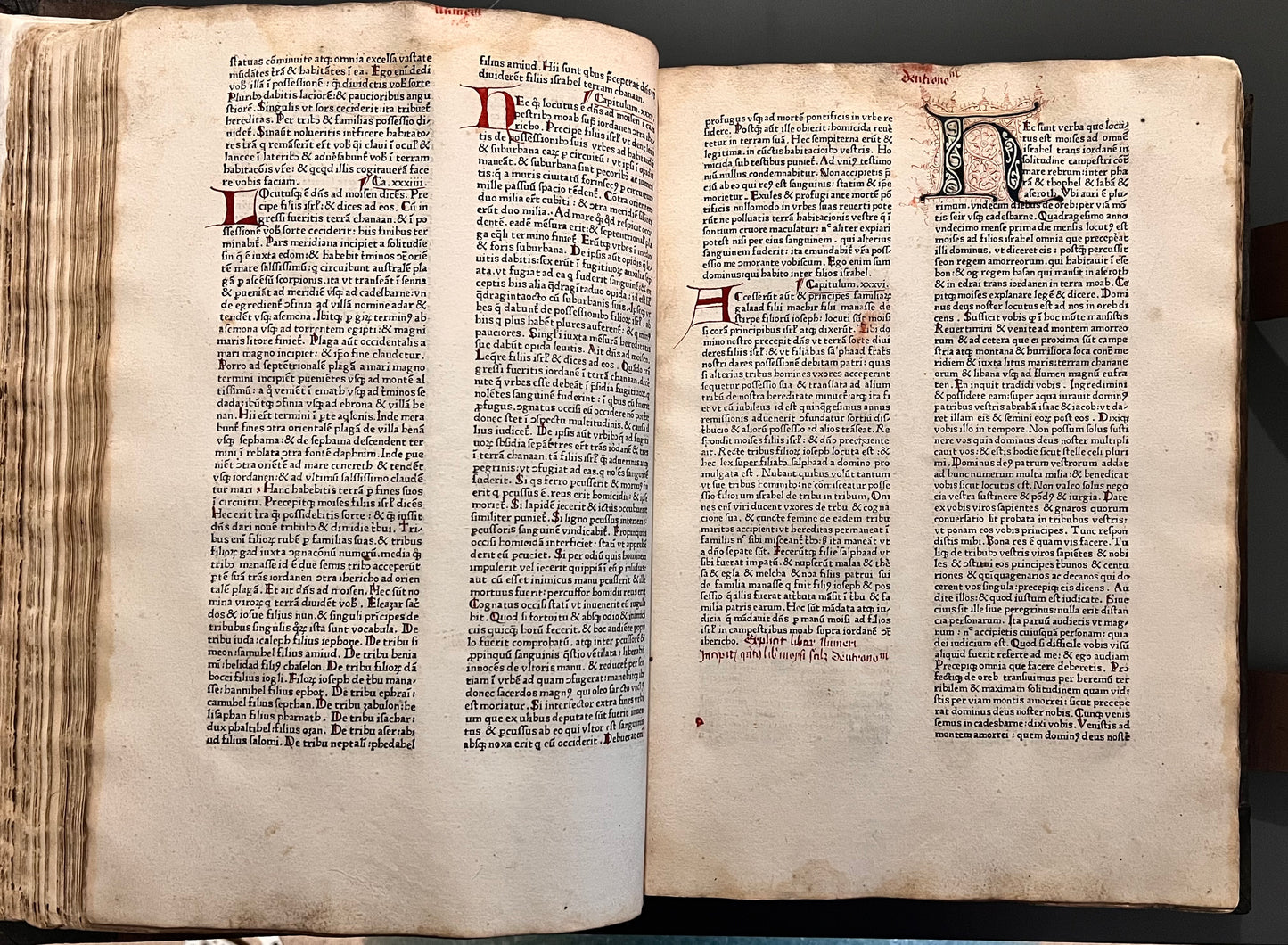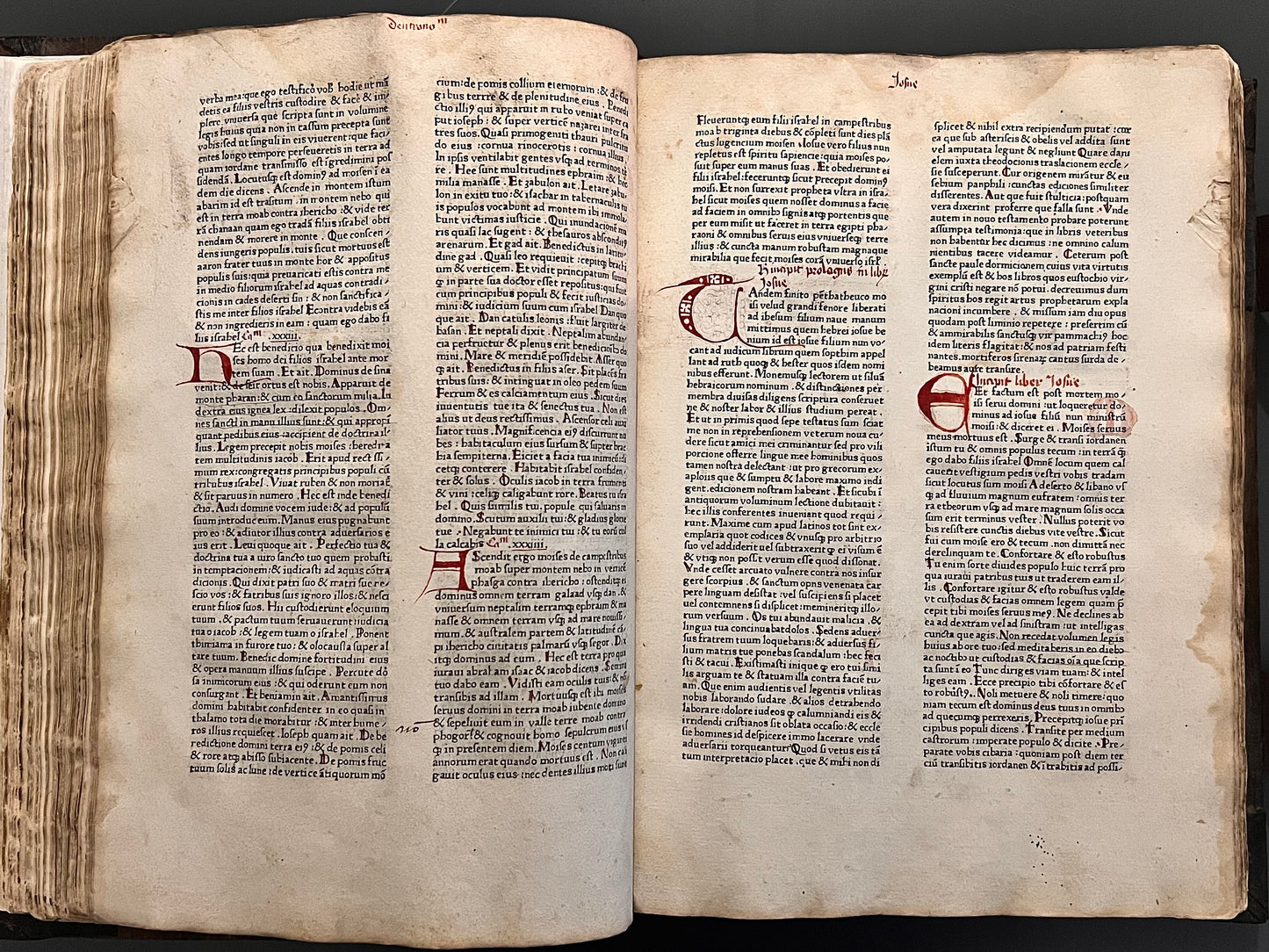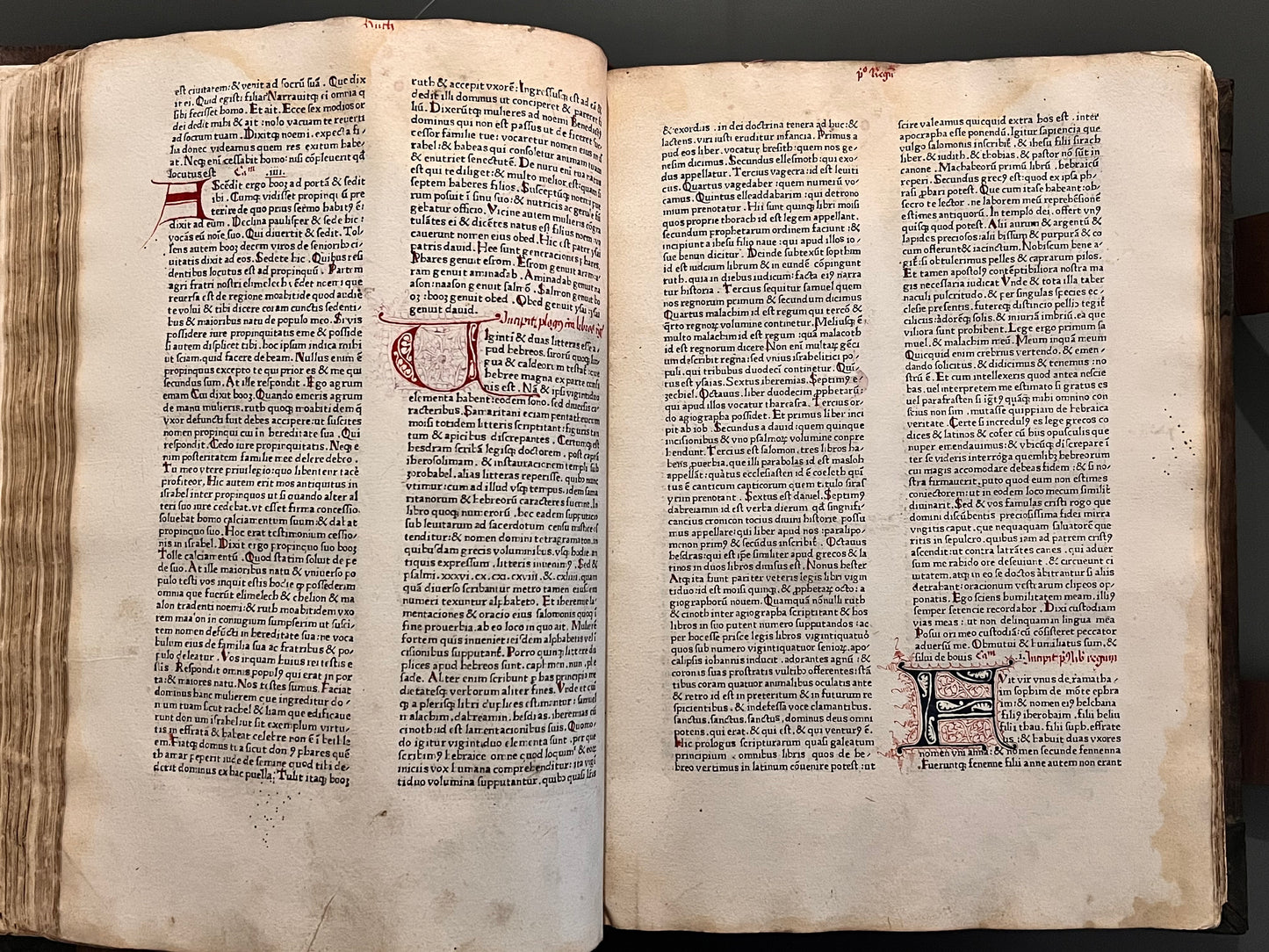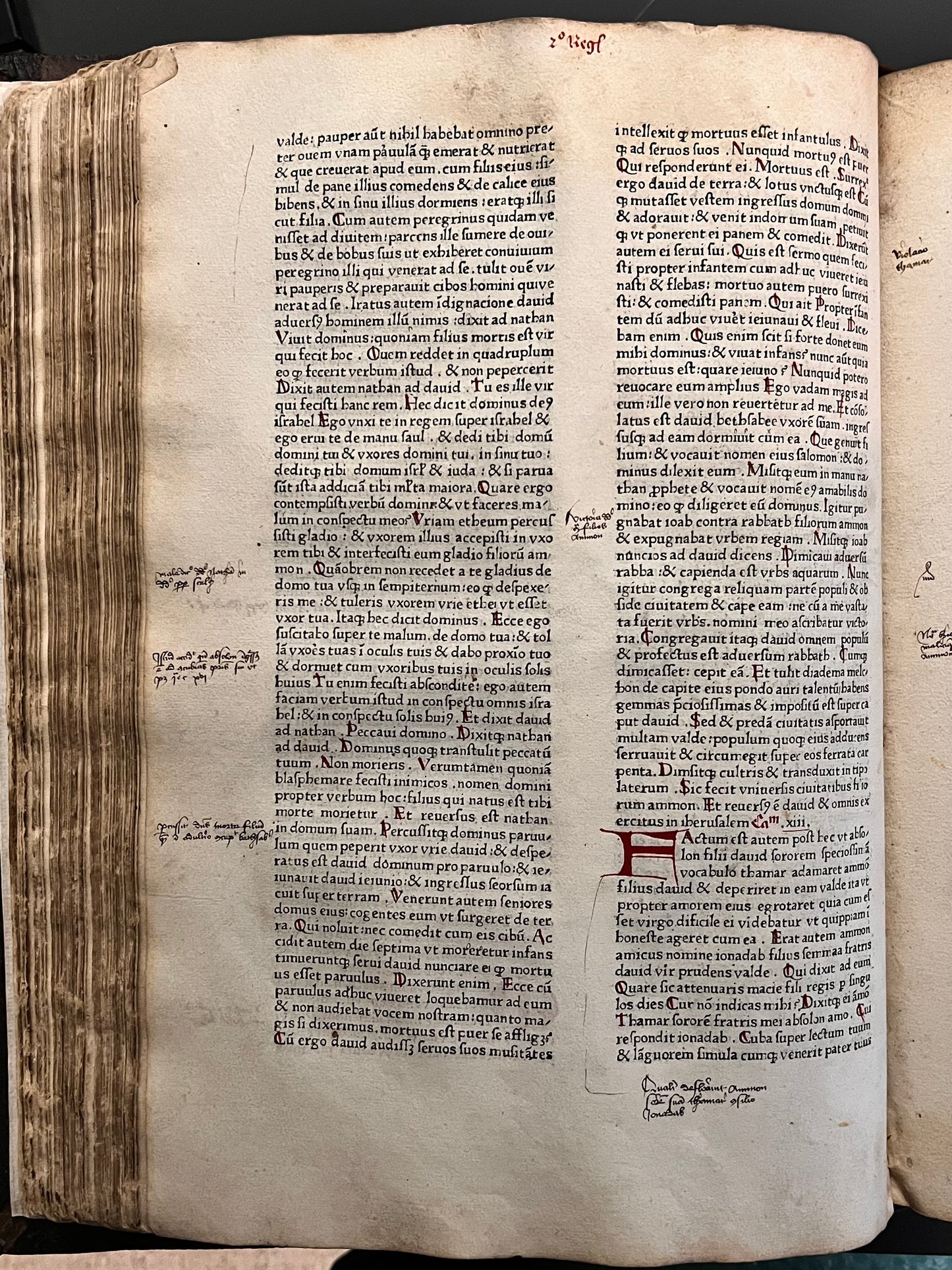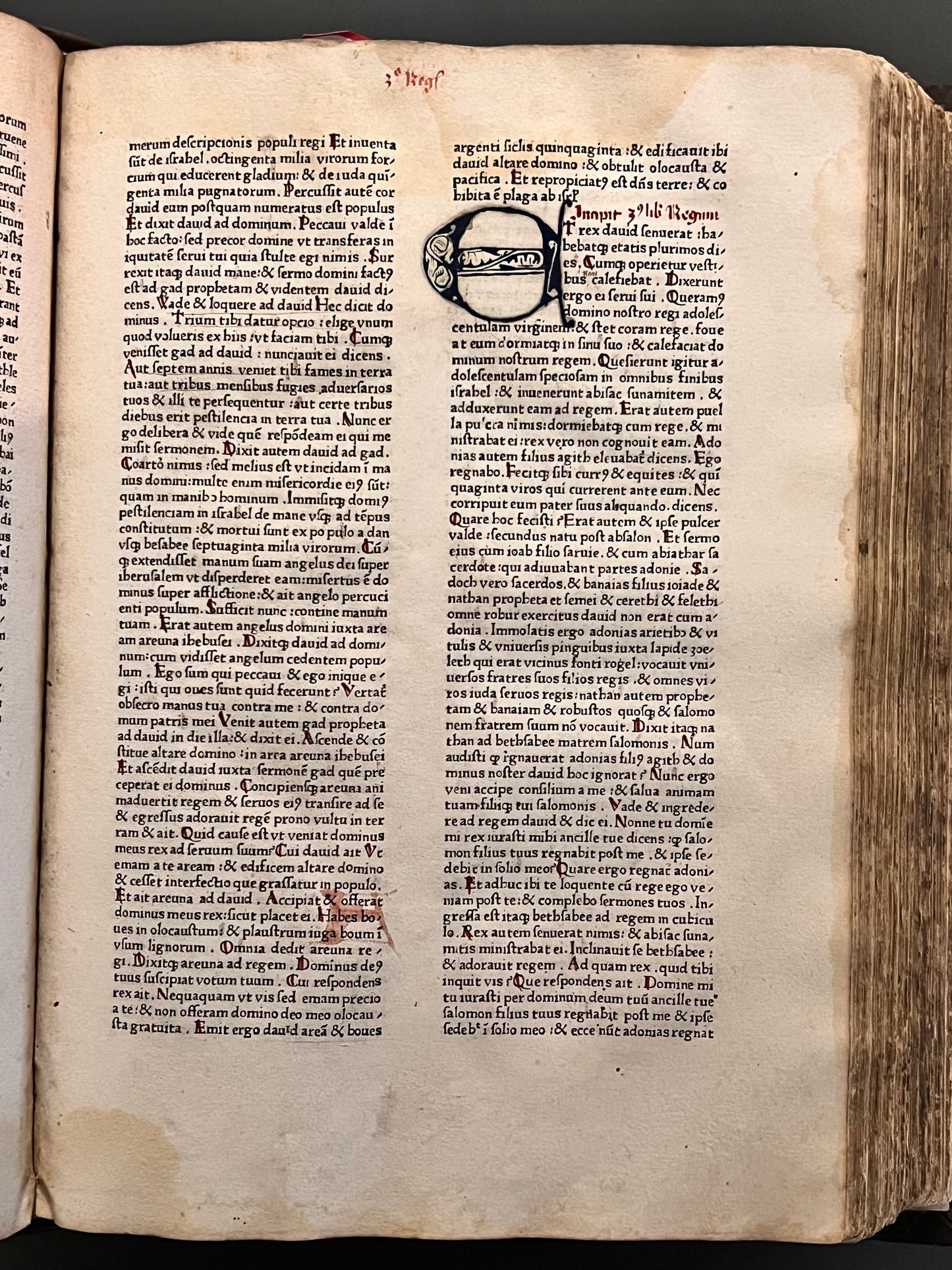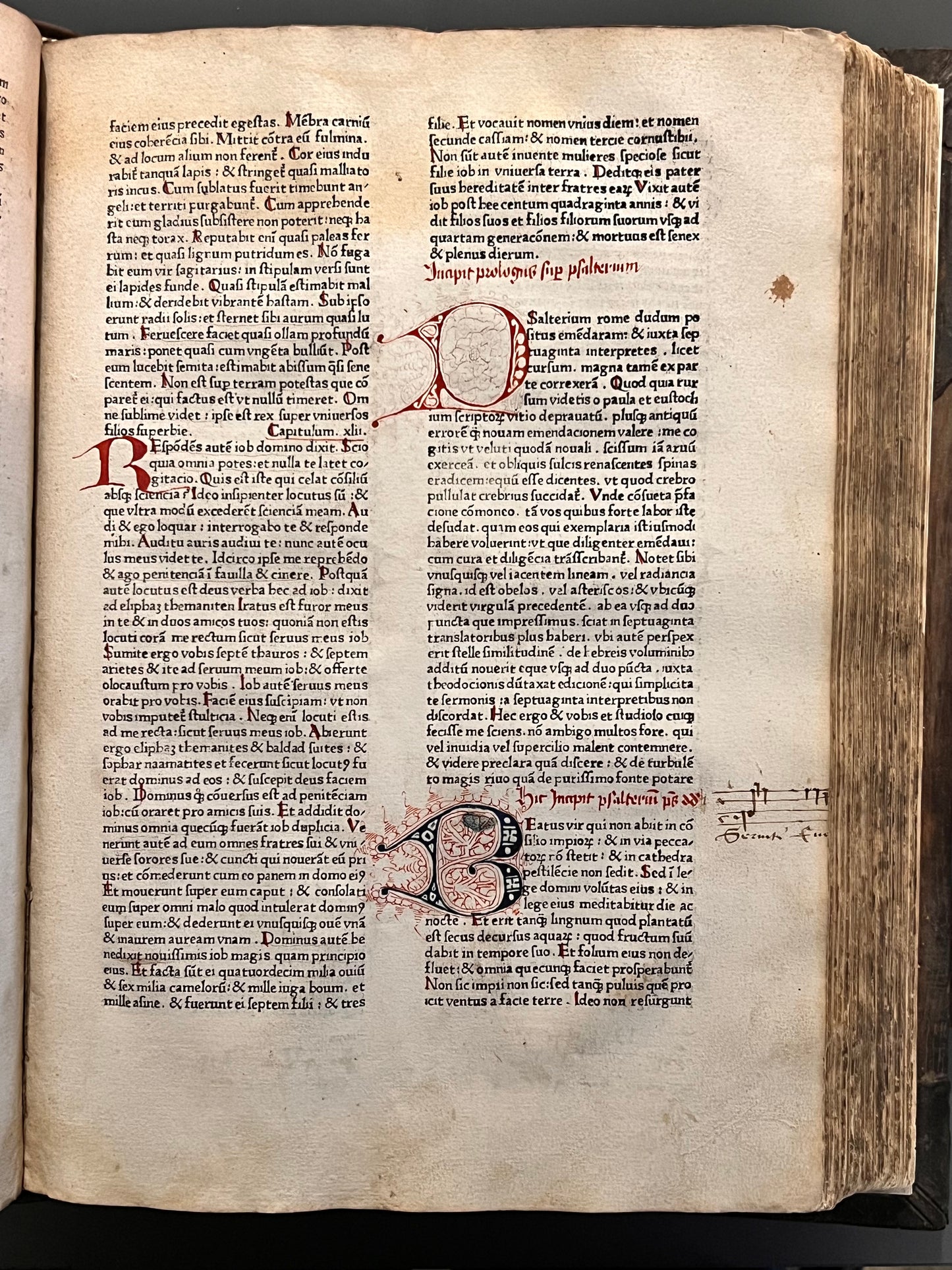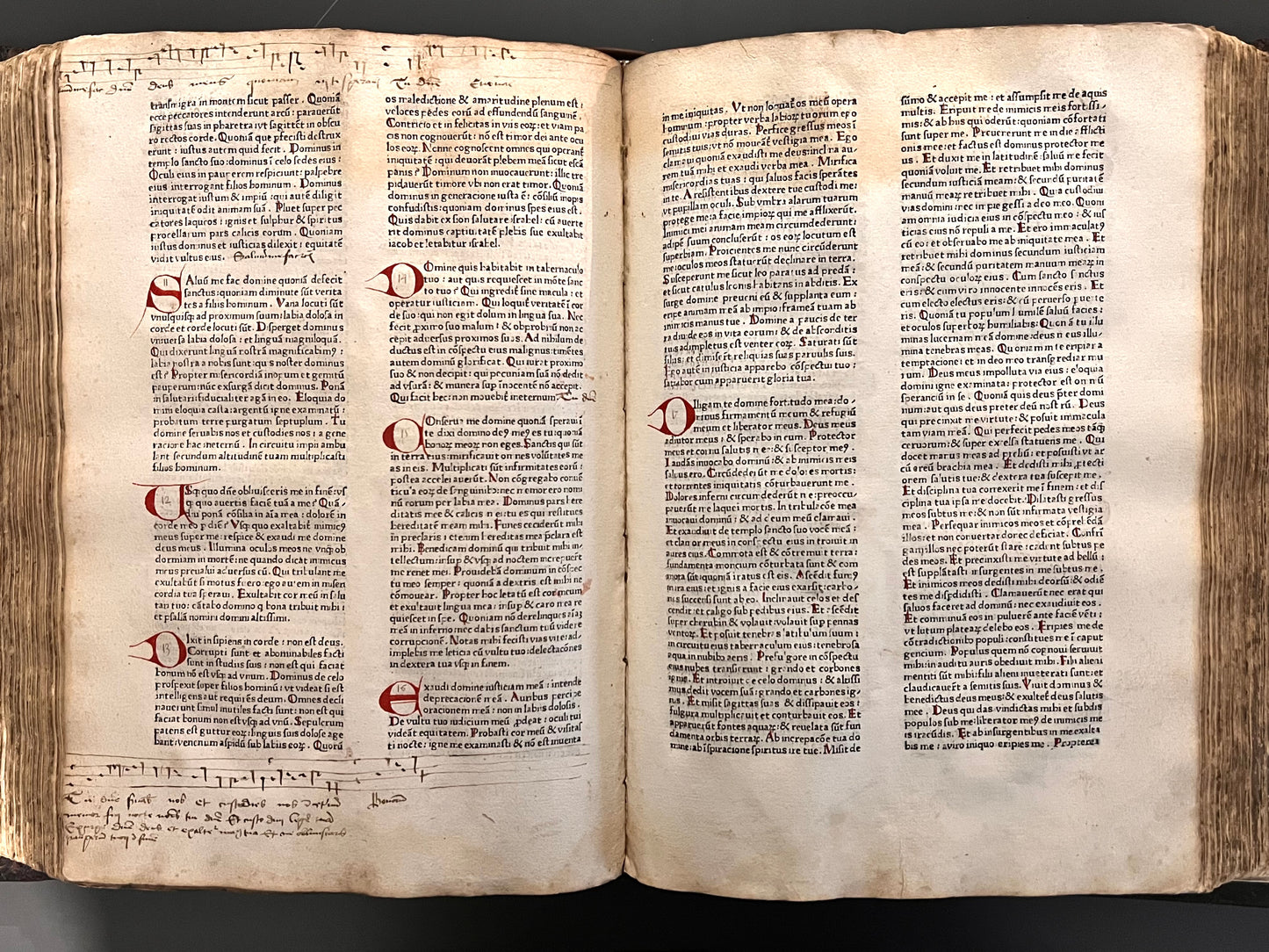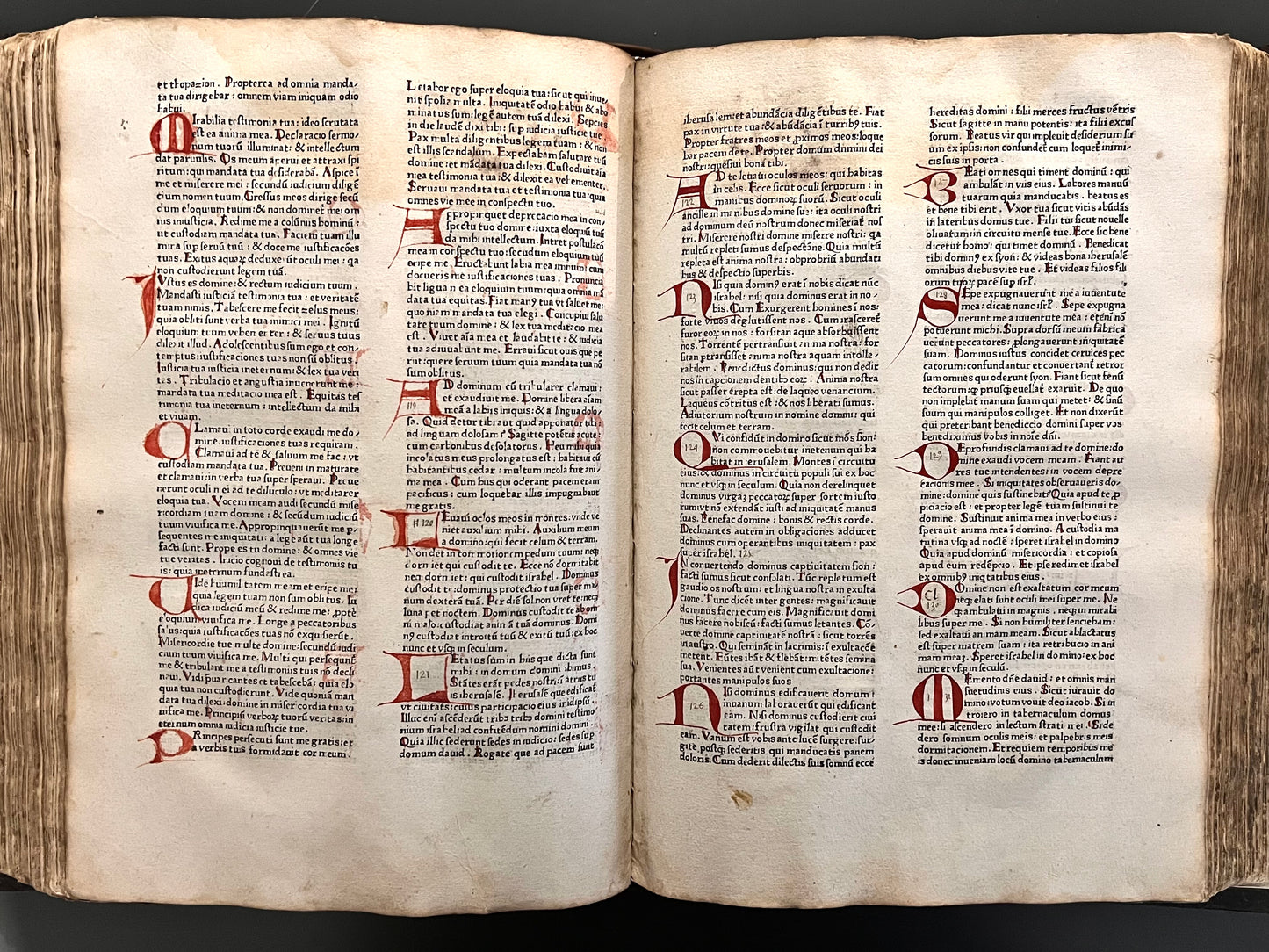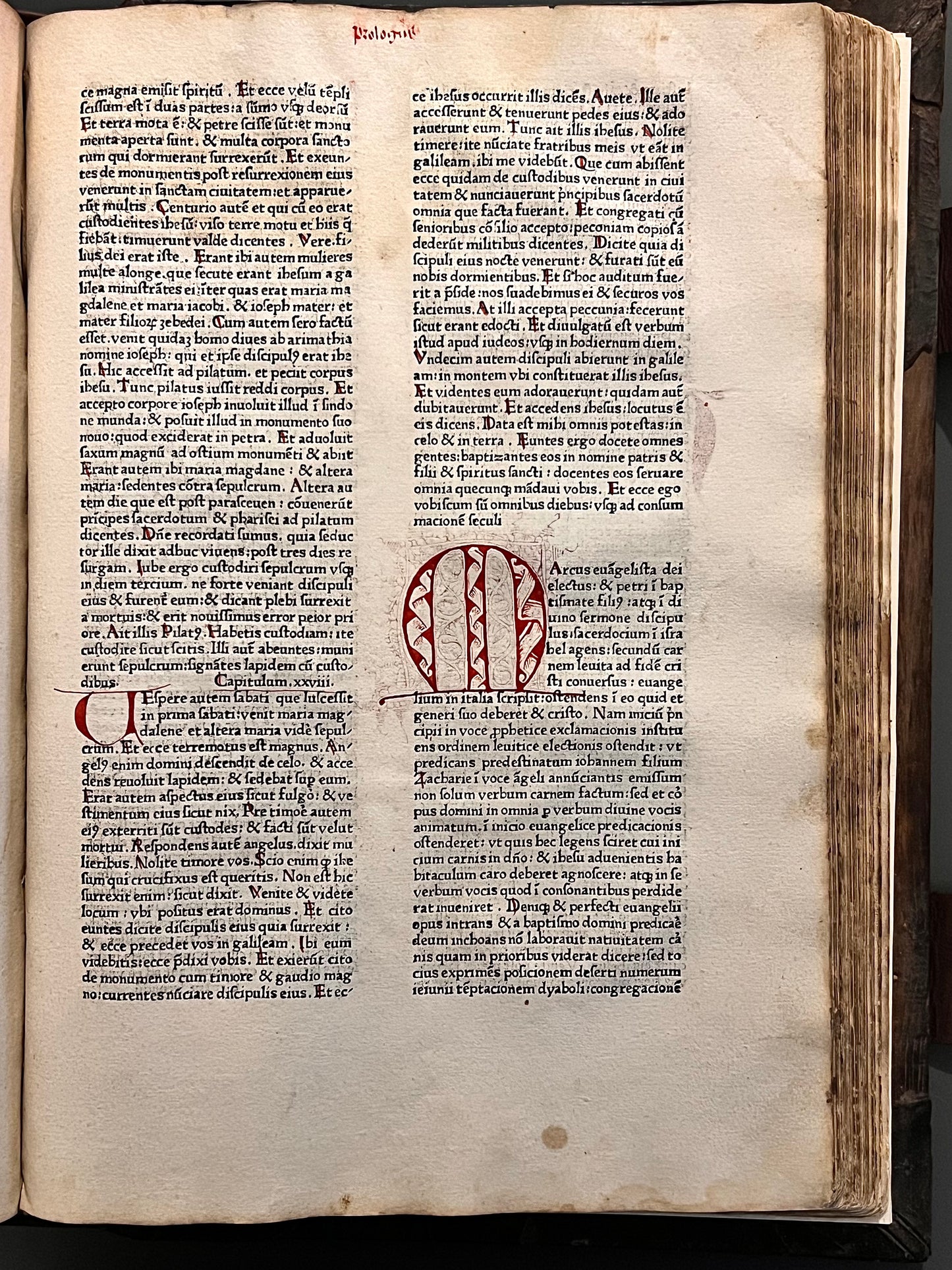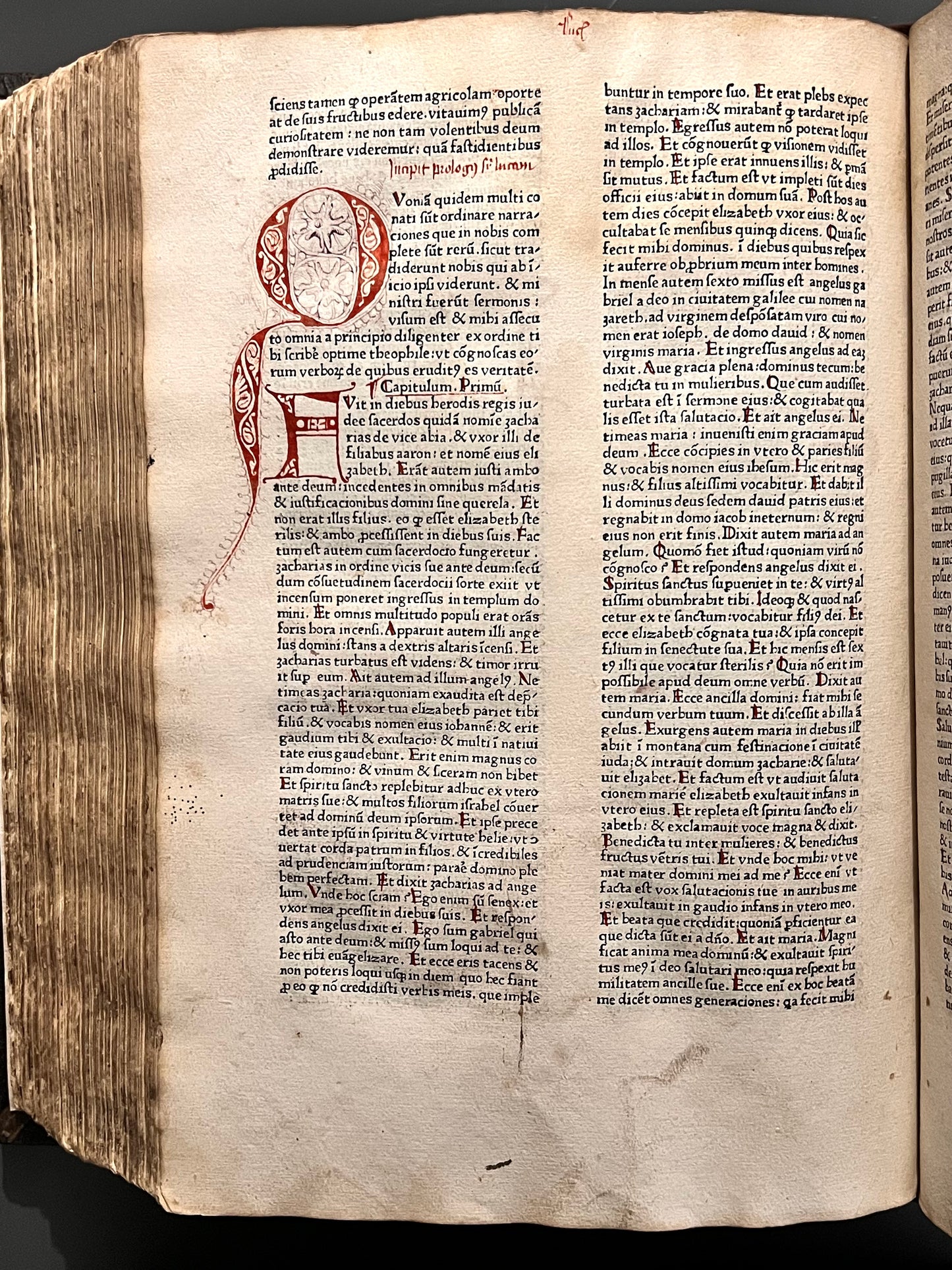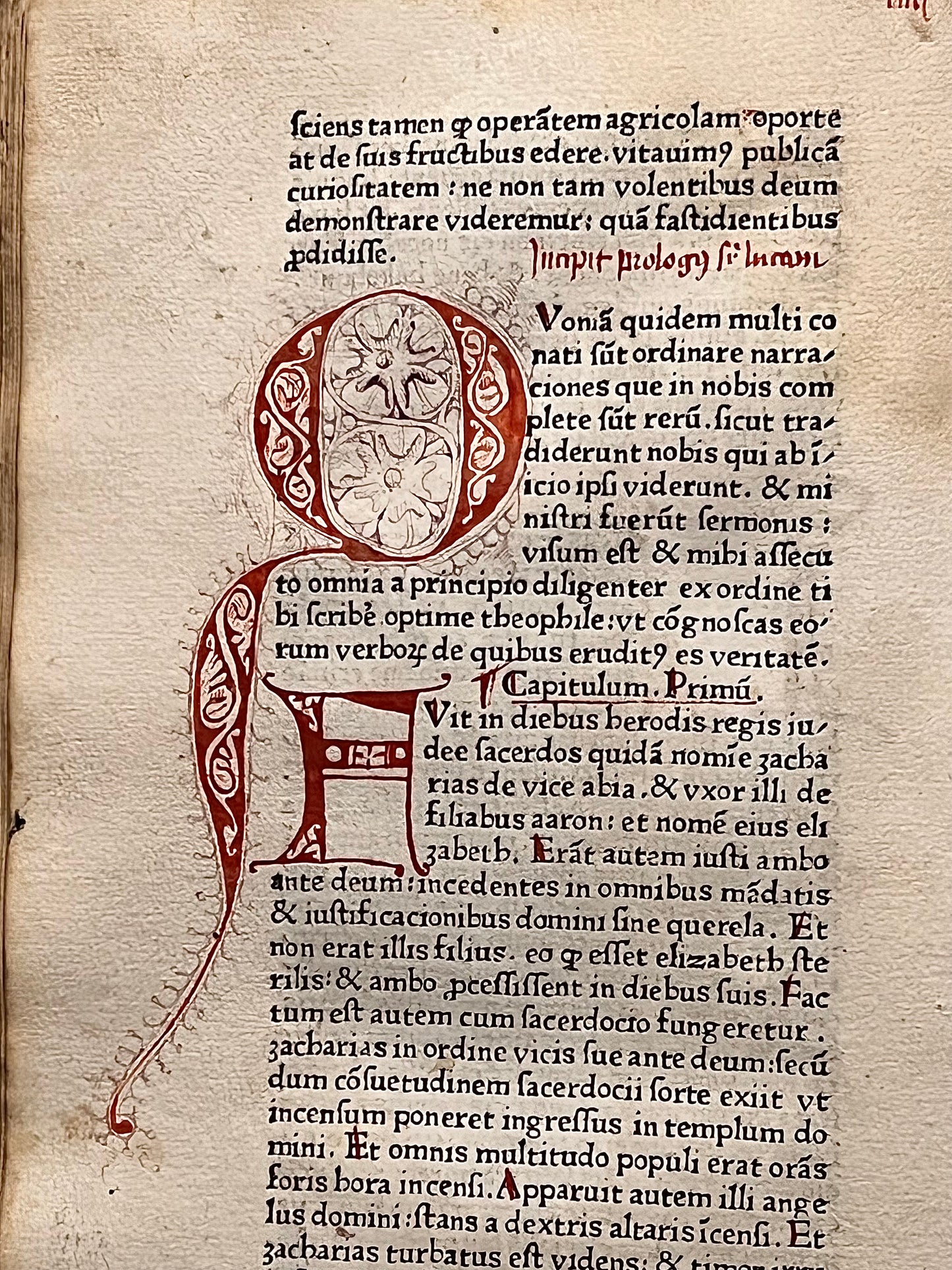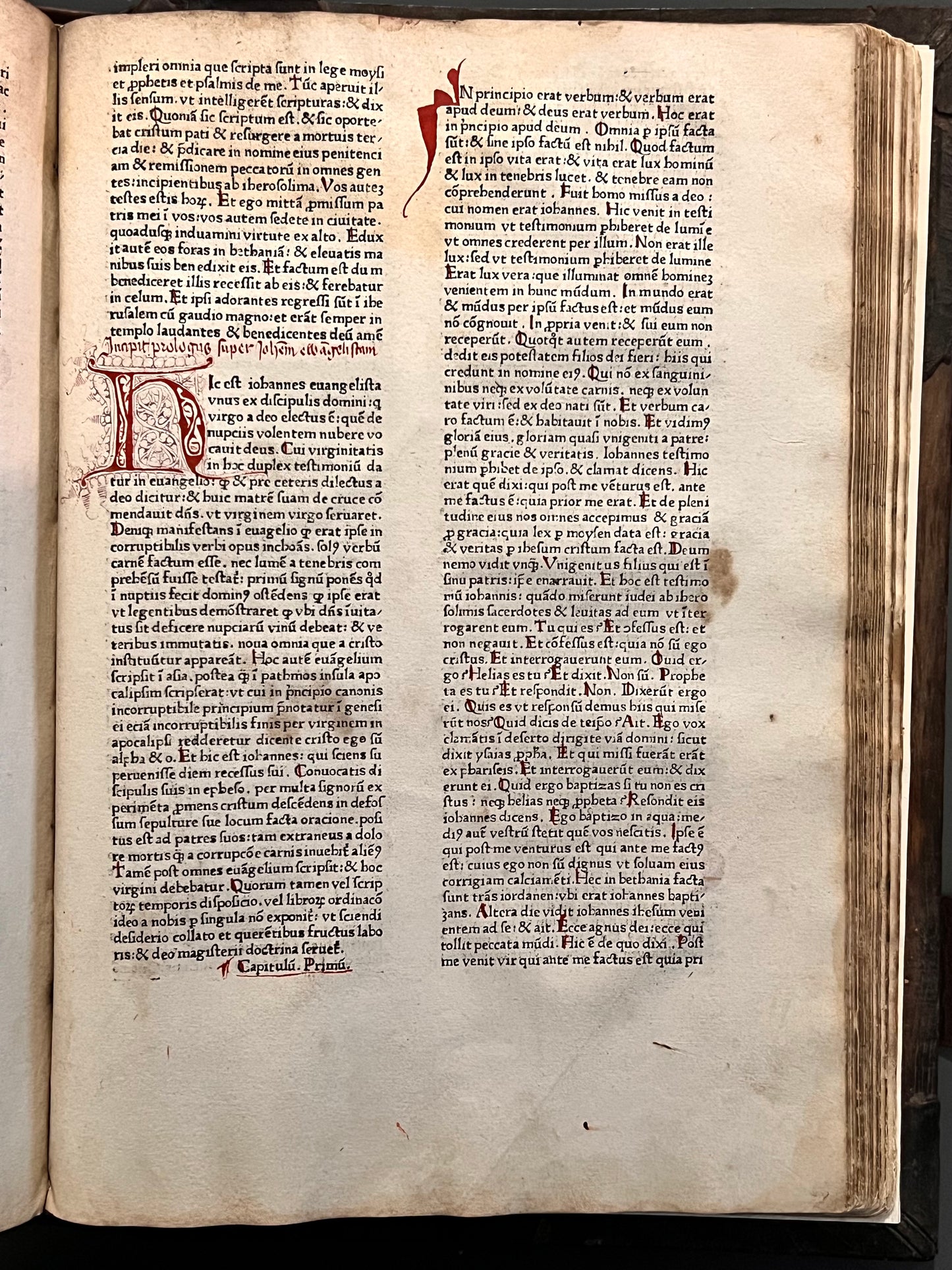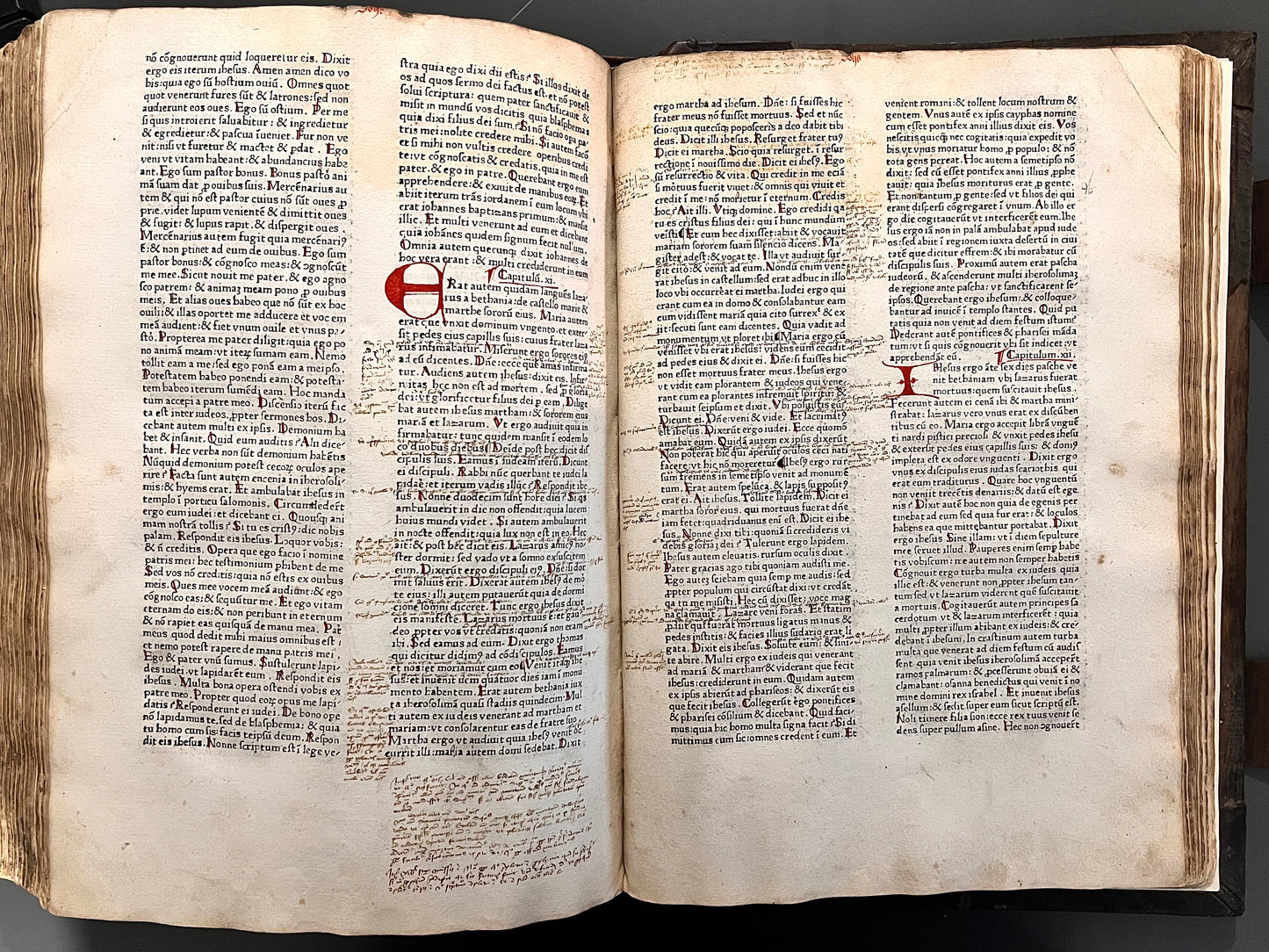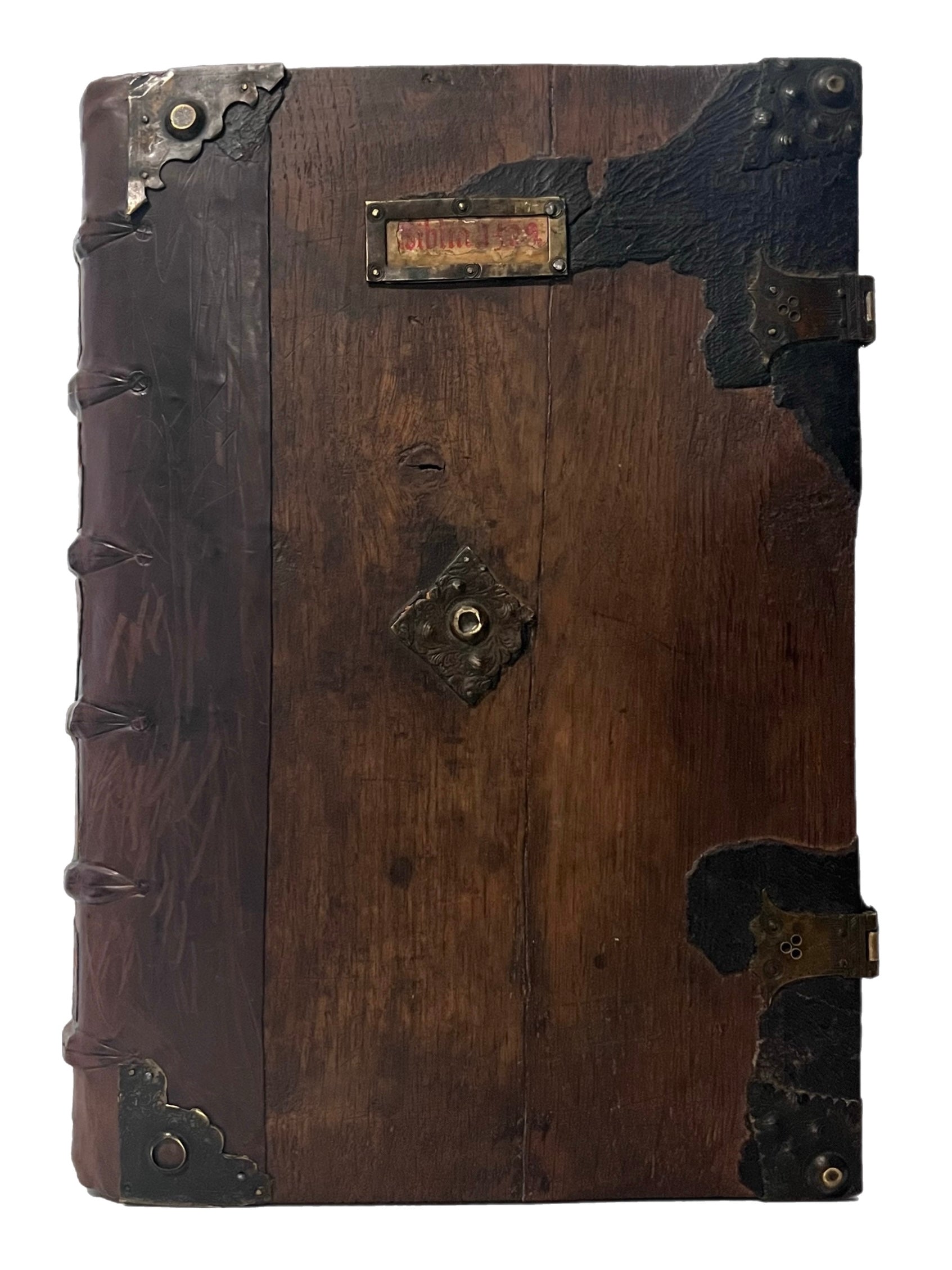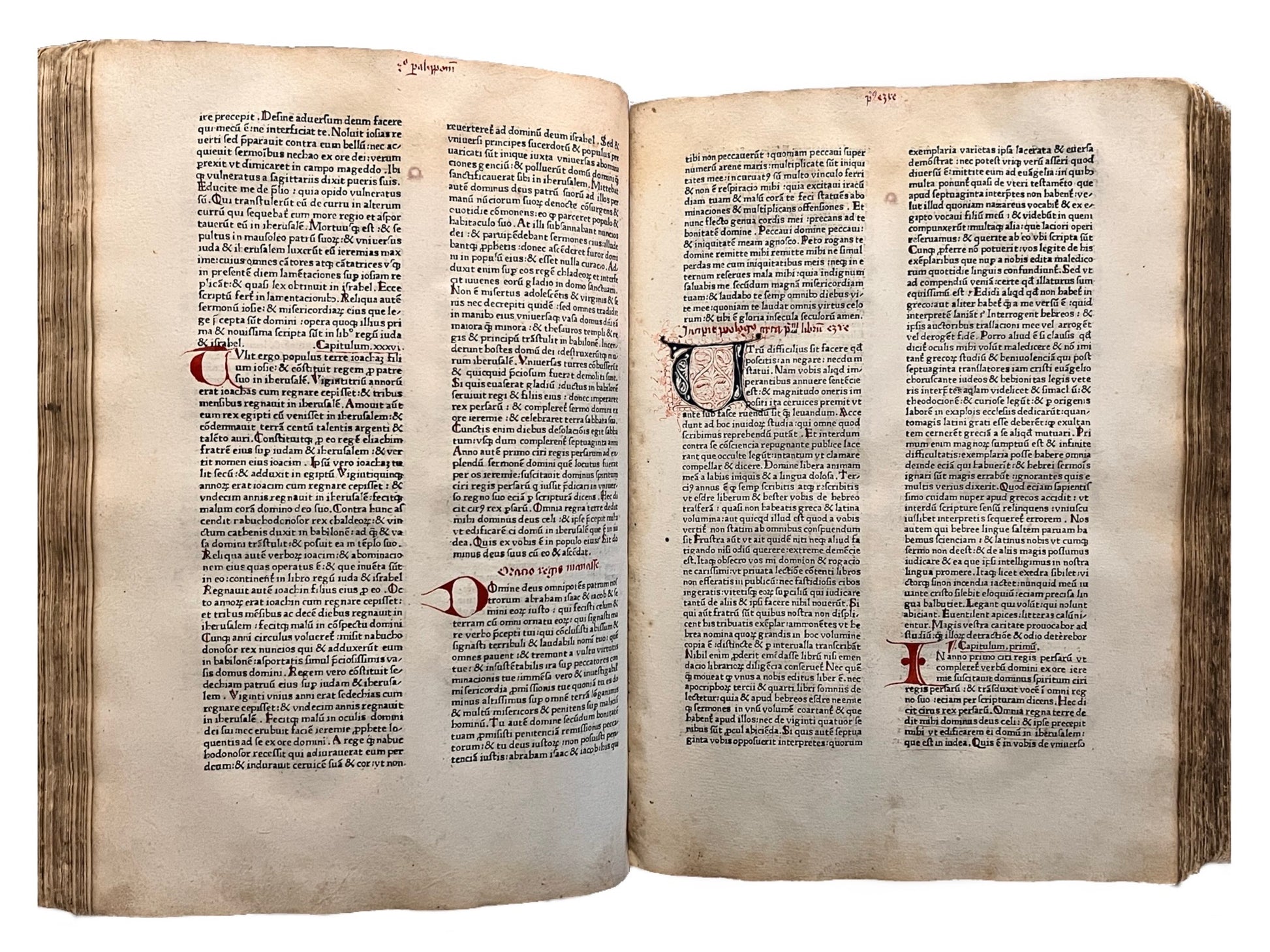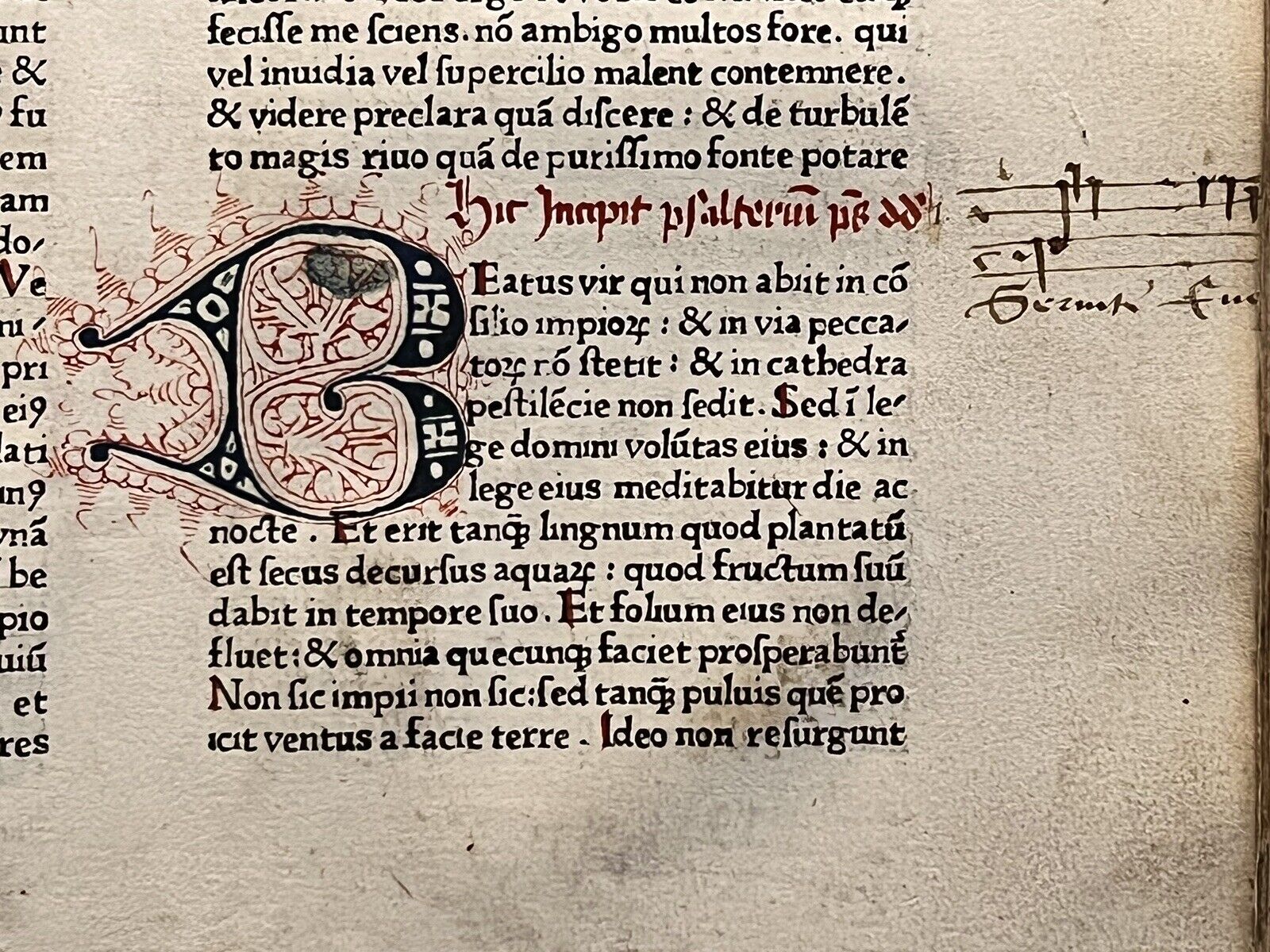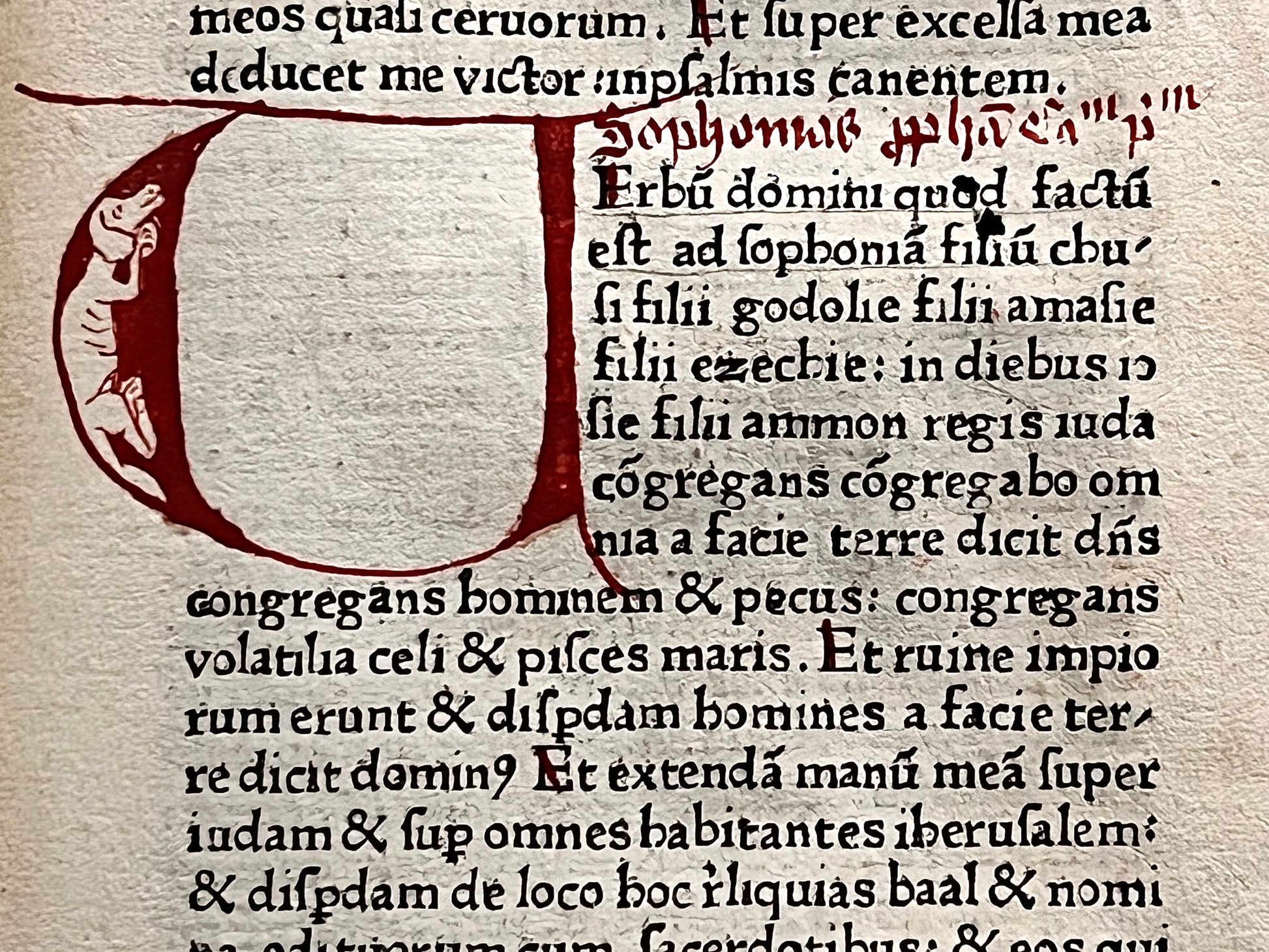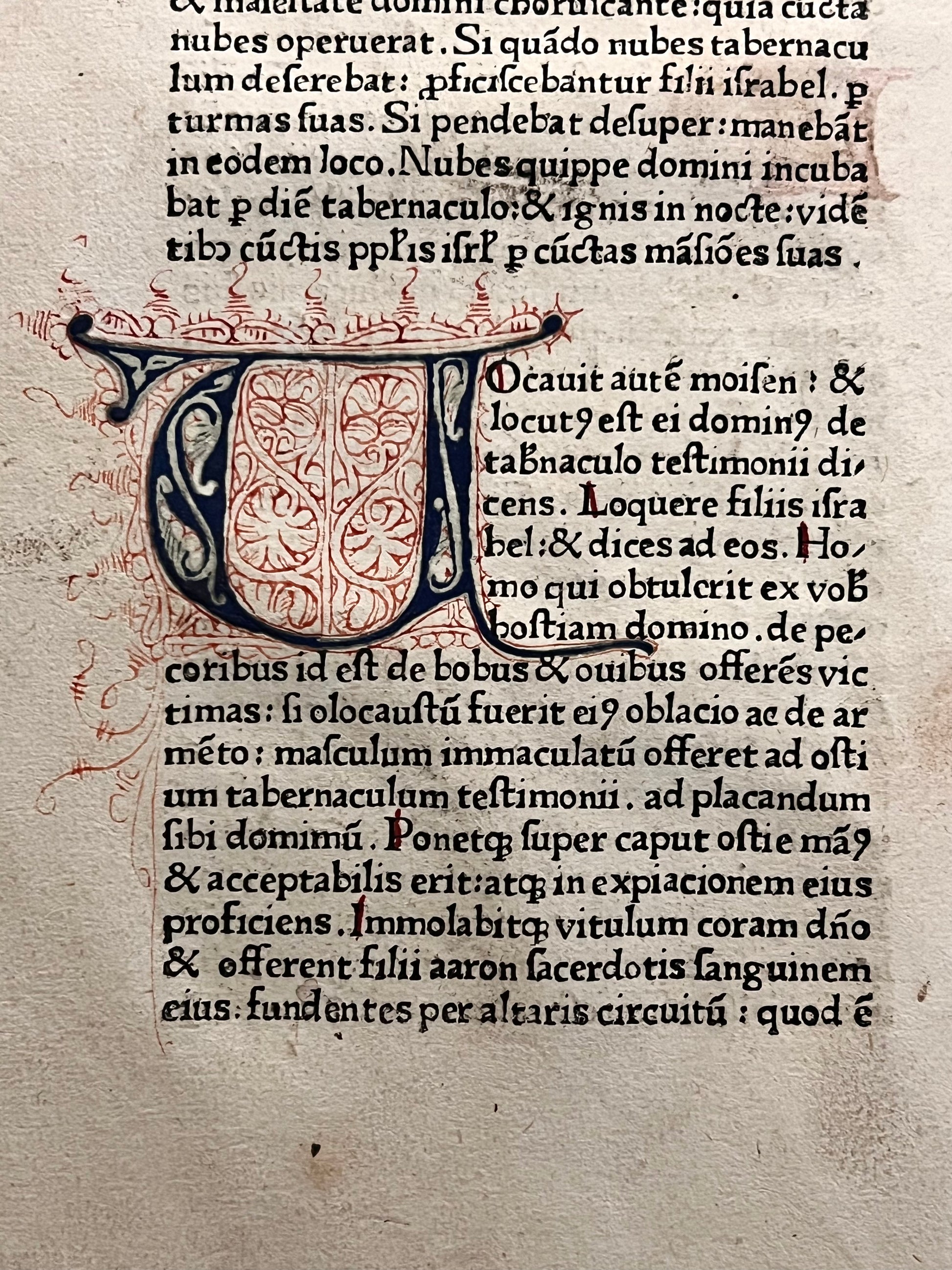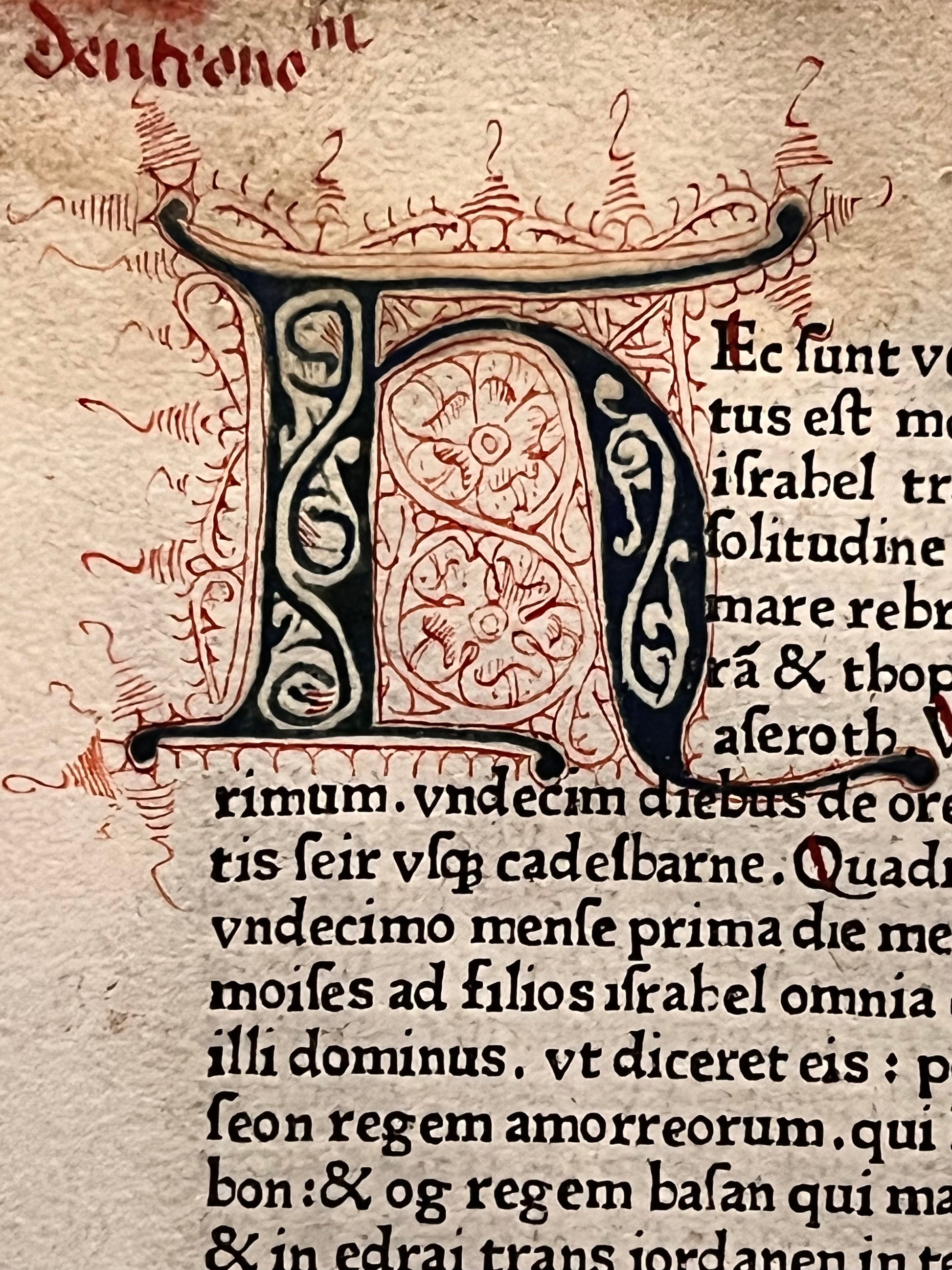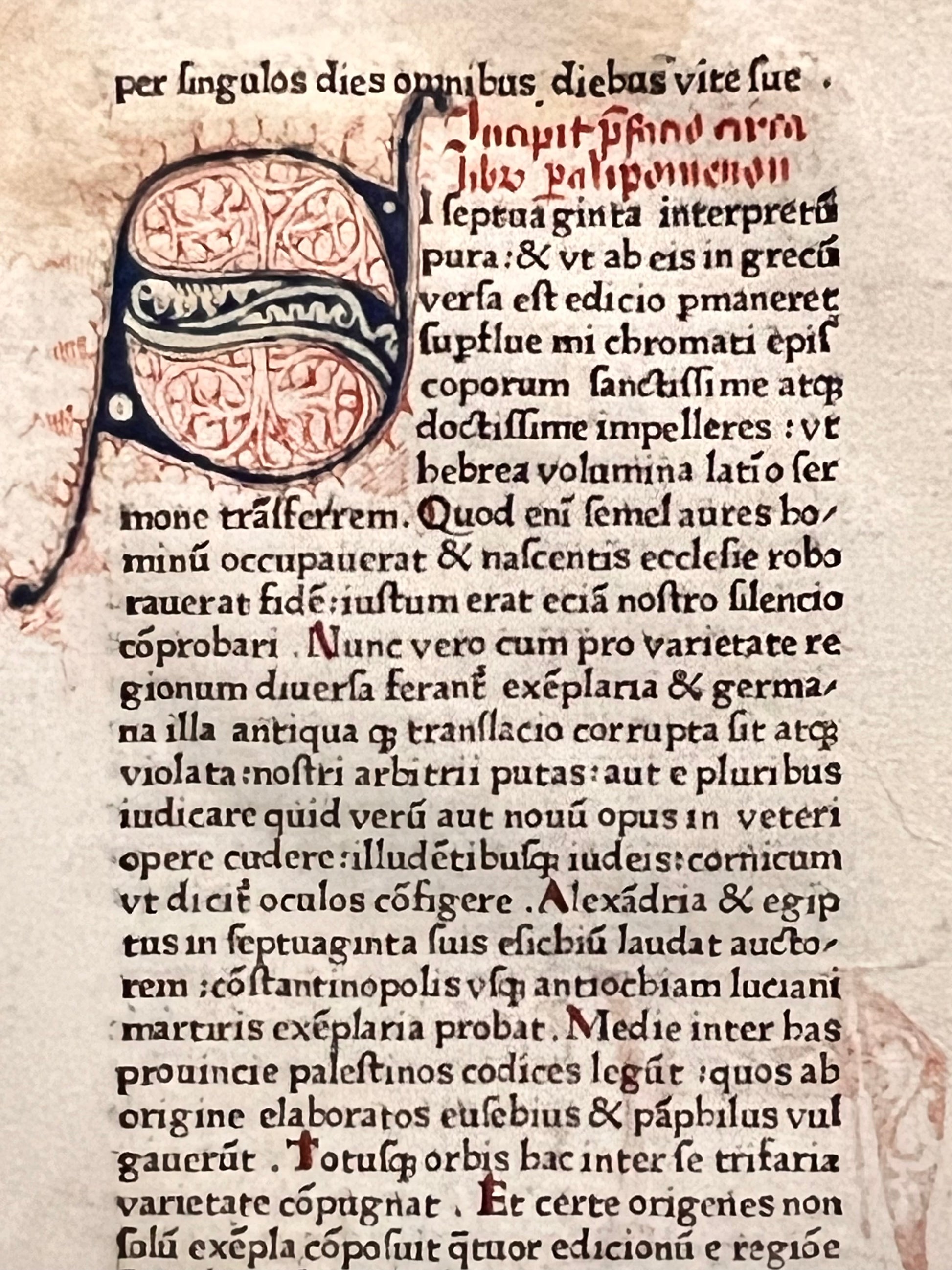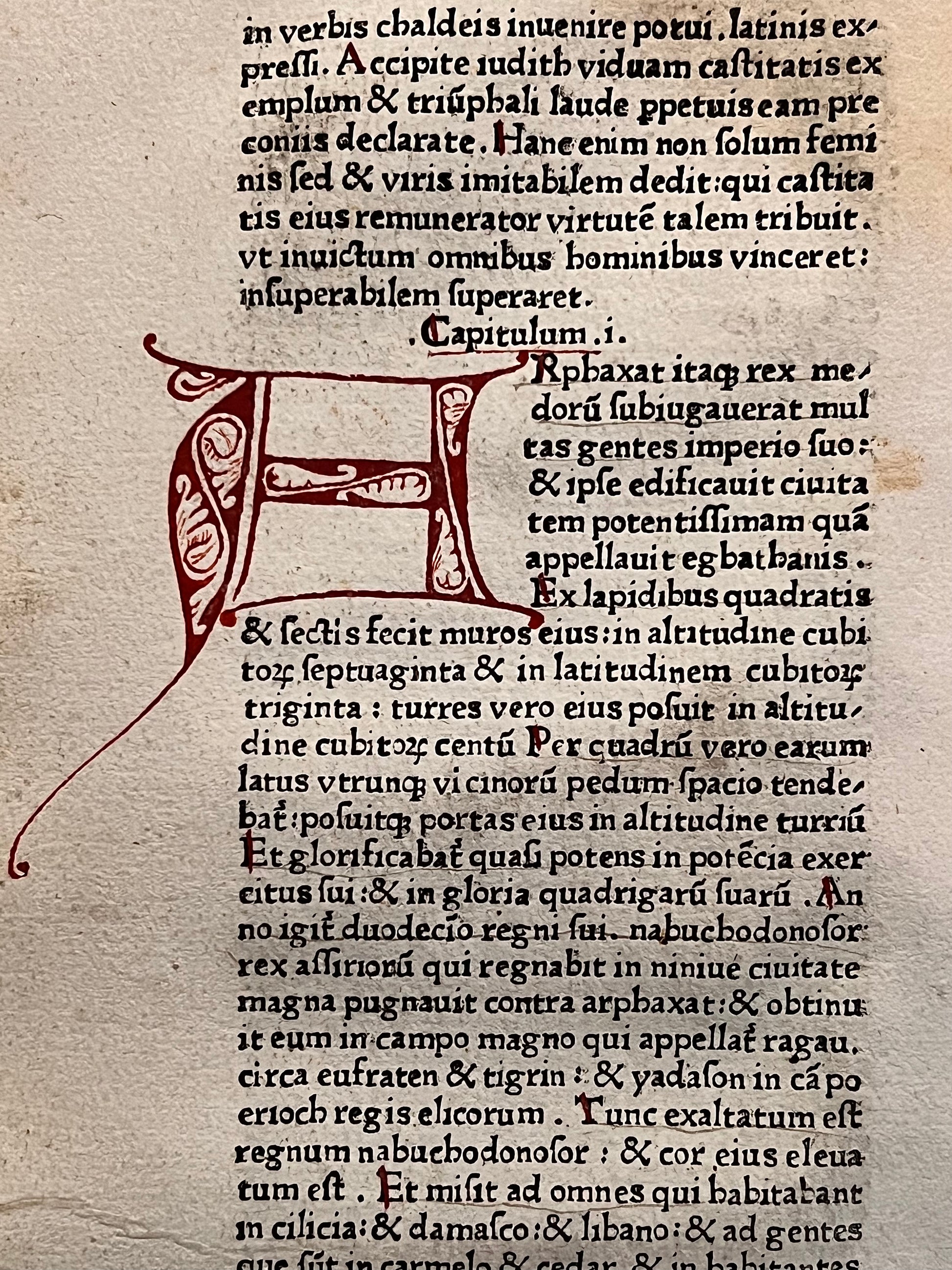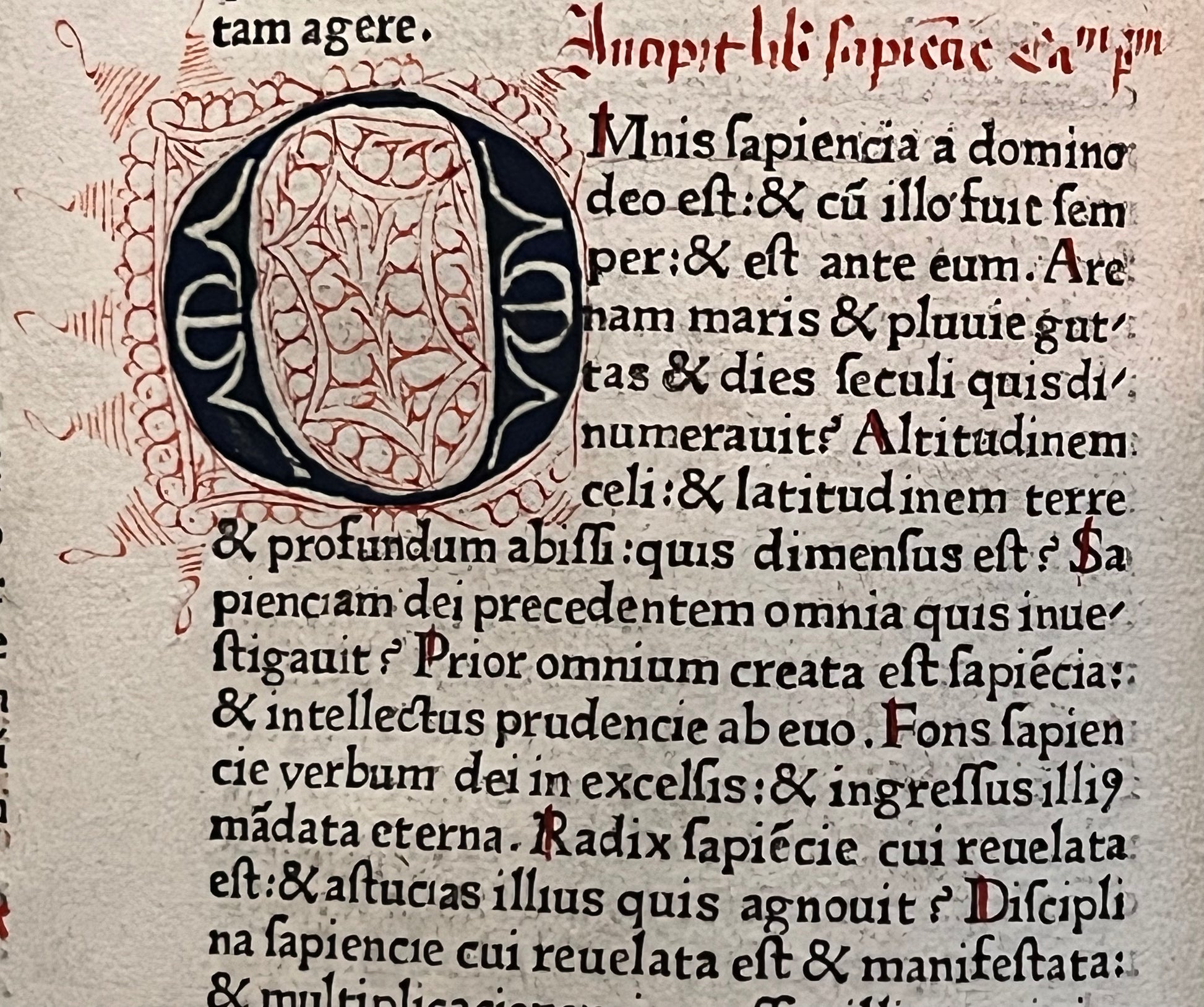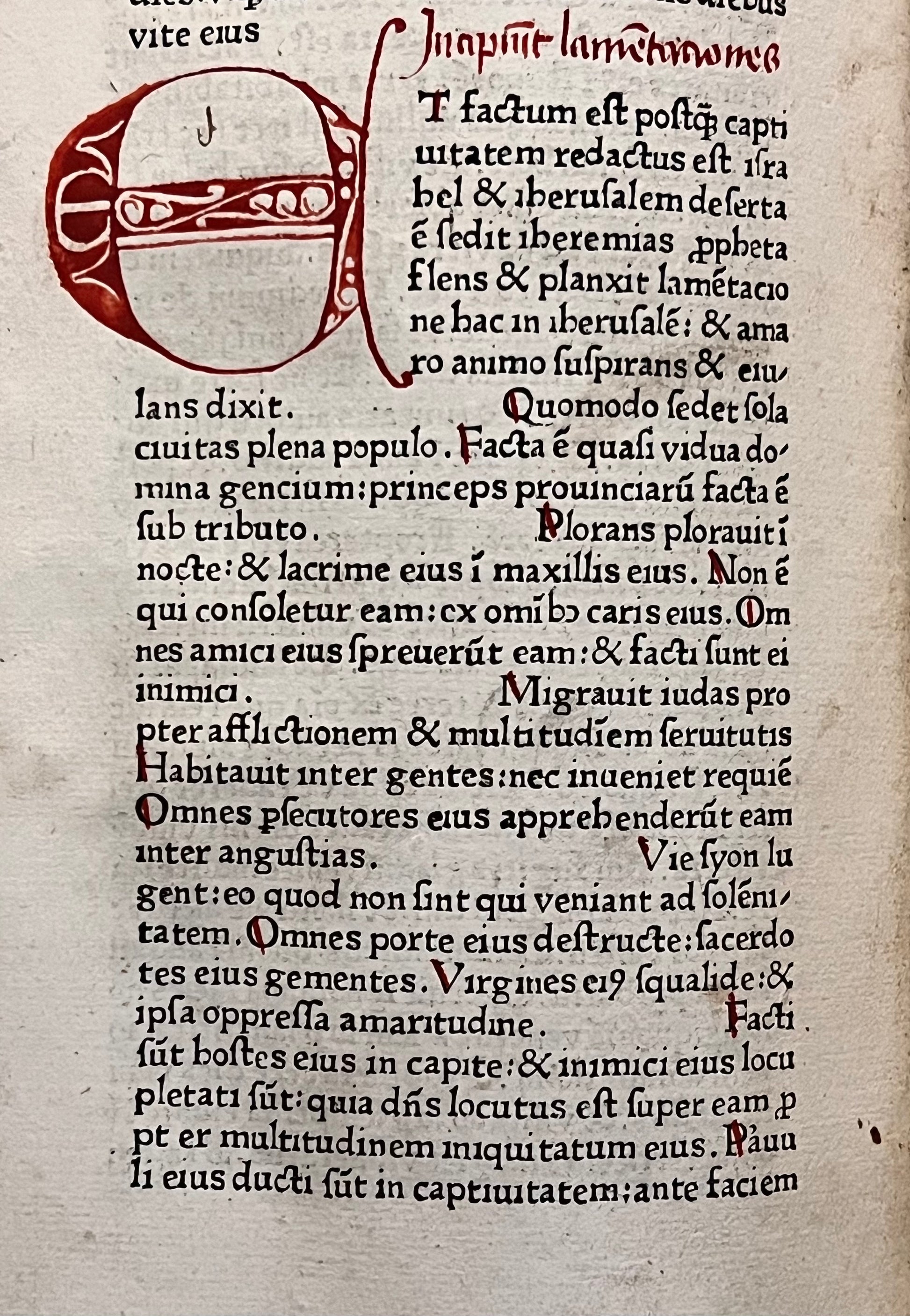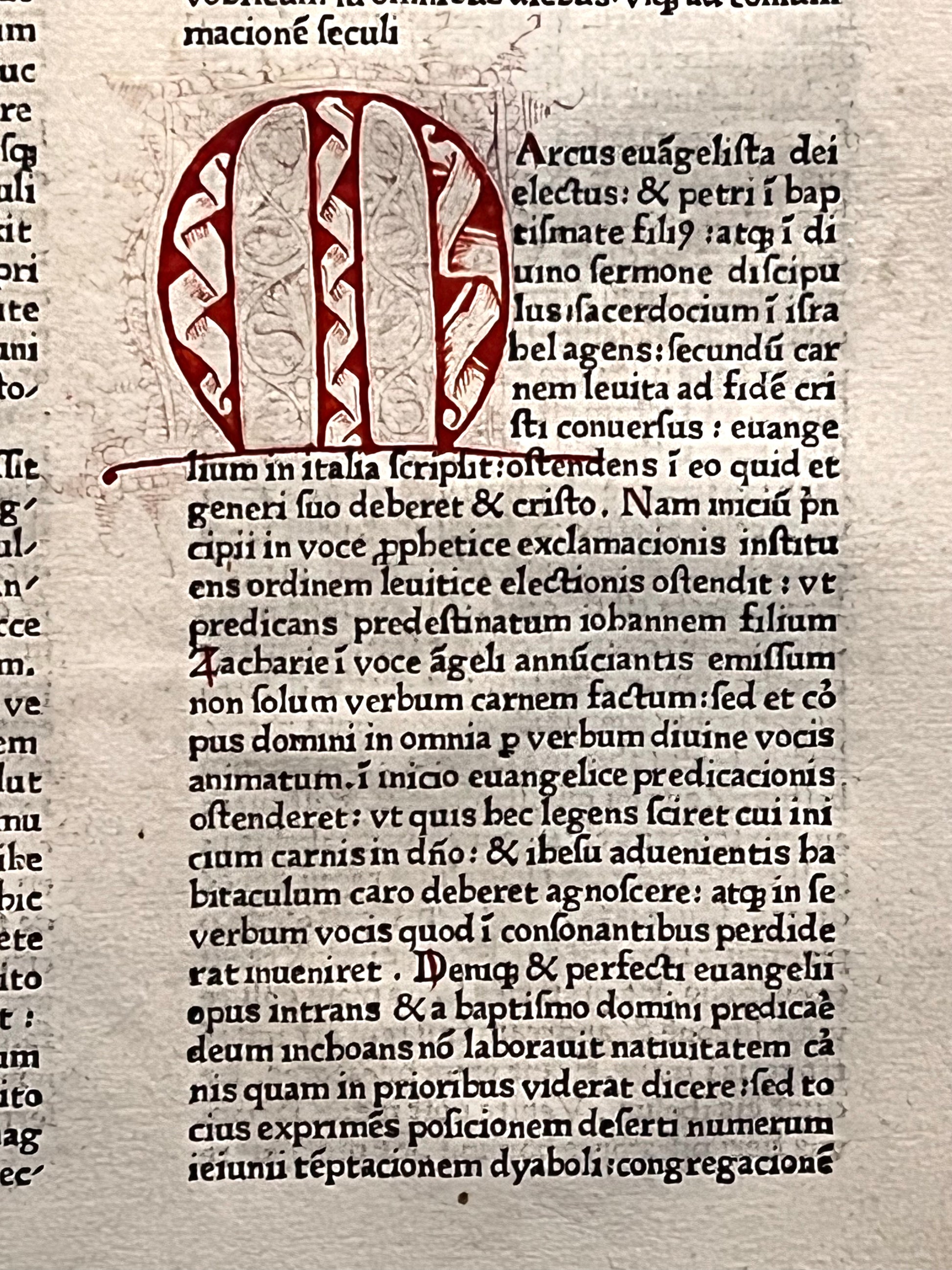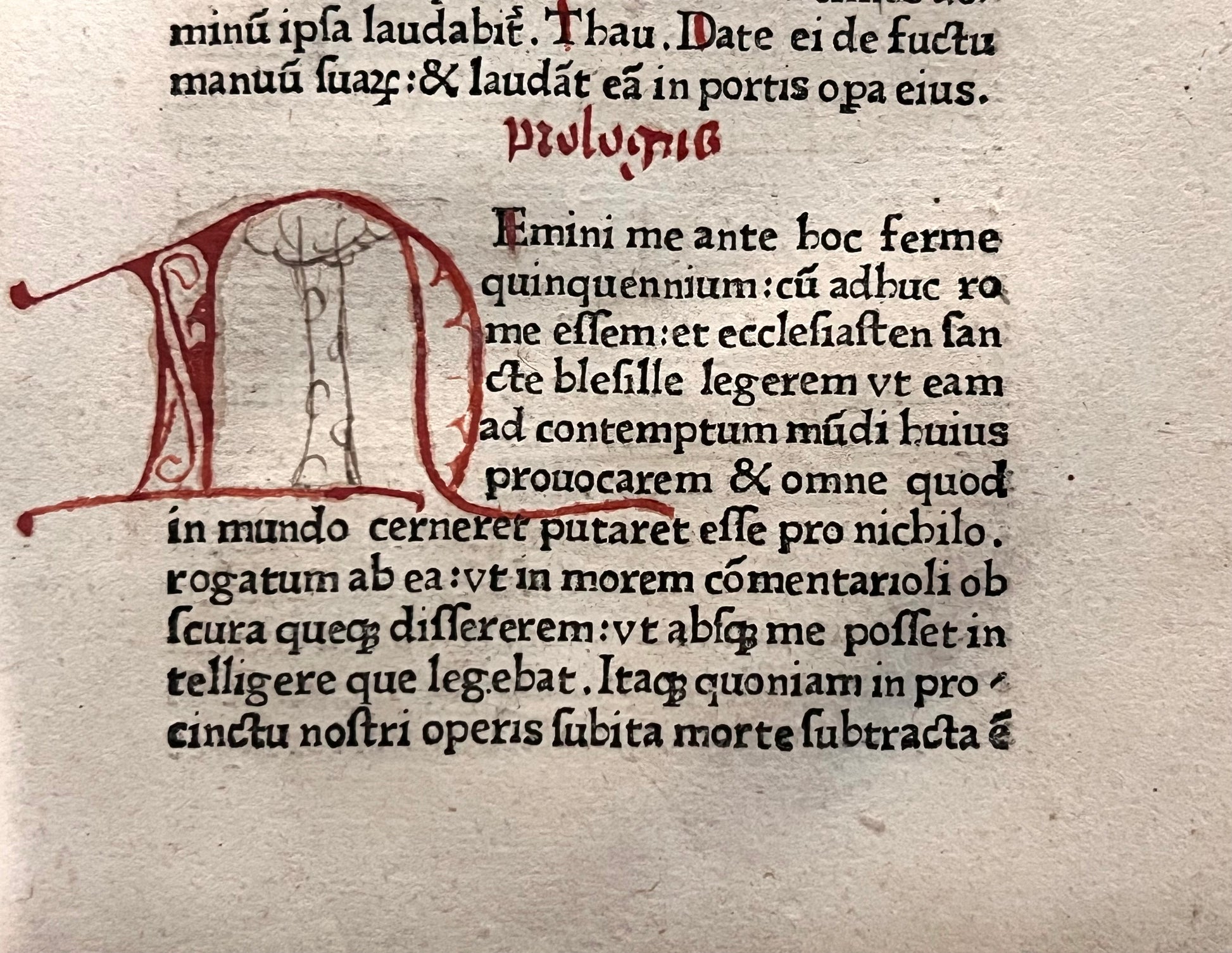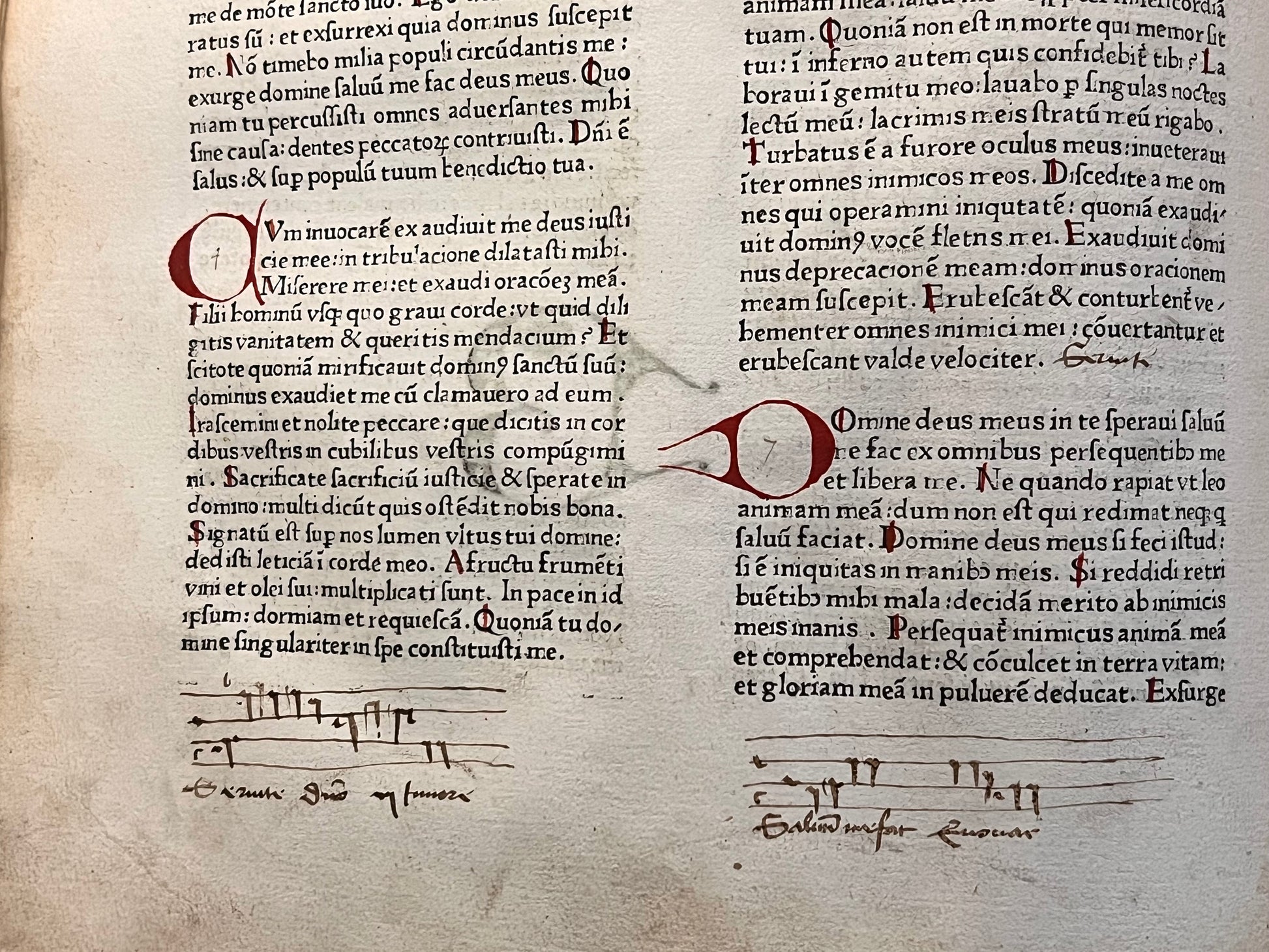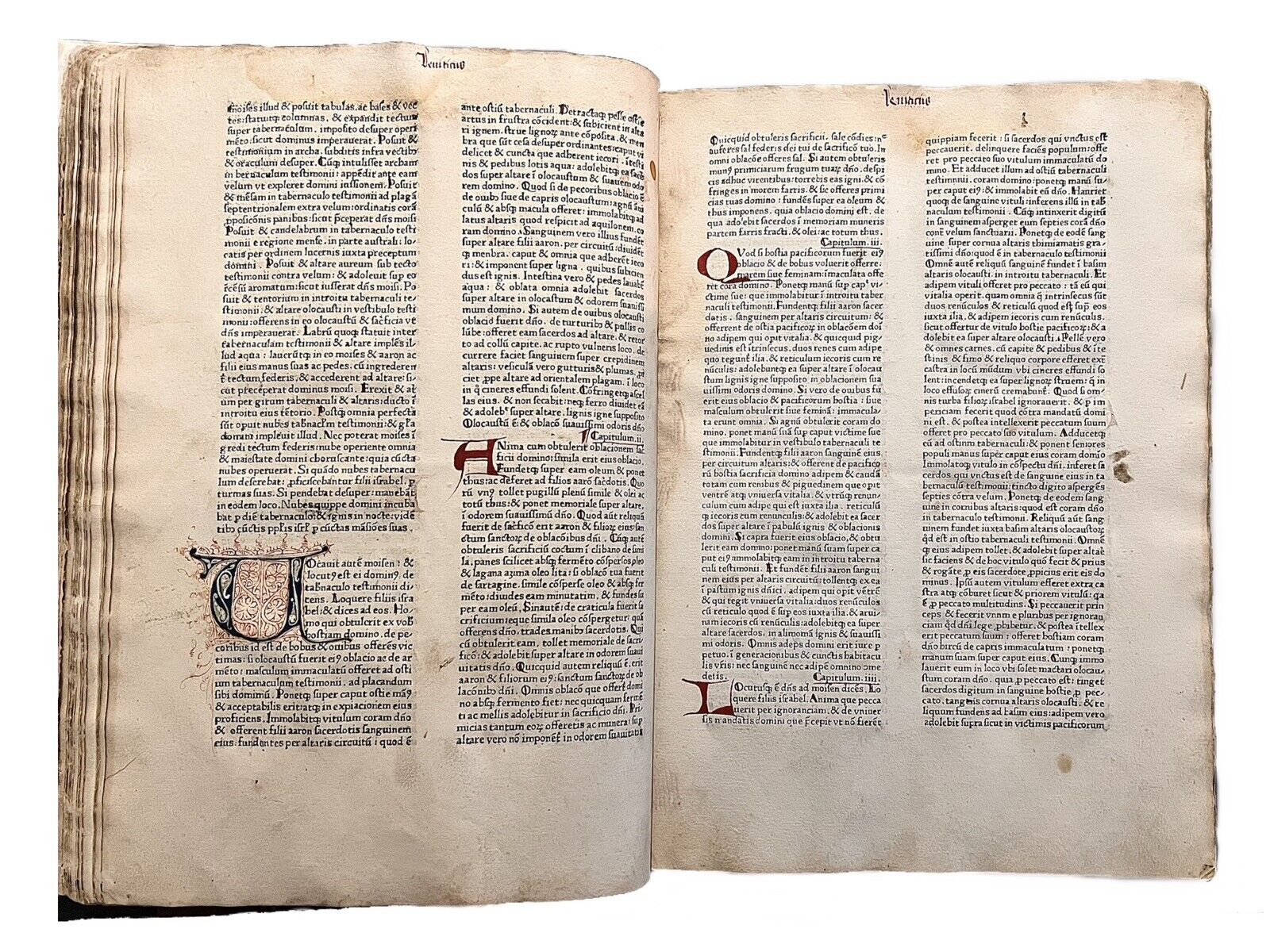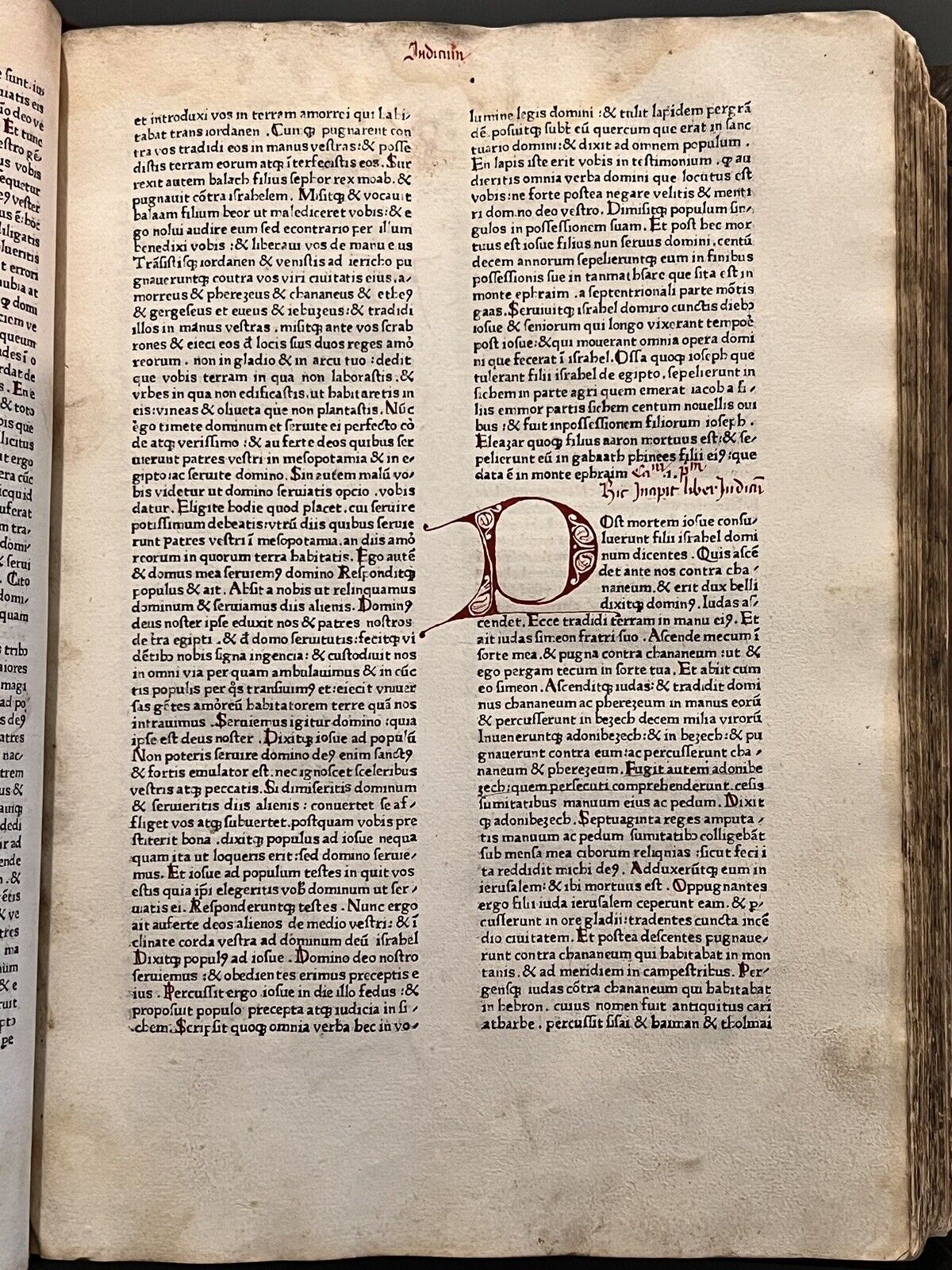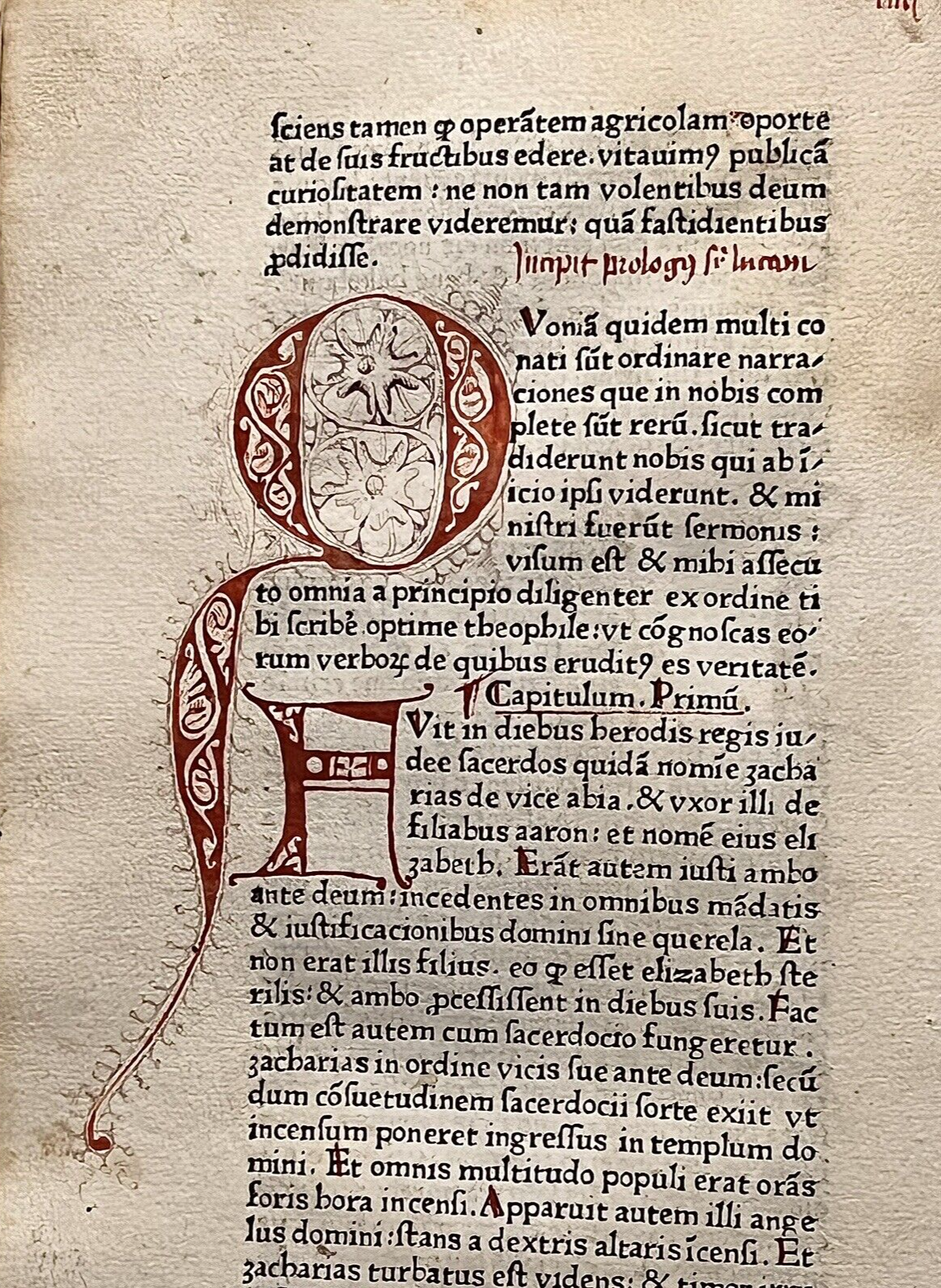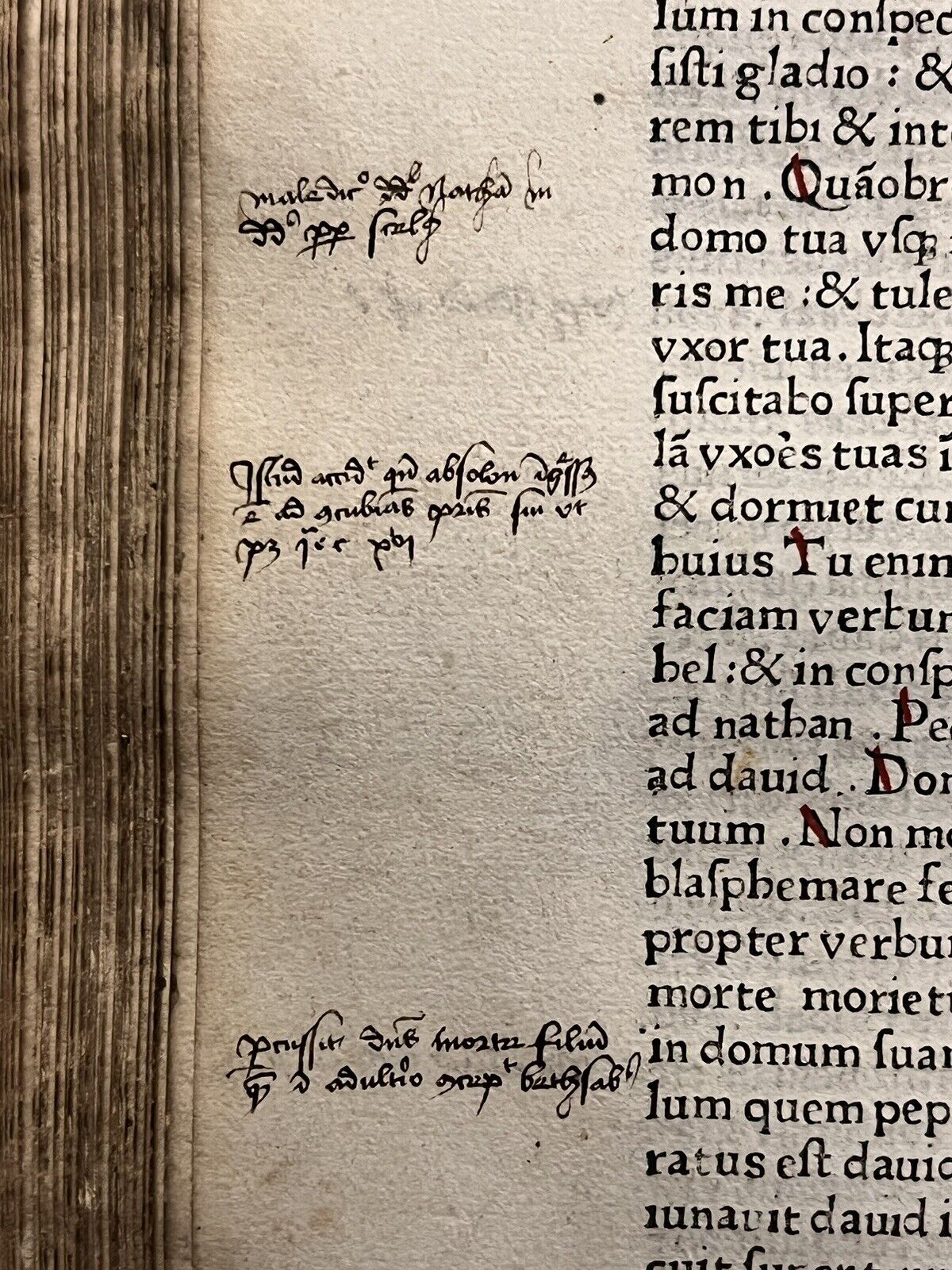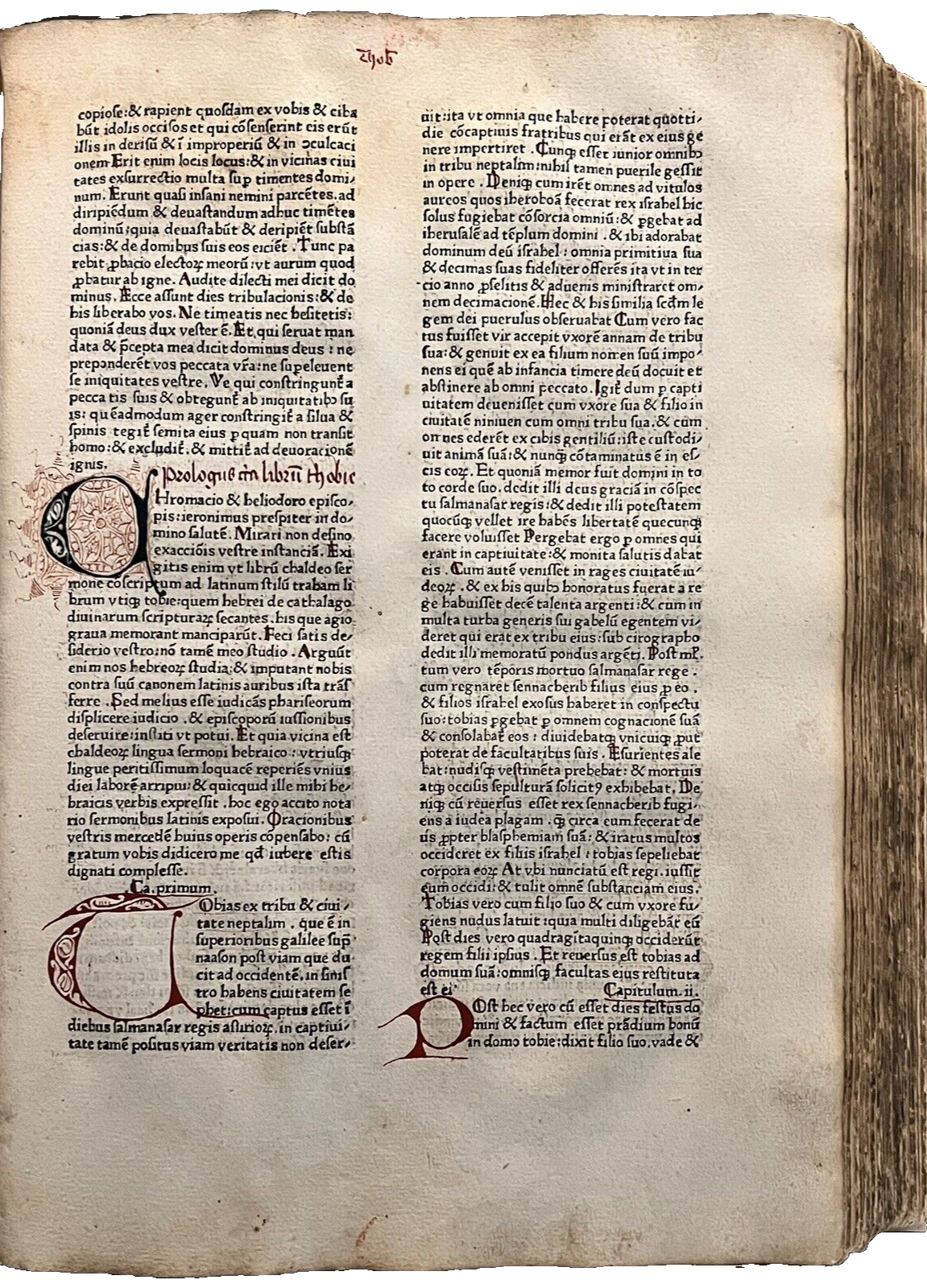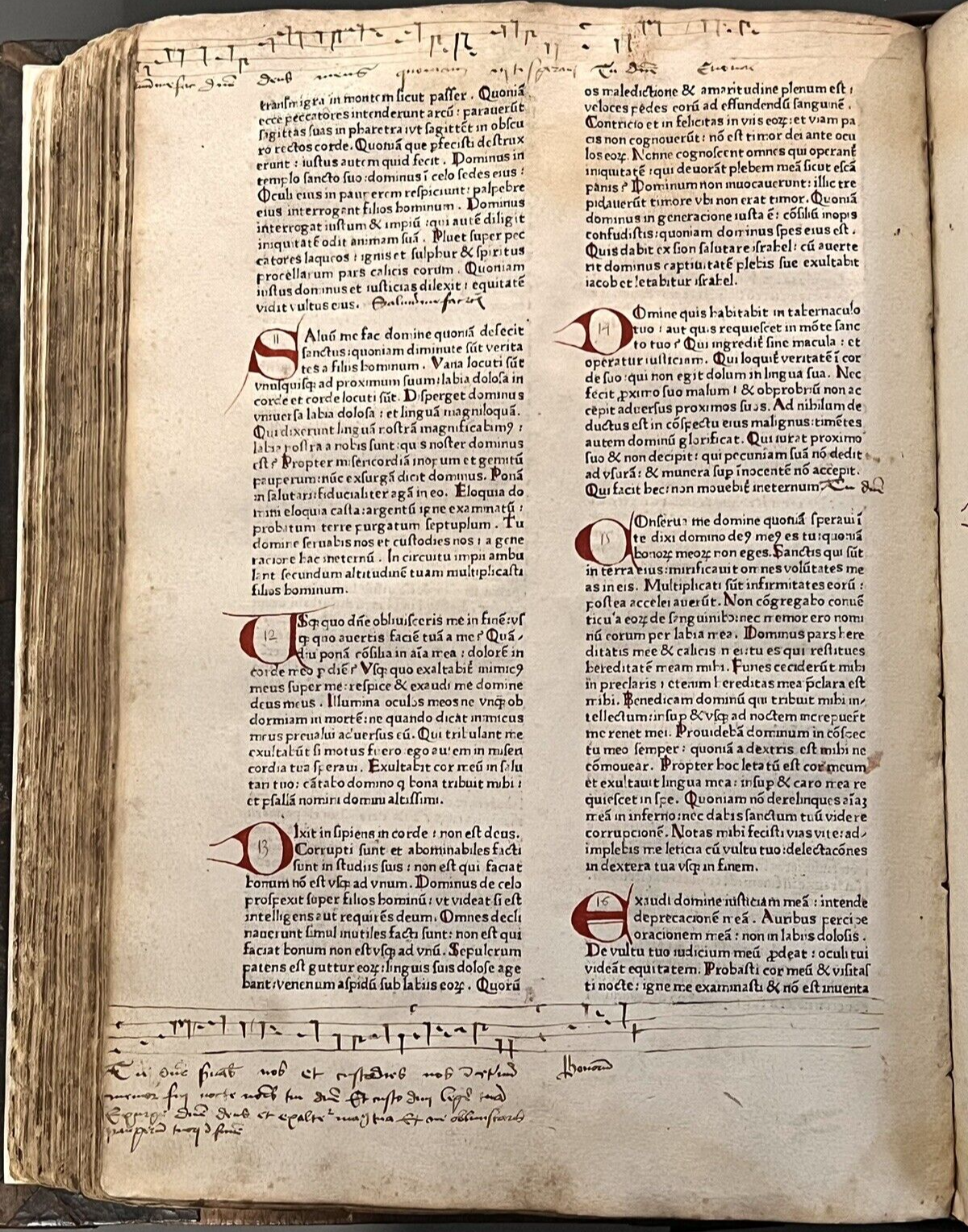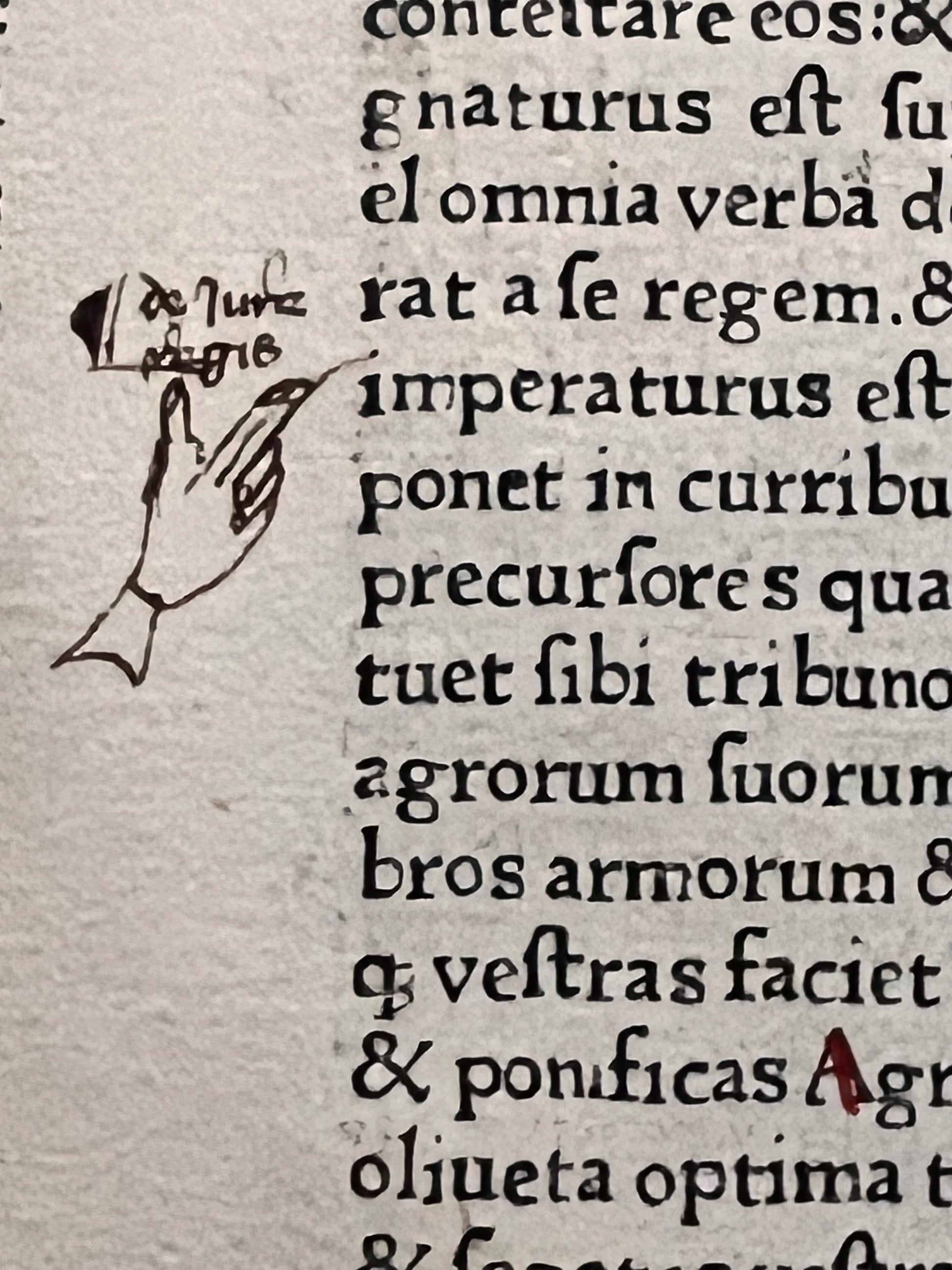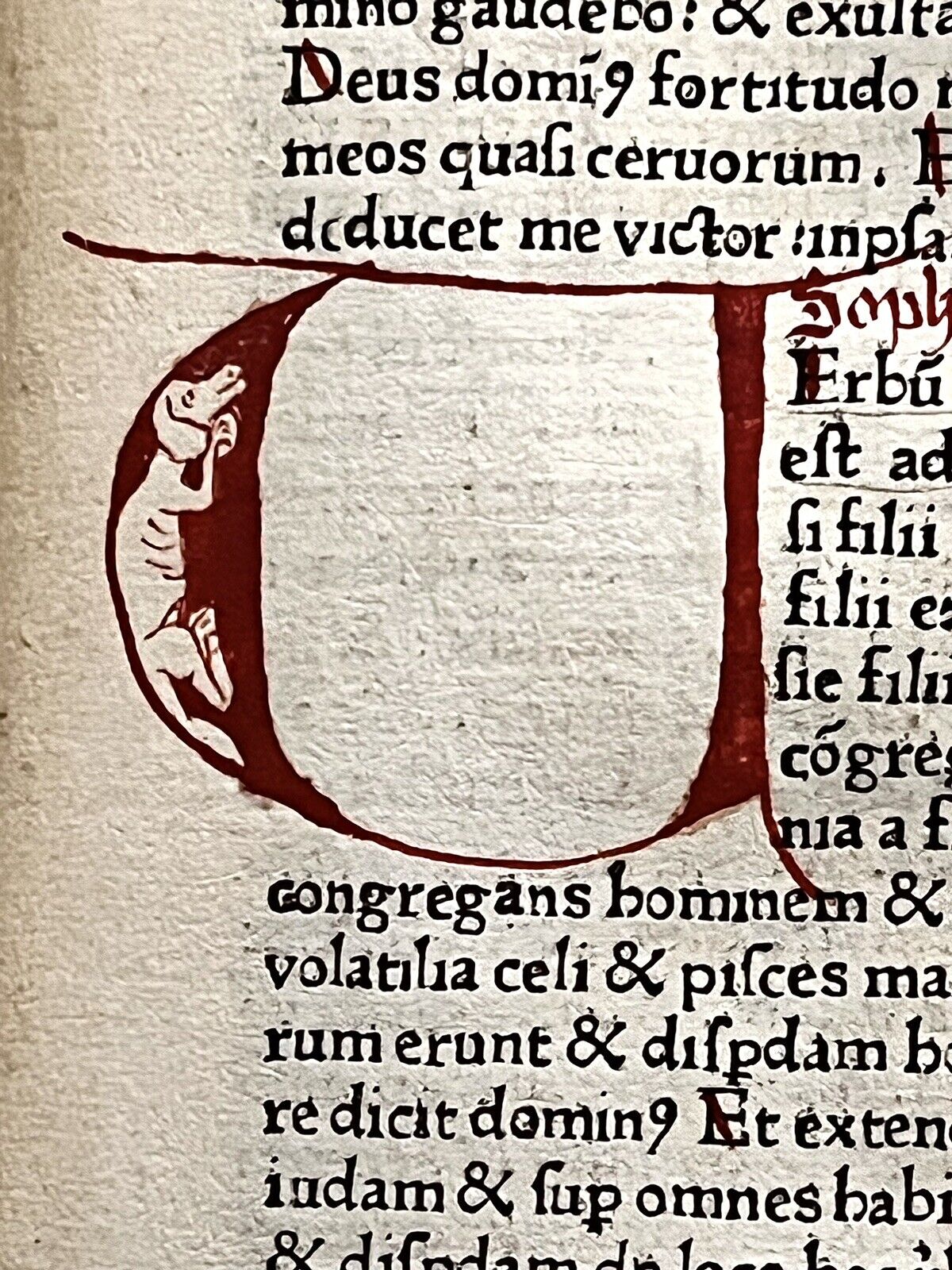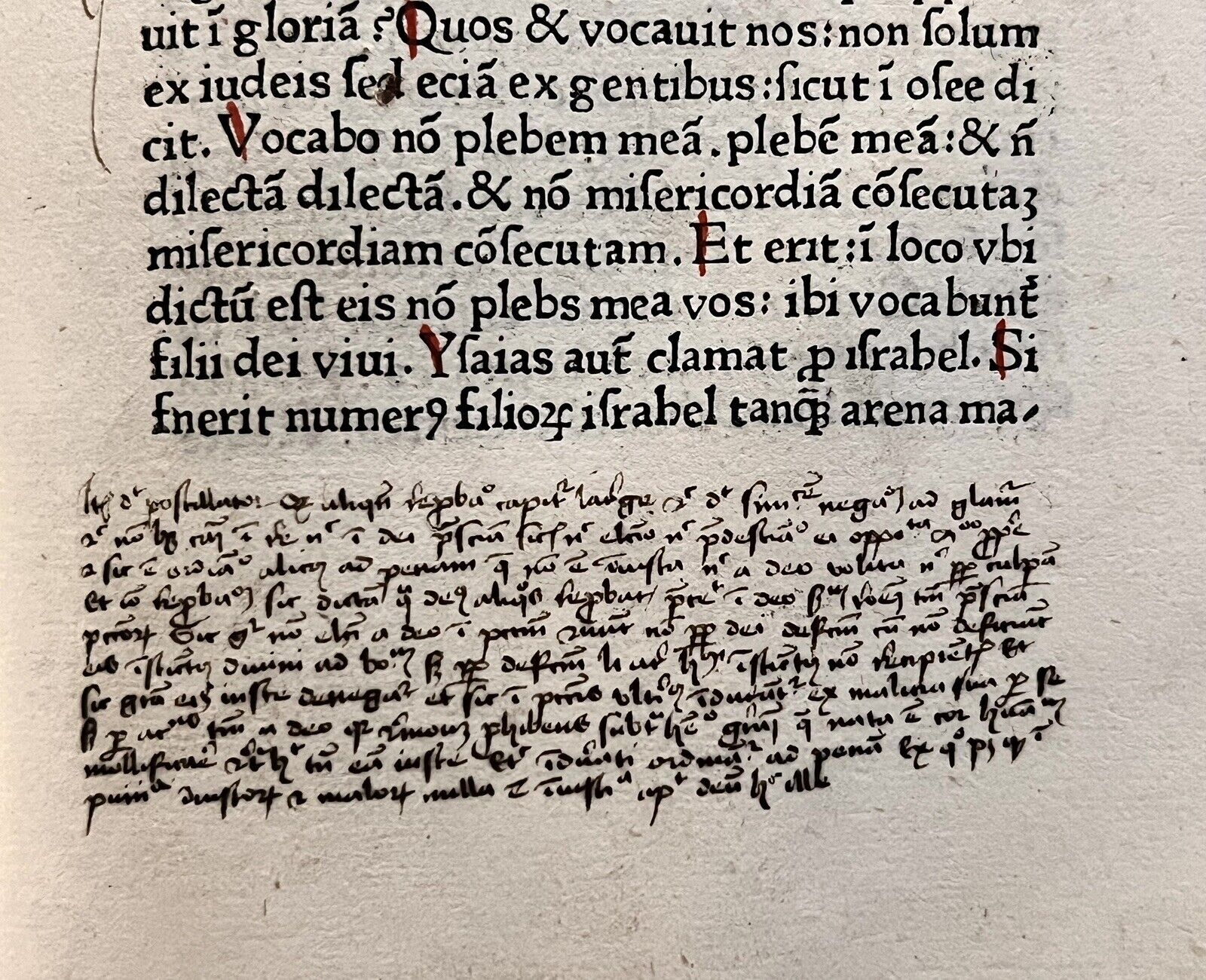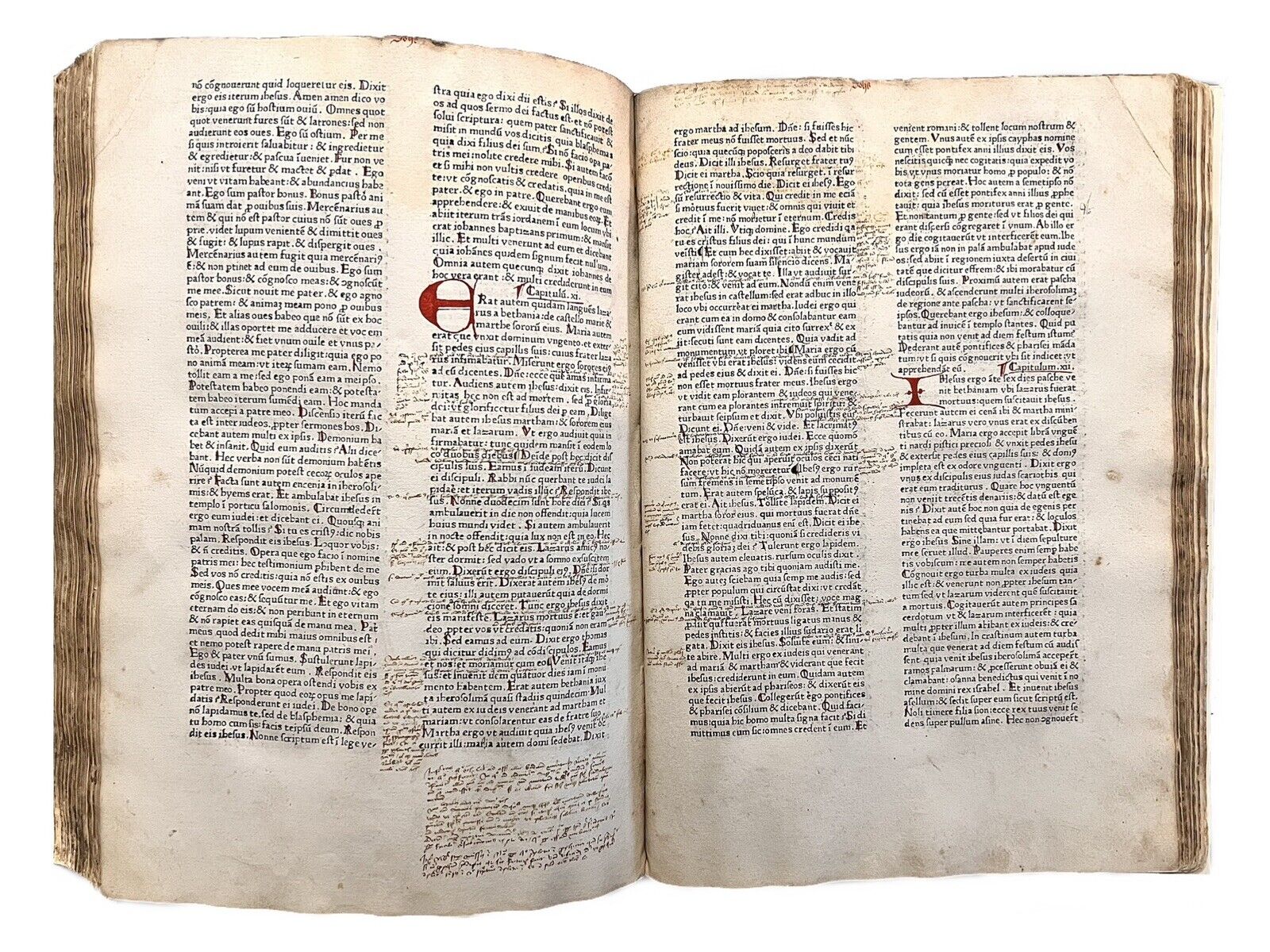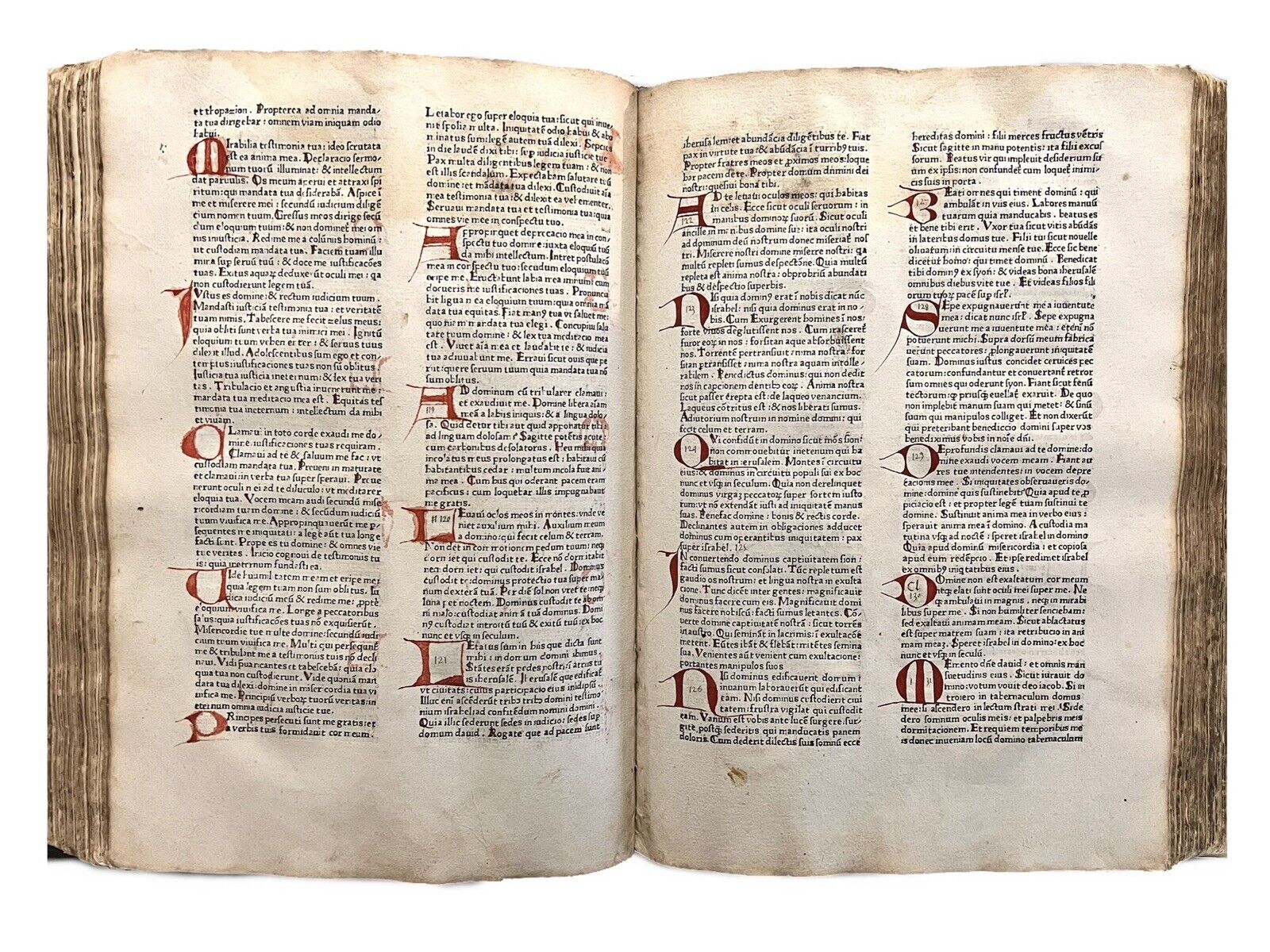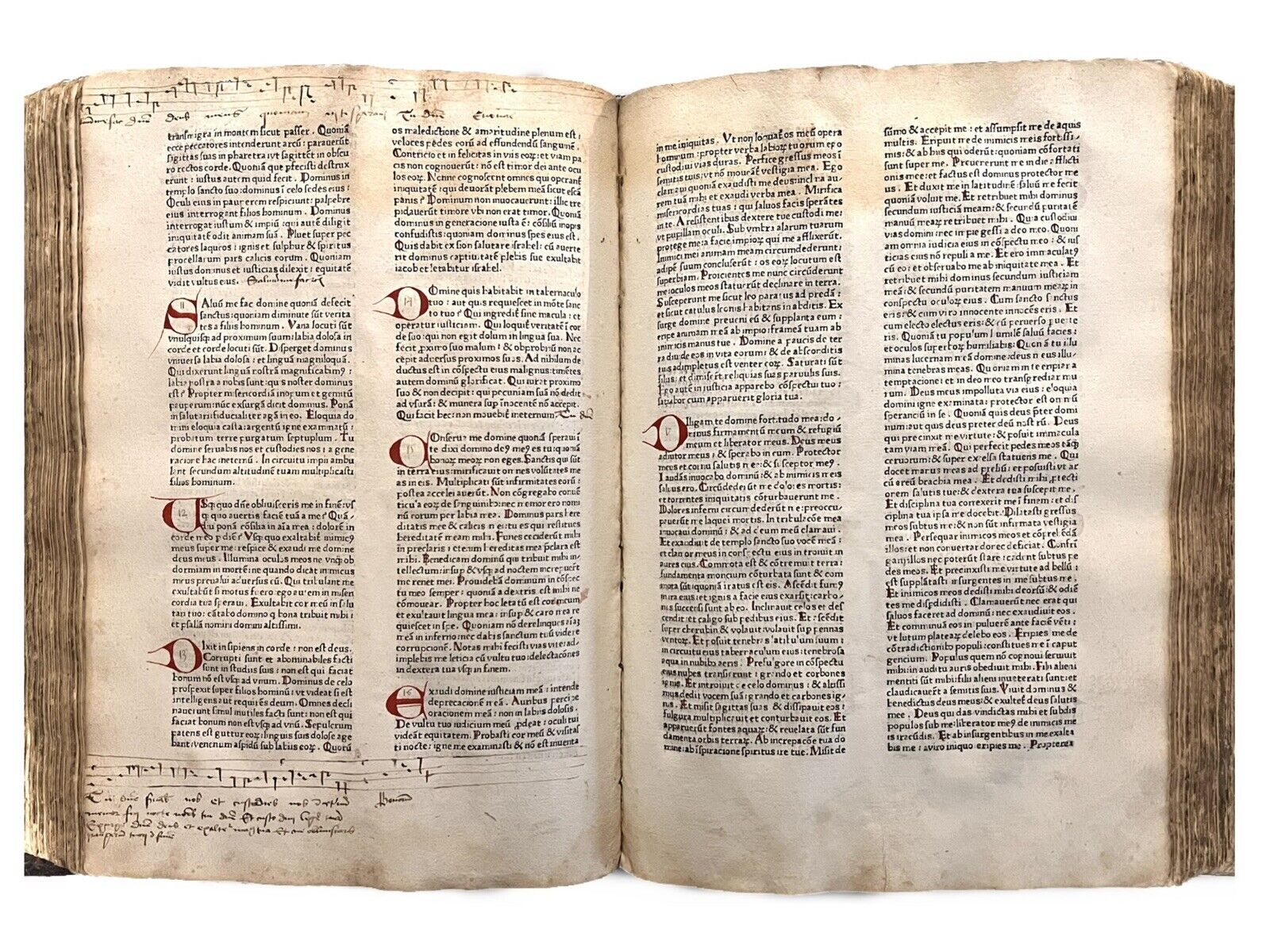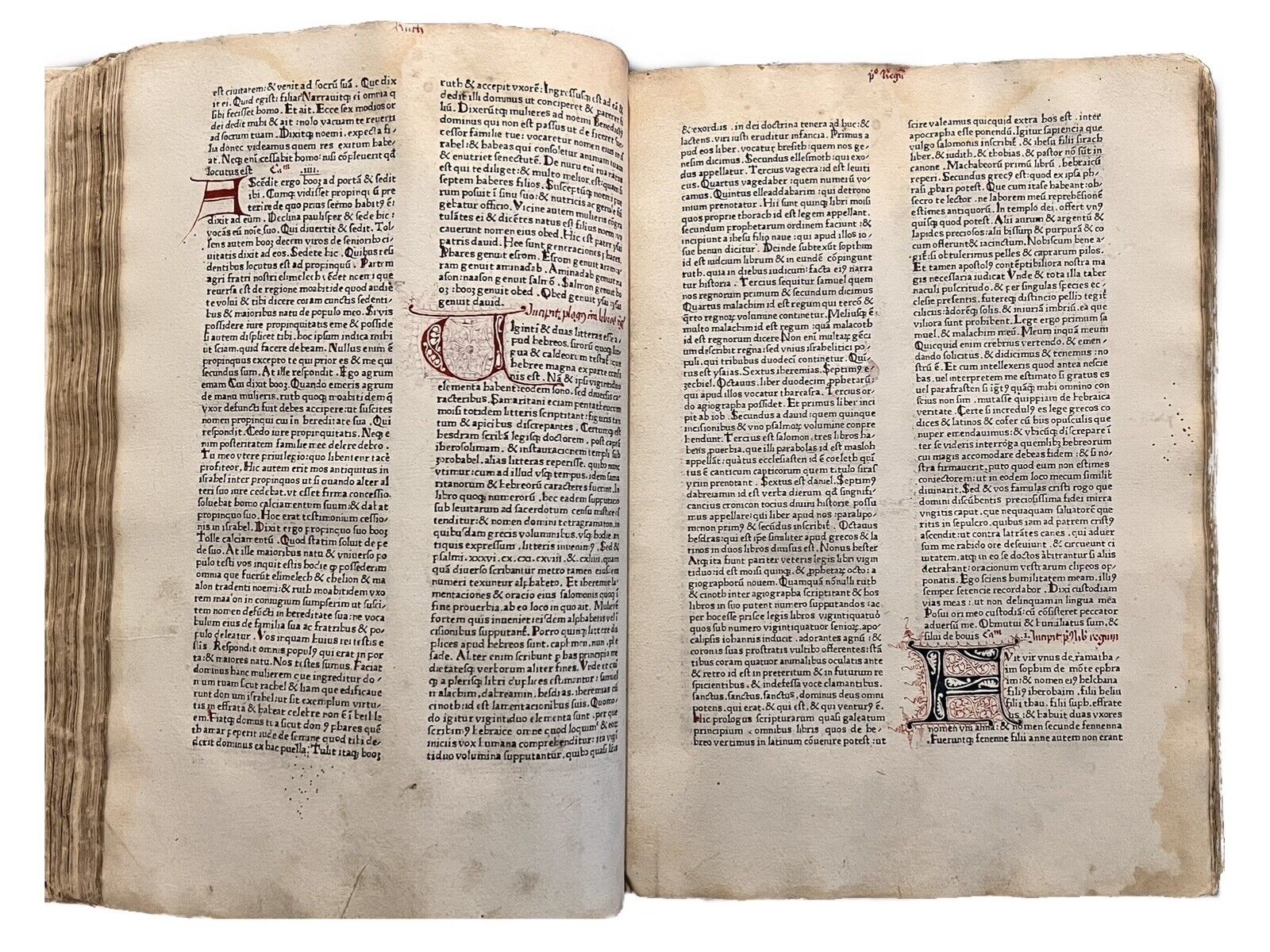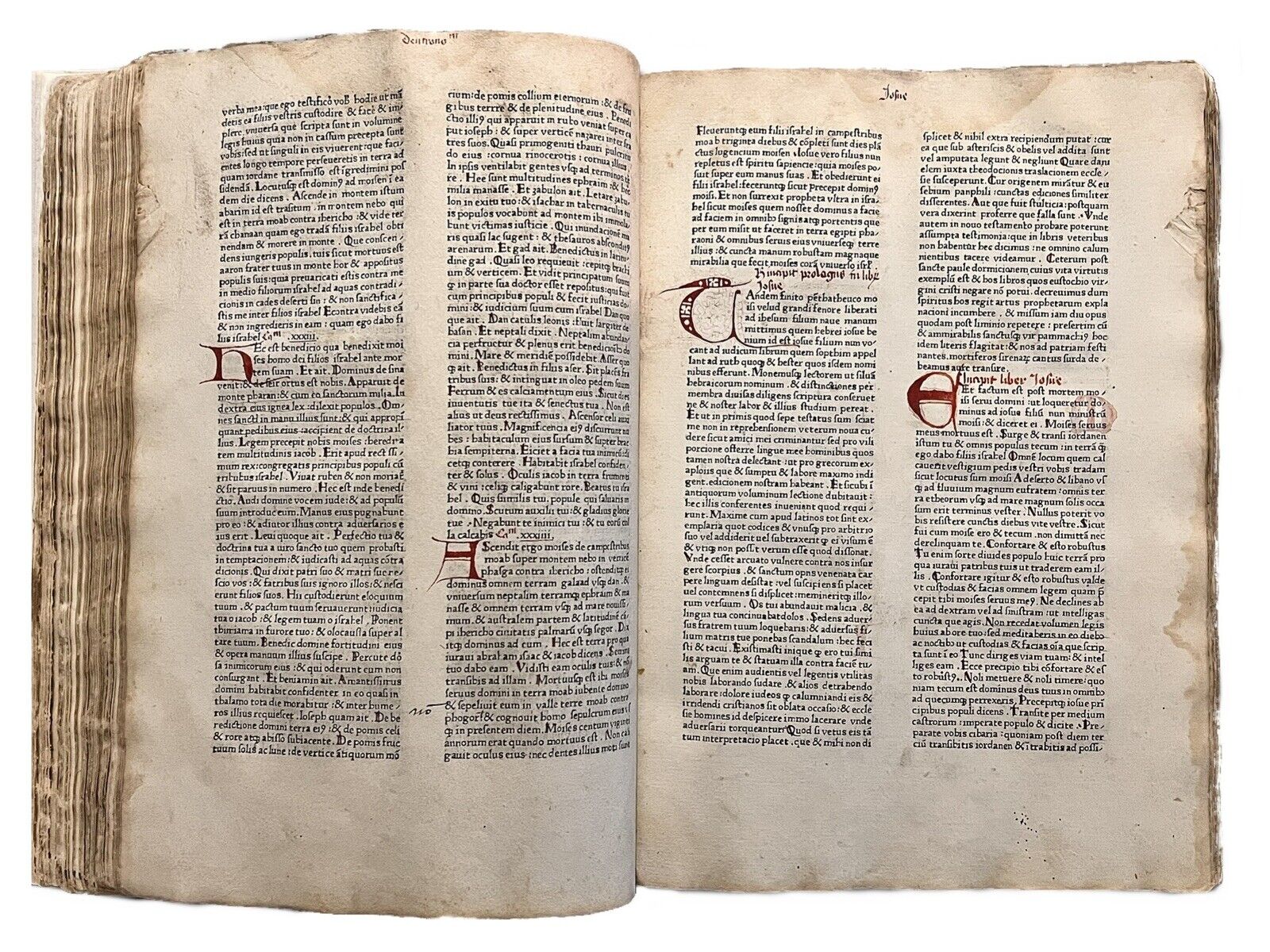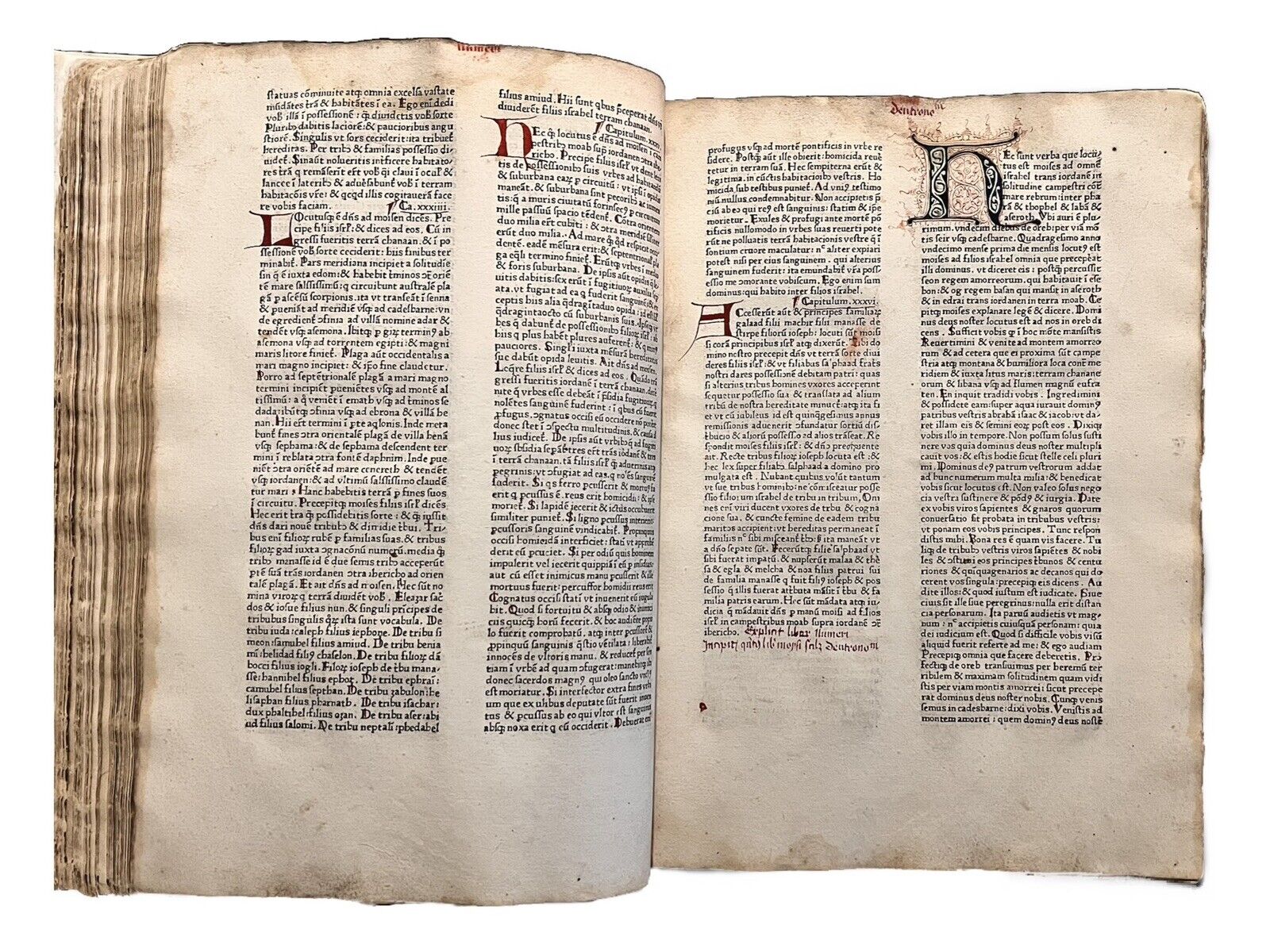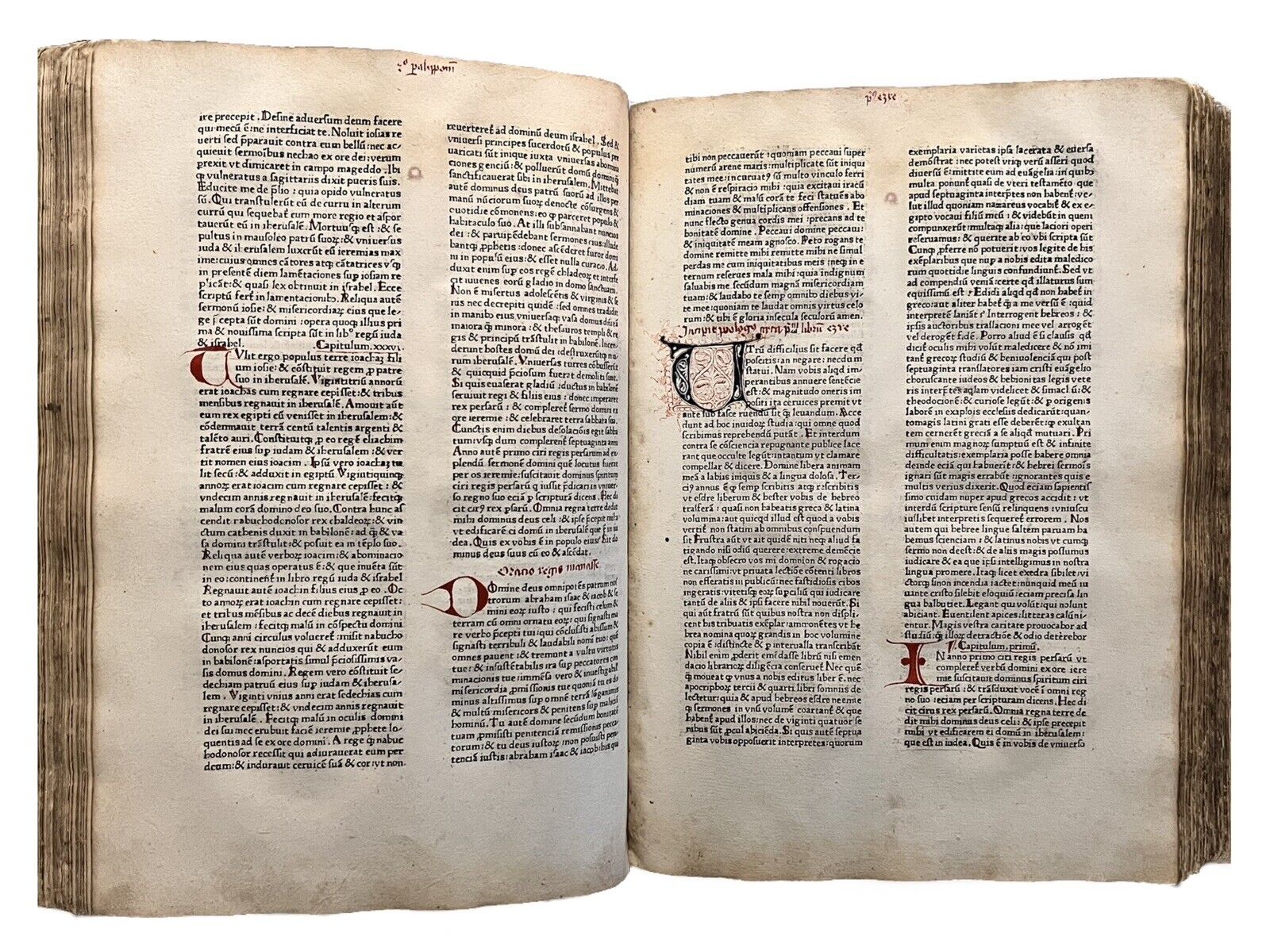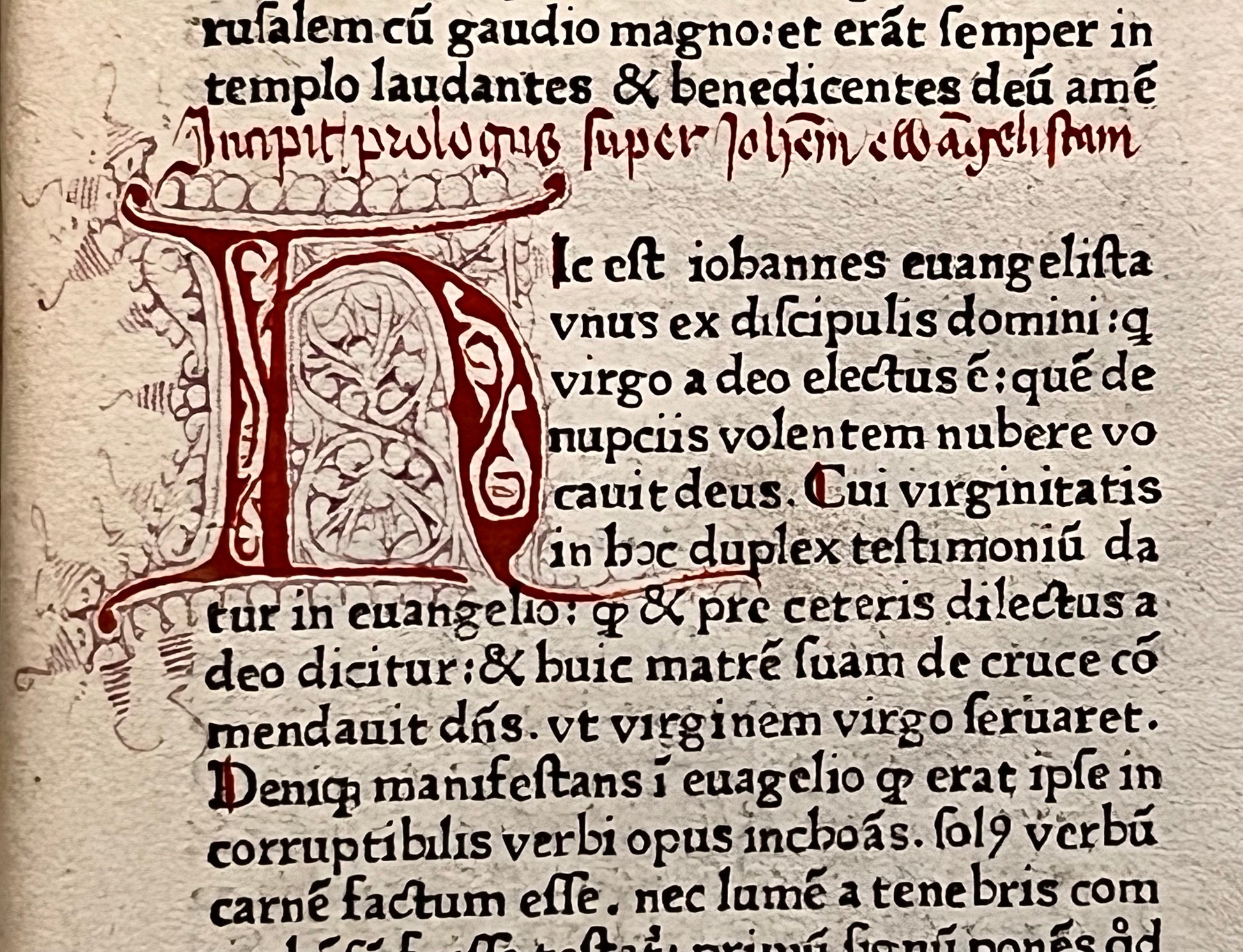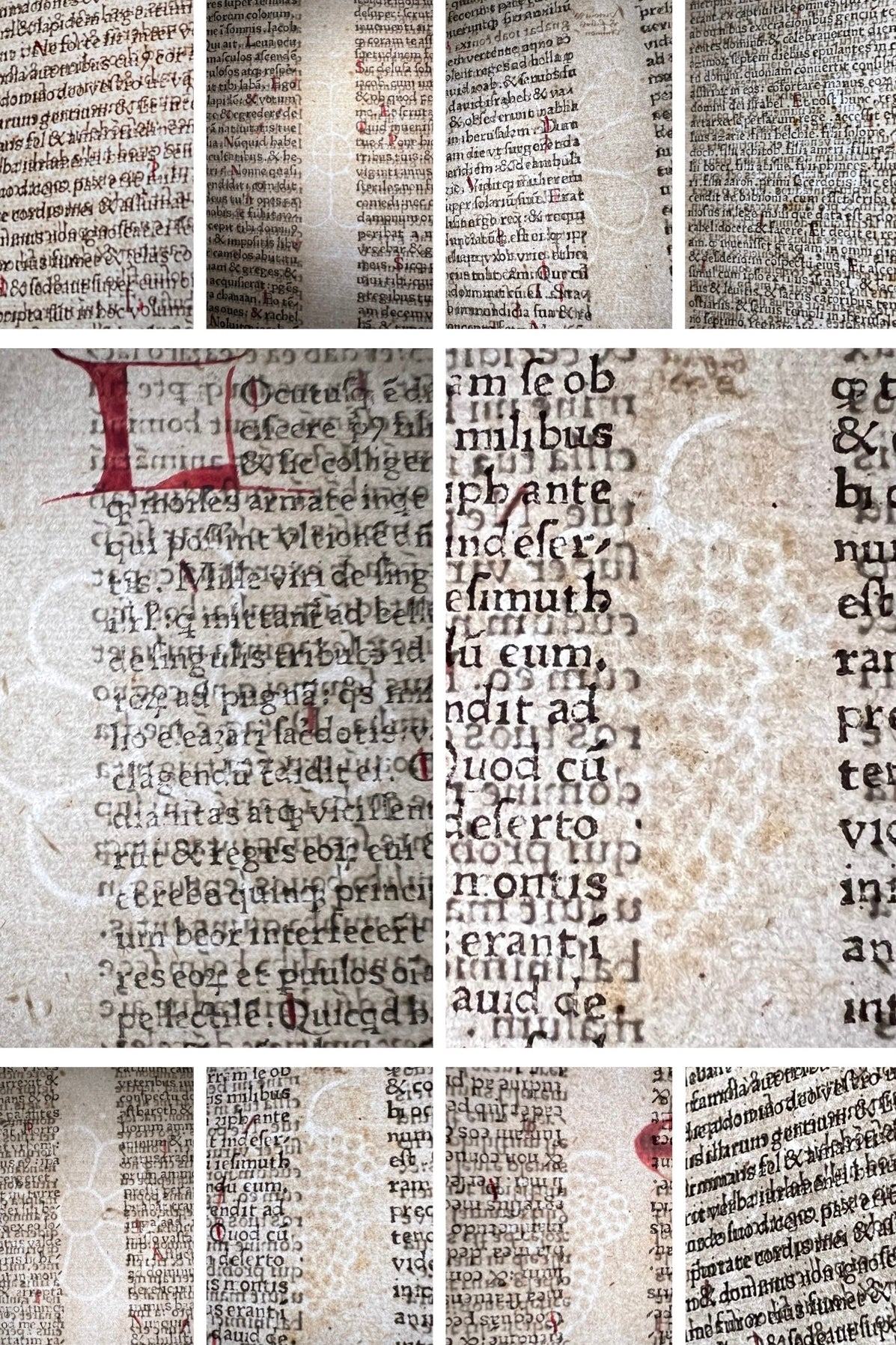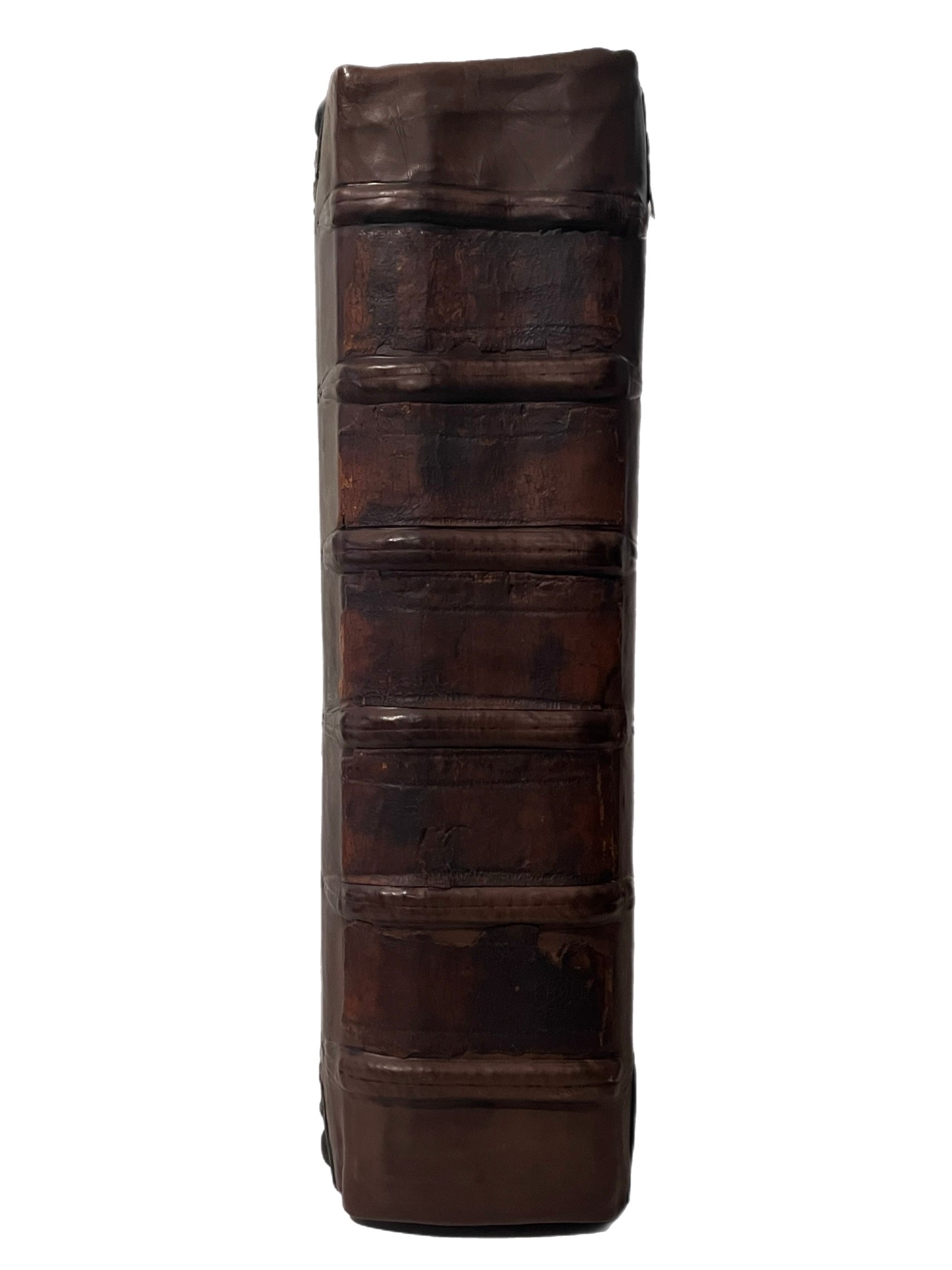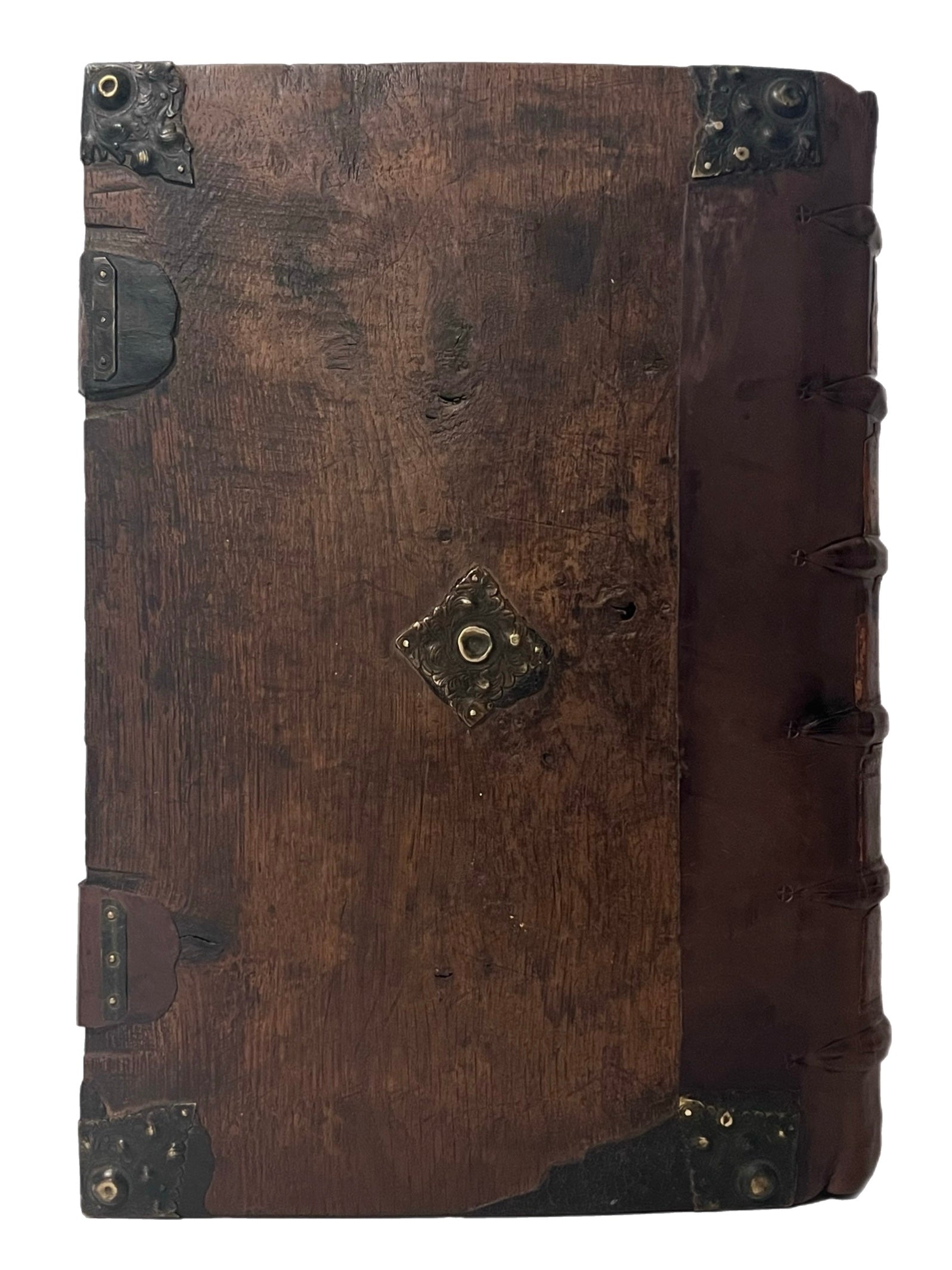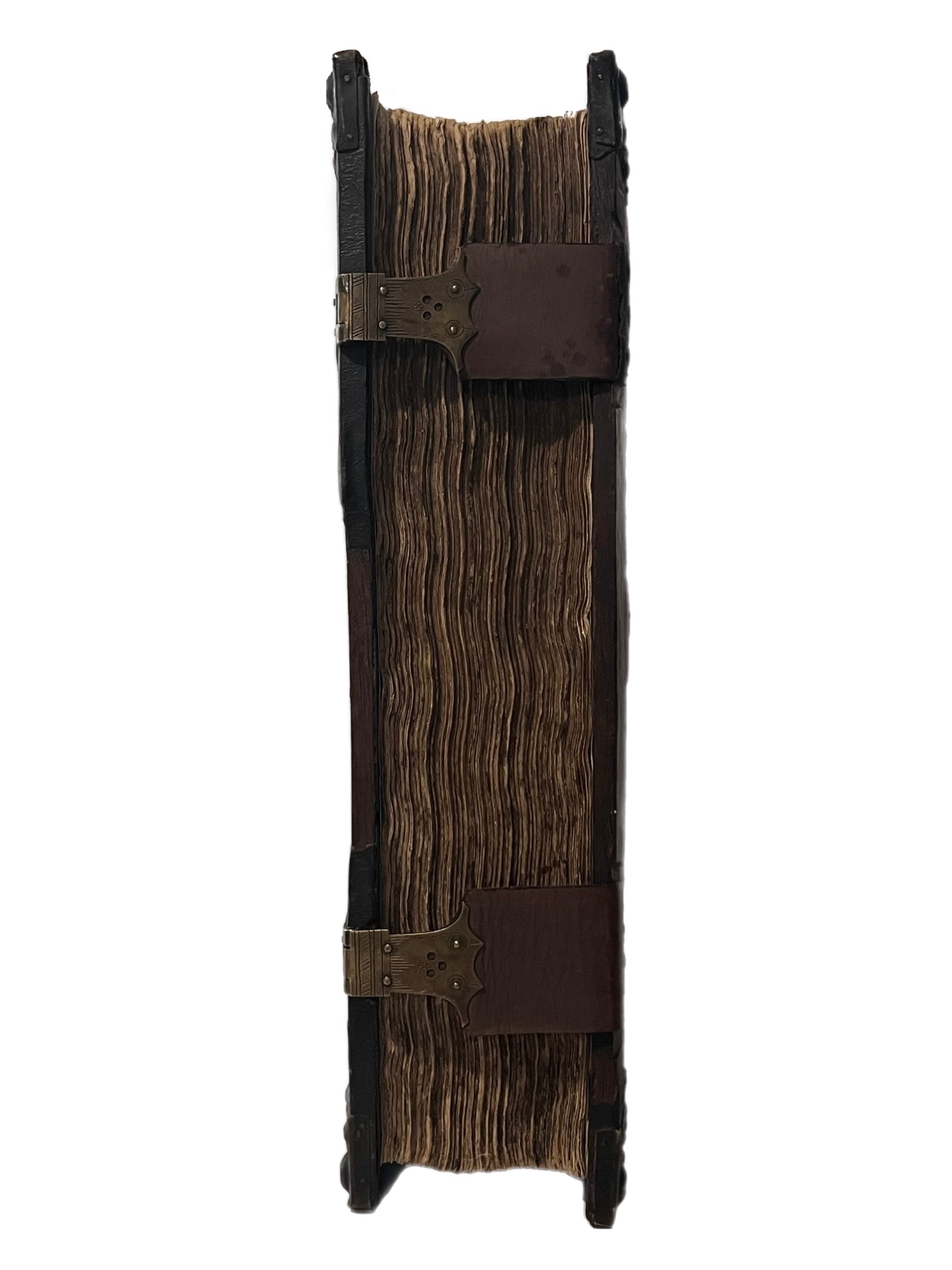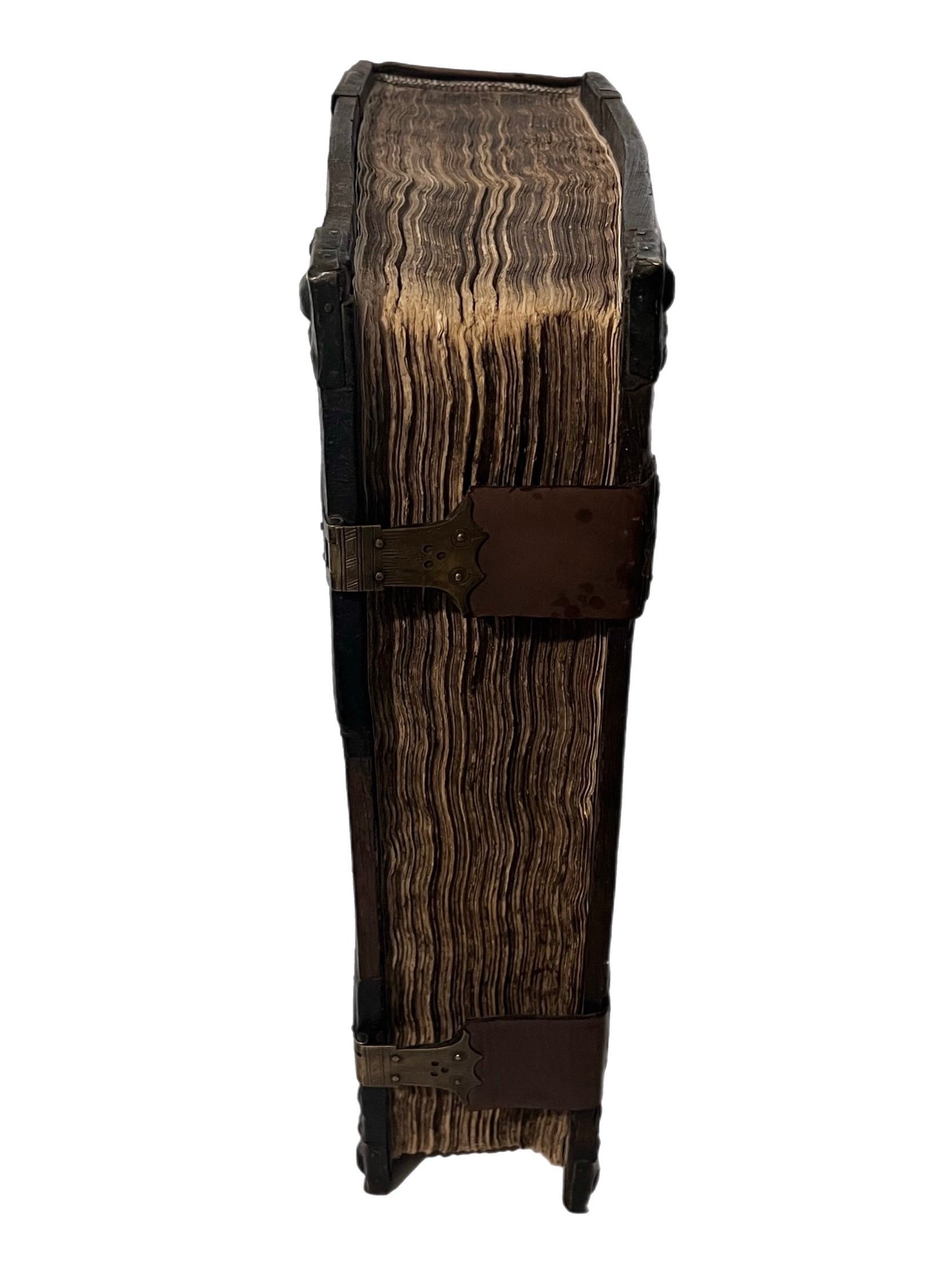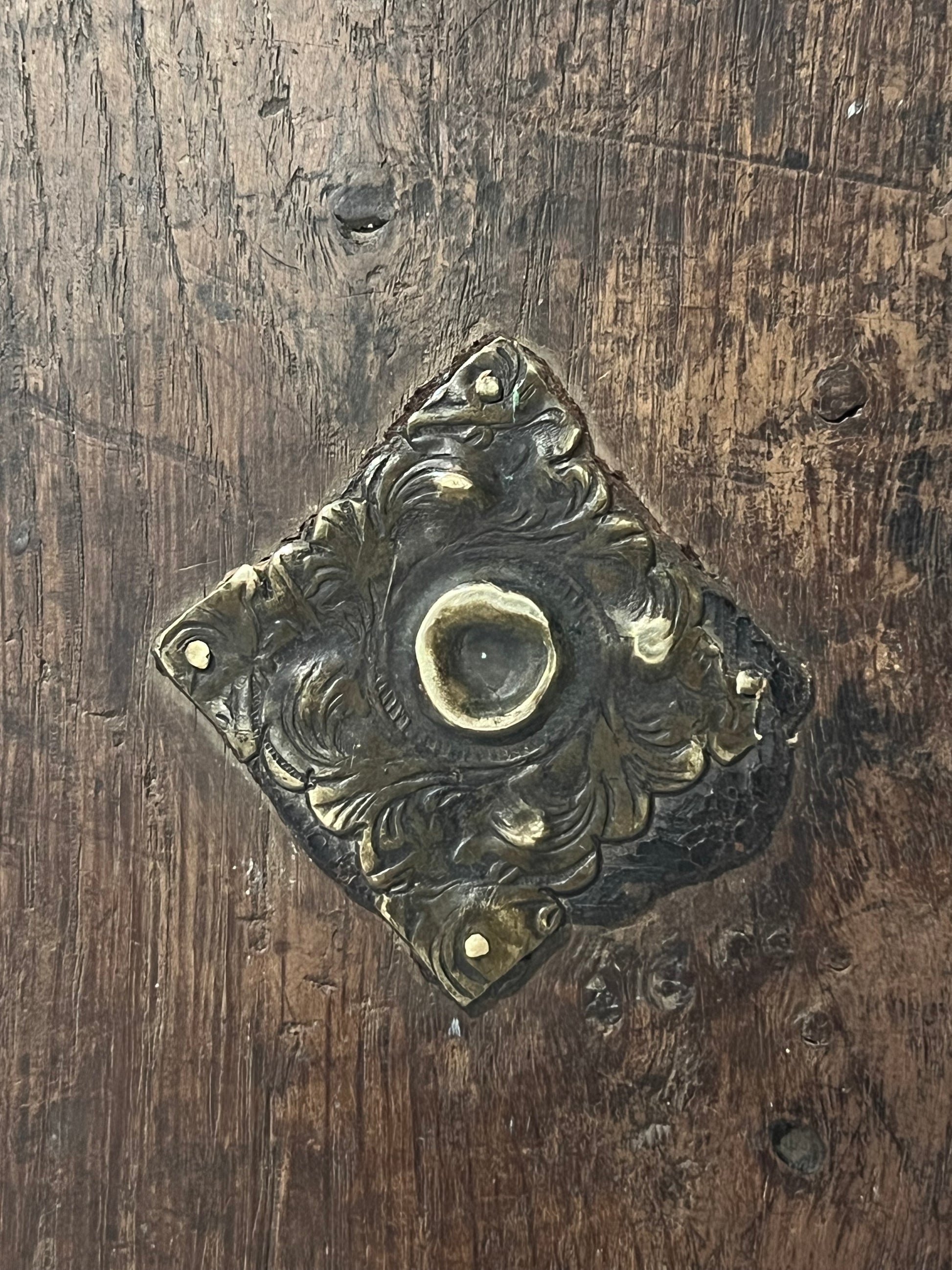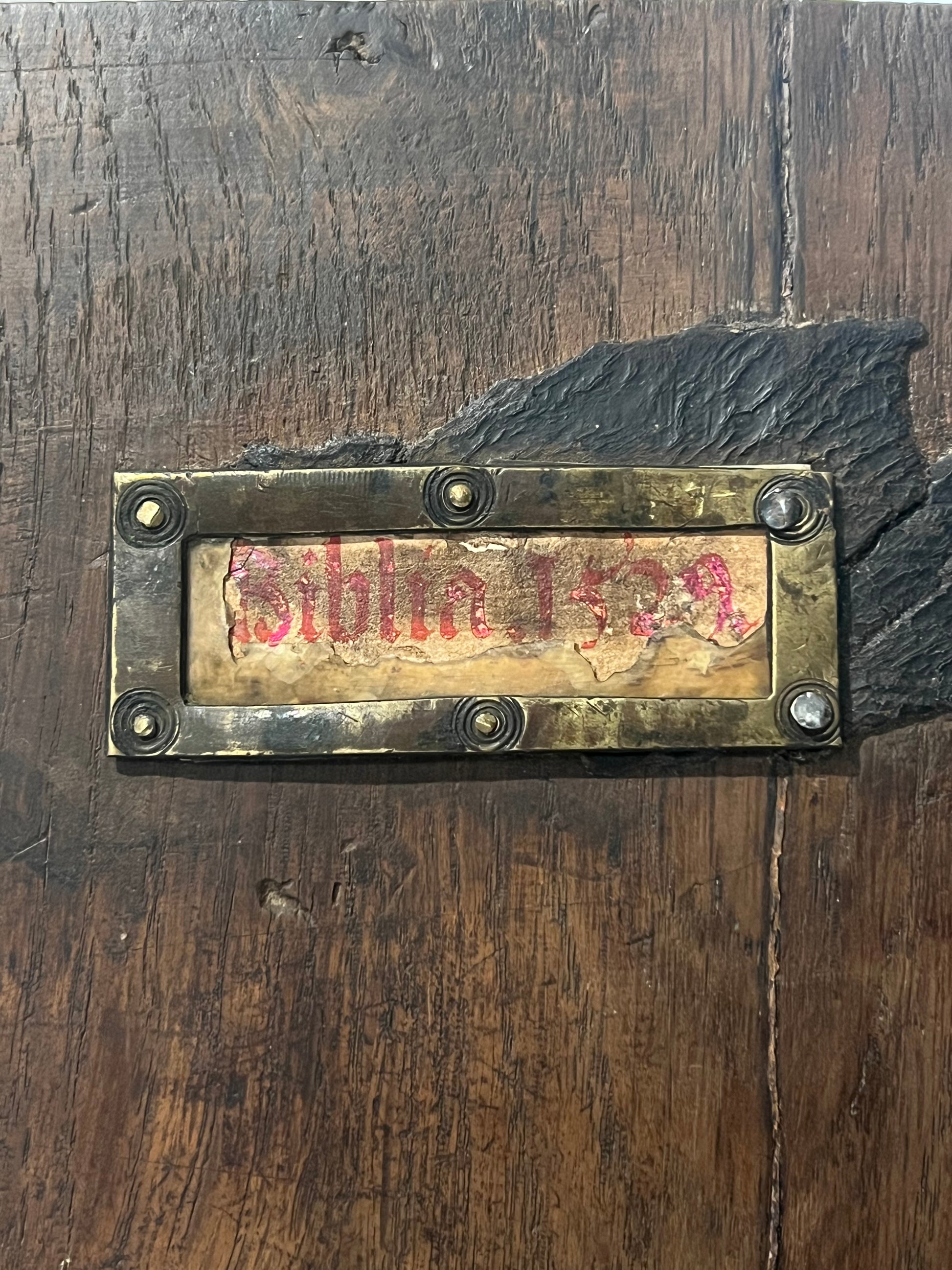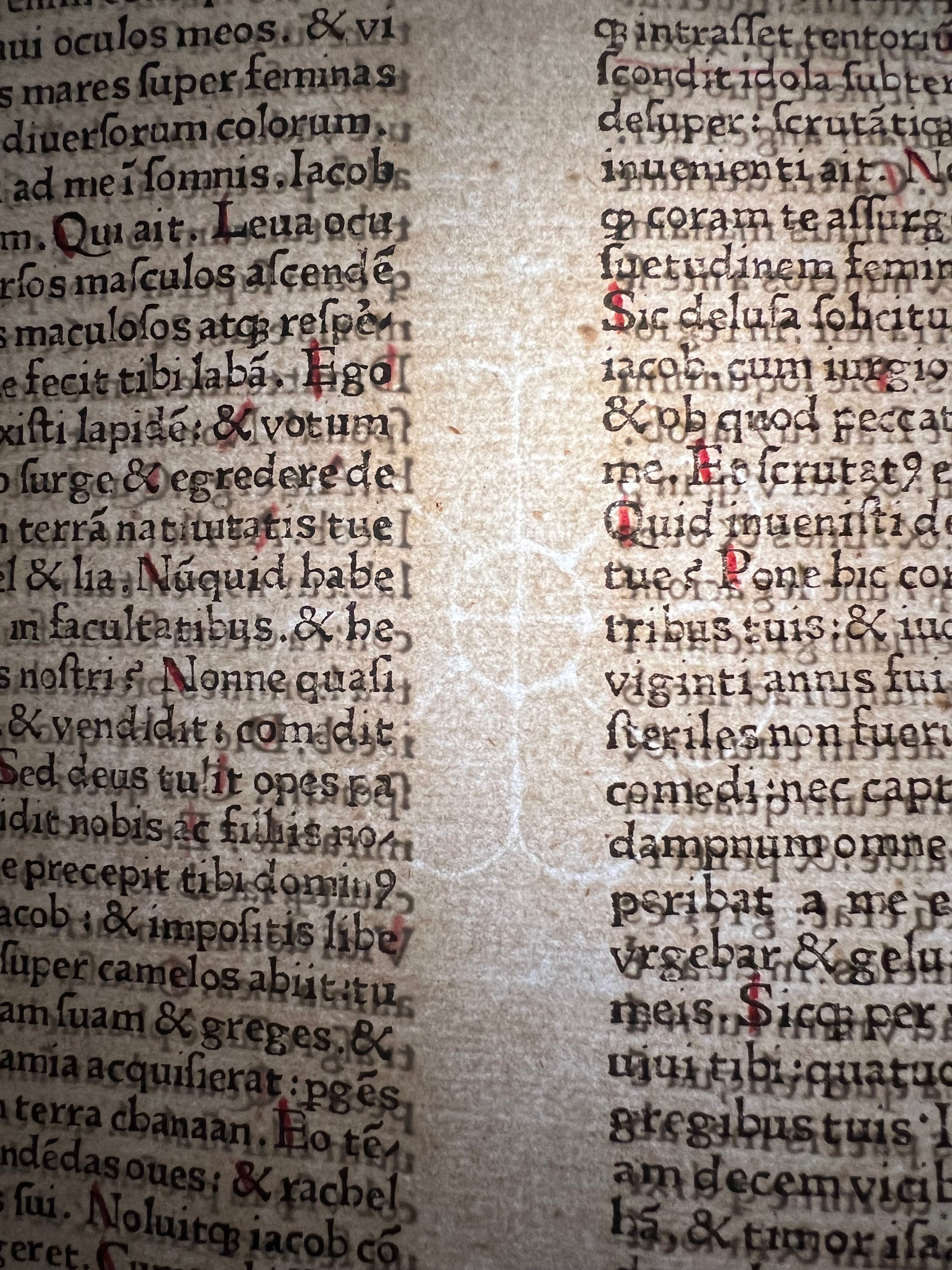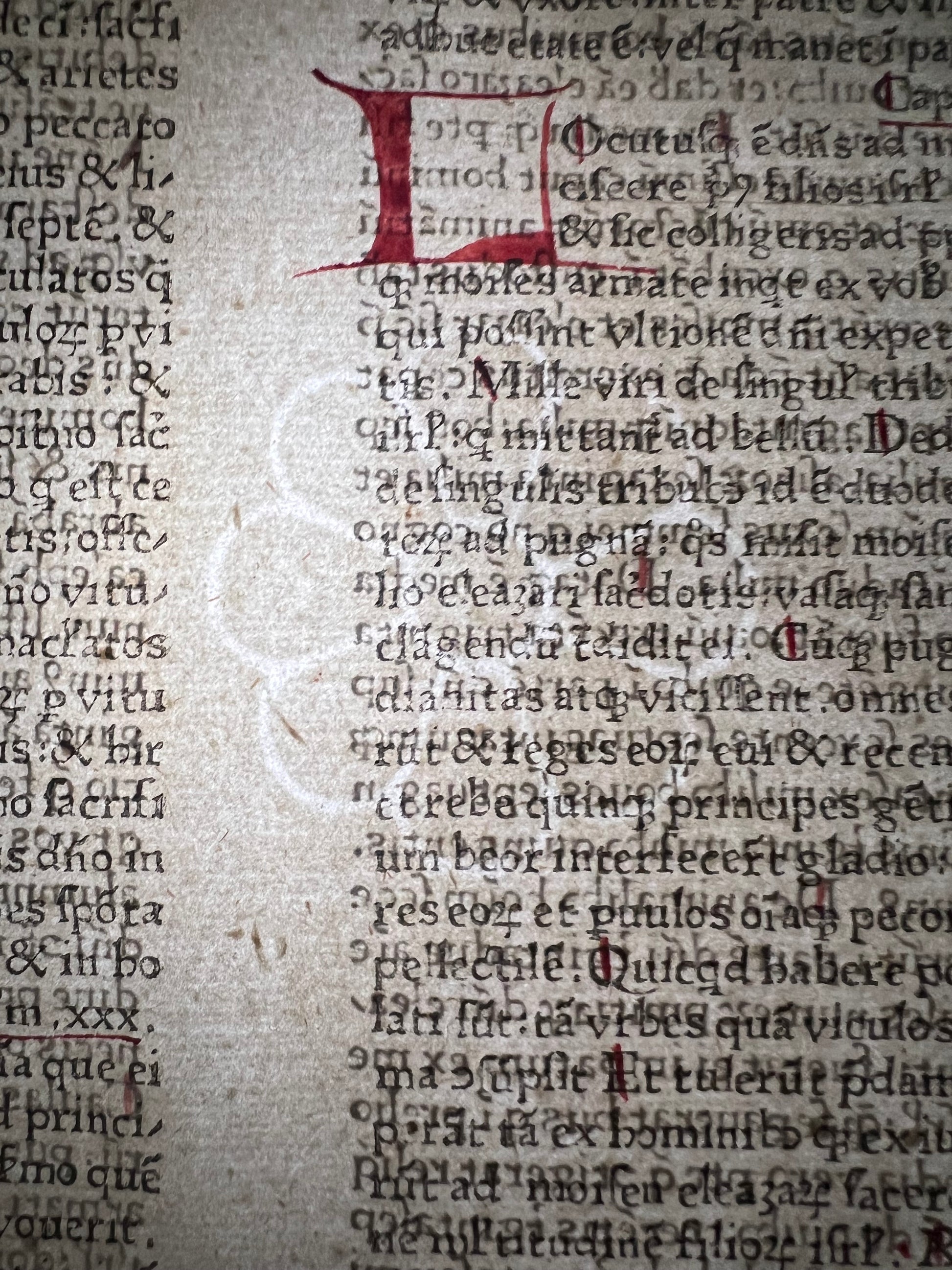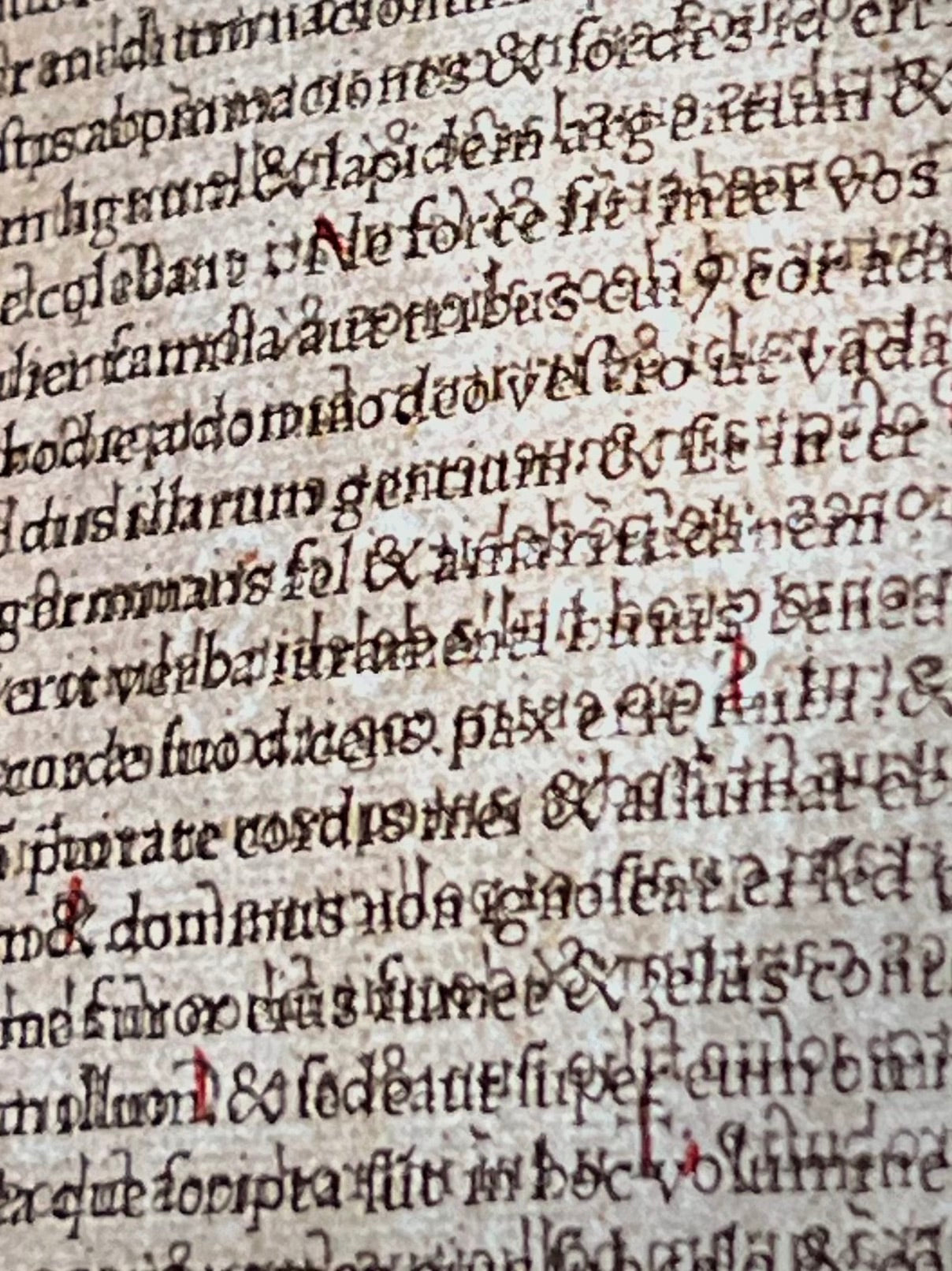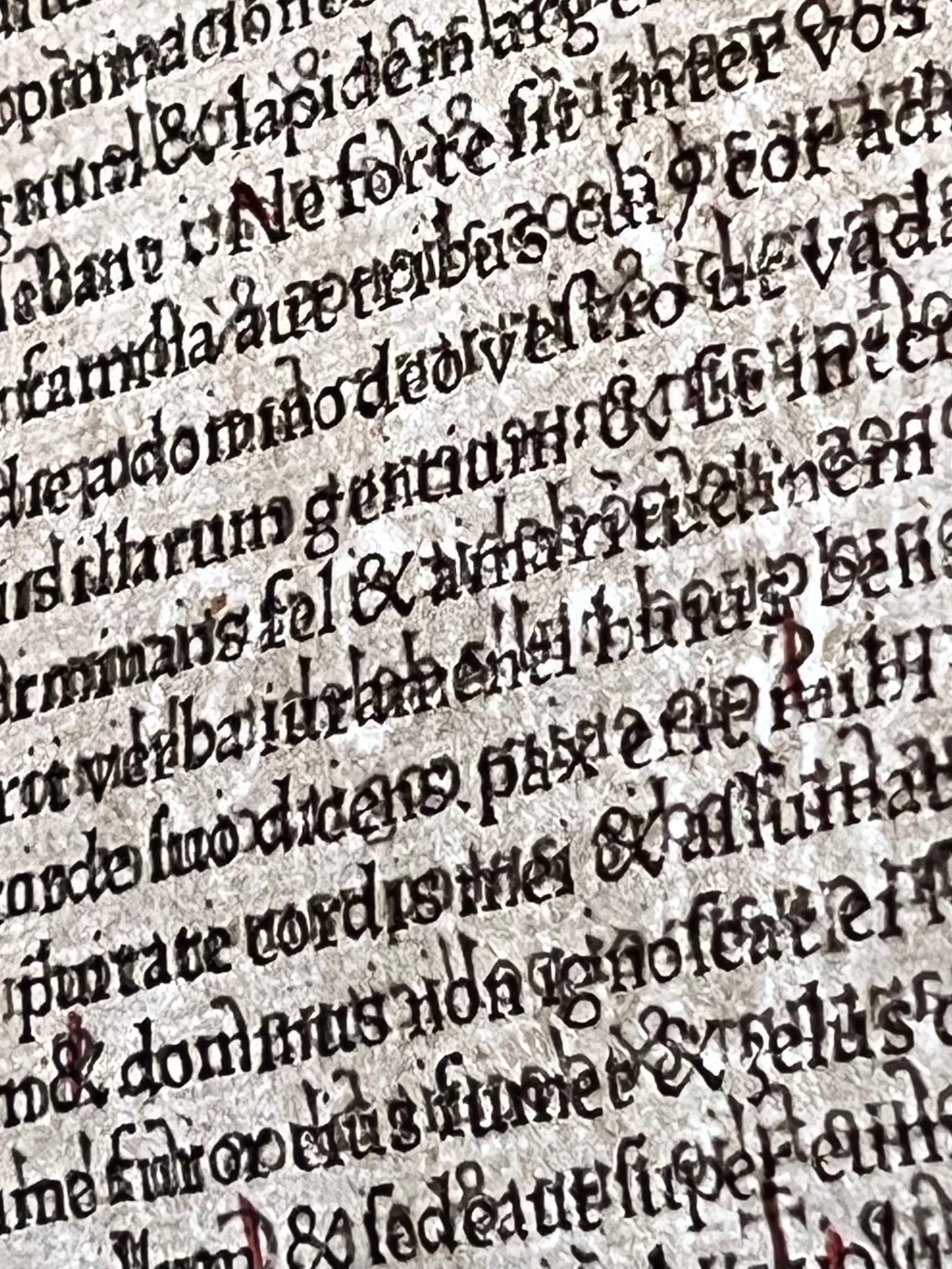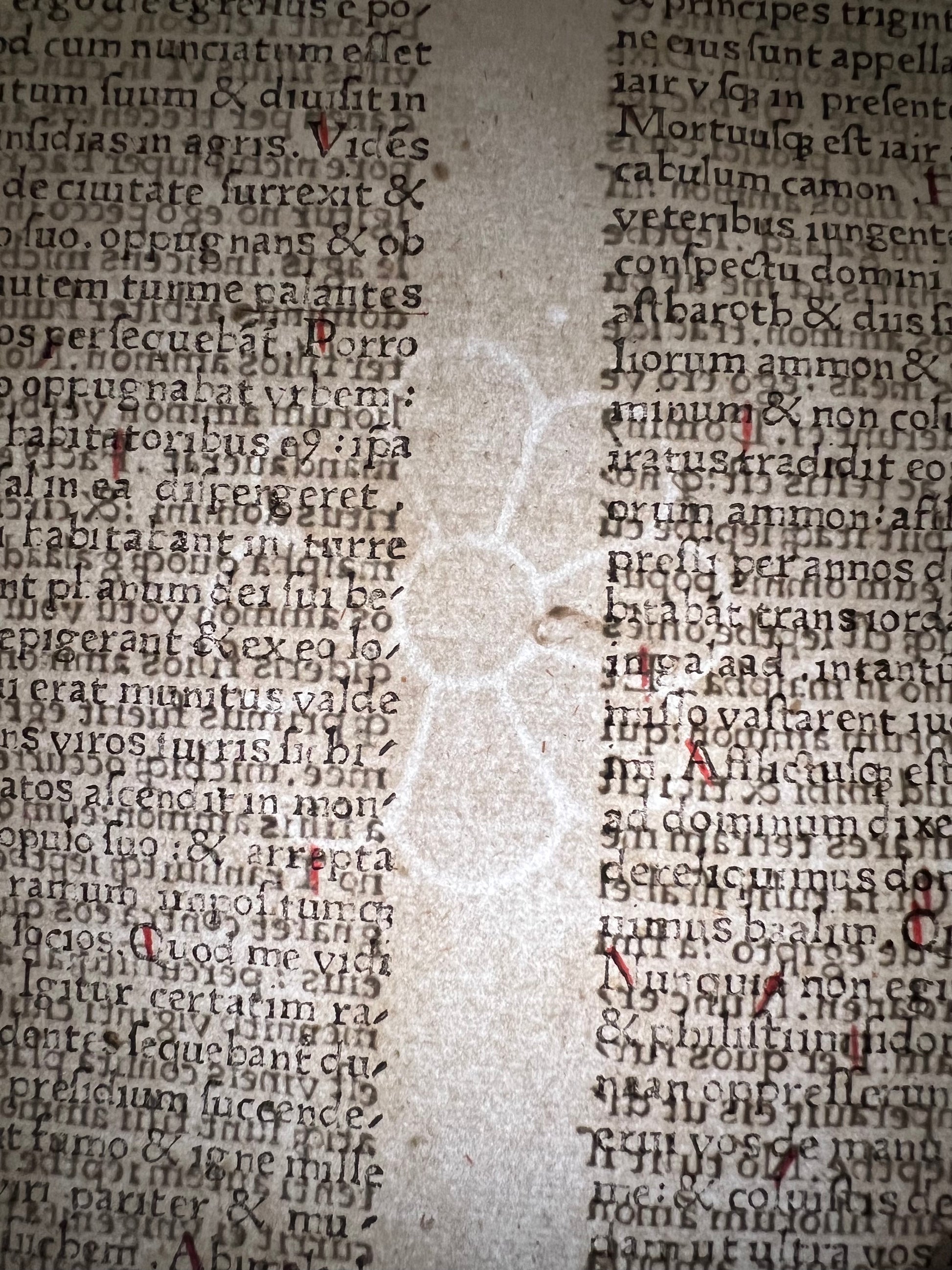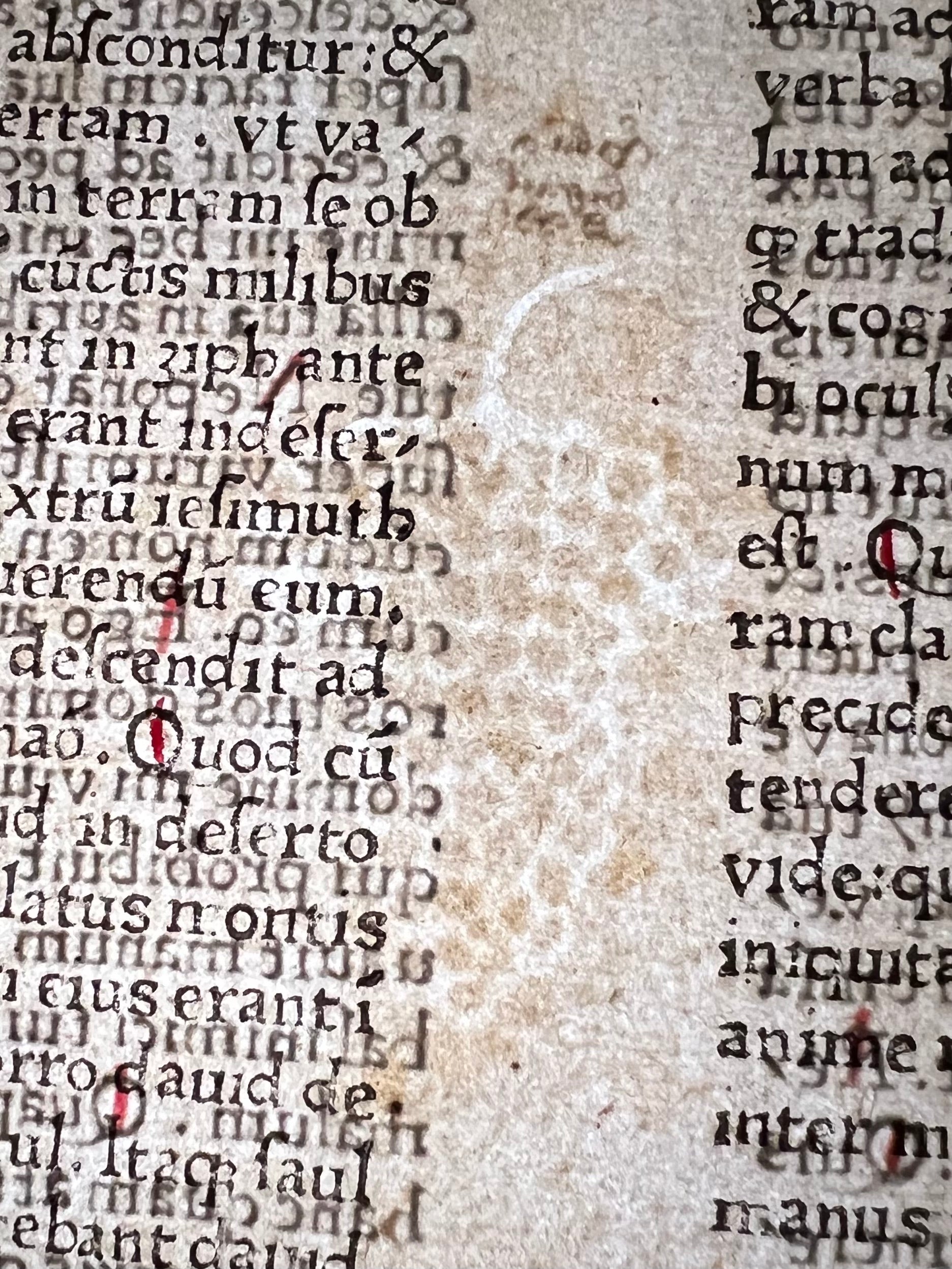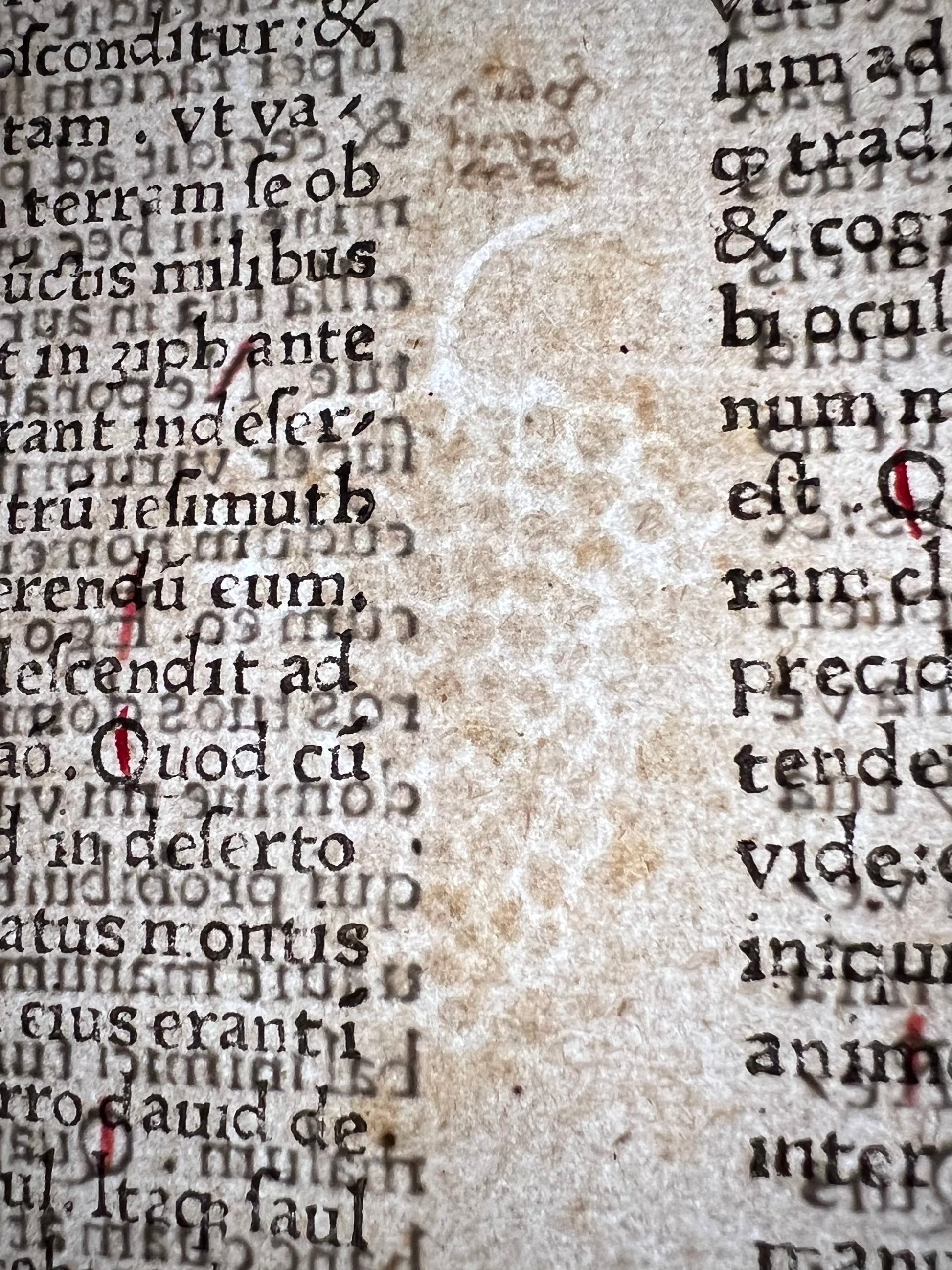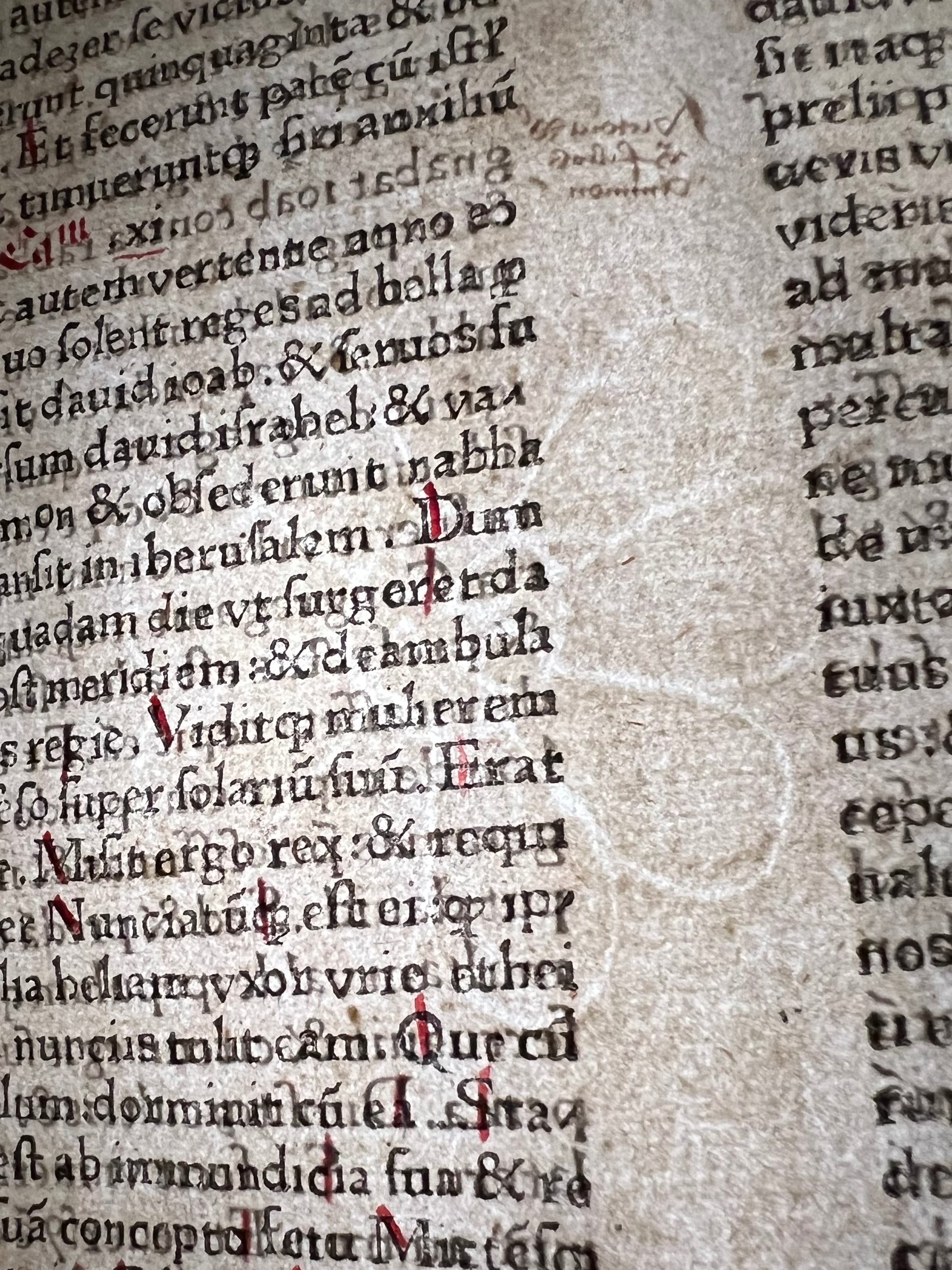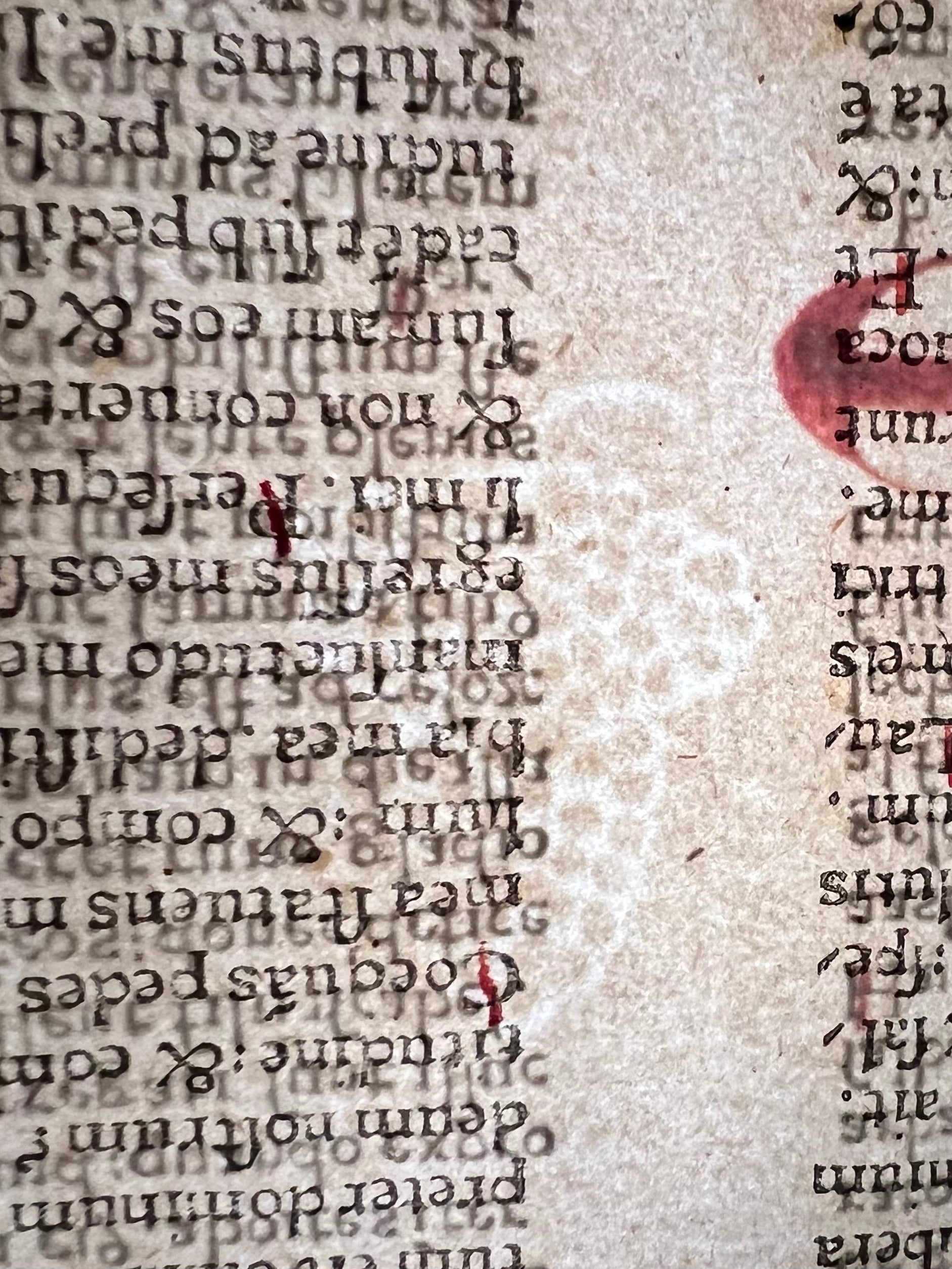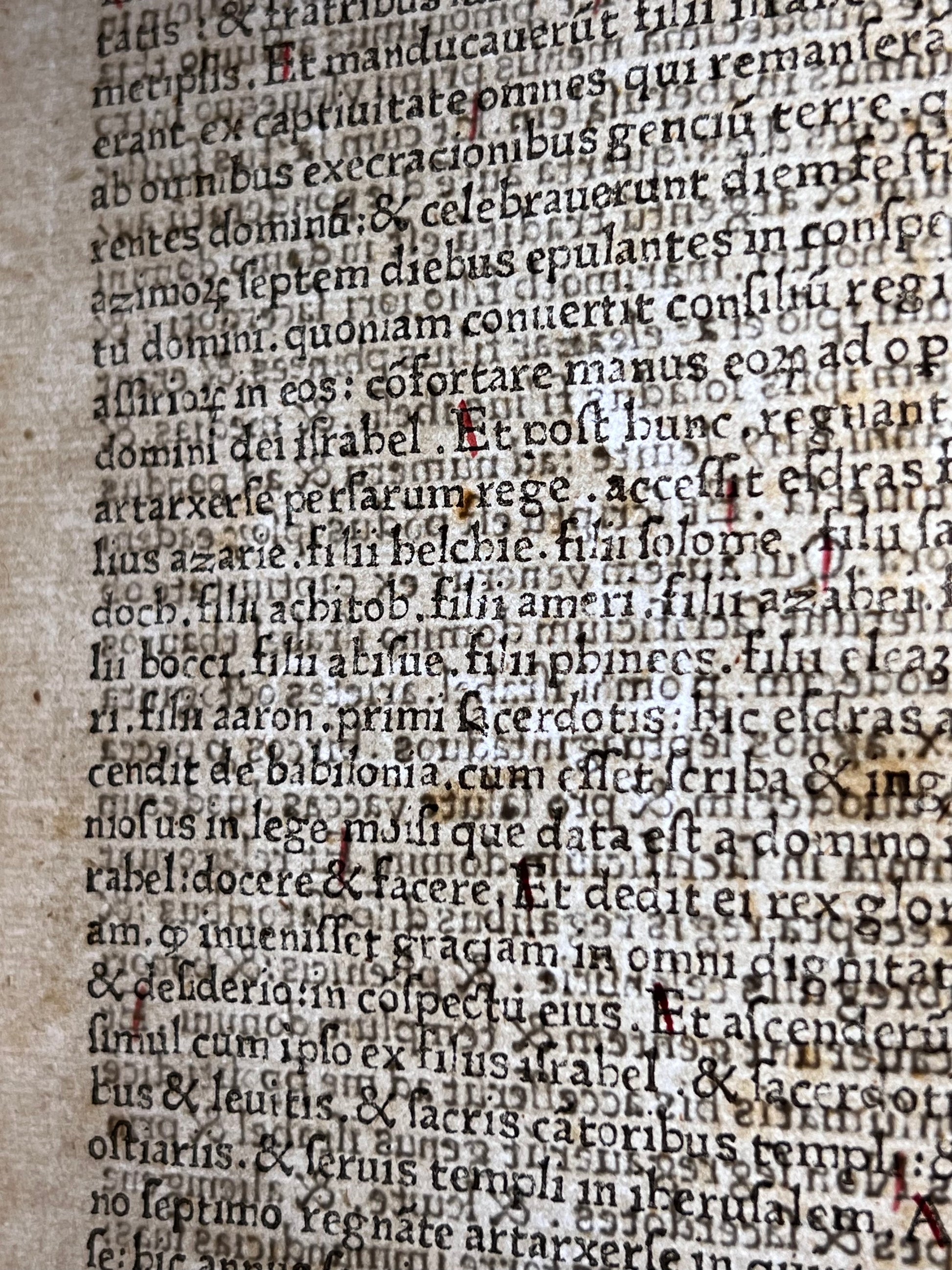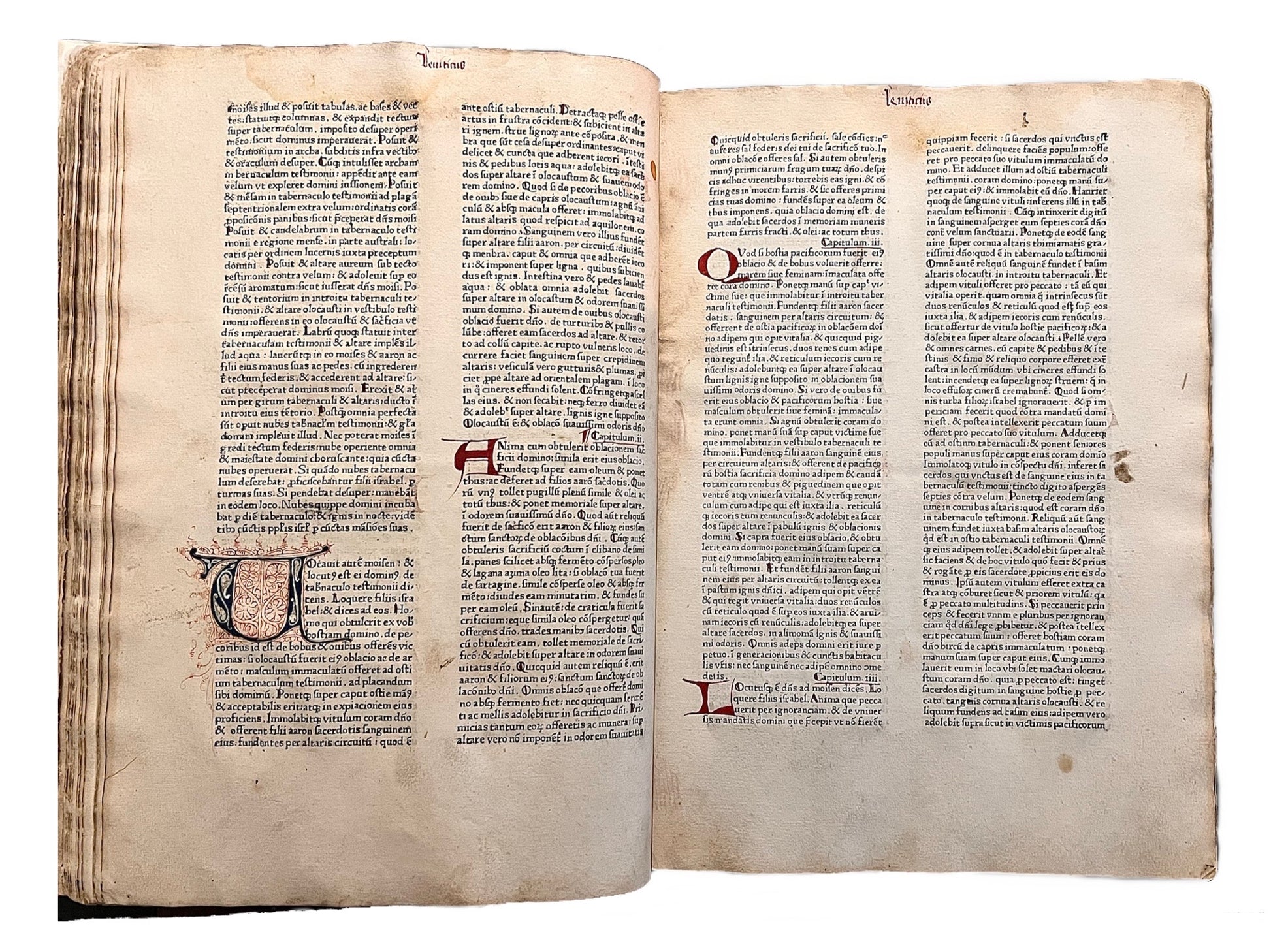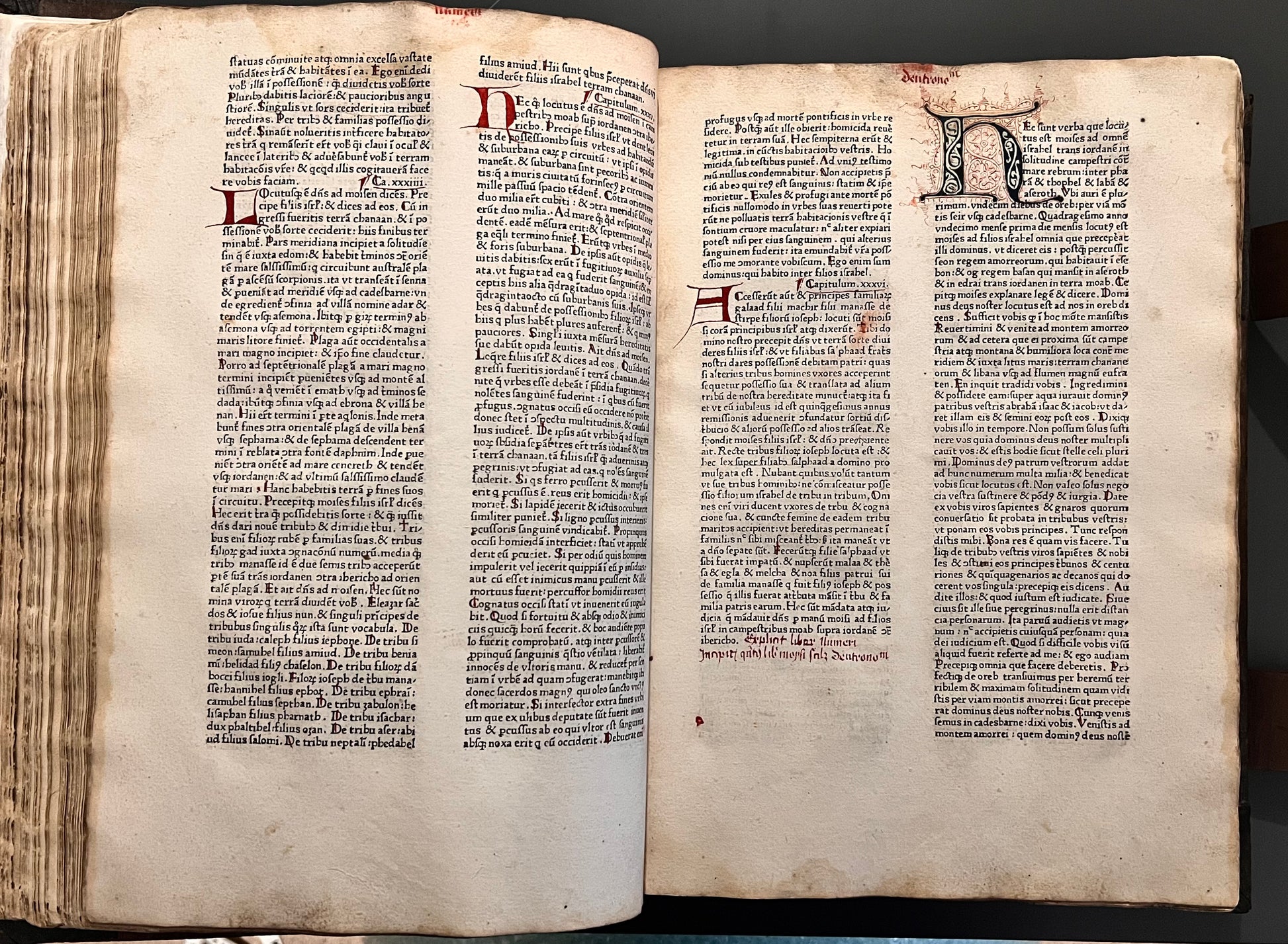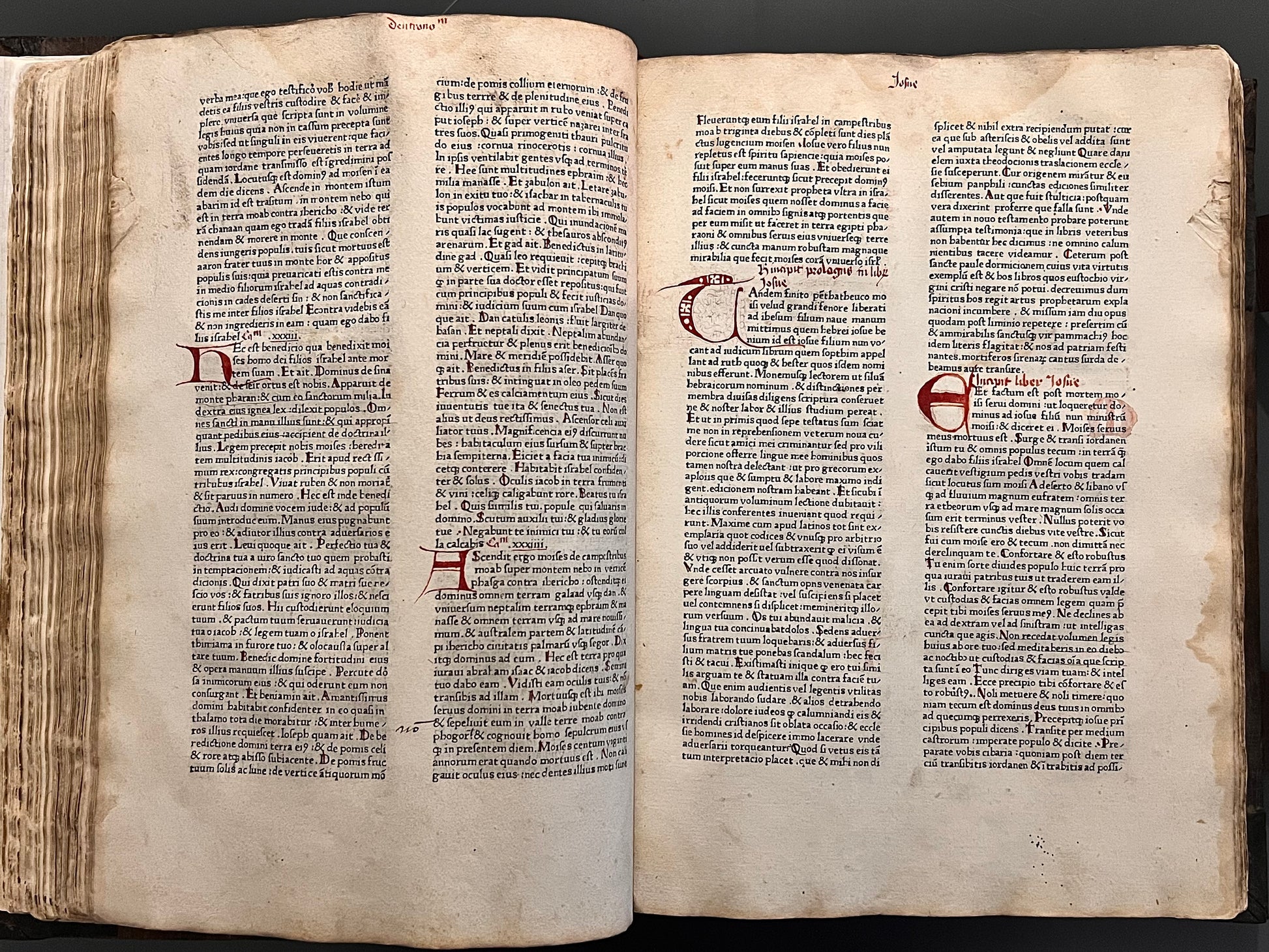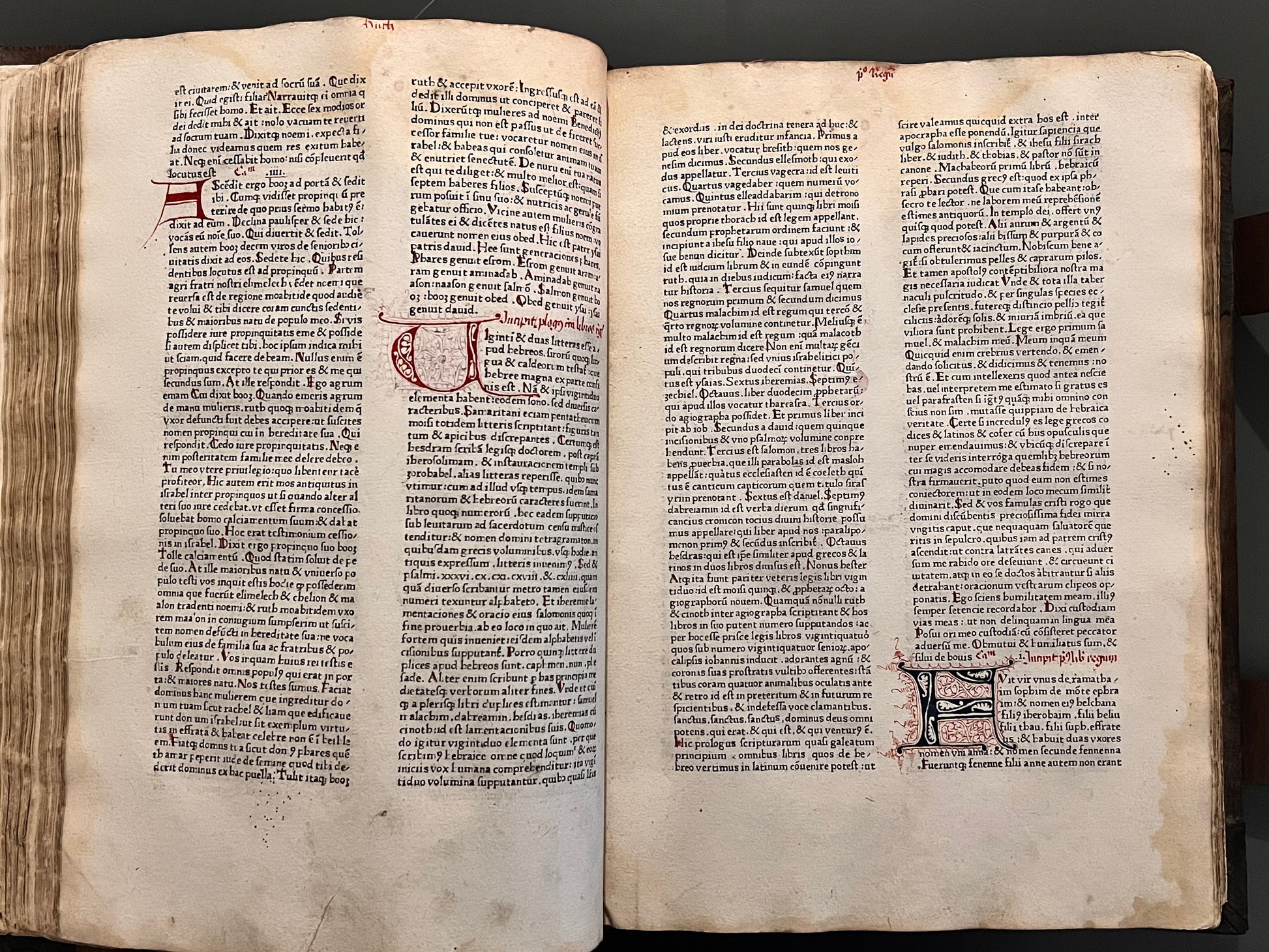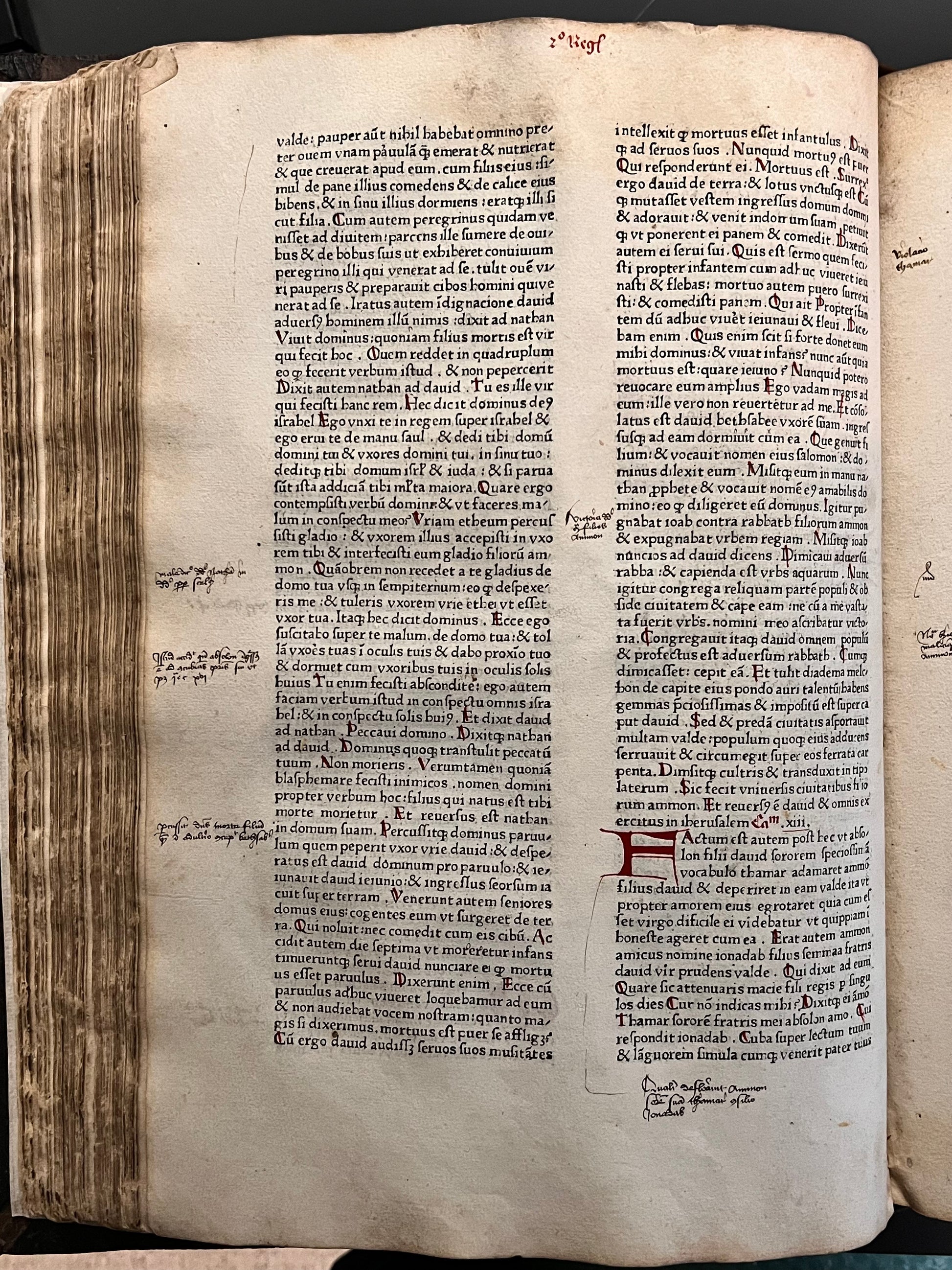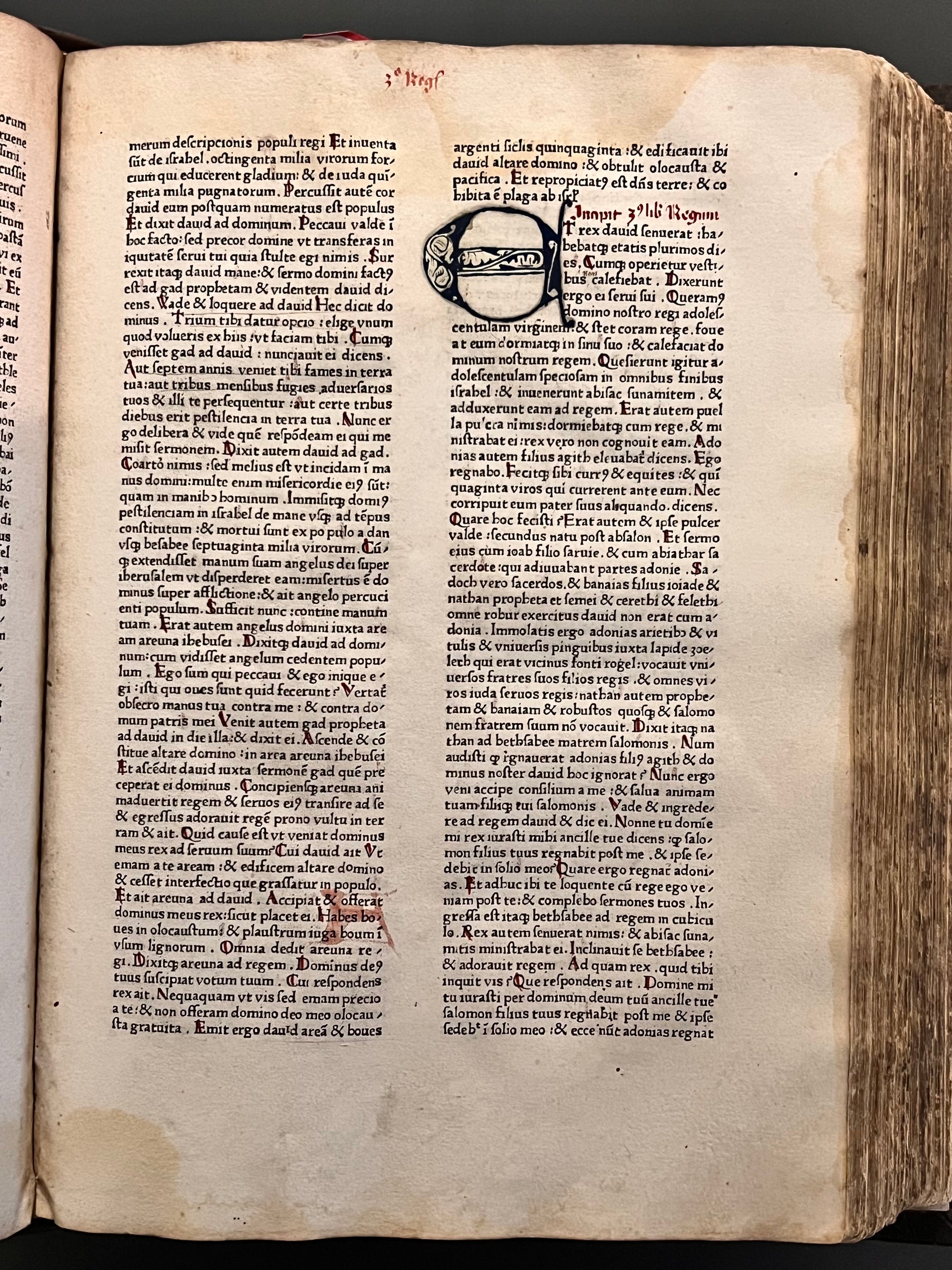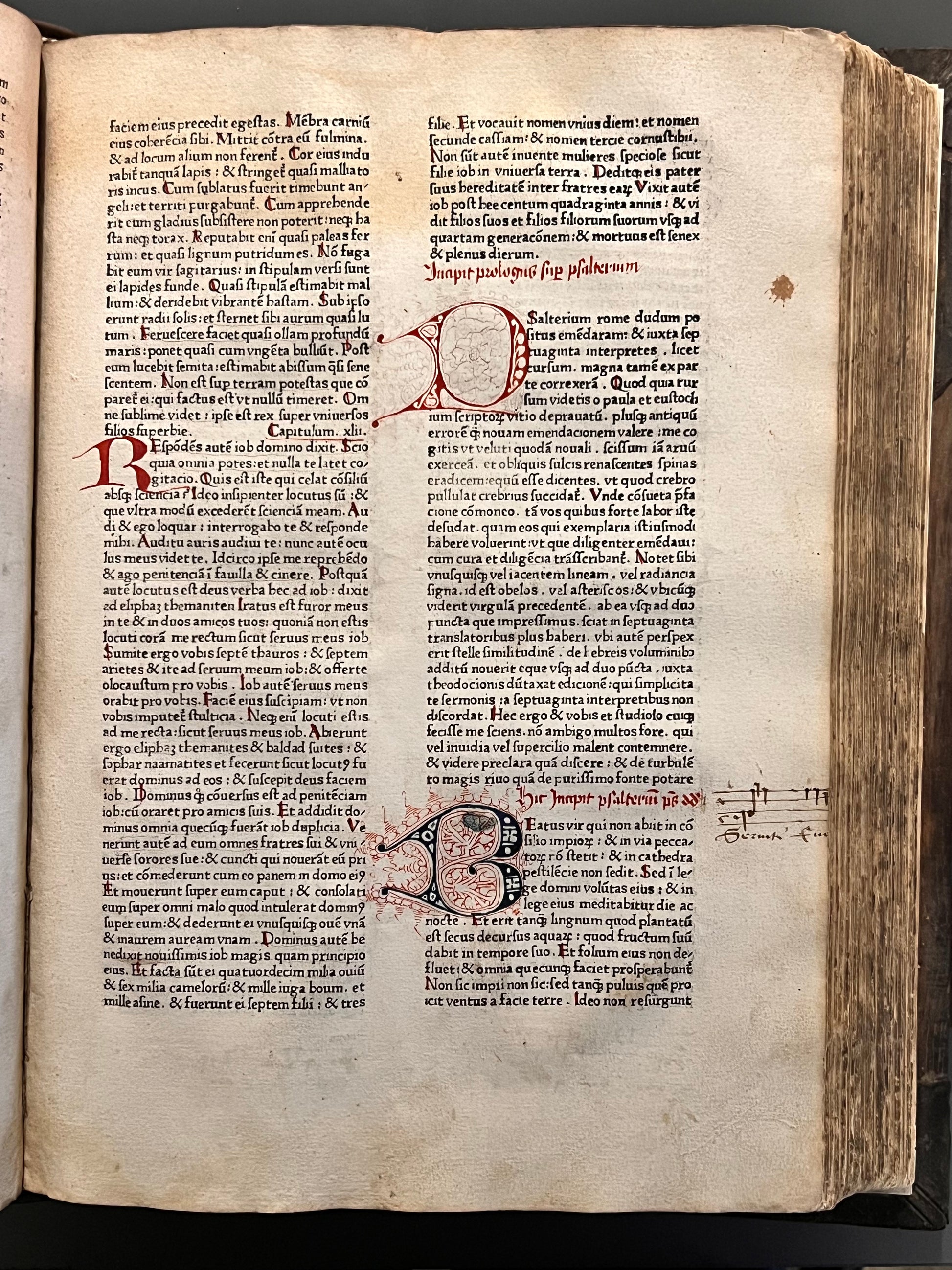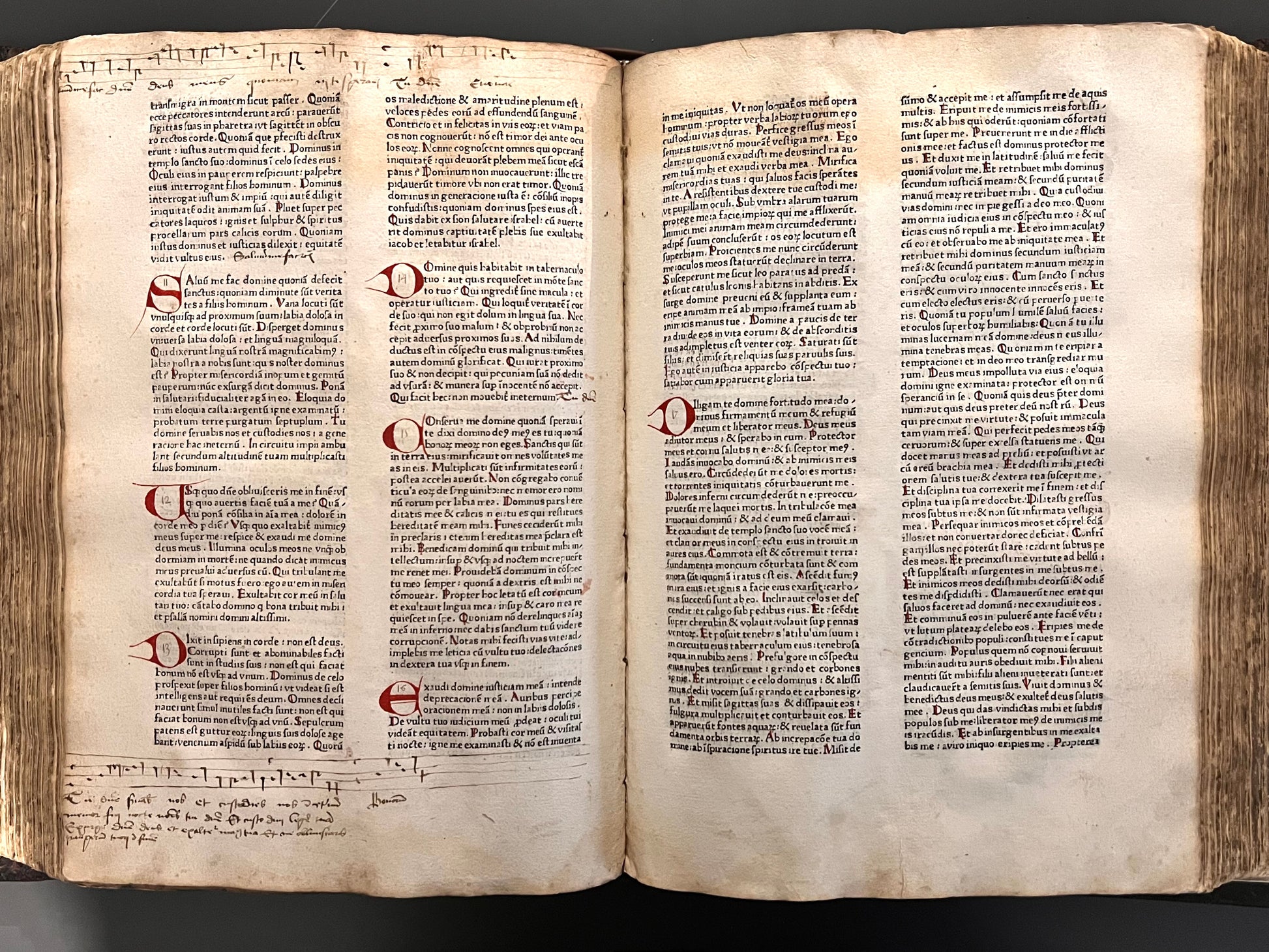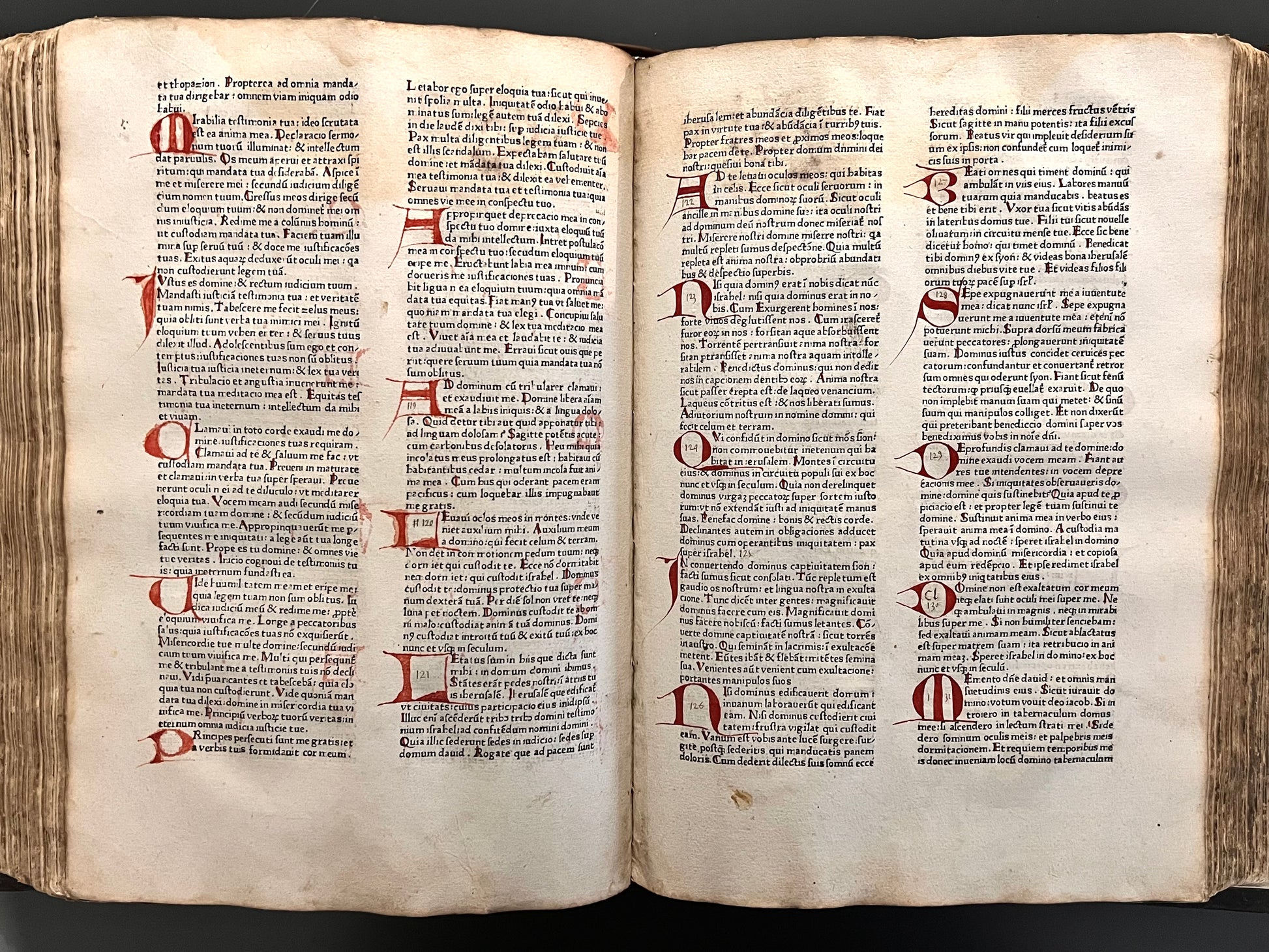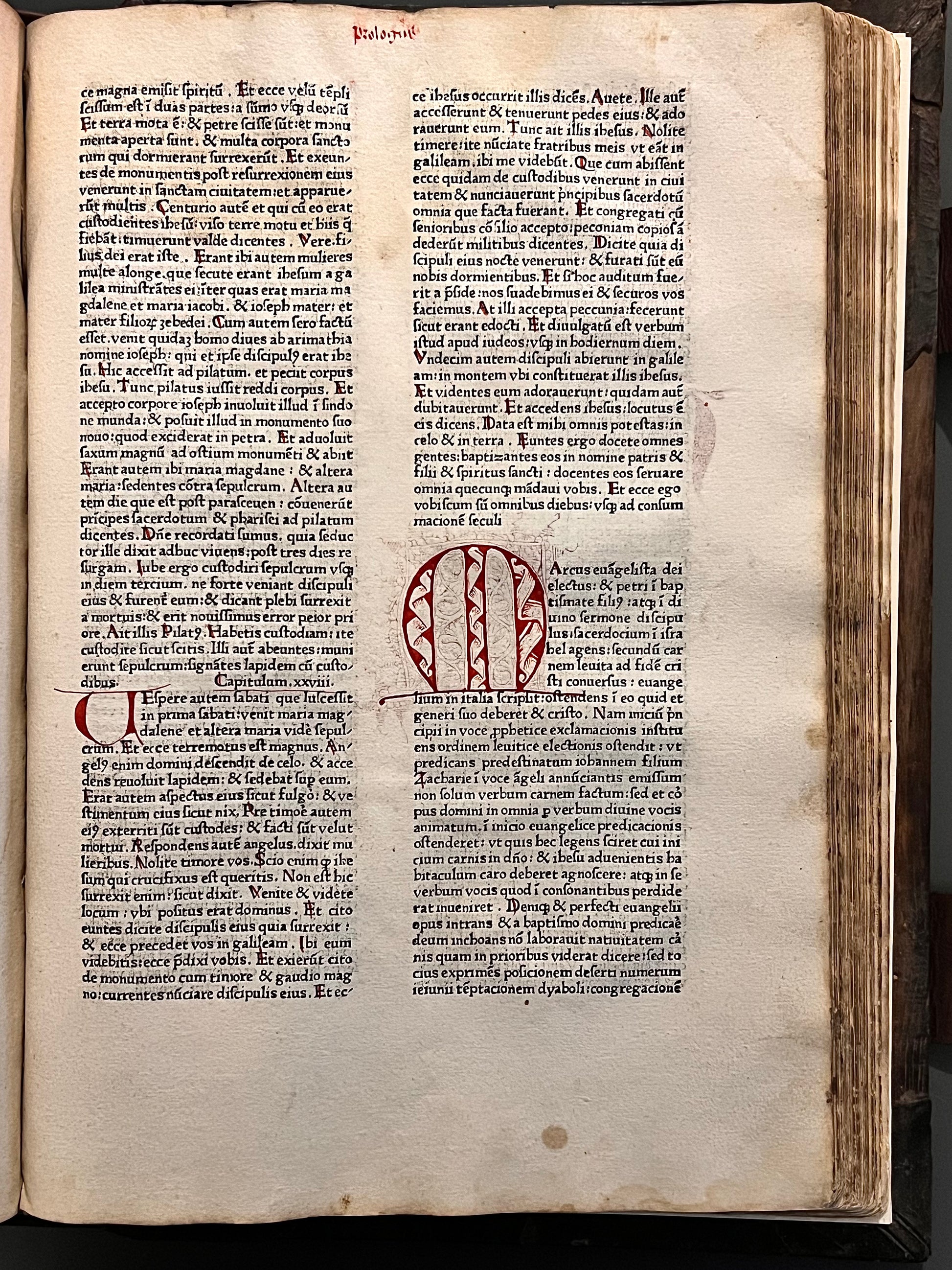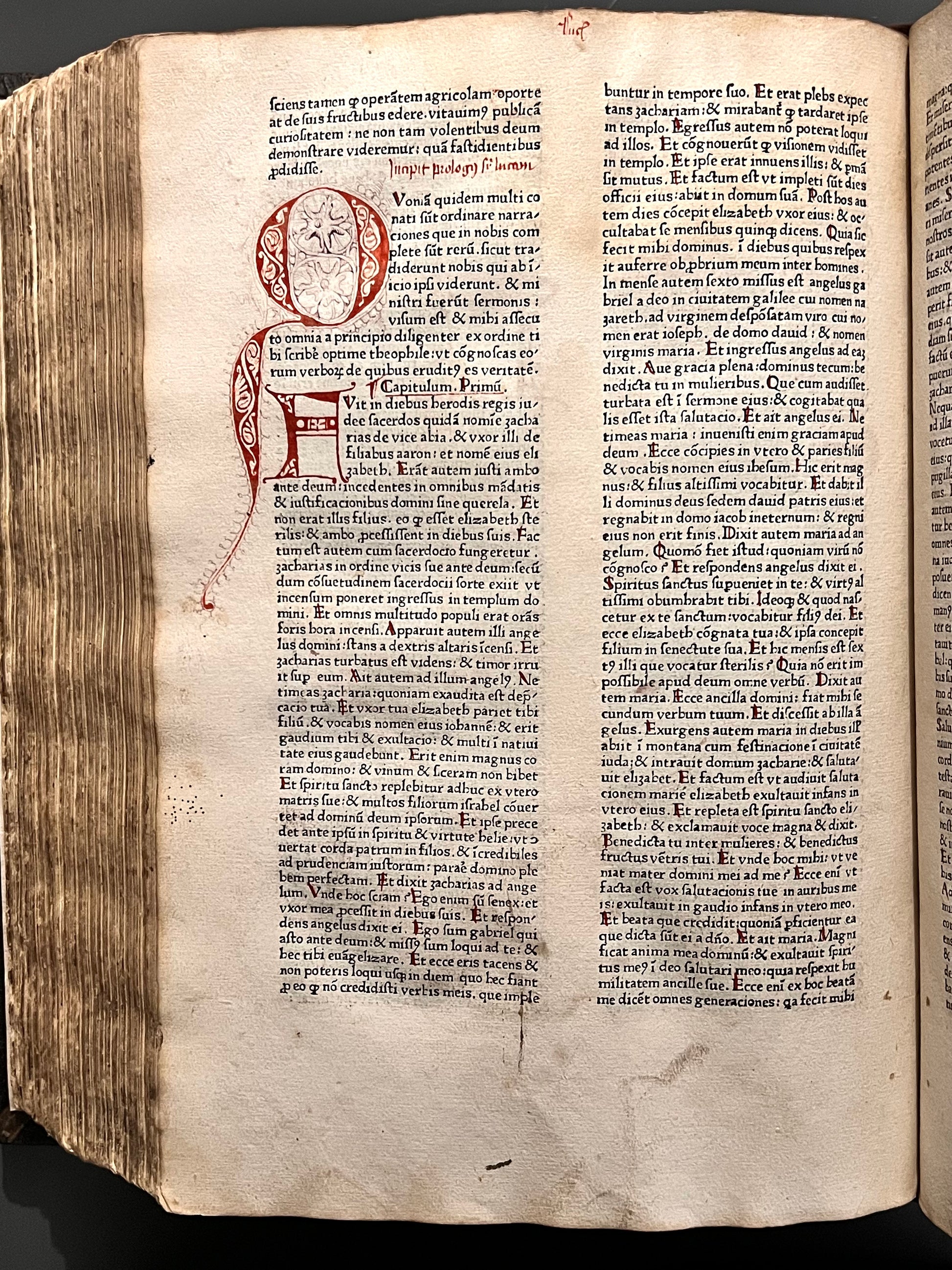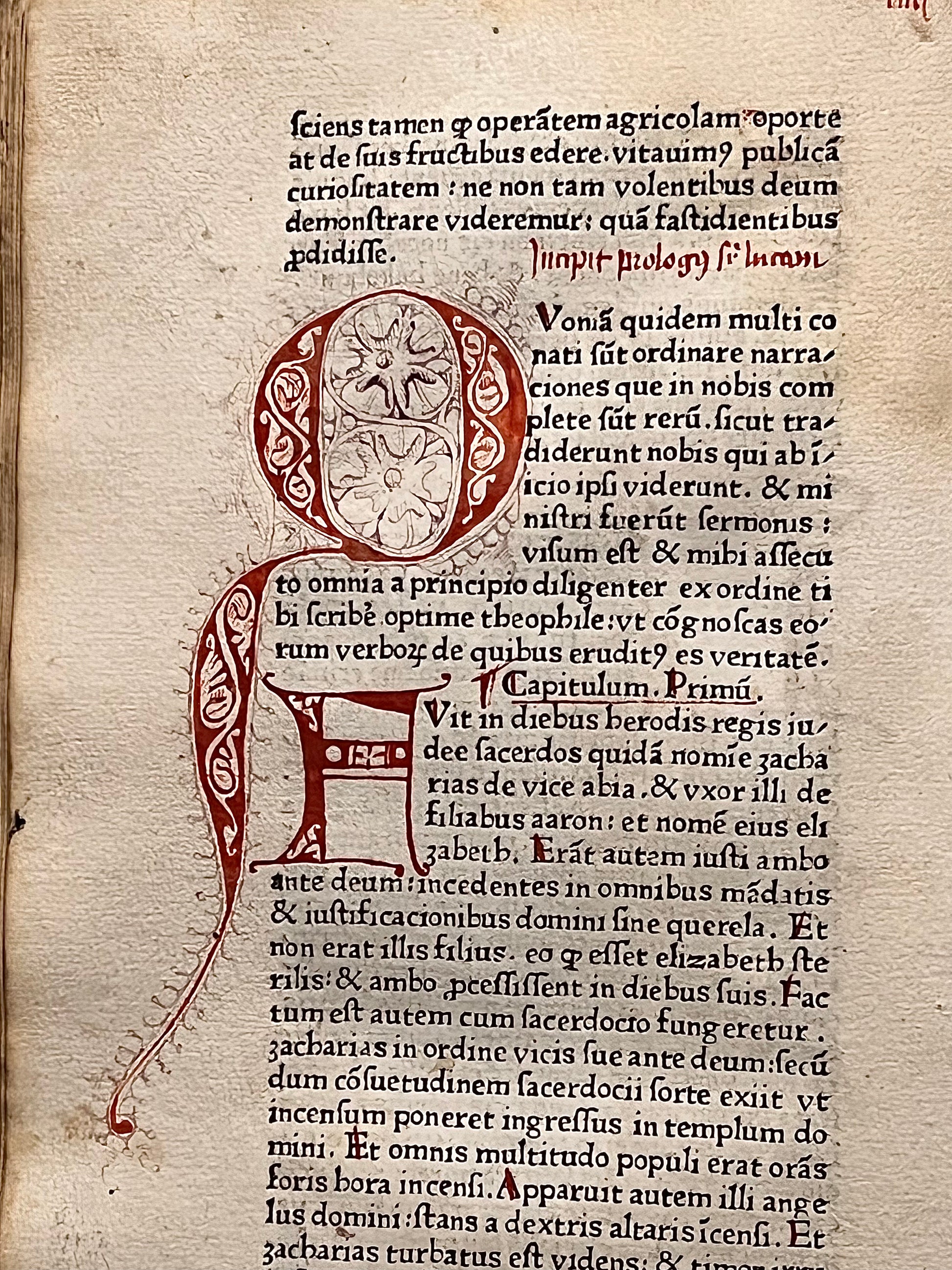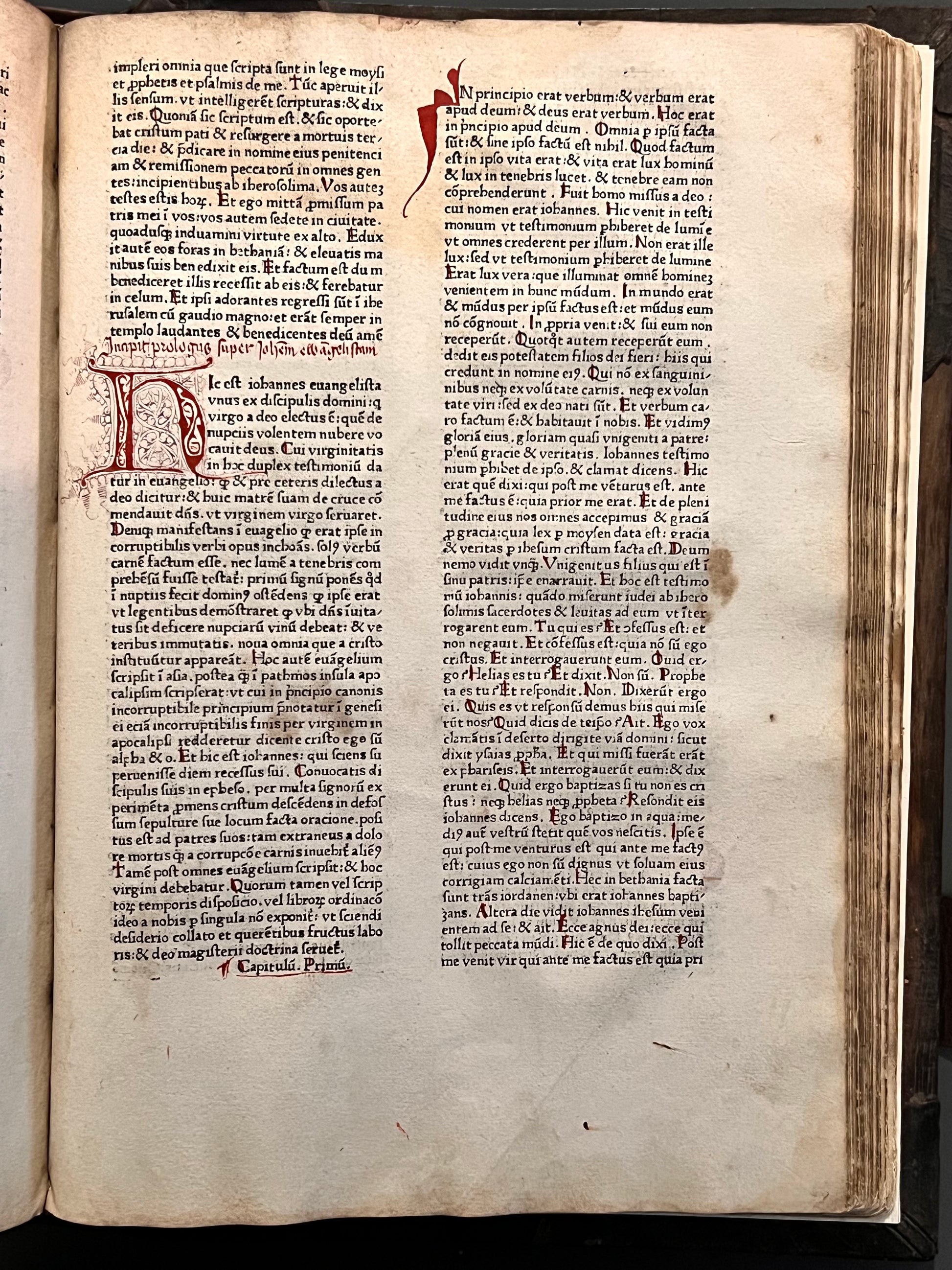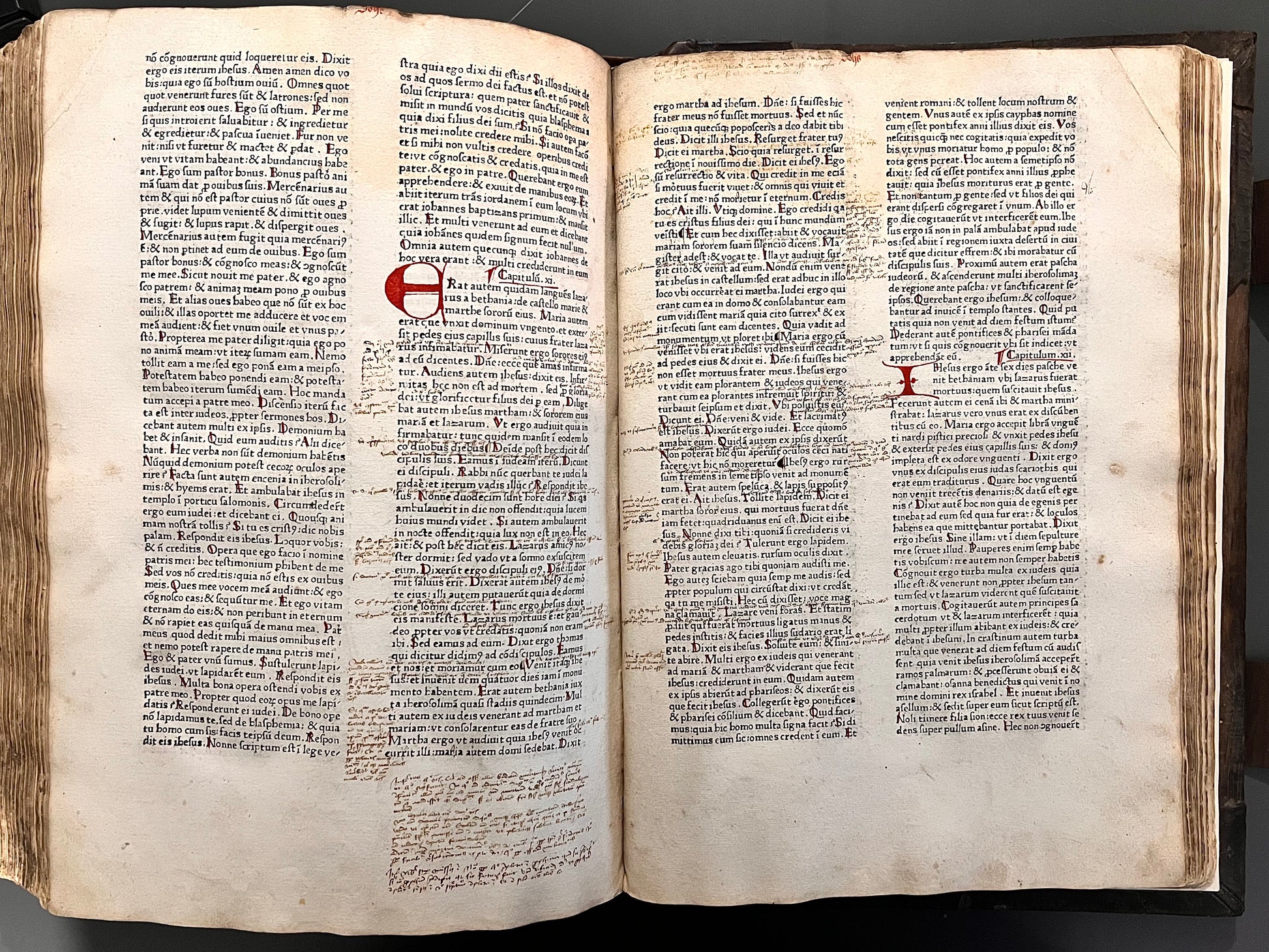The Earliest Obtainable Printed Bible c.1465-1473: Adolf Rusch & Johannes Mentelin's Bible
The Earliest Obtainable Printed Bible c.1465-1473: Adolf Rusch & Johannes Mentelin's Bible
Couldn't load pickup availability
Biblia Latina: Strasbourg, likely Adolf Rusch & Johannes Mentelin, c.1465-1473. [not after 1473]. Roman type (Rusch "type 1"), folio.
THE EARLIEST OBTAINABLE PRINTED BIBLE; THE CLOSEST BIBLE ONE CAN OWN TO GUTENBERG. AN INCREDIBLE VERY EARLY INCUNABLE BIBLE IN A STUNNING BINDING.
-------------------
Printing History:
This Latin Bible is printed in Roman type (the first or second Latin Bible printed in Roman type, depending on the date), and was most likely printed by Adolf Rusch in collaboration with Johannes Mentelin, the first printer outside of Mainz, though there are some who suggest it was solely the work of Mentelin, and others with completely different suggestions. There remains academic discussion regarding the attribution of the printer, and this does affect the date of printing, perhaps to be as early as 1465, but it's certainly no later than 1473. The text of this Bible is based on the 1460 Mentelin Bible which was the 3rd edition of the Bible, this being somewhere between the 5th and 13th edition depending on the date and how one categorises the editions (most likely circa the 9th/10th edition), all prior editions being essentially unobtainable with none currently on the market worldwide other than single leaves.
Up until the 19th century, the printer of this edition was not attributed to anyone at all and was simply referred to as the "Bizarre R-printer" due to the strange shape of the capital R in the type, but it has since been suggested to be the combined work of Adolf Rusch (who retains the nickname) and Johannes Mentelin, though this remains a contentious attribution, with some suggesting a completely different as yet unknown printer which would push the date of printing back. However, the majority consensus is the attribution to the combined work of Rusch and Mentelin.
The 1473 date is the most conservative date as it is the latest possible date this could have been printed and many bibliographers choose this date, though a range of earlier dates are considered plausible (especially 1468-71). This is the latest possible date because this is when the type stopped being used and was switched to "type 2". If one is inclined towards an earlier date, especially prior to 1471, that would make this Bible the first to be printed in Roman type, which is very significant indeed in the history of printing. The latest possible date of 1473 remains incredibly early, being one of the first obtainable printed Bibles (see below). The latest possible date of 1473 would make this the 9th overall edition of the Bible according to Goff's bibliography, but possibly as late as the 13th edition of the Bible depending on who's bibliography one references (as some include some editions like the 1458 38-line Bible, despite only one copy being extant, etc). The earliest date anyone has proposed of 1465 would make it the 4th/5th edition of the Bible, so it's somewhere between the 4th and 13th edition of the Bible, most likely being around the 9th or 10th edition in our opinion.
-------------------
The Date: 1470 or 1473 - or earlier?
Goff, GW, the Bodleian Library, and several WorldCat entries all provide the date of 1470 for the printing of this Bible. D&M recognises the possibility of a date of as early as 1465, though puts forward the dates 1469 or 1470 as most likely - Hain and Copinger both attribute the date to 1469. There are a few reasons to think a 1469 date is accurate, one of which is an extant copy held institutionally with a written inscription dated to 1470, though others have doubted the strength of this. There are a few incunable editions of other works using the same type and possibly the same paper stock which are generally agreed to date to c.1470 as a latest date attributable to the same combined work of Rusch and Mentelin (such as Legrand's Sophologium which is c.1468 and not later than 1470, Plutarch, c.1470, etc), and it's not unreasonable to think one of their earliest productions would have been the Bible and thus the earlier date, even possibly into the mid to late 1460s, though c.1465-67 is certainly a significant minority view, with 1468-9 being argued for by quite a lot of bibliographers. However, some have suggested the paper stock can't be dated prior to 1471 based on the watermarks, while others refute this idea. "The Bible Through History", a museum which owns a copy, dates this Bible to 1467, as does the Clausen Books Bibliography, which describes this as the 6th printed edition of the Bible and the first in Roman type. As mentioned in Darlow & Moule, J.P.A. Madden in Lettres D'un Bibliographie suggested this was instead printed at the Monastery of the Brethren of Common Life at Weidenbach as early as 1465, though this is a minority view - this is the date which would put this as being the 4th/5th printed edition of the Bible! In any event, even the latest possible date of 1473 is extremely early and remains the earliest obtainable printed Bible even at the latest possible date by a good few years.
Some of the most important evidence for an earlier date is that Rusch can be shown to have been in operation with Mentelin starting in 1466 (see Rautenberg vol 11, also Geldner pp.144), and, according to Heinrich Grimm, he had "organised a distribution network for printed books in Strasbourg from the end of the 1460s, from the North Sea to Austria." Rusch was closely linked to Mentelin, later becoming his son-in-law, presumably why separating the two is difficult and why they're always linked together in discussion of this Bible. This is important as Mentelin is said to have learnt the printing process directly from Gutenberg and he also worked on the printing of this edition. Mentelin created the first printing shop in Strasbourg circa 1459 and was originally an illuminator. His first project was a Bible modelled on Gutenberg which arrived in 1460-61, probably being started circa 1459, with this being the third Bible he worked on. This does support an earlier date for the edition in collaboration with Rusch offered here, as it does seem intuitive that the printing of the Bible would be either their first production or one of the very earliest, and they began working together in 1466. This Bible can therefore trace its lineage directly to the Gutenberg Bible through Mentelin.
-------------------
Extant Copies
USTC records only 45 extant copies of this edition held institutionally. We can trace just two sales in the last two centuries for this edition at auction (Christie's 22nd Oct 1987 lot 16, and Sotheby's 13th August 1888 lot 2832), though a copy did sell in Dawson's Book Shop in 1949, this was the same copy that sold at Christie's in 1987. The 1888 Sotheby's copy was dated to "not after 1470". Going off those sales records, it's not unreasonable to suggest that this is 1 of only as few as 2-3 privately owned copies of this incunable worldwide (or perhaps even fewer if those were bought by institutions; they haven't since come to the market); this is the only copy to come to the market in 37 years that we can trace and is therefore quite accurately described as the only 'obtainable' copy. The copy at the Doheny sale at Christie's in 1987 sold for $41,800 (USD), which, adjusted for inflation, and ignoring any growth due to the significant scarcity with this not appearing for sale since the 1980s, is the equivalent of approximately $117,500 today.
If dated 1470 as Goff, GW, and several others date it, this means it is one of just 476 extant incunable Bibles of 1470 and earlier of any edition (1455-1470) according to USTC institutional copies, and if we include an optimistic additional 10% estimate for those privately owned (it's likely much, much less, perhaps even as few as 10-20), we are here offering one of only c.52 extant incunable Bibles dated between Gutenberg and c.1470 in private hands, with extremely few appearing to market in the last few decades; this being the only printed Bible of such an early date currently on the market that we can trace by quite a few years.
This is an incredibly special incunable Bible, quite accurately described as the earliest obtainable printed Bible, and as far as we can trace, the earliest printed Bible currently available on the market worldwide by as much as a decade depending on the date one selects (the next earliest we can trace on the market is 1478), other than individual leaves, and the earliest which has come to the open market outside of international auctions in quite a while. If dated to 1473 (the latest possible date of printing), then it is one of 564 extant incunable Bibles dating between the Gutenberg Bible and the printing of this Bible (or c.62 privately owned with conservative approximation, significantly fewer of these being obtainable, currently just this one), and thus remaining incredibly rare indeed. And, if one did go with the suggestion of 1468, this would be one of just 351 extant Bibles this early and perhaps as few as just 15-30 privately owned worldwide, or possibly even fewer. This is about as close as it is possible to own to the Gutenberg Bible, especially as earlier Bibles begin to get prohibitively expensive - a Bible just a few years earlier of 1466 sold at auction a few years ago for 353,000 EUR, and one of 1462 sold for $1,155,000.
-------------------
Features of this Bible
This Bible is printed in double column with 56 lines per page and so is one of the largest incunable Bibles, particularly given the generous margin space. The typography is beautifully arranged with hundreds (possibly even thousands) of guide spaces left for the rubricator. In this copy, every space has been filled in by a contemporary rubricator, in many cases with incredible detail. Most are in red, with a few occasionally in blue, with the first entrance initial being unusually decorated with green as well. Some of these rubricated capitals have some very interesting details, one for example, contains a depiction of a dog, and many of them contain various ornamental details.
There is a fair amount of contemporary marginalia, probably humanist. This marginalia seems to indicate initial and likely extended ownership in an 15th century monastery, especially because there is some manuscript musical annotation surrounding many of the Psalms. The Psalms are also numbered inside the rubricated capitals which start each one, a few with contemporary correction, showing that this printed Bible was most likely compared with an earlier manuscript copy or other early printed Bibles which is particularly interesting in the development of the numbering system of the Psalms. In this copy, Psalm 147 is not split into two etc and so this Psalter contains 150 numbered Psalms, following the Catholic tradition as one might expect.
This Bible was printed without a title page or colophon, as with most Bibles of such an early date. This Bible was printed before any Bibles included Tables, Concordances, Contents, etc and displays the continuity between early printing and the preceding manuscript tradition very nicely. These early Bibles were extremely expensive when printed, though did cost less than a manuscript Bible (about half as much), and one can see the care with which it was treated very early on, with any marginalia being written very carefully in an extremely neat hand.
The binding is also noteworthy as it's particularly attractive. It could be a remboitage (transferred binding) as the date window on the front board bears the date of a 1529 Bible. There were only two folio Bibles printed in 1529; the Jean Crispin Biblia Latina published in Lyon, or the Peter Quentel Biblia Integra printed in Cologne. However, both of these are significantly smaller in size than this binding would indicate, and so it's quite possible that whoever installed the title/date window on the front board was actually writing the date of the binding rather than the date of the book (or got it wrong). The binding does present as being earlier than 1529 in any event and is far more characteristic with the incunable period, though could simply be constructed from early materials and thus be somewhat anachronistic. One interesting theory is that a later date was put on the front to dissuade theft of this Bible if held in an early institution as a Bible from 1529, even in that time period, would be worth less than this one from much earlier and of significantly higher quality of production. This would then serve a similar function as a chained binding. Even if one read the date as 1522 instead of 1529, only one folio Bible was printed in 1522 and was also significantly smaller than the binding would indicate. The theory that it is a remboitage binding on the basis of the date in the window does seem to be incorrect. We have therefore described the binding as contemporary or near contemporary, though could have been constructed later using contemporary/early materials, particularly given how well the size of the binding works with the text block and an extremely small number of early Bibles were printed in this very large size. In any event, it's a very attractive binding even in consideration of the rebacking.
-------------------
Size: 295 x 410 mm (approx., binding size); 270 x 382 mm (approx., leaf size)
Condition:
[(1), A2-L10, M8, N1-V10, X1-Y8, Z10, A1-L10, M1-N6, O-U8]
Contemporary or near contemporary binding, though possibly constructed later using early materials, attractively rebacked preserving much of the earlier backstrip. The binding is secure with both boards securely attached. The book stands without shelf lean. The page block is not sagged and so has been stored properly through its history. The metalwork is occasionally raised but very attractive; there's an incorrect manuscript date in the window of the front board. The clasps are added later, replacing earlier broken leather, and are both functional.
Lacks the first blank (A1) and U9-X10 (the final 12 leaves), else collates as complete, and thus contains 413 of 426 leaves. There are hundreds of Lombardic capitals throughout, mostly in red, occasionally in blue, with the large entrance initial coloured in red, blue, and green, as well as consistent rubrication of capitals throughout the entire text. A2-4, the first few leaves of text, have some losses which have been reinforced with Kozo paper, not affecting the sense of the main text (though with a very small hole), but losing some of the inscriptions at the head of A2. A few manuscript titles by the rubricator are slightly trimmed away, as often. The text is mostly very clean throughout, with occasional dampstaining as one might expect. The rubrication occasionally bleeds through to the verso of a few leaves, but not obscuring the legibility of any text. There is some offsetting to 6 leaves (one a blank) due to the placement of a glove, also not affecting the legibility of any text. If checking the collation against what we have said here, note that the collation in the British Museum Catalogue (BMC I, 60) is incorrect for this edition but is correct in GW and USTC.
It's worth mentioning that in this copy, Genesis 17 is correctly printed, despite Christie's 1987 lot description stating that in "all recorded copies", Gen 17 was not printed, the same with the Prologue to Daniel. Our copy has both of these correctly printed.
A beautiful copy of an extremely rare early Bible, the earliest obtainable printed Bible.
[USTC 740049; ISTC ib00536500; GW 4209; Hain-Copinger 3034; Goff B-534; BMC I 60; BSB-Ink B-414; Sheppard 210; Proctor 234; Pellechet 2279; Bodleian B-244; OCLC 887111639].
Christie's (New York) "The Estelle Doheny Collection". 22nd Oct 1987. Lot 16
(the last recorded copy to sell, where dated to 1473)
Sold 17/12/24
